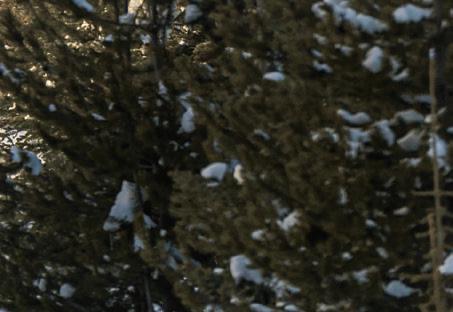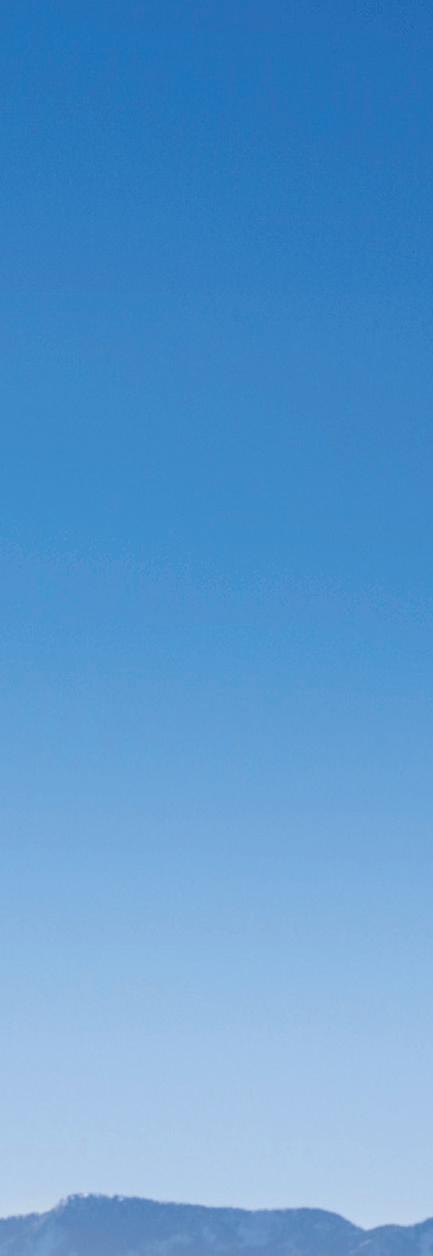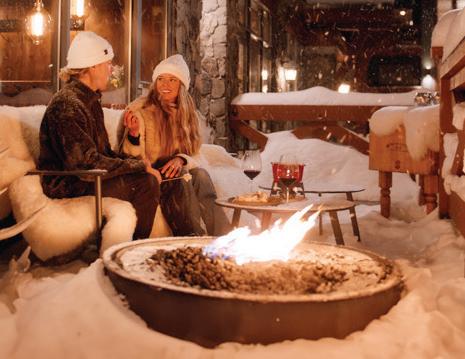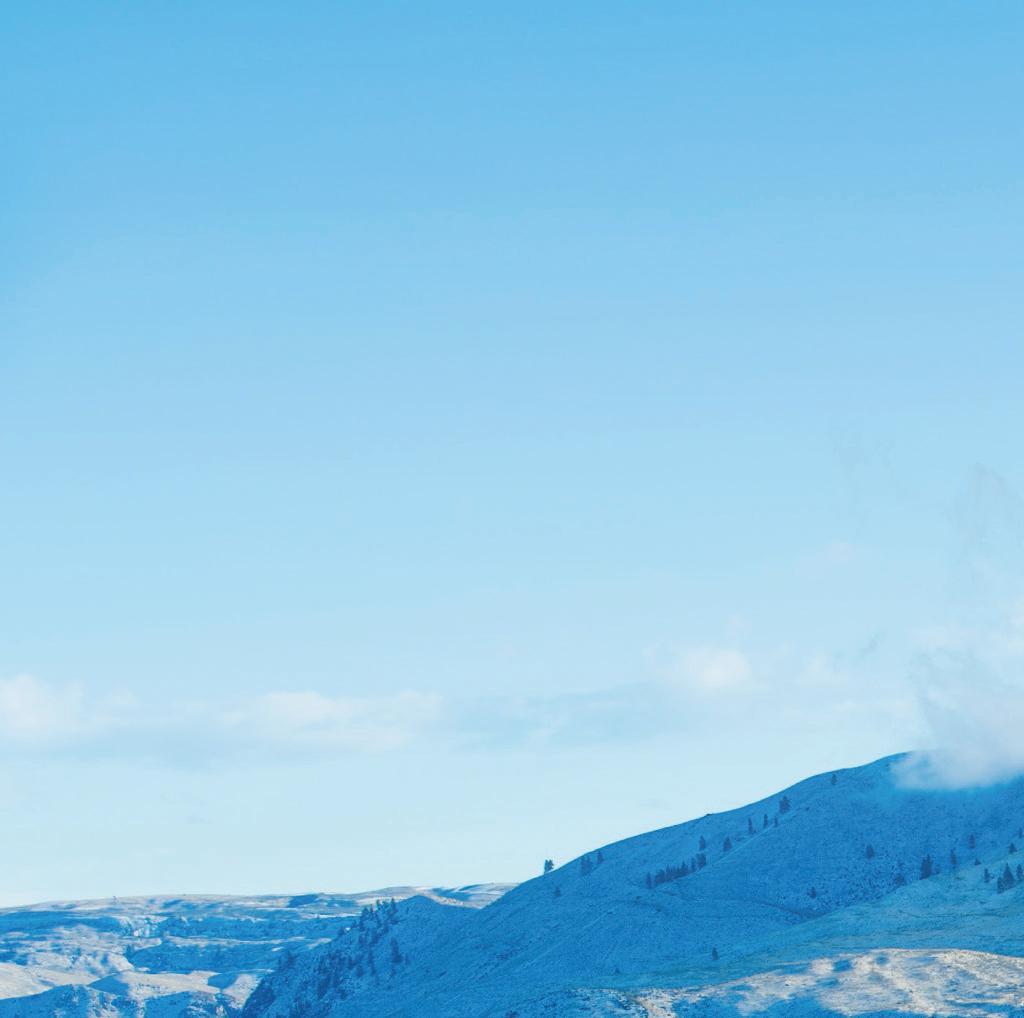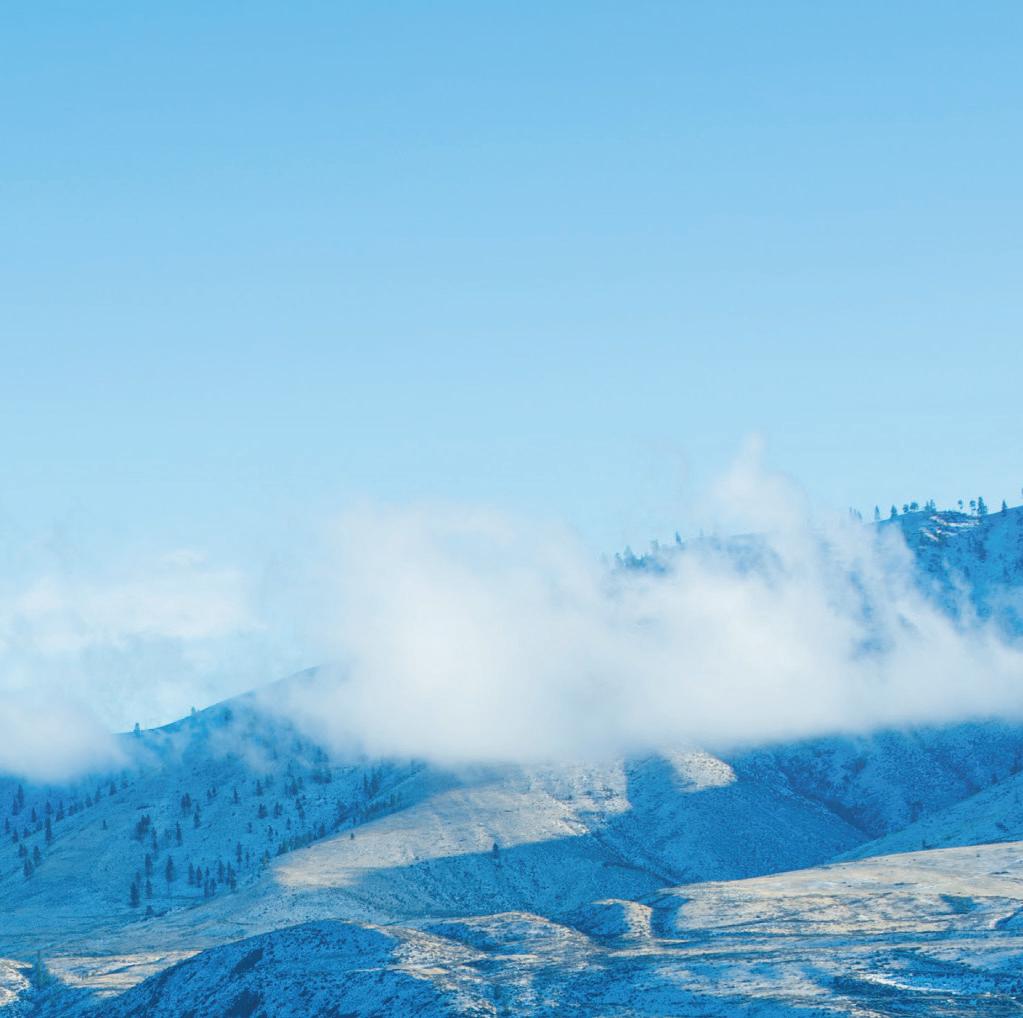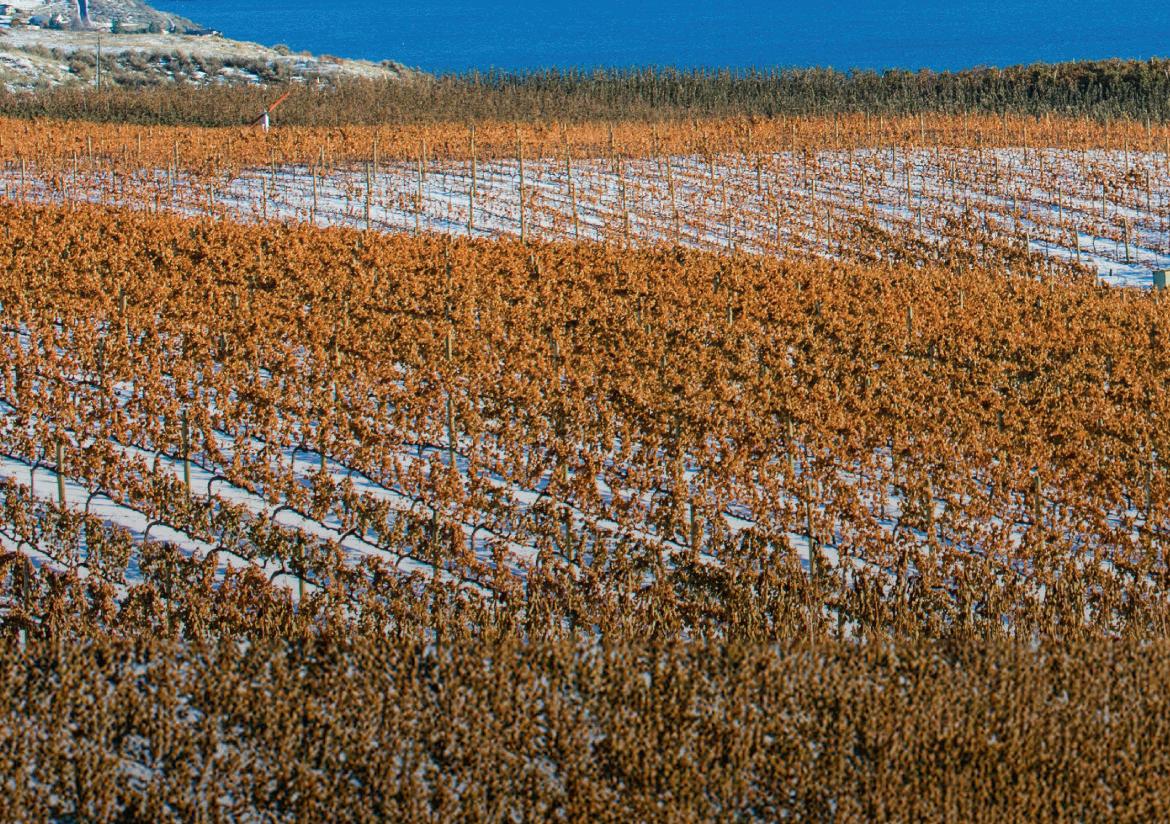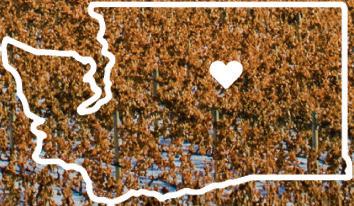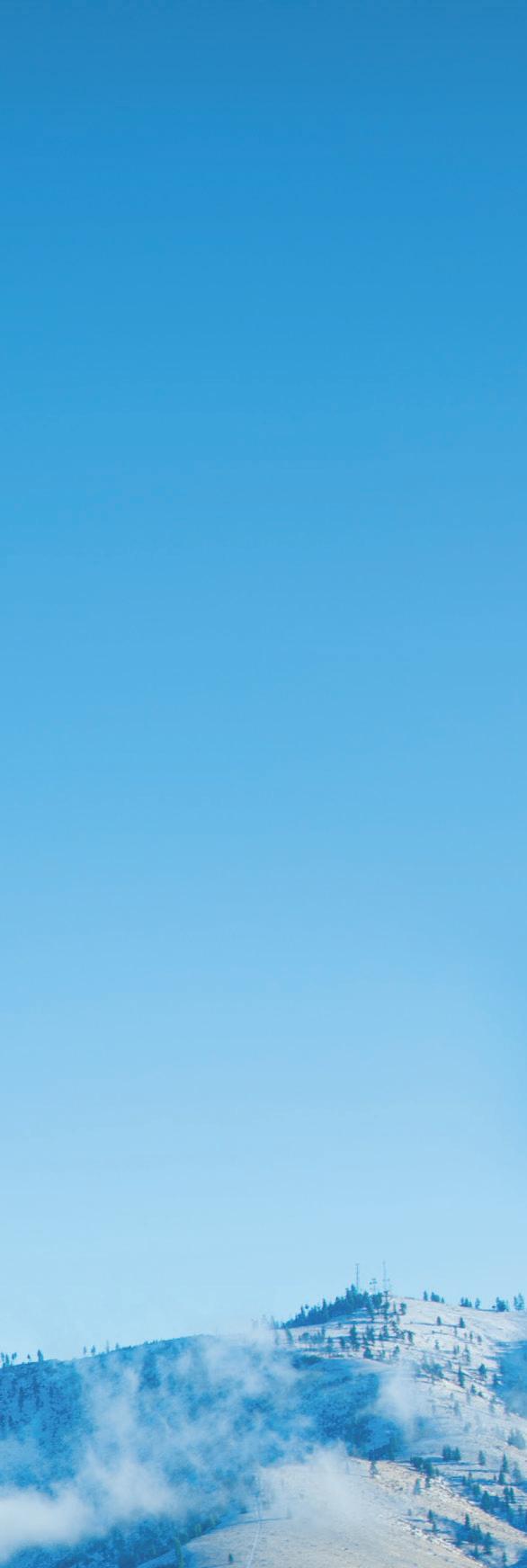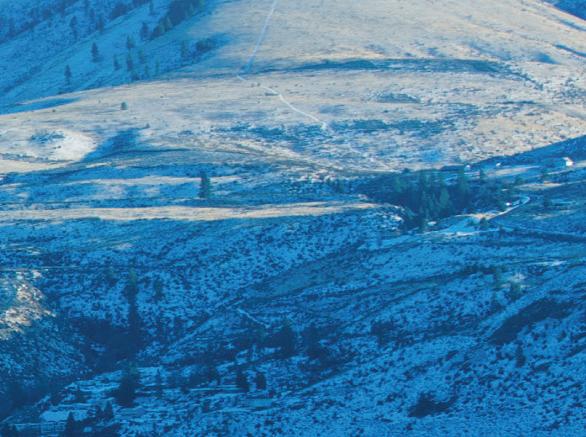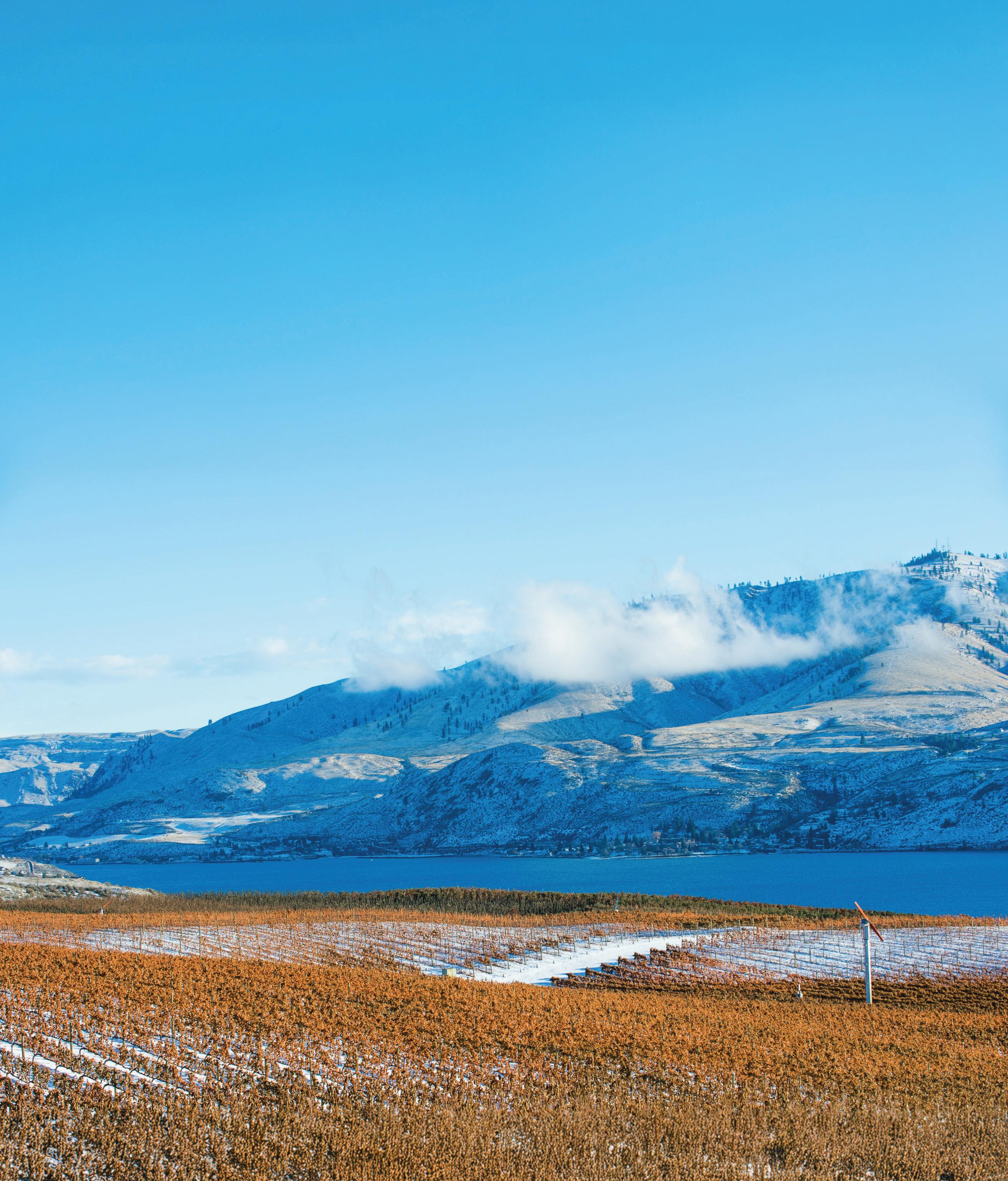

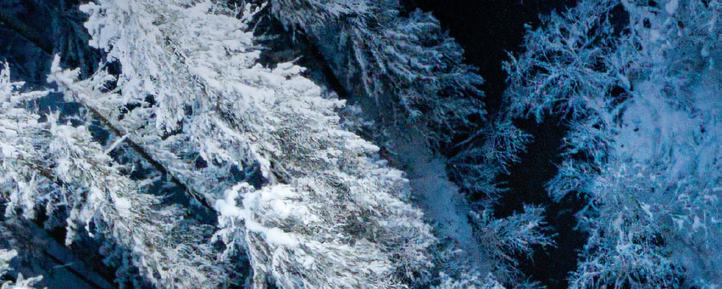





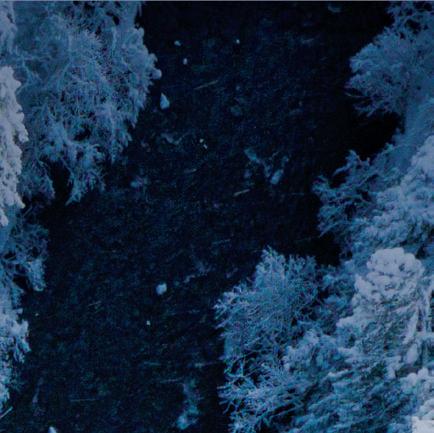

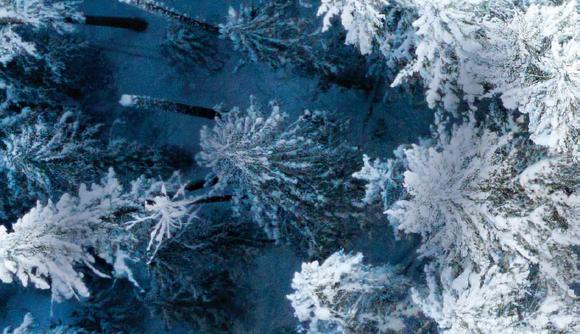
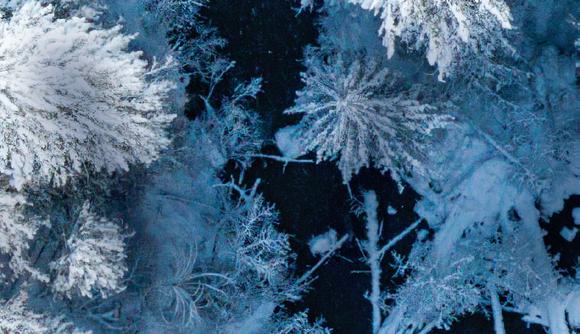
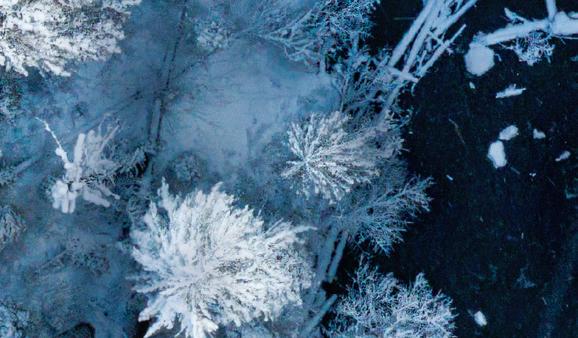

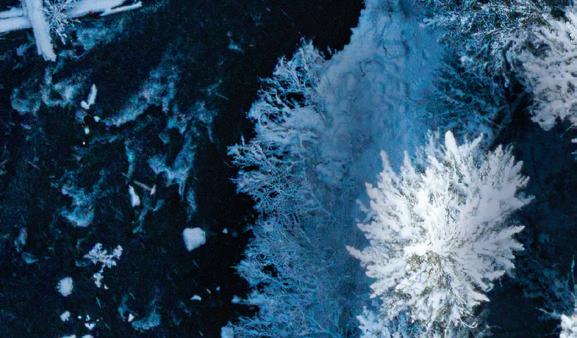
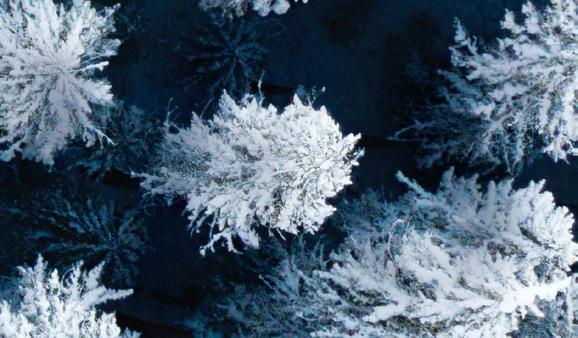


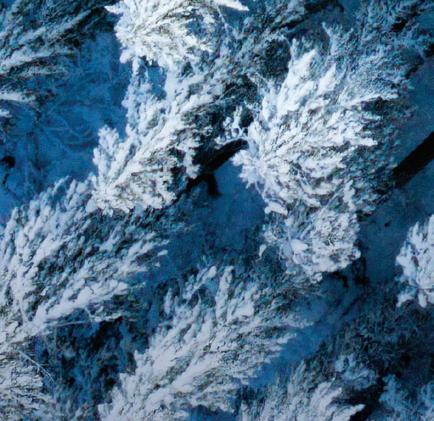

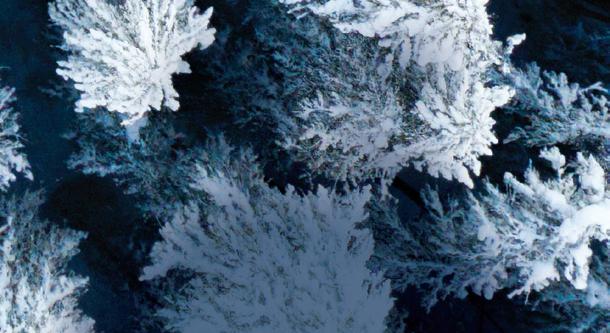


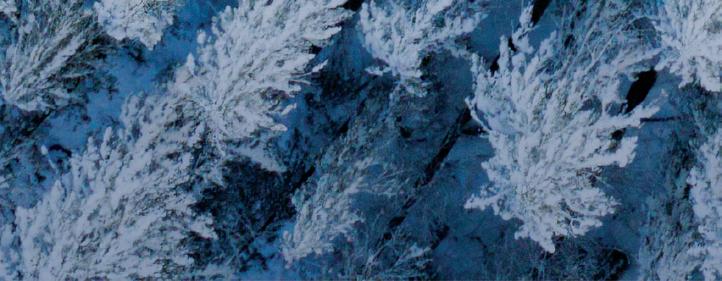
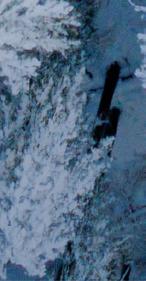

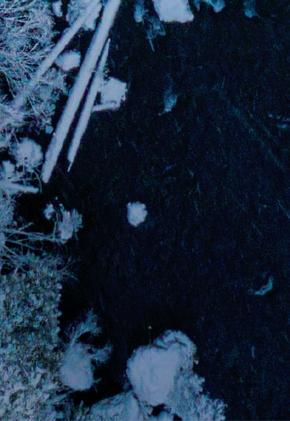
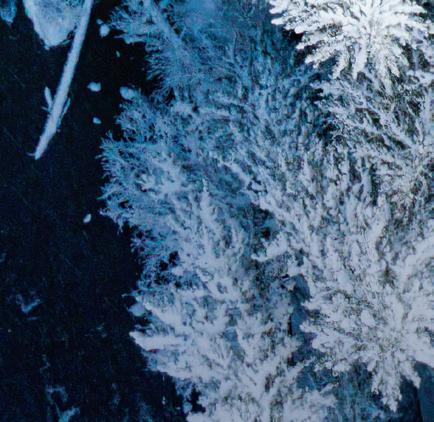
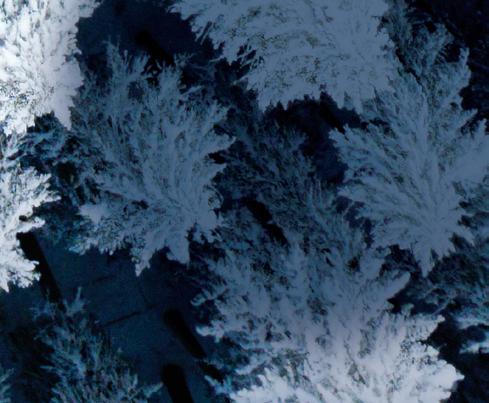




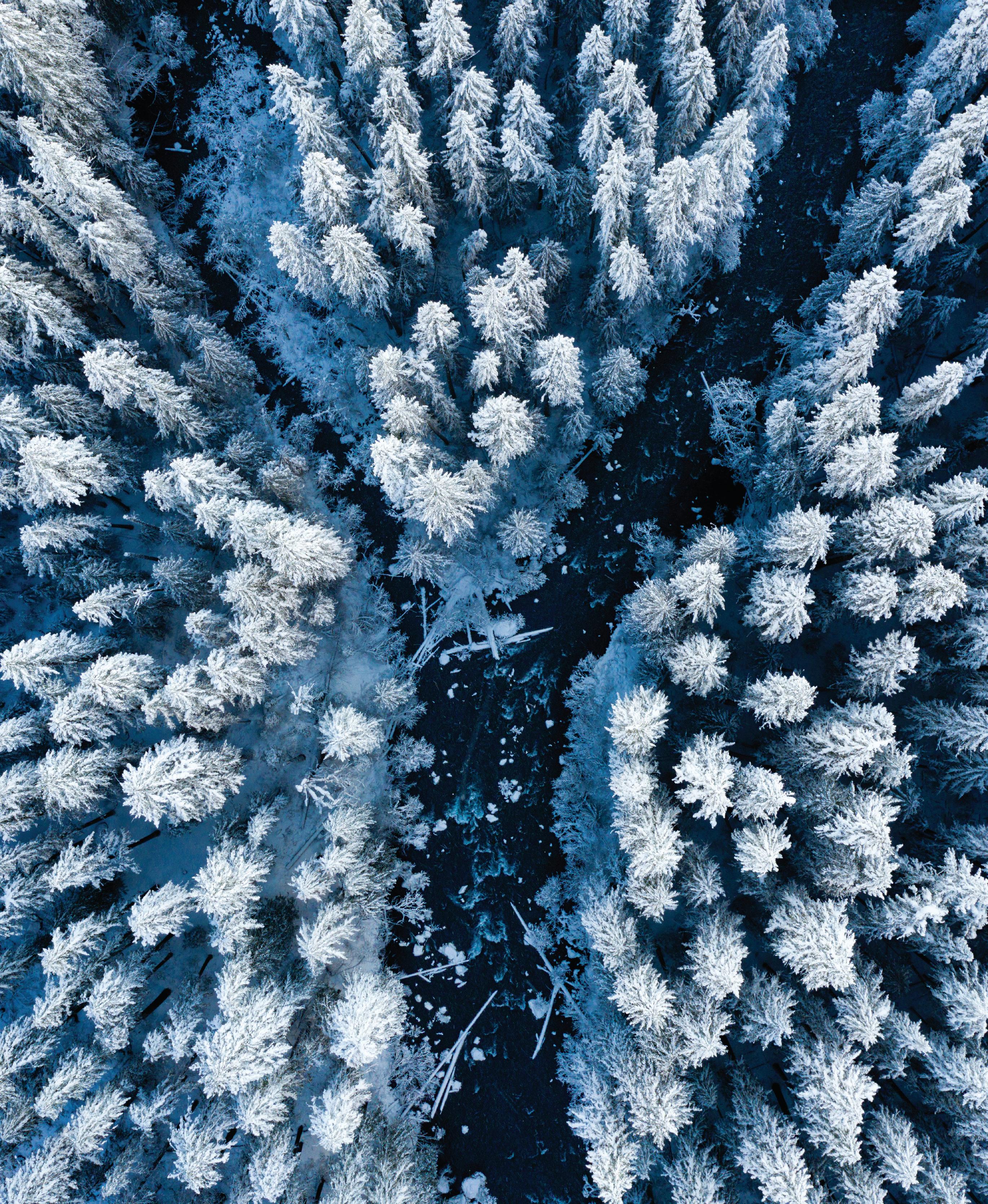







































What if your idea launched a program that saved thousands of acres from wildfire? What if you funded a school lunch program that fed the next generation of Oregonian ingenuity? What if you gave yourself the audacity to ponder how to make Oregon even better? Maybe you start a scholarship. Or launch a nonprofit — or become a volunteer. We’re your statewide community foundation, and together we turn your ‘What ifs’ into powerful ‘Why nots.’ What if you joined us?
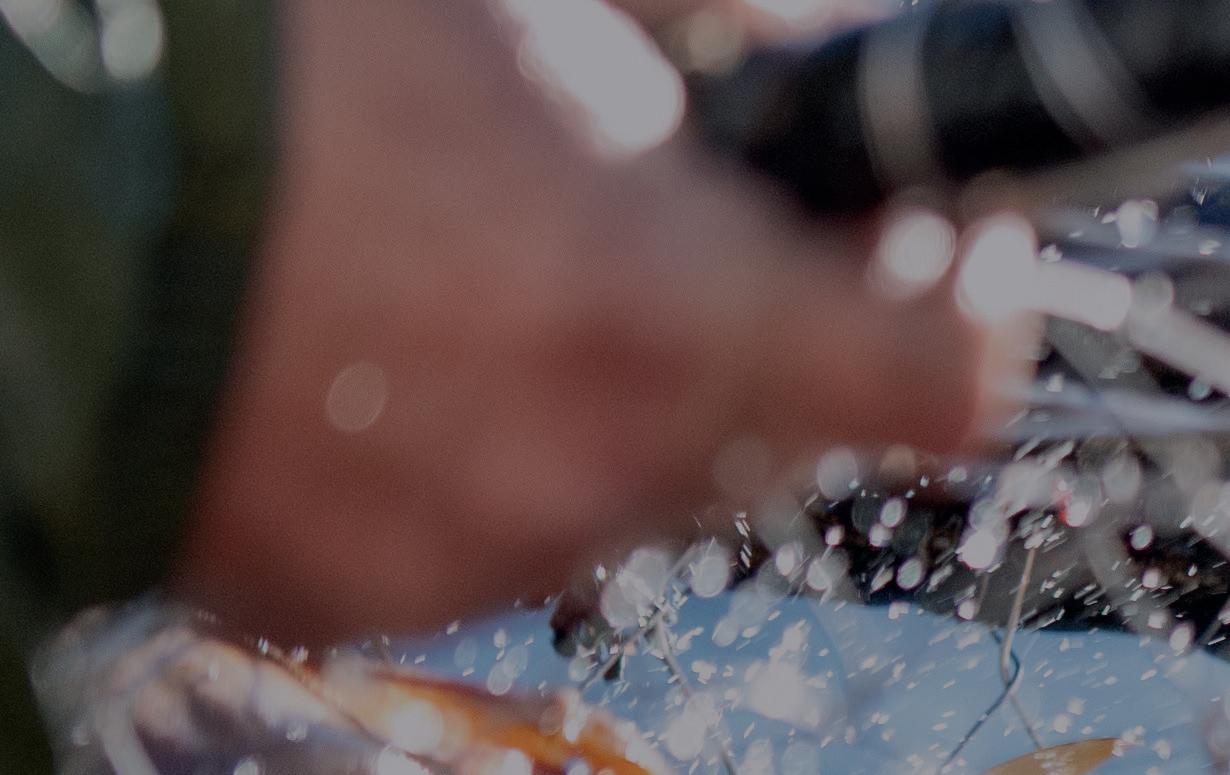

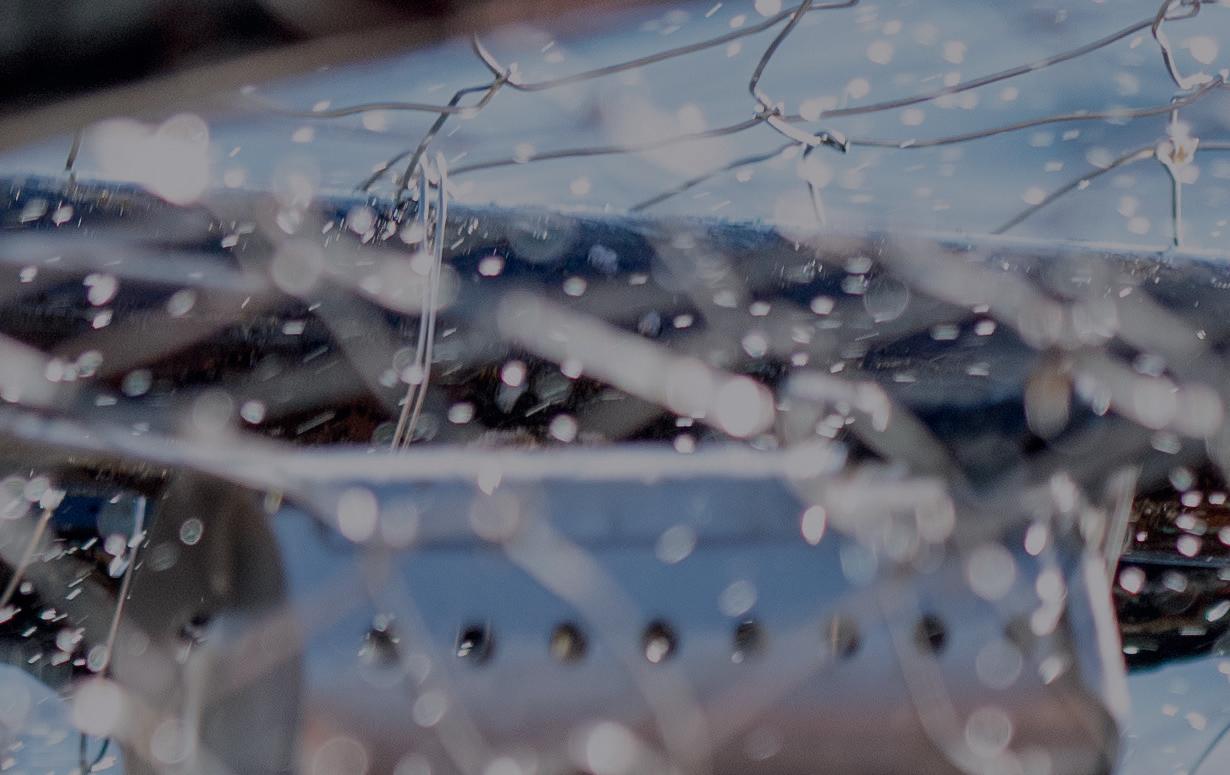
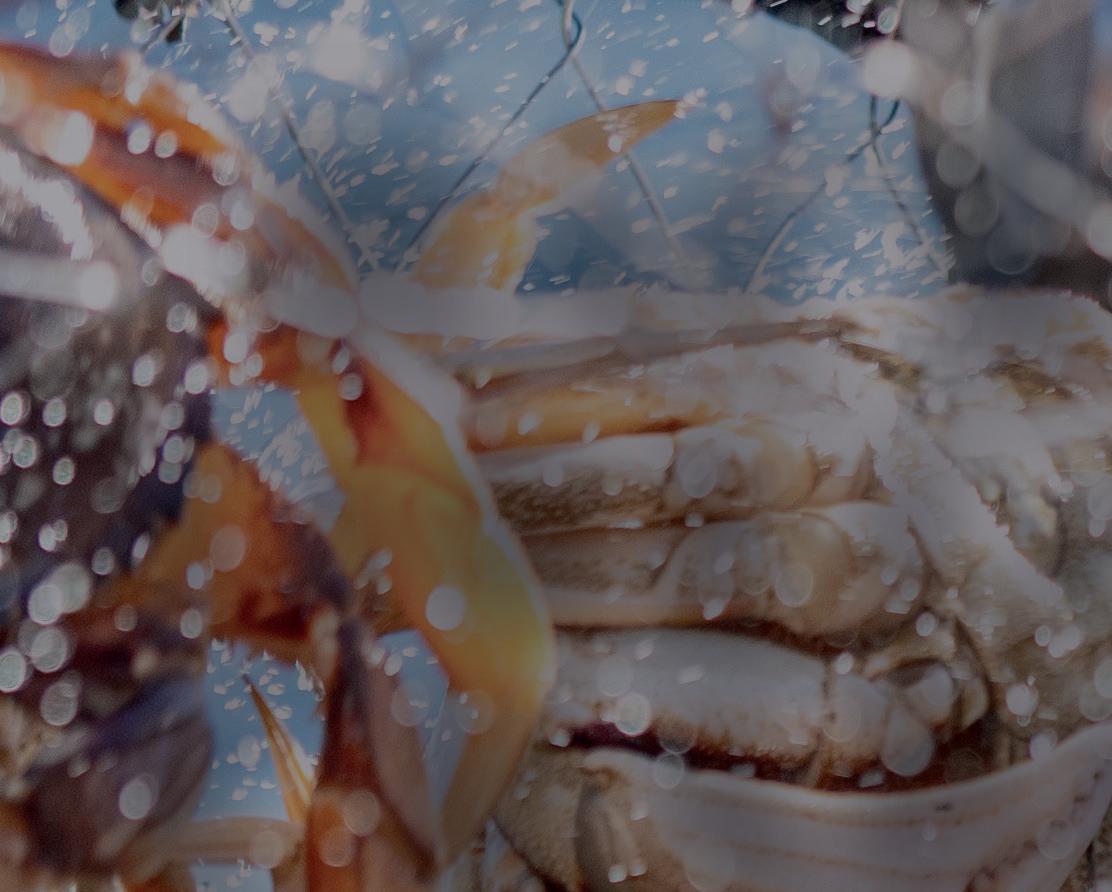





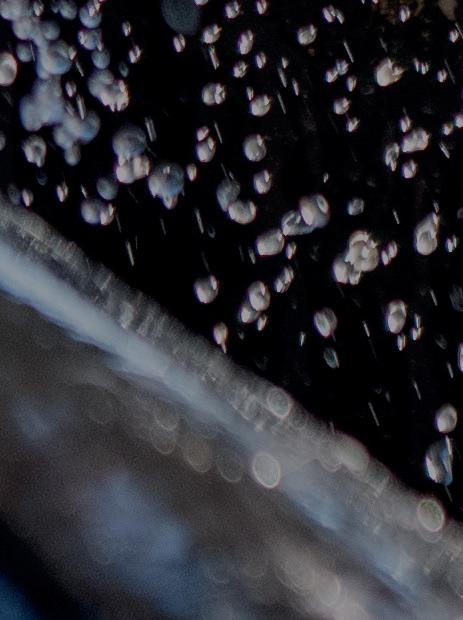

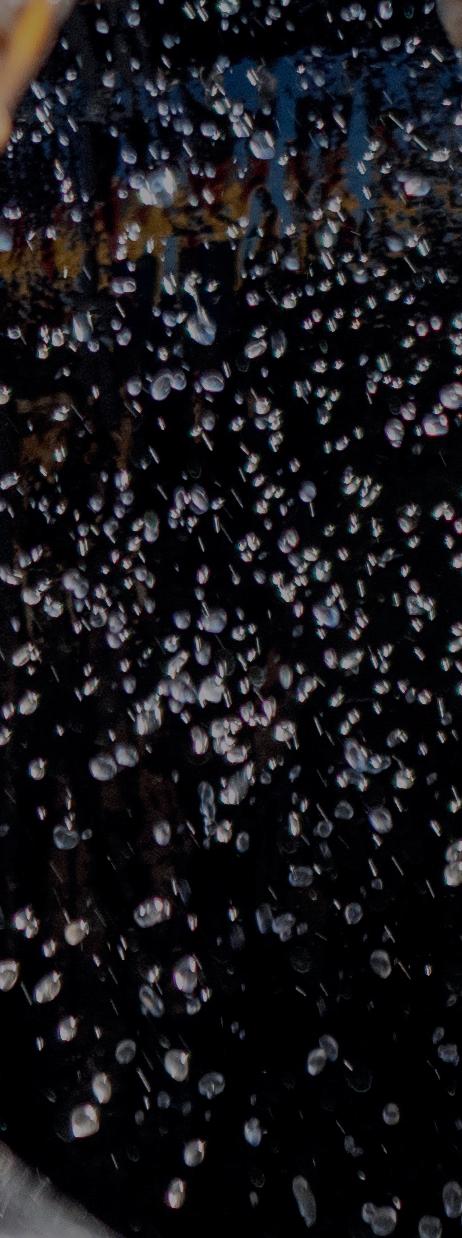

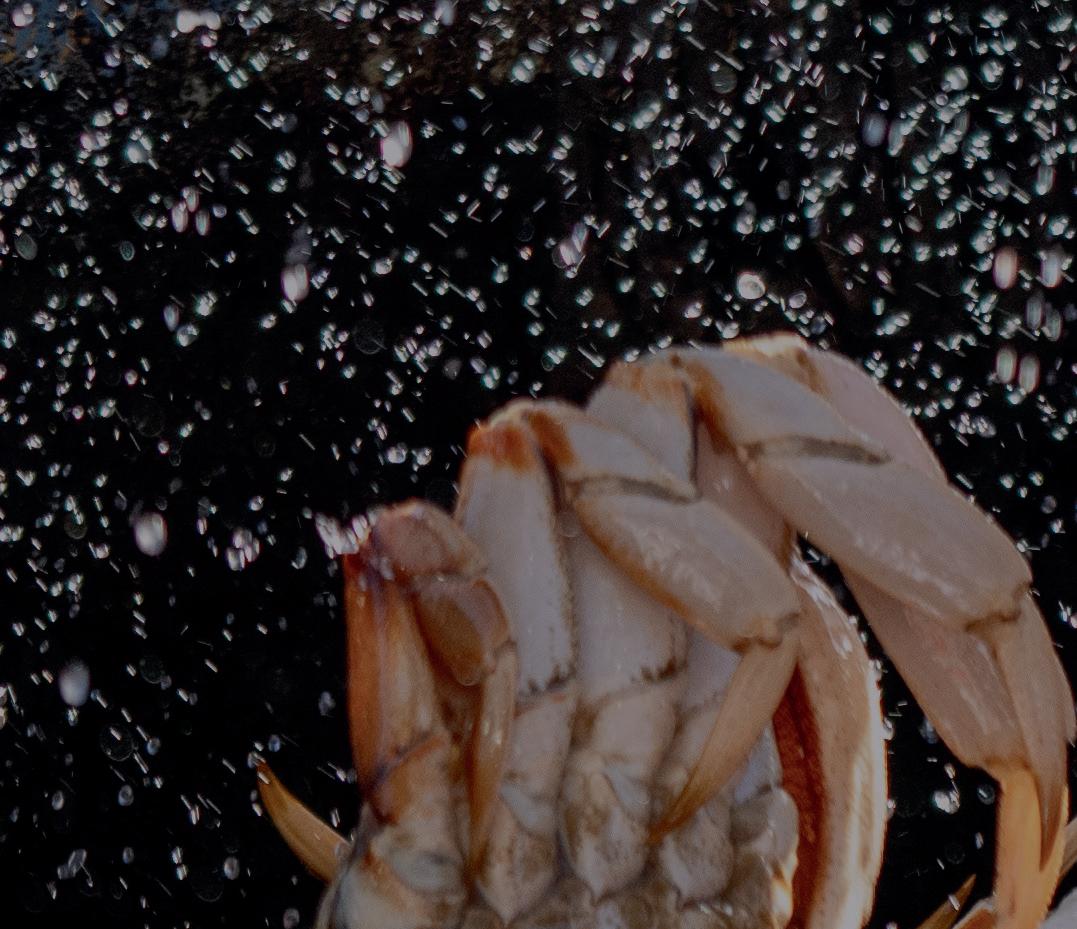


Help sustain Oregon’s crabbing legacy by pre-ordering your Oregon Dungeness Crab License Plate here!

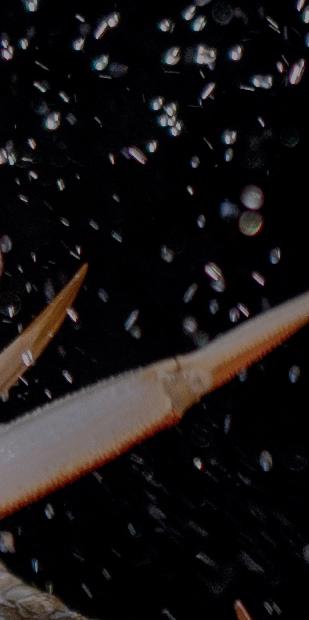


Planning the perfect vacation can feel as tricky as spotting Bigfoot. You research, scroll and stress. But what if this year you created something unforgettable? A seasonal experience. Oregon’s Mt. Hood Territory offers a year-round bucket list of adventures, making it the ideal getaway no matter the season. Here’s how to plan a memorable trip that your loved ones will never forget.
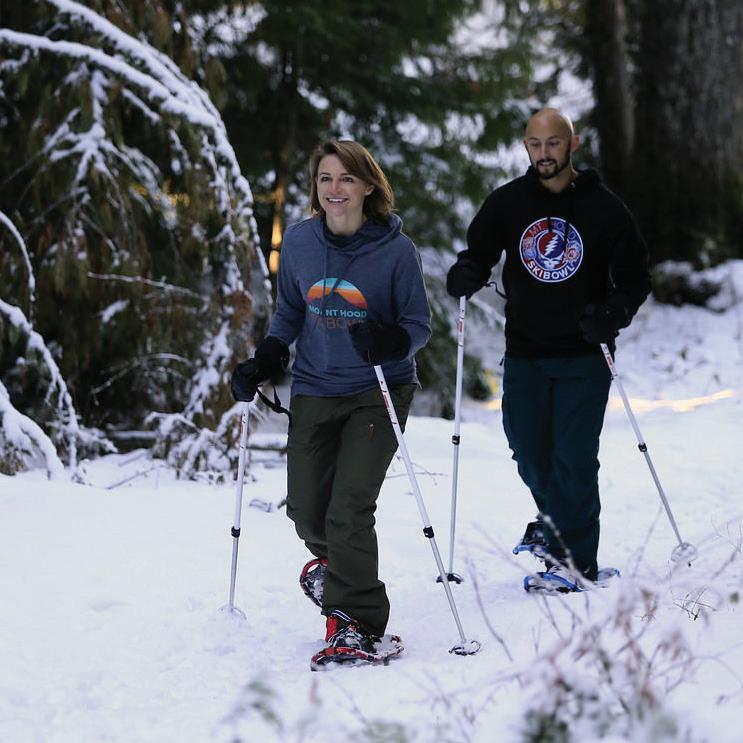
During winter Mt. Hood’s snow-covered slopes are a playground for snow enthusiasts of all ages. Timberline Lodge and Mt. Hood Skibowl offer a great midweek experience with everything from lessons to thrilling night skiing under the lights. For something more unique, book a guided snowshoe tour with Mt. Hood Outfitters through the forest or under the stars — complete with spectacular views of Mt. Hood. After a day of chilly fun, nothing beats a warm meal. The Ratskeller offers friendly dining in the heart of Government Camp, while Mt. Hood Brewing offers craft drinks perfect for a cozy toast. Stay the night at the Collins Lake Resort, where crackling fireplaces and alpine views make it feel like a true winter escape.
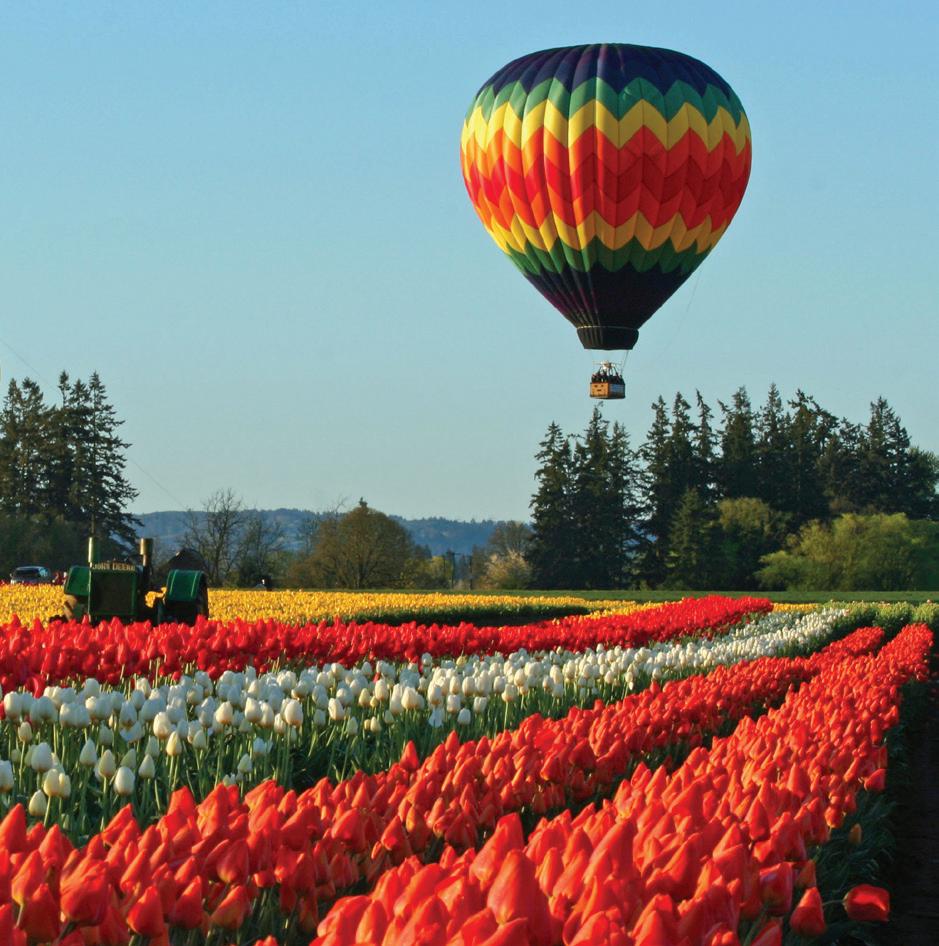
As the snow melts, Mt. Hood Territory bursts with color. A visit to the Wooden Shoe Tulip Farm in Woodburn is a springtime tradition, where endless rows of tulips create a rainbow across the fields. It’s a photographer’s dream and an experience your loved ones will never forget. Pair the vibrant blooms with a playful detour: the North American Bigfoot Center in Boring. This museum delves deep into the mystery of Sasquatch, with exhibits that strike a balance between folklore and science. Whether your gift recipient leaves a believer or not, they’ll certainly leave with stories to tell. Add in a stop at a local farm stand or bakery along the way for a true taste of spring. For lodging, book a night at the Whiskey Hill Store, where the Mountainview Suite welcomes visitors with country-inspired charm and is the closest lodging to the tulips.

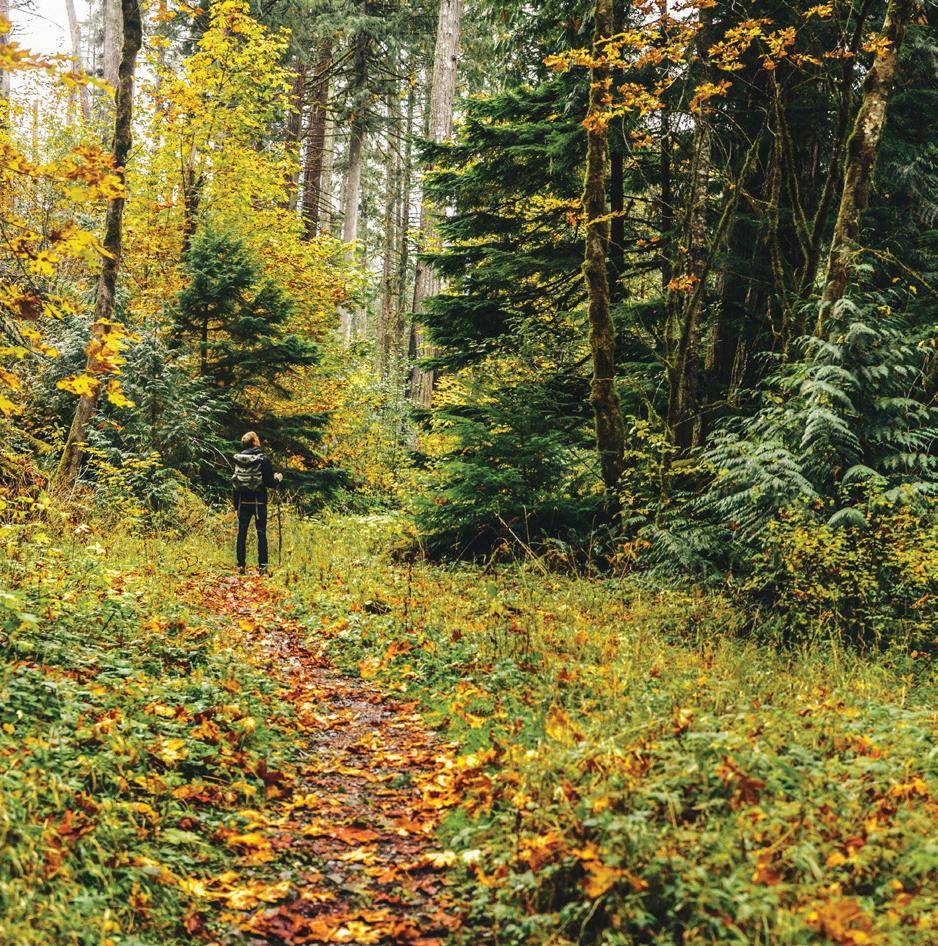

Long, sunny days make summer in Mt. Hood Territory the perfect time for outdoor adventures. A guided rafting trip down the Upper Clackamas River with Blue Sky Rafting is an adrenaline-packed gift that combines rushing rapids with gorgeous scenery. If your giftee prefers something calmer, the Molalla River Recreation Corridor offers serene hiking trails and picnicking spots. After the adventure, celebrate with a local flavor experience. Oregon City is home to a thriving food scene, featuring spots like Oregon City Brewing, which offers refreshing pints and food cart pods. And Highland Stillhouse serves riverside meals with one of the most impressive whiskey lists in the region. Make it a full getaway with a stay at the newly remodeled AC Hotel Portland in Lake Oswego.
When the leaves start to turn, Mt. Hood Territory transforms into a harvest paradise. Farms open their gates for animal meet-andgreets, pumpkin patches and corn mazes — perfect for families or anyone young at heart. Wine lovers will savor tastings at local vineyards, where fall flavors pair beautifully with crisp evenings. Scenic drives through the countryside showcase brilliant fall foliage, making the journey as memorable as the destination. End the day with a farmto-table dinner at a local restaurant, where the season’s bounty shines in every bite. For lodging, book a stay at the Mt. Hood Oregon Resort, where forest-facing rooms, cozy restaurants and a heated outdoor pool make fall evenings extra special.



photography by Karl Maasdam
Did you know Oregon is the top producer of hazelnuts in the United States? Farmacopia Farms’ Shonda Warner is one such local grower. Learn more, and find a few of Warner’s recipes, in Farm to Table. (pg. 32)

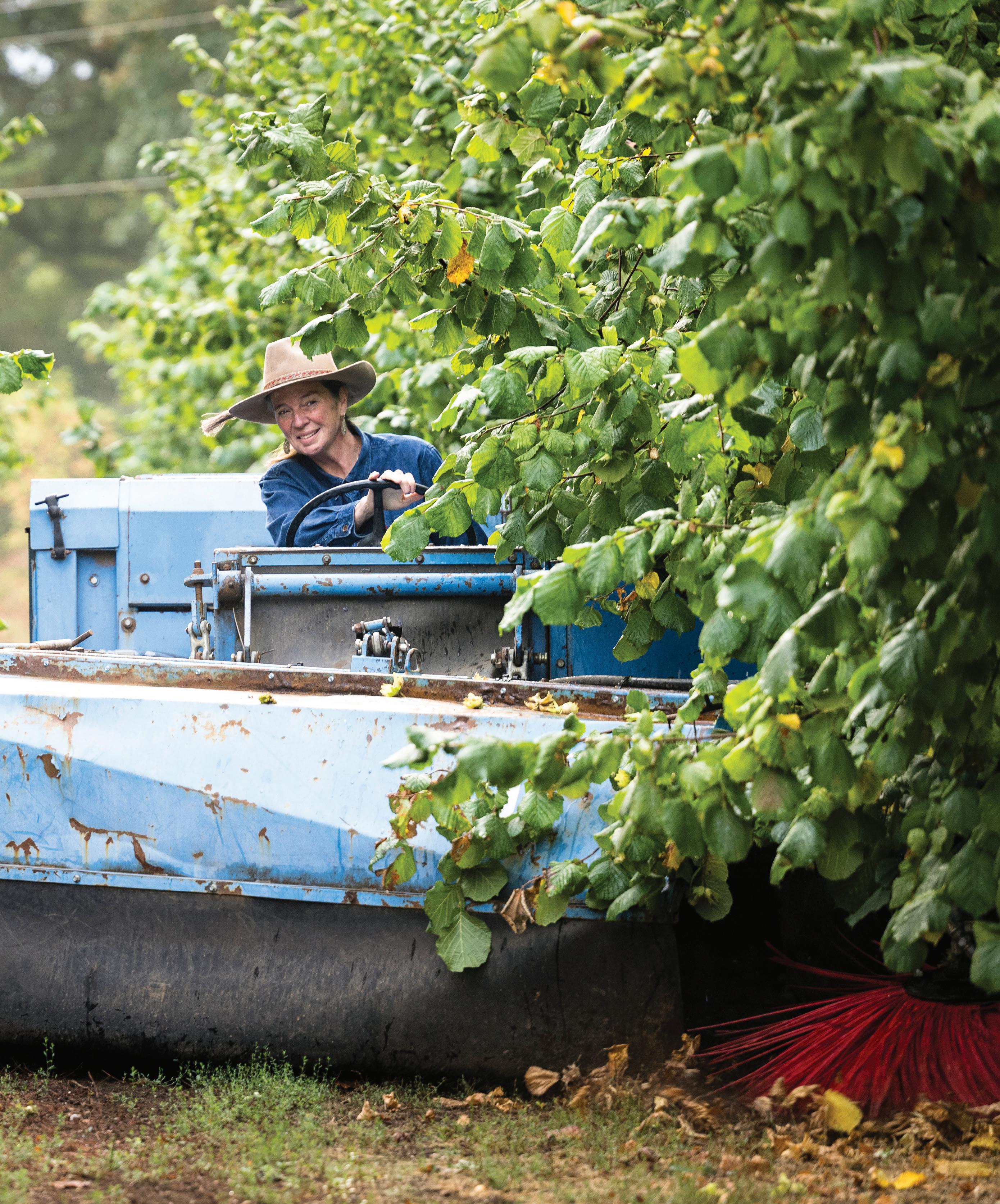
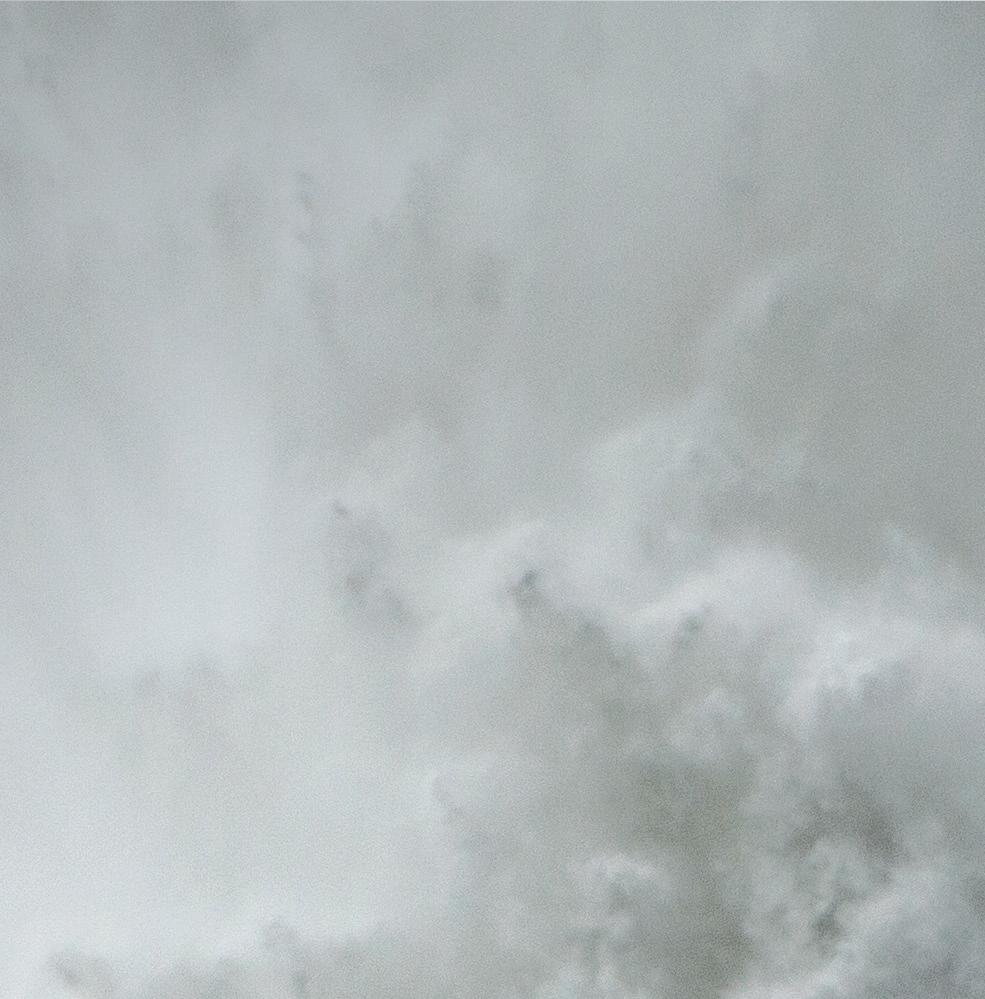

62
Six family-friendly Oregon holiday destinations—from Powell Bu e to Portland.







wri en by Jean Chen Smith

78 Maritime Art Marine artists descend on Astoria’s maritime museum for a visual and cultural display. wri en by Kerry Newberry

70
How and where to catch spectacular winter storm shows along the Oregon Coast. wri en by Daniel O’Neil










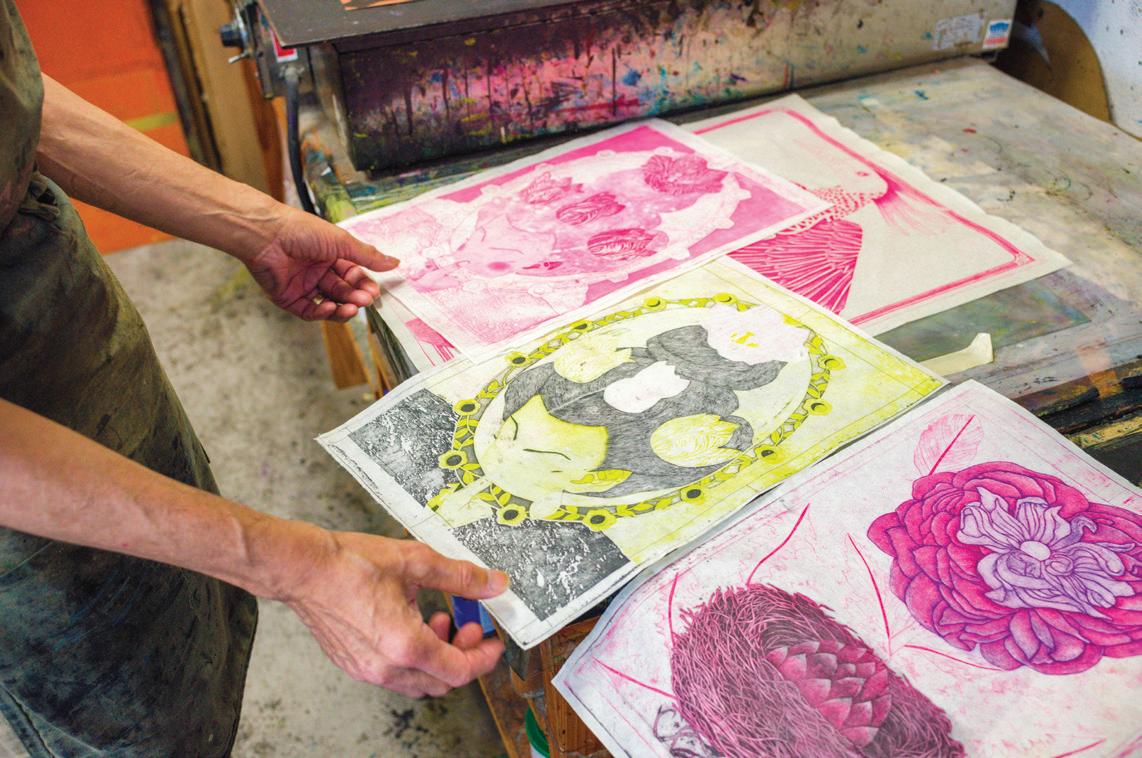
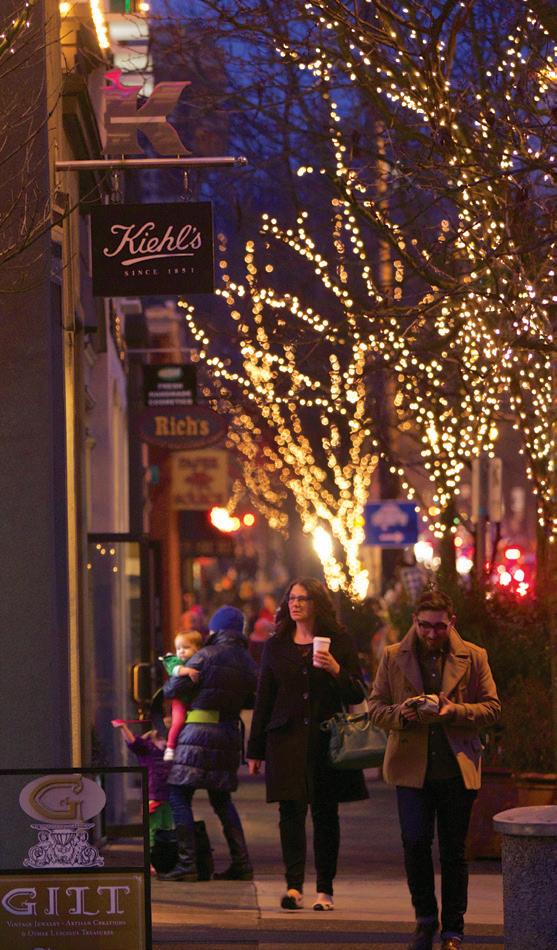
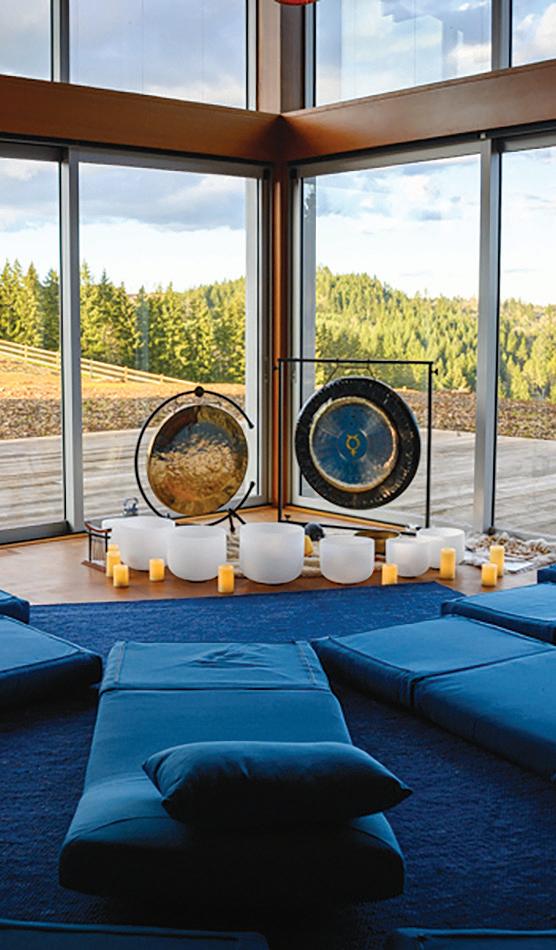
18 NOTEBOOK
Fireside slippers, Native American heritage dinners, chocolate from Wildwood and the best Oregon albums of the year.
26 FOOD + DRINK
Fraga Farmstead Creamery; Carlton’s Hayward.
32 FARM TO TABLE Filberts at Farmacopia Farms.
40 HOME + DESIGN
Three bathrooms, one designer.
50 ARTIST IN RESIDENCE
Yuji Hiratsuka, Japanese-American printmaker.
56 MY WORKSPACE
Bailey Lefever’s rockhounded jewelry.
58 GAME CHANGER Salem for Refugees.
86 TRAVEL SPOTLIGHT Clyde’s, a Portland classic.
88 ADVENTURE
Oregon’s most serene meditation escapes.
90 LODGING
The Compass McMinnville.
92 TRIP PLANNER Portland, for solidarity and the holidays.
98 NW DESTINATION Borrego Springs and Bombay Beach.







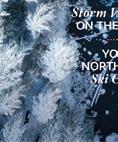

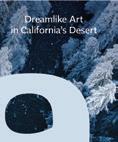


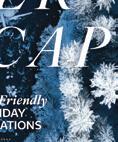



(see
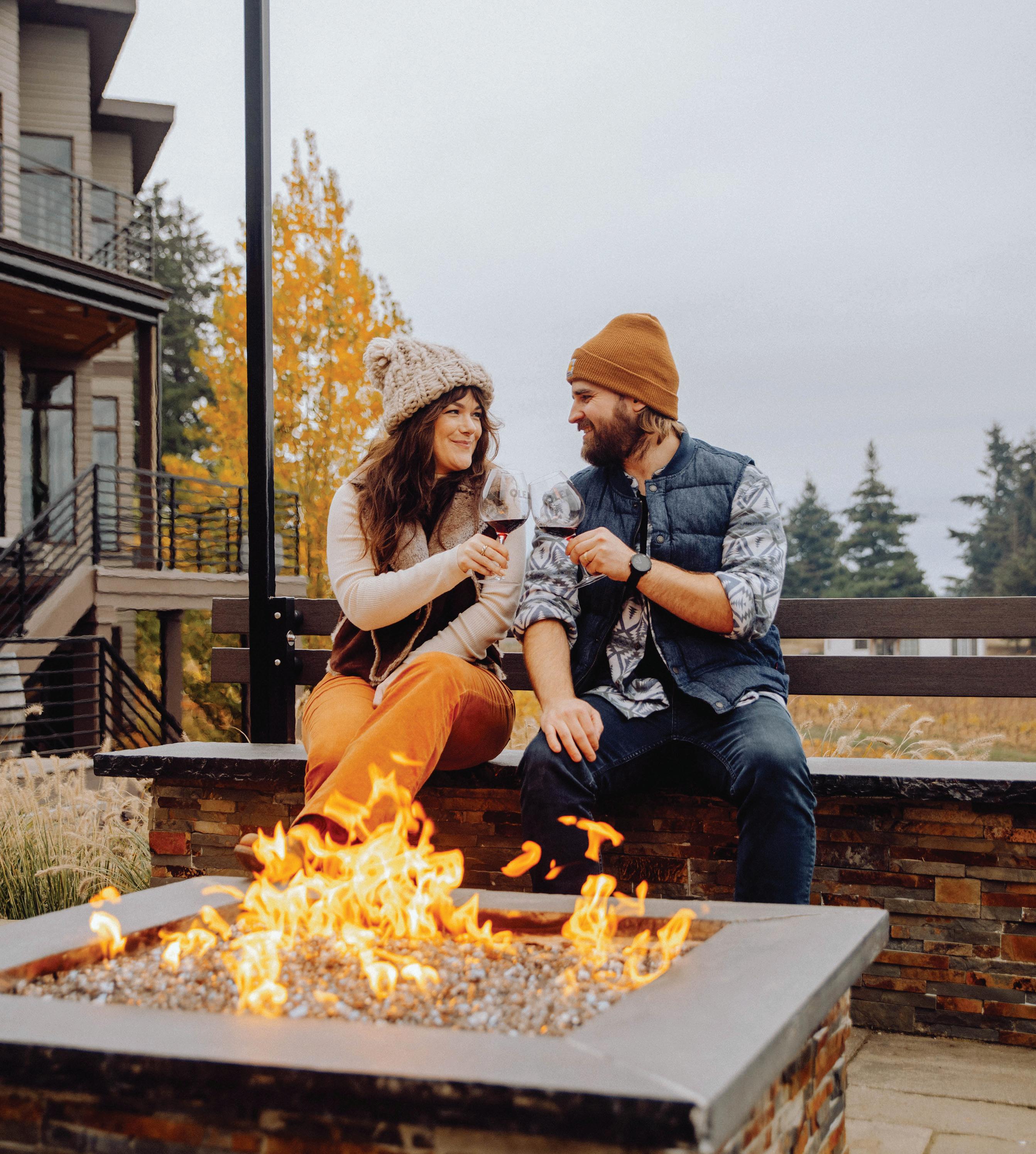

JAMES SINKS
Writer
Northwest Destination
“Mom and I were on a hunt for mystical creatures, memories and maybe a story. I’d heard of welded metal animals in the Southern California desert hamlet of Borrego Springs, and seen a few photos. Yet would they be impressive, in real life? (So much we see online nowadays is iffy.) Later, as we stood beneath a soaring, rusty sea serpent, with the dazzling sun overhead and ruffled by a sage-hinted breeze, Mom leaned on her cane and smiled. In all the ways, absolutely better in real life.” (pg. 98)
Award-winning journalist
James Sinks has been making editors wince since 2011 at 1859 Oregon’s Magazine. He lives in Salem, in real life.

MELISSA DALTON Writer
Home + Design
“There’s always something to learn when talking to a designer or architect about their projects, and that was no different in my conversation with Holly Freres from JHL Design for this month’s Home + Design feature on ‘Three Bathrooms, One Designer.’ From space-saving techniques to making a dark shower more luxe, Freres is a master at her craft!” (pg. 40)
Melissa Dalton is a freelance design and architecture writer who covers a wide range of stories, from A-frames to passive homes, historic restorations and DIY projects. She lets her curiosity guide her life and writing.

KARL MAASDAM Photographer Farm to Table
“Good light is what photographers love, and the morning fall light is gorgeous. So when you’re going out to a farm to shoot photos, you know it’s going to be great when the subject says, ‘Isn’t the light best at 6 or 7 a.m.?’ Yes—yes, it is best then. Because it’s Oregon, however, we had clouds and a chance of rain, but the light was still great—soft, moody and blue, very complementary to the rich green of the orchard. Shonda Warner and her four dogs were a pleasure to work with, and we captured some great images, just in different light.” (pg. 32)
After twelve years as a newspaper photographer in Astoria and Corvallis, Karl Maasdam, a native Oregonian, has been a freelance editorial and commercial photographer based out of Corvallis for the last twenty-one years.
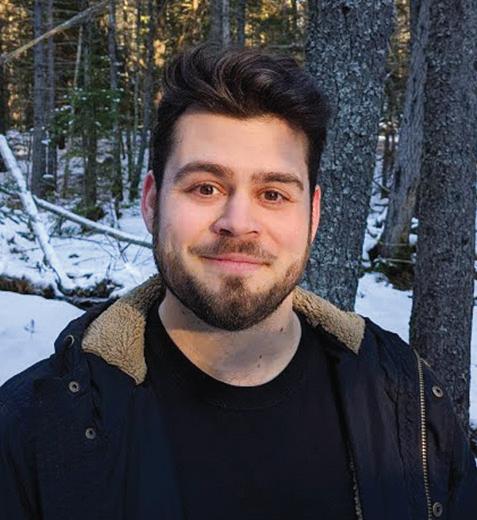
CODY MUIR
Illustrator
Musician
“Growing up in the PNW, nature has always played a major role in my life. I find that even now, as an illustrator living in New England, the natural beauty of Oregon, Idaho and Washington always manages to find its way into my work. I think I’ll be chasing that Pacific Northwest atmosphere in my art wherever I go.” (pg. 20)
Cody Muir is an illustrator and motion designer currently living in coastal Maine with his wife, Taylor. His work often explores mood and setting as storytelling avenues with an emphasis on capturing atmospheric scenes.

EDITOR Kevin Max
CREATIVE DIRECTOR Allison Bye
WEB MANAGER Aaron Opsahl
SOCIAL MEDIA MANAGER Joni Kabana
OFFICE MANAGER Cindy Miskowiec
DIRECTOR OF SALES Jenny Kamprath
HOMEGROWN C HEF Thor Erickson
BEERLANDIA COLUMNIST Jeremy Storton
C ONTRIBUTING WRITERS Cathy Carroll, Jean Chen Smith, Melissa Dalton, Joni Kabana, Julie Lee, Kerry Newberry, Daniel O’Neil, Ben Salmon, James Sinks
C ONTRIBUTING PHOTOGRAPHERS Mel Barbour, Joseph Eastburn, Joni Kabana, Tambi Lane, Karl Maasdam, Daniel O’Neil, Tyler Roemer, Zak Stone
CONTRIBUTING ARTISTS Cate Andrews, Cody Muir, Edwin Ouellette
70 SW Century Dr. Suite 100-218 Bend, Oregon 97702
Headquarters
592 N. Sisters Park Ct. Suite B Sisters, OR 97759
www.1859magazine.com /subscribe @1859oregon
All rights reserved. No part of this publiCation may be reproduCed or transmitted in any form or by any means, eleCtroniCally or meChaniCally, inCluding photoCopy, reCording or any information storage and retrieval system, without the express written permission of Statehood Media. ArtiCles and photographs appearing in 1859 Oregon’s Magazine may not be reproduCed in whole or in part without the express written Consent of the publisher. 1859 Oregon’s Magazine and Statehood Media are not responsible for the return of unsoliCited materials. The views and opinions expressed in these artiCles are not neCessarily those of 1859 Oregon’s Magazine, Statehood Media or its employees, staff or management.





Sunriver Resort makes every ski day seamless. As Mt. Bachelor’s preferred lodging partner, we’re just 20 minutes from the slopes, with complimentary shuttles and Ski Valet service. Book our seasonal One, Two, Ski offer and enjoy cozy accommodations, breakfast each morning at Lodge Kitchen and up to 40% off Mt. Bachelor lift tickets.
From first chair to aprés-ski, everything is taken care of—so you can focus on fresh powder, good company, and the magic of winter in Central Oregon.




It’s as easy as one, two, ski. Book your getaway today at SunriverResort.com/Offers
IF THERE is a war being waged in Portland, we want in. I stand firmly with those who know that bicycles were meant to have more than one gear, that they should be ridden and not walked as a pretty companion. For those with a one-gear mind, I say, travel a little, and you’ll see that the Earth isn’t flat. Open your fixie minds and broaden your gear rings!
Portland is the focus of many stories in this issue, as it is in countless others. Portland is a place for diverse ideas, an incubator for culture and counterculture, a Pacific Northwest hub of innovation and a fantastic destination for the holidays.
I was reminded of just how many ways there are to celebrate the holiday season in Portland as I read through our feature on family-friendly holiday destinations on page 62. I have to say, never on my radar was ice skating at the Lloyd Center, but now it is. Portland comes into tighter focus as the subject of this issue’s Trip Planner on page 92. We also slide into a booth for prime rib and primo music at a longtime Portland classic, Clyde’s (pg. 86).
The Oregon Coast makes a couple of tempestuous cameos as the popularity of storm watching continues to fuel the imaginations of our readers.
One of the best aspects of the Oregon Coast is the unchecked power of the Pacific Ocean in winter and its ability to create stunning vertical eruptions that make your heart leap. Turn to page 70 to read more about how and where to catch the perfect winter storm.
Oregon doesn’t have a lot in common with Turkey except when it comes to producing filberts, or hazelnuts. Oregon is the top producer in the United States; Turkey is the world’s largest producer. In this issue, we center on one grower just outside of Scio, Farmacopia Farms. If you’ve ever wondered how one nut fits into the larger Nutella, you’ll want to read this on page 32.
If the holidays represent more stress than joy for you, turn to page 88 and discover six quiet places of Oregon’s most serene meditation escapes. Whether in Portland with fixies raging outside your door or in the middle of tractors and wheat-growing Dufur, you can find your separate peace.
Let’s face it, we’ve all been through a lot this year. What better way to acknowledge that than with the cocktail Aperol We’ve Been Through from Day by Day Bar in McMinnville? See Cocktail Card on page 28. Happiest of holidays to all!
www.1859oregonmagazine.com
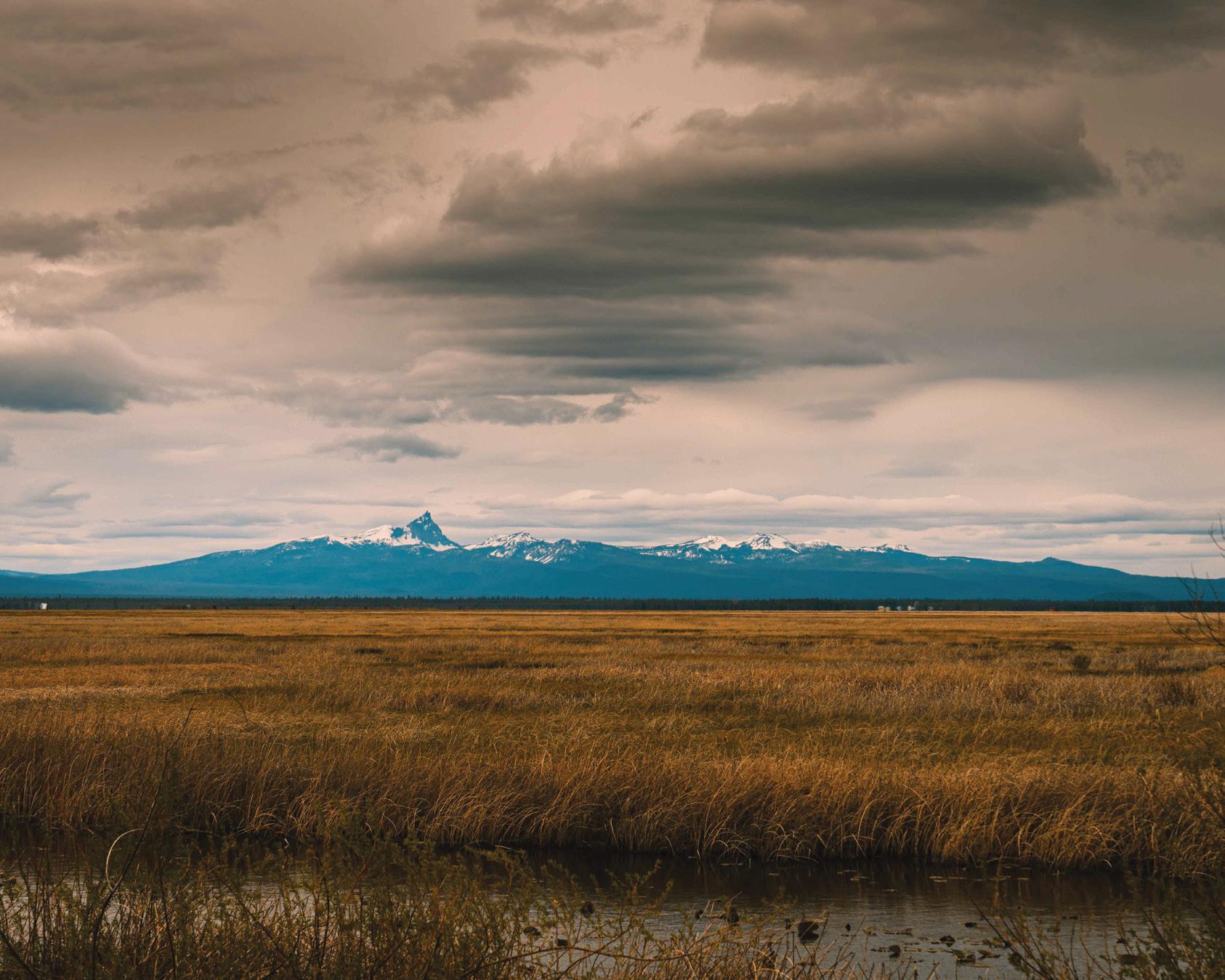



HAVE A PHOTO THAT SHOWS OFF YOUR OREGON EXPERIENCE?
Share it with us by filling out the Oregon Postcard form on our website. If chosen, you’ll be published here!
www.1859oregon magazine.com/postcard
photo by David
Beckwith Jr.
The Klamath Marsh Basin spreads out in every direction, a patchwork of golden grass and winding water channels. In the distance, Mount Thielsen’s sharp peak cuts into the sky, standing alone against the horizon. The stillness here feels unshakable, broken only by the slow movement of a heron li ing o from the marsh.


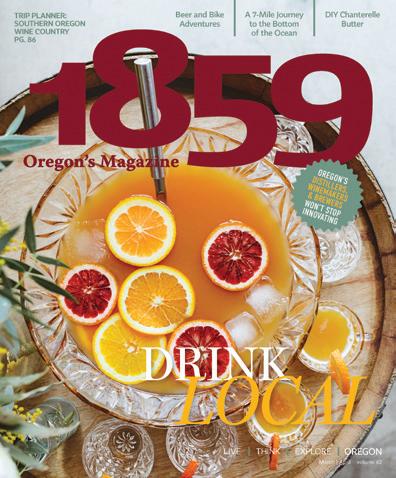












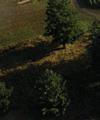
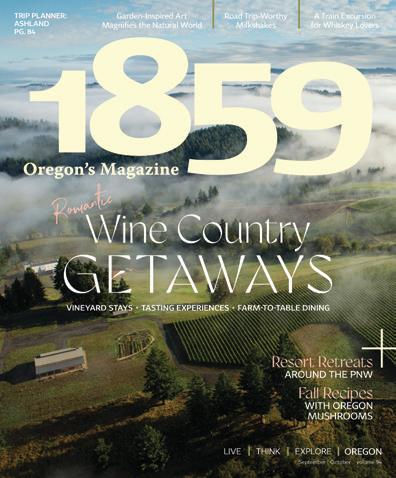

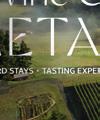


1859 Oregon’s Magazine celebrates all things Oregon, from its incredible destinations and colorful personalities to its rich history and local food and drink. Gift a subscription to family and friends this holiday season, and share the state you love!
www.1859oregon magazine.com/gi
Stop by Local, our curated online shop of goods made by businesses in the Pacific Northwest. Find jewelry, specialty foods and more. Or show your state pride with 1859 T-shirts, hats and other apparel. Buy local. Feel good.
www.1859oregon magazine.com/shop





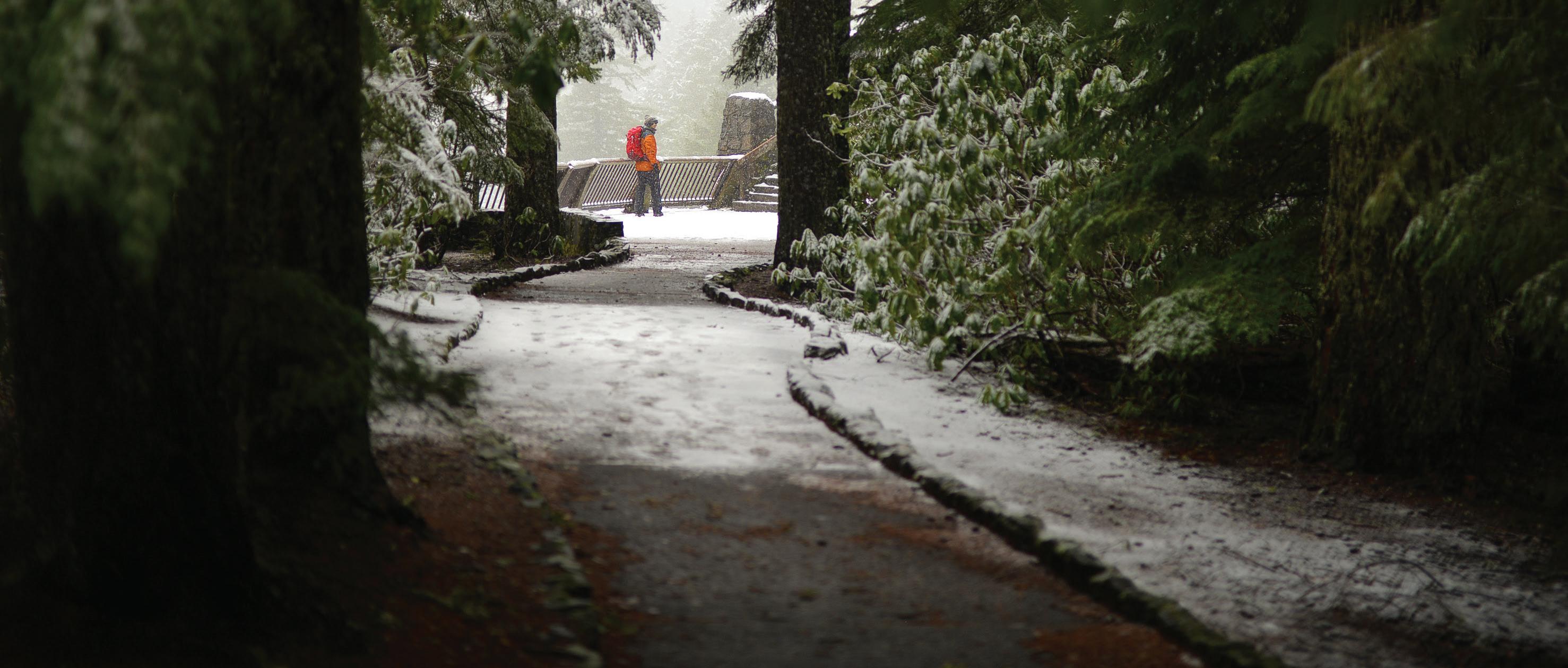
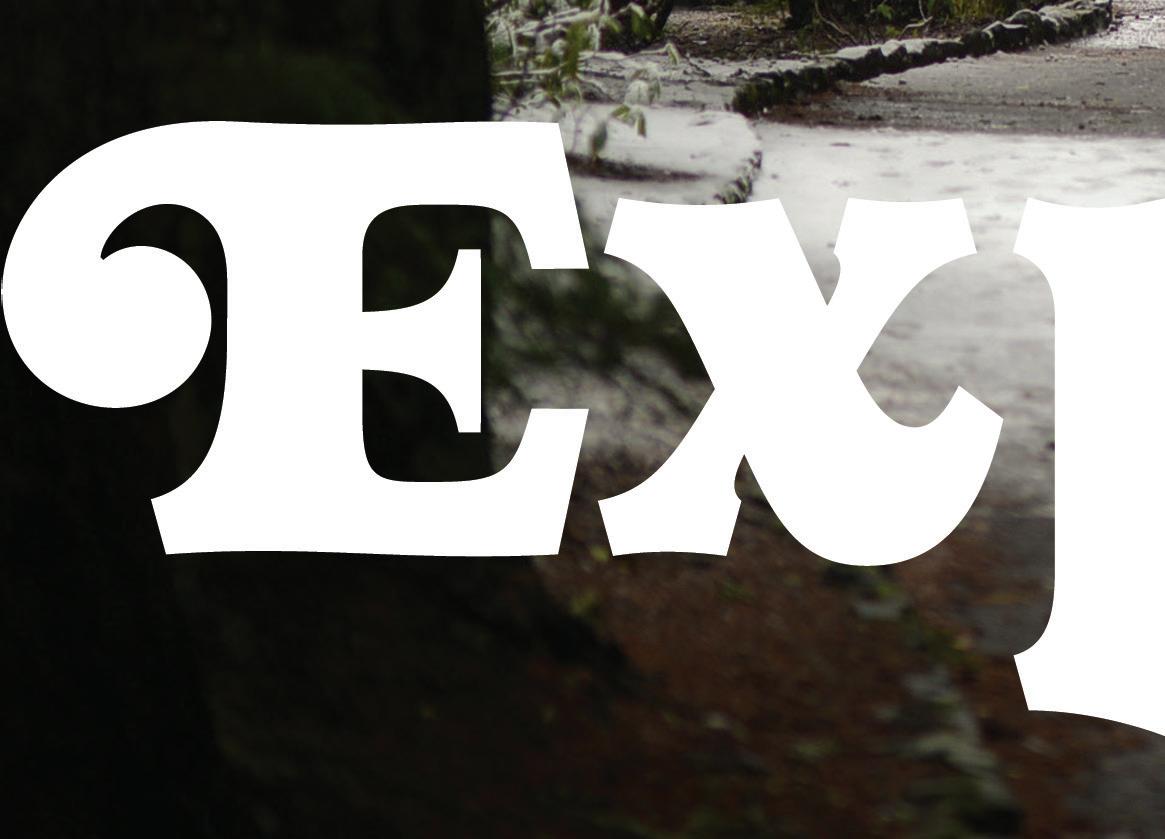
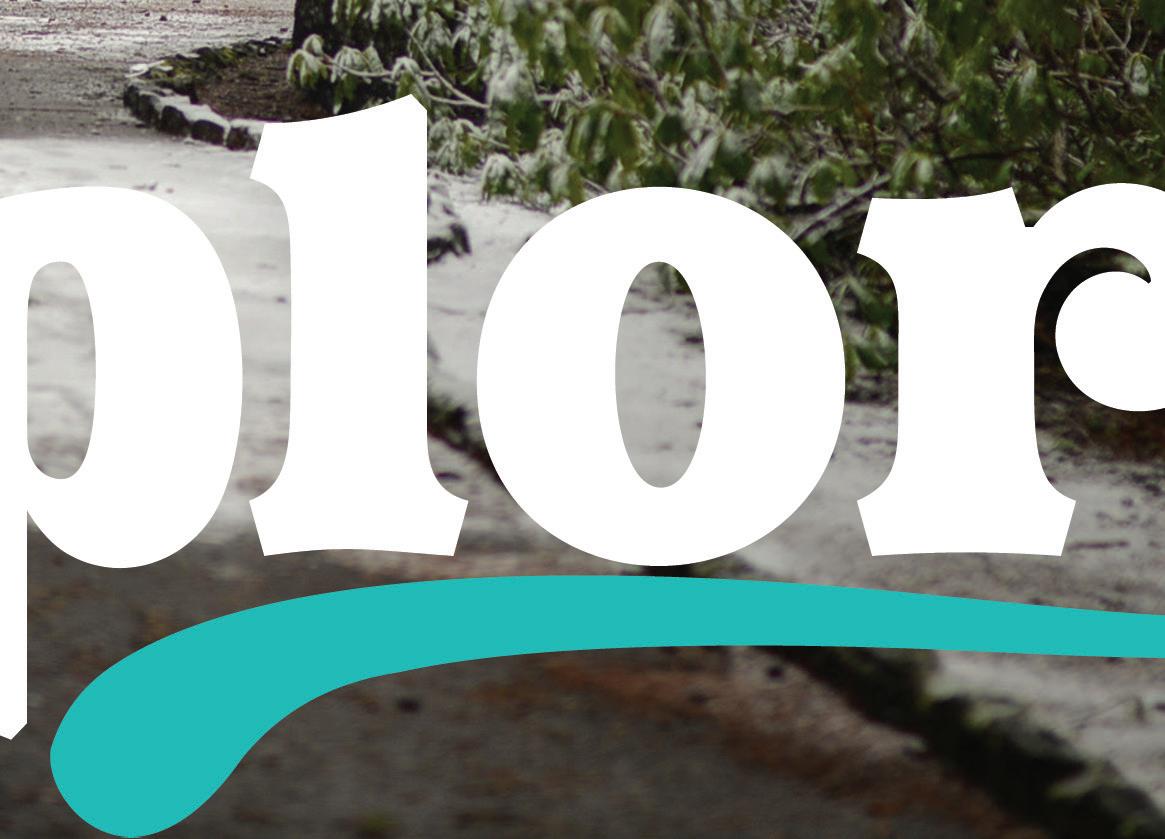
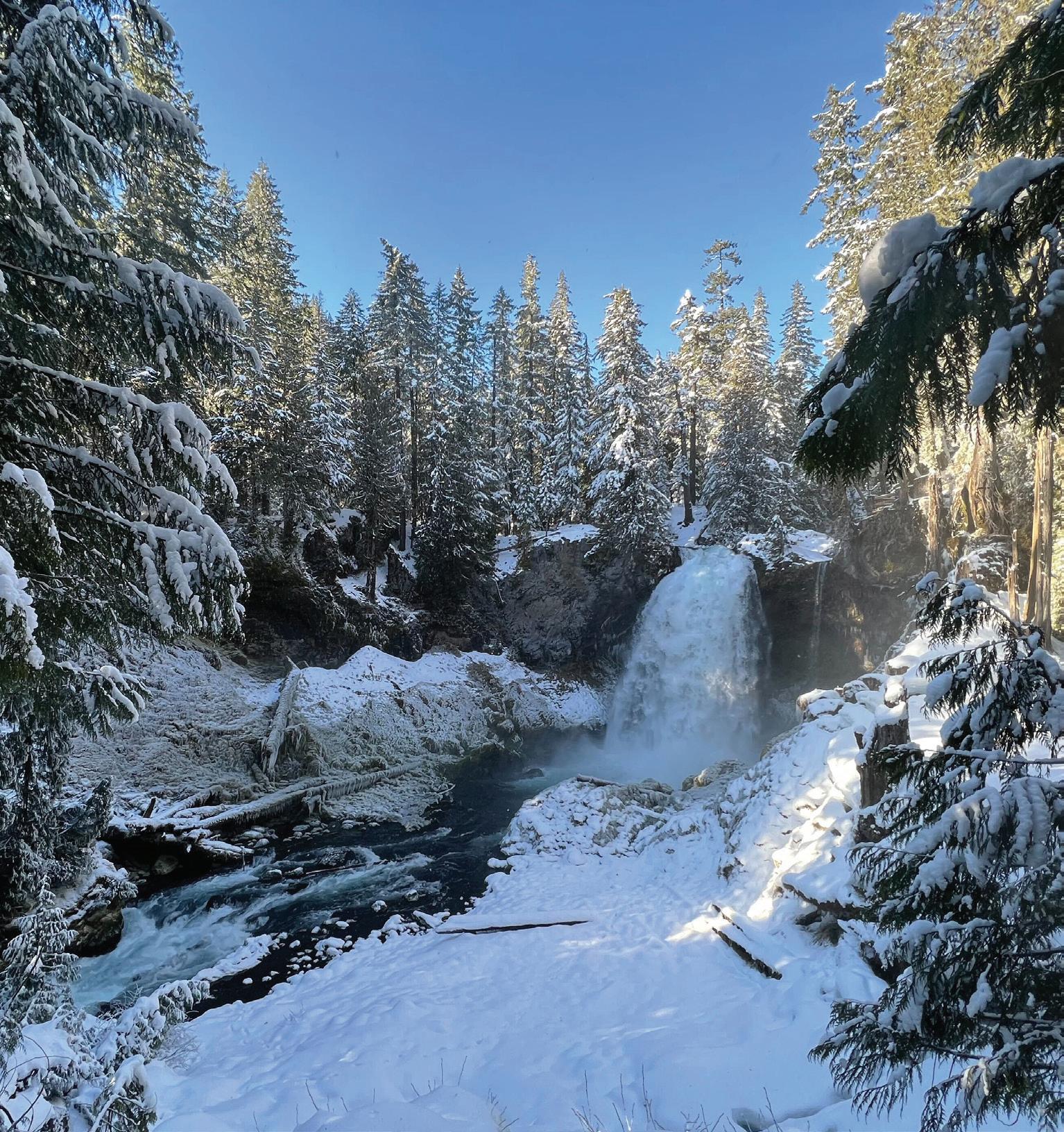


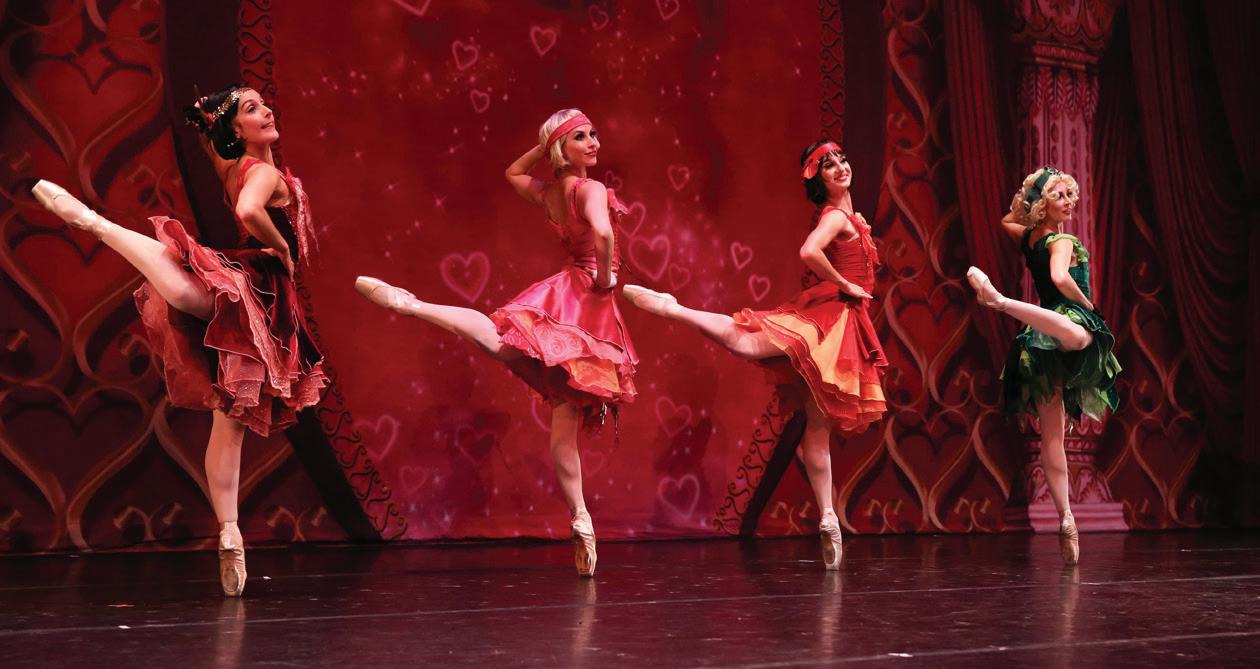
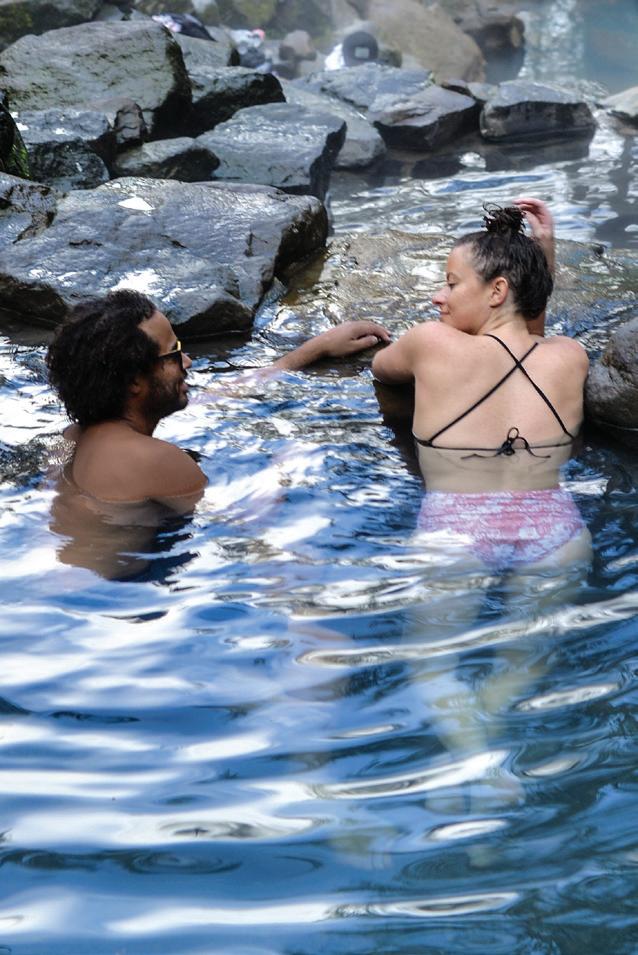
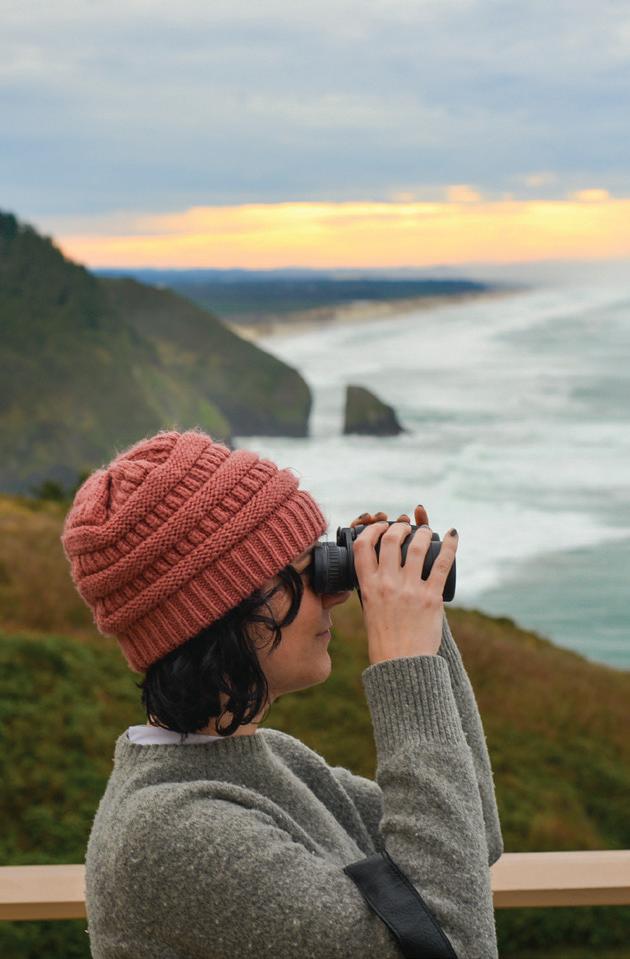


written by Cathy Carroll

Feet feel especially cozy in feather-light sheepskin Fireside Slippers handcrafted by Softstar Shoes in Philomath. Trimmed in buttery soft buffed cow leather, they have cuffs to roll up or down for customizable warmth. With replaceable sheepskin insoles, they will endure as favorite house slippers for seasons to come. Softstar’s footwear for children and adults is designed to allow you to move naturally and develop strong feet for a life of movement.
www.softstarshoes.com



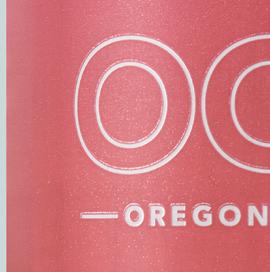






Union Wine Company just launched its first nonalcoholic canned wine, Underwood NA Rosé Bubbles. As a leading pioneer of quality canned wine more than a decade ago, it’s innovating again, aiming to make Oregon sparkling nonalcoholic wine more accessible nationally. The Tualatin-based Oregon B Corp. just celebrated its twentieth anniversary and crafts this wine from Oregon grapes with care. It all supports a new mantra: “Stay out late. Show up early.”
www.shop.unionwinecompany.com
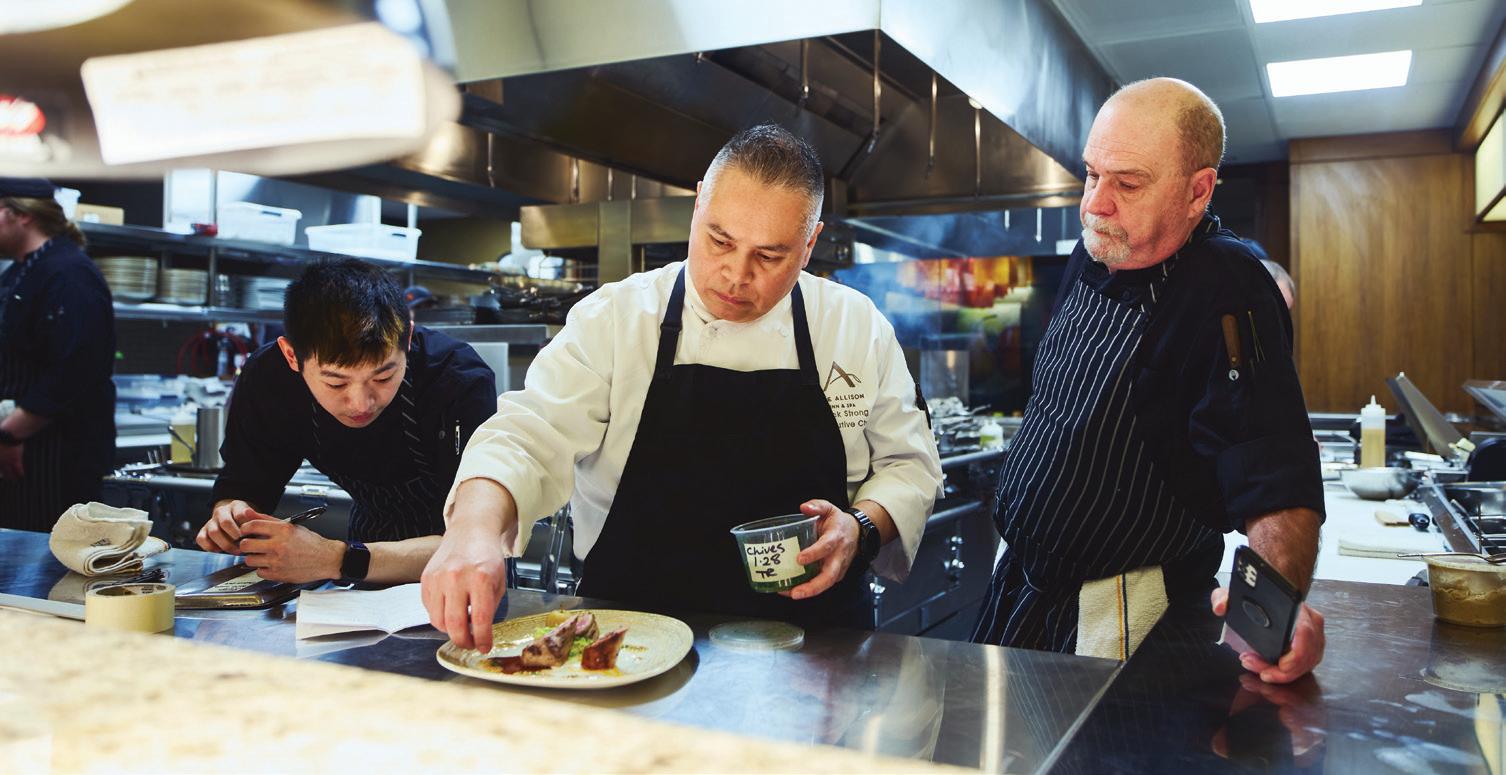
A collaborative dinner with Native chefs from across the country is set for November 22 at The Allison Inn & Spa. This third annual celebration of Native American Heritage Month is led by the inn’s executive chef, Oregon-born Jack Strong (pictured, center), a member of the Confederated Tribes of Siletz Indians. Strong has drawn on his heritage and expertise to celebrate and advance Native American cuisine and Indigenous foodways at The Allison’s JORY Restaurant. www.theallison.com/jory

This inaugural celebration of comedy, satire and smart irreverence takes over downtown Ashland during December 5 through 7. Catch national headliners Moshe Kasher and Ron Funches (above), comedians who’ve made many television appearances, at the Angus Bowmer Theatre. Plus late-night pop-ups at bars and restaurants, musical comedy, live game shows and more mischief saluting Ashland’s clever, quirky soul—and the power of laughter to bring us together.
www.sarcasmfest.com

Two new eateries on Springfield’s charming Main Street make perfect stops while mural hunting in the place that inspired the hometown of TV legend The Simpsons. Grab a treat at Estelle, the acclaimed gluten-free bakery, or Detroit- and Sicilian-style pizzas at Oakshire Commons’ taproom. Murals by local artist Bayne Gardner hide in alleys and side streets, depicting pegasus-riding Lisa, psychedelic Krusty, donut-chomping Chief Wiggum, Sasquatch Homer and rebellious Bart—created by Oregonian Matt Groening.
www.eugenecascadescoast.org/blog/post/the-simpsons-tour-of-springfield


Joe Feddersen: Earth, Water, Sky is a retrospective of the renowned Indigenous artist. Plateau imagery juxtaposed with chain-link fences and power lines are among the Indigenous and contemporary themes intertwined on baskets, prints, ceramics and wall-sized installations of glass through January 18. For Winter Nights, Thursdays in December, the museum stays open until 7:30 p.m., with music, cookie decorating, breweries hosting beer tastings and exhibit-related activities (all indoors with discounted admission). www.highdesertmuseum.org/feddersen
Good things come in small packages. It’s time to let your taste buds travel through forests of flavor. Award-winning Portland-based caramel confectioner and chocolatier Wildwood debuts its newest product: a small artisanal box containing five pieces of individually wrapped, sumptuously textured gourmet caramels. With nine flavors and two variety boxes, these small box caramels pair beautifully with Wildwood’s gifting chocolates and a cozy beverage of your choice. Wildwood is a moment of joy in the form of handcrafted caramel and artisan chocolate. Find your joy with every bite. www.wildwoodchocolate.com

written by Ben Salmon | illustration by Cody Muir
FROM ASTORIA to Pendleton, Ashland to Bend—and, of course, the world-class music scene in Portland—musicians from Oregon created incredible sounds in 2025. Here are the twenty-five best albums released by artists across the state this year.

Ann Annie’s music is mostly instrumental: tender wisps of piano, gently plucked strings, the soft cry of a French horn and purposeful room sound, all intertwined into gorgeous and organic ambient music. But if you’d like a little more context, Portlander Eli Goldberg—the musician behind Ann Annie—provides plenty of guideposts, with song titles like “the meadow,” “slow river” and “the ocean.” El Prado is a perfect soundtrack for sitting quietly and contemplating one’s place in the world.

Way back in the early 2010s, Sallie Ford and the Sound Outside was one of the best bands in Portland, and they built some significant buzz before coming to an end in late 2013. Now, Ford is back on the scene, this time alongside her sister Weezy, and together, they front The Barbaras, a country-ish band with an emphasis on the “ish.” Rollercoasters is their absolute blast of a sophomore album, which ambles amiably through country music, vintage rock ’n’ roll, reverberant surf guitar, modern soul and more. And they’re hilarious, too!

Domo Branch is not yet 25 years old, but he is already a fast-rising voice in the world of contemporary jazz and an in-demand drummer who has appeared with Wynton Marsalis and Terence Blanchard, among others. And then there’s the Portland artist’s second album, Hand of Gifts, a deeply personal set of songs
that bop with vigor, swing with ease and glow with a sense of gratitude, celebration and perspective far beyond Branch’s years.

the Alien In
The L.A.-based hip-hop producer known as Blu is a major figure within underground West Coast hip-hop, which is one big reason Bryson the Alien’s In Space … is so remarkable. Bryson—a longtime mover and shaker in the Portland scene—was given exclusive access to Blu’s catalog of beats, and he took full advantage by putting together an entire album. It takes two to make a thing go right, of course, and Bryson’s silky flow and cosmic vibe is a perfect fit for Blu’s deeply chilled beats.

Michael Hurley passed away on April Fools’ Day 2025, at the age of 86. If you aren’t familiar with him, he was an outsider folk singer and fiercely independent artist who was so revered within his particular world, his New York Times obituary clocked in at nearly 1,200 words. He also lived modestly near Astoria and
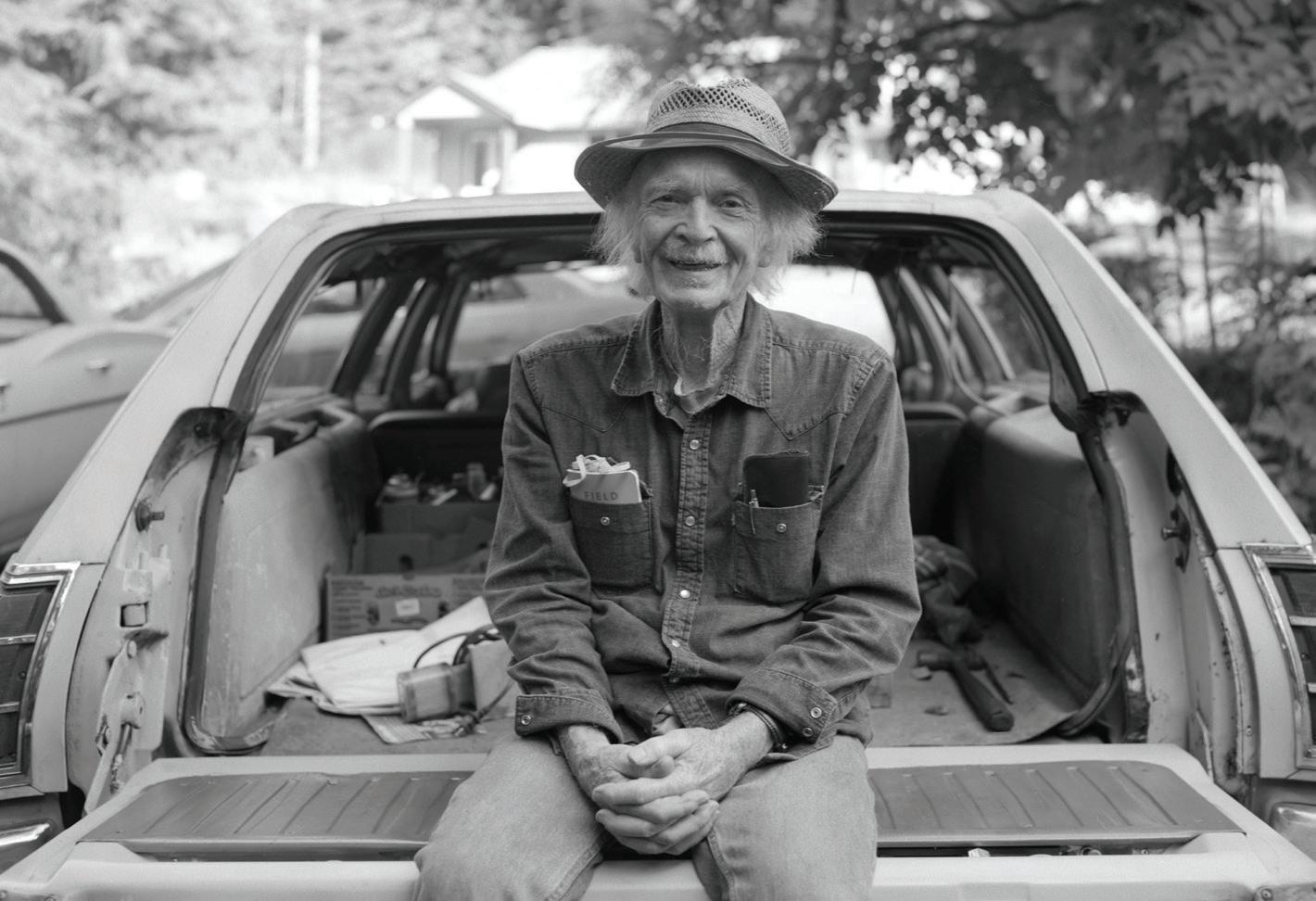

was known to play happy hour gigs at local cafés and bars. And just before he died, he finished one last album full of wide-ranging folk, blues and beyond. Broken Homes and Gardens is Hurley through and through—an appropriate coda for a fascinating career.

Milked Forgotten Pleasures
In an Instagram post about his new album, Eugene resident Kelly Johnson calls Milked his “little passion project.” Which certainly may be true, but it also undersells what is actually a killer band that explores the blurry spaces between serrated power-pop, catchy punk and fuzzy indie rock. Forgotten Pleasures is Milked’s first full-length in seven years, and it hums along like a fast-moving conveyor belt that delivers one big, buzzy hook after another.
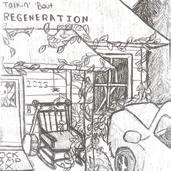
For two decades, Pendleton Center for the Arts has hosted a free rock ’n’ roll camp for teenagers interested in writing songs, practicing an


instrument or even just meeting other teens who want to rock and/or roll. This collection documents their efforts at the 2025 camp, and while not every note is perfect—that’s rock ’n’ roll, after all—the words and feelings that come out through these songs are absolutely priceless. Not in an “aww, that’s cute” kind of way, but in a way that provides a peek at an often overlooked slice of the human experience—raw, rich and beautiful.

Darci Phenix is a Portland-based multidisciplinary artist whose textile work and songwriting go hand in hand. The former typically takes the form of striking sculptures made from various fibers and inspired by the natural world. The latter can be heard on Sable, a set of wondrous, moonlit dream-folk tunes that spill over with memories, melancholy, self-discovery and a sense of creative sustainability. They’re also relentlessly gentle earworms—let ’em in, and they’ll echo in your mind for a good long while.
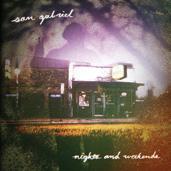
James Bookert is perhaps best known as the banjo player in a bluegrass band called the Whiskey Shivers. His solo project San Gabriel, on the other hand, finds the Ashland-based artist focused on otherworldly, synth-heavy dream-pop, and Nights and Weekends—his first full-length—is a thoroughly enjoyable set of songs that feel like The Strokes and Beach House merged into one band, then set off to soar across the cosmos forever.


riffs, chest-caving low end and demonic howls, all unfolding at a glacial pace. These dudes sound like they’re on a mission to completely black out the sunny side of the Cascades.
Alien Boy | You Wanna Fade?
Amulets | Not Around But Through
William DeLee | Improvisations for Guitar and Charango
Enrighter | Ordered Affairs
Ross Garlow | Big Water
Graves | Gary Owens Jr.: Super Hits Vol. 3
High Step Society | Depths Above
The Horsenecks | In The West
Milc & Televangel | Things To Do In Portland … When You’re Dead
The Minus 5 | Oar On, Penelope!
For years, Portland has been home to one of the best doom- and sludge-metal scenes in the country. These days, though, Oregon’s gnarliest rumble is coming out of the high desert of Central Oregon. Vacancy Floor is a trio from Bend, and their debut album Mythos is a bloodcurdling combo of bulldozing guitar
Piggy Bank | Pattern
Recognition
Saoirse Dream | Saoirse Dream
Time Rift | In Flight
Anna Tivel | Animal Poem
Wes Youssi & The County Champs | High Diver

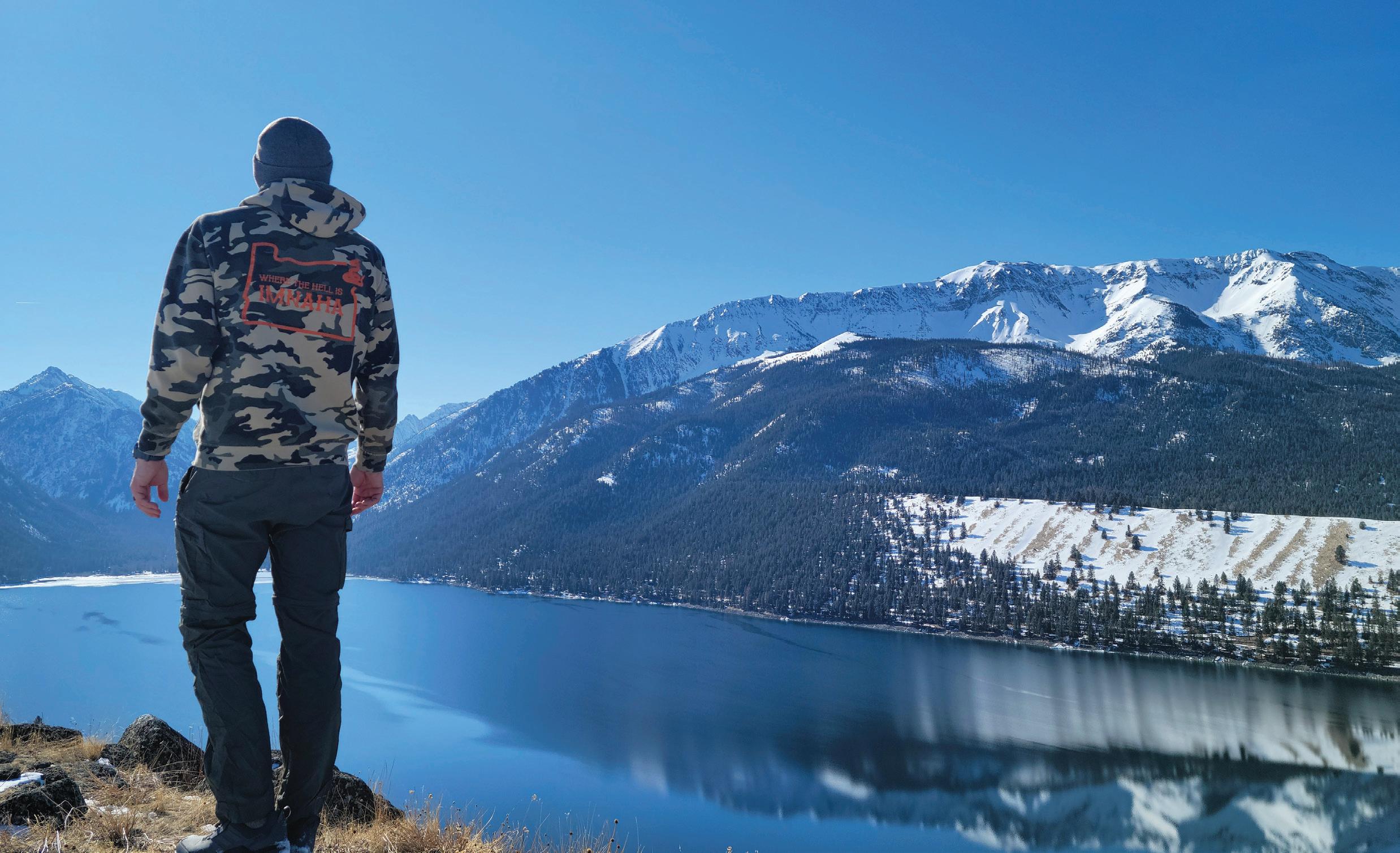

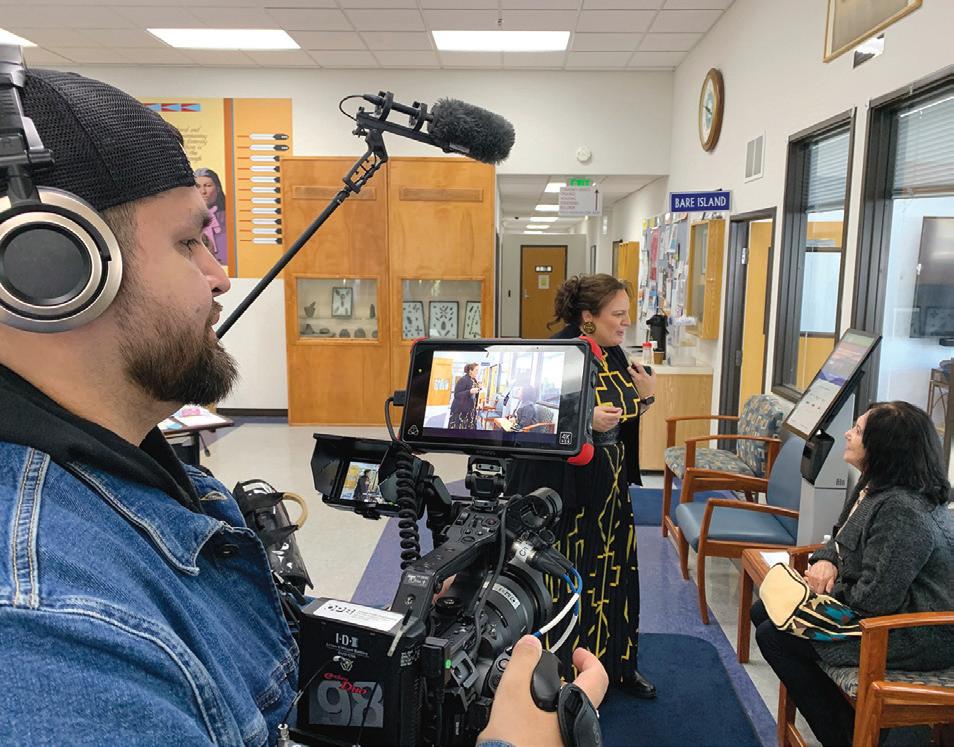


OPB uncovers hidden Native American boarding school stories for a national audience through one Oregon woman’s quest
interview by Cathy Carroll
THE FILM Uncovering Boarding Schools: Stories of Resistance and Resilience is the first in-depth look at the Native American boarding school experience in Oregon, adding new chapters, voices and context. Oregon Public Broadcasting viewers can follow Gabriann “Abby” Hall, a Klamath Tribes member, as she uncovers her relatives’ experiences among countless Indigenous children forcibly removed from their homes by the federal government.
OPB producer Kami Horton discussed the one-hour film, made with a crew that included Native American tribal members.
How did you honor the trauma of this narrative while also reflecting strength and survival?
It was essential to everyone involved that resiliency be a key element throughout the documentary. As Klamath Tribes member Abby Hall says in the documentary, “The children fought back.” We discovered that some of Abby’s family members ran away, ge ing over 200 miles before being caught, and that a group of young girls burned down a dormitory and ultimately shut down the school. We also learned how many students protected each other and helped make the best out of what was o en an awful situation. Others took what they learned and used it to advocate for their communities back home.
We tried to continually return to personal accounts of resistance and resilience, large and small. We showed an early education center teaching traditional language and young people a ending a “culture camp” to practice and learn from their elders. Though this is a history steeped in trauma, the larger story is the ongoing commitment to protect and preserve traditional heritage, despite a decadeslong federal policy that aimed to destroy those things.
Discuss some of the challenges—and surprises—in doing your research. We relied on the scholarship of local archivists, historians and researchers, such as Eva Guggemos of the Pacific University Archives, Chemawa historian SuAnn Reddick and David Lewis of Oregon State University. Each has spent years doing extensive research on these topics and is an expert in their field.
The program also required original research in uncovering the stories within Abby’s family. There is no single depository for all this information. … Government documents scanned by genealogy groups proved to be particularly valuable, but we also found important primary sources in university archives and private collections.
Although Native American boarding school policies were federal programs, churches sometimes operated the schools, and those records are especially difficult to track down. Some organizations, like the now-closed Canyonville Bible Academy (in Southern Oregon), were happy to share what they had, but others explicitly stated they would not help in our research. We know from primary sources that the government placed children in religious boarding schools, reform schools, juvenile detention centers and even mental institutions—but details are few and far between. One government document listed several children from a Klamath family sent to Oregon’s Fairview Training Center, an institution for the so-called “feeble minded.” Through a document request, we learned that every child in that family was sterilized, including a 10-year-old girl.
What do you hope viewers will take away from this film?
According to the National Native American Boarding School Healing Coalition, 83 percent of Native American school-age children were a ending boarding schools in the 1920s. Federal Native American boarding school policies devastated generations of families and communities as they were torn apart against their will. Our documentary shows how these policies of forced assimilation directly a ected Abby’s family, spanning decades and hundreds of extended family members. Her story is a reflection of countless others across the country. I hope that this project will spark conversation about our shared history, about government policies based on white supremacy and about the long-lasting impacts of those actions, as well as foster an understanding of the rich heritage that was nearly lost and is now being reclaimed by new generations.

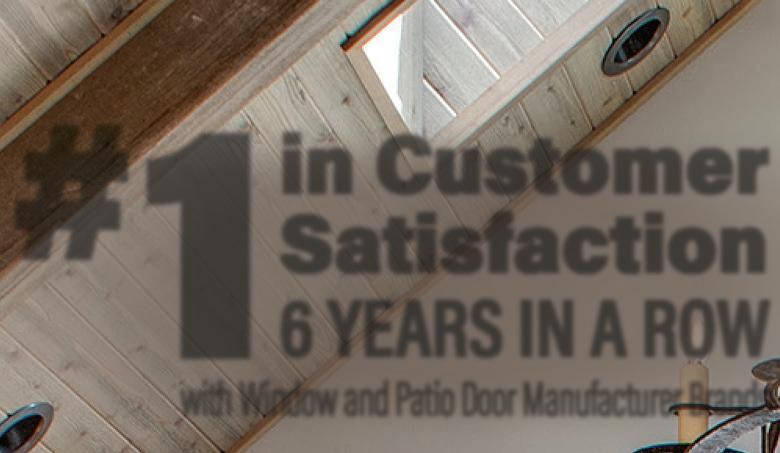

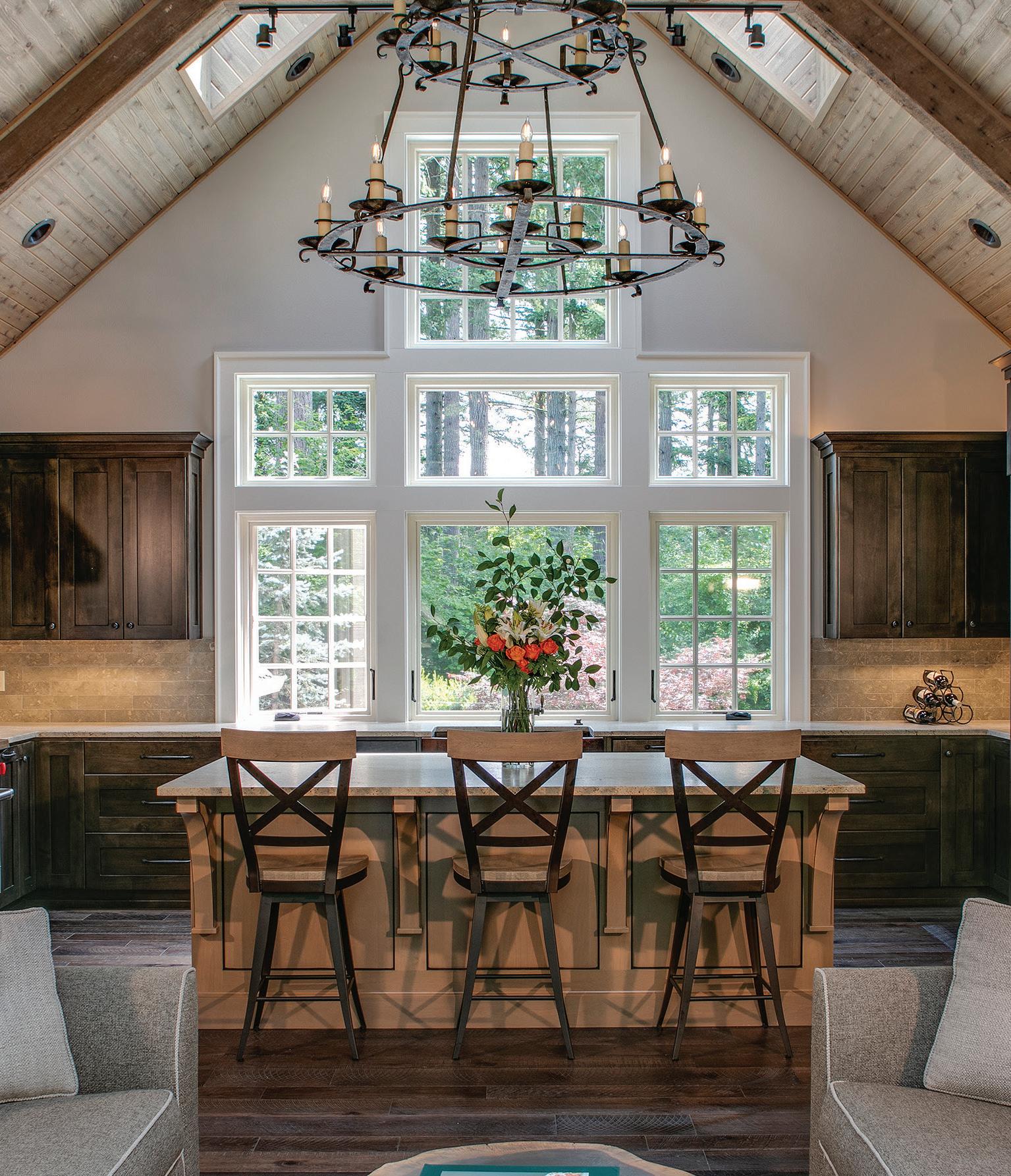

written by Jeremy Storton | illustration by Edwin Ouellette

A WOMAN once walked into the shop where I sold beer and wine. We chatted about her dinner plans, and I offered a few perfect pairings. Instead of taking my advice, she reached for two bottles from the bottom shelf and said, “I’ll just go with these. ey’re safe.”
Her word “safe” shook me. After all, a great bottle isn’t about safety or security—it’s about joy and adventure. I’ve thought about that moment ever since. What I think she really expressed was the overwhelm of so many choices, compounded by the fear of disappointment after spending hard-earned money. Luckily, there is a way to enjoy a flavor adventure without the risk.
For years, I’ve sat at a little round table with rows of mystery beer in small cups waiting for me and other beer judges to blindly evaluate them. Judging beer sounds like a great way to spend a weekend, and it is, but it’s also exhausting work
concentrating on nuances, warding off palate fatigue and trying to distinguish a clear winner from a field of incredible beer. But brewers enter these competitions because it is the best way to see how they compare among their peers without bias and in the most objective way possible. At best, they win some medals and change their marketing plan and packaging. At worst, they receive actionable feedback so they can make their beer even better.
For us consumers, those medals aren’t just decorations; they also assure us that somewhere, someone who knows what they’re doing has already done the hard work of tasting and vetting. It means that with this award-winning beer, you can step beyond the safety of the bottom shelf or the same old choice with confidence. It says this beer is more than exceptional—it is truly safe.
These are some of the best and biggest beer competitions in Oregon, the U.S. and the world. If you find a beer with medals from these competitions, you’ll know you found a winner.
Oregon Beer Awards (OBA), Portland


Best of Craft Beer Awards (BOCBA), Central Oregon


Great American Beer Festival (GABF), Denver, Colorado
U.S. Open Beer Championship, Oxford, Ohio


World Beer Cup (“The most prestigious beer competition in the world”), location varies as it follows the Craft Brewers Conference




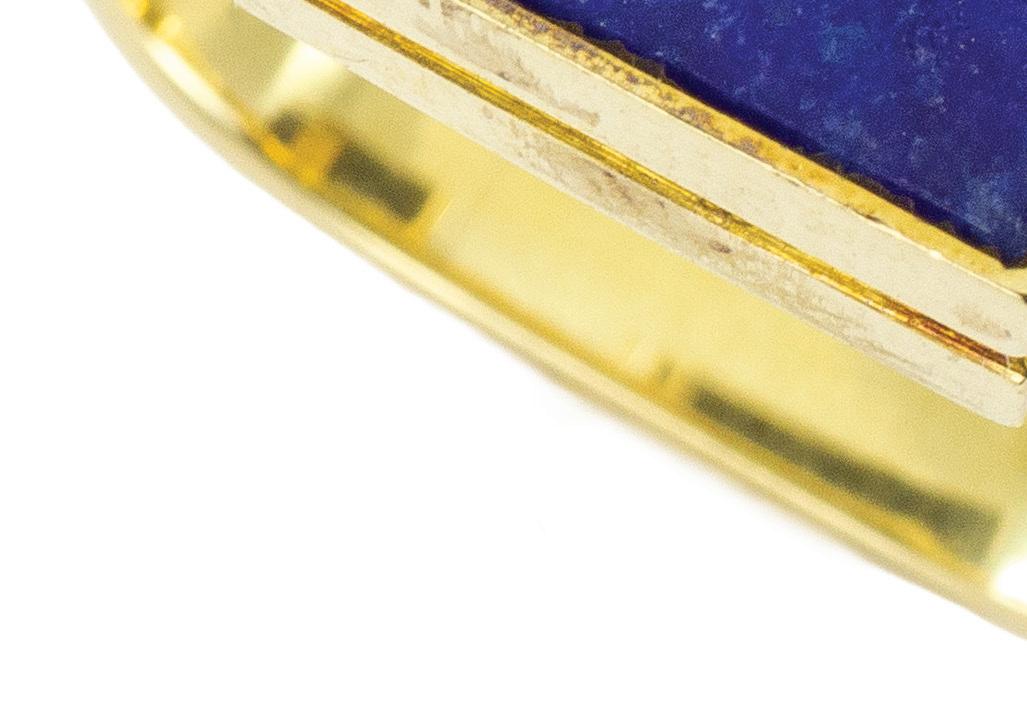





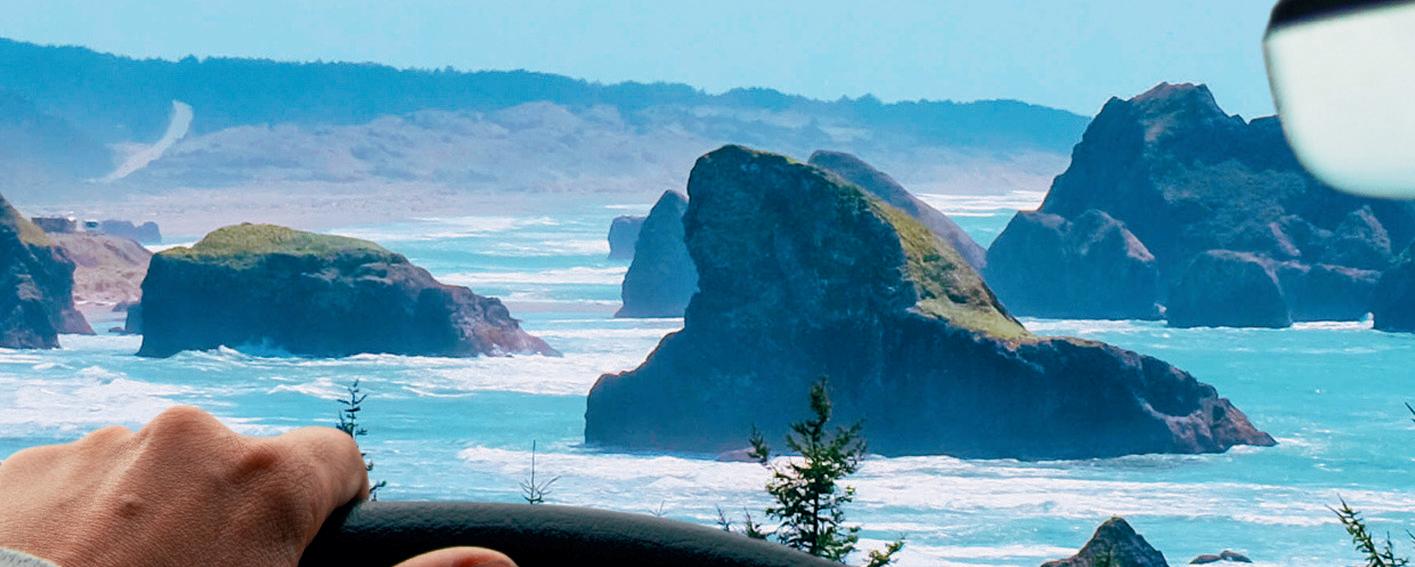








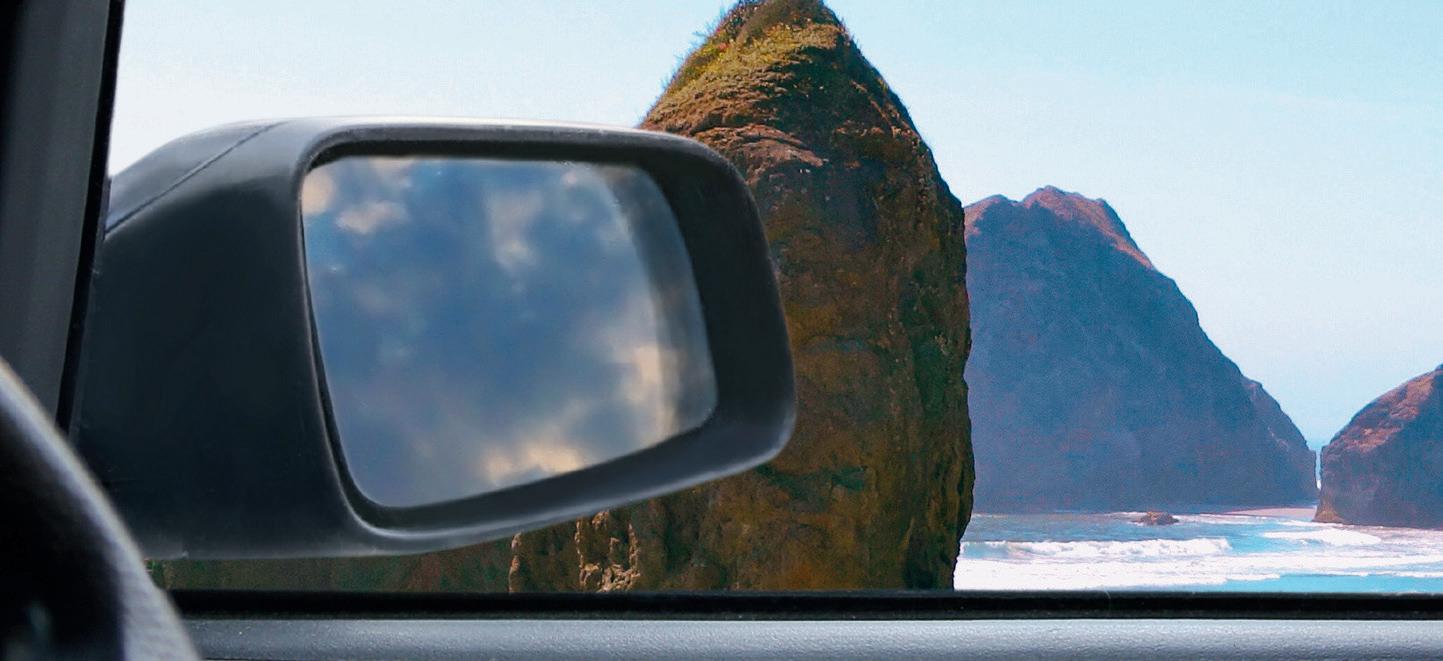



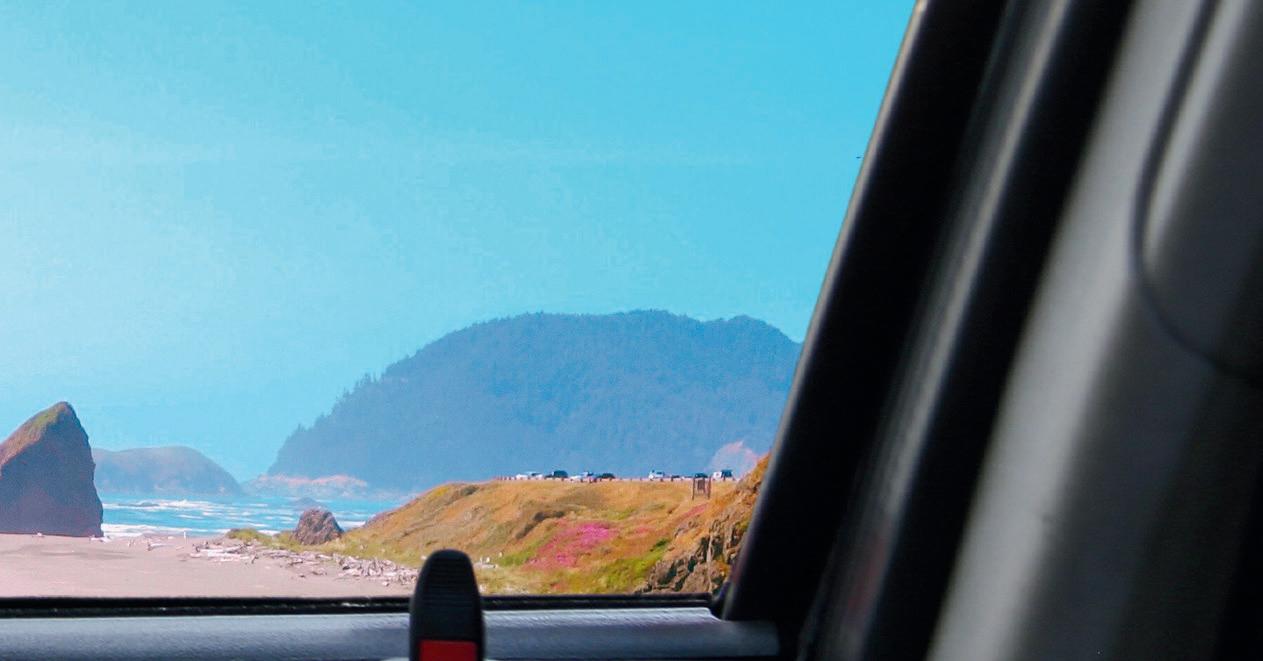
written by Kerry Newberry | photography by Joseph Eastburn
WHEN ELISABETH “Lise” Bueschen-Monahan talks about goats, her eyes light up—whether she’s sharing the history of goat herders or the fun fact that goats can read facial expressions. “ ey prefer smiling faces,” she said. “A British researcher figured that out.”
Alongside her husband, Steve, Bueschen-Monahan runs Fraga Farm, an organic, Animal Welfare Approved farmstead creamery in Gales Creek. It’s one of Oregon’s few remaining goat dairies and a haven for both animals and visitors. e farm’s 34 acres are home to a clever and curious herd of Alpines, Nubians and LaManchas, who rotate through lush paddocks during grazing season. “Our goal is to ensure our goats have a fully fulfilling life,” she said.
For Fraga, that means babies stay with their moms and nurse directly until ready to be weaned. (Most dairies separate them shortly after birth.) “Every single doe in our herd was raised by her mom,” said Bueschen-Monahan. Over the past fifteen years, she’s seen this result in a happier, healthier herd. Additionally, retired does live out their days as pasture pets.
“We fi nd every aspect of farming deeply meaningful,” said Bueschen-Monahan. For her, the farm is a third place, fostering connections and community. “It’s the same with farmers markets, where we get to nurture micro relationships every weekend.”
You can shop the cheery farm stand—stocked with chèvre, raw aged feta, goat gelato, caramels, soaps and balms yearround. Or join seasonal activities like goat hikes, goat soap workshops or sipping hot cocoa with kids in the barn. Just remember to smile at the goats.
54655 NW OLD WILSON RIVER ROAD GALES CREEK www.fragafarm.com
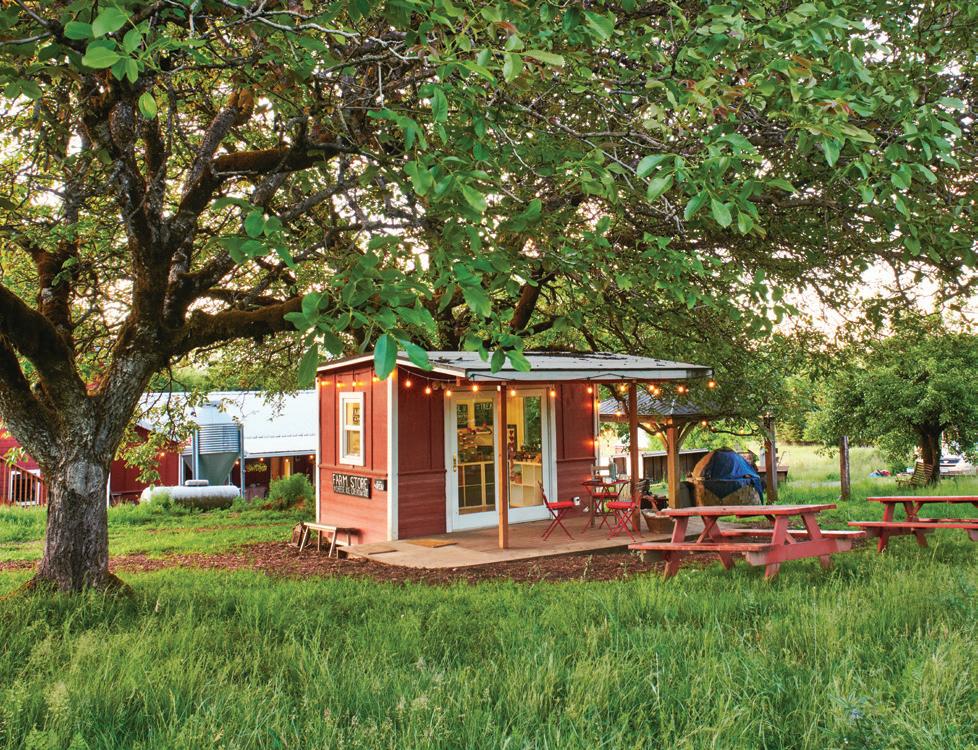
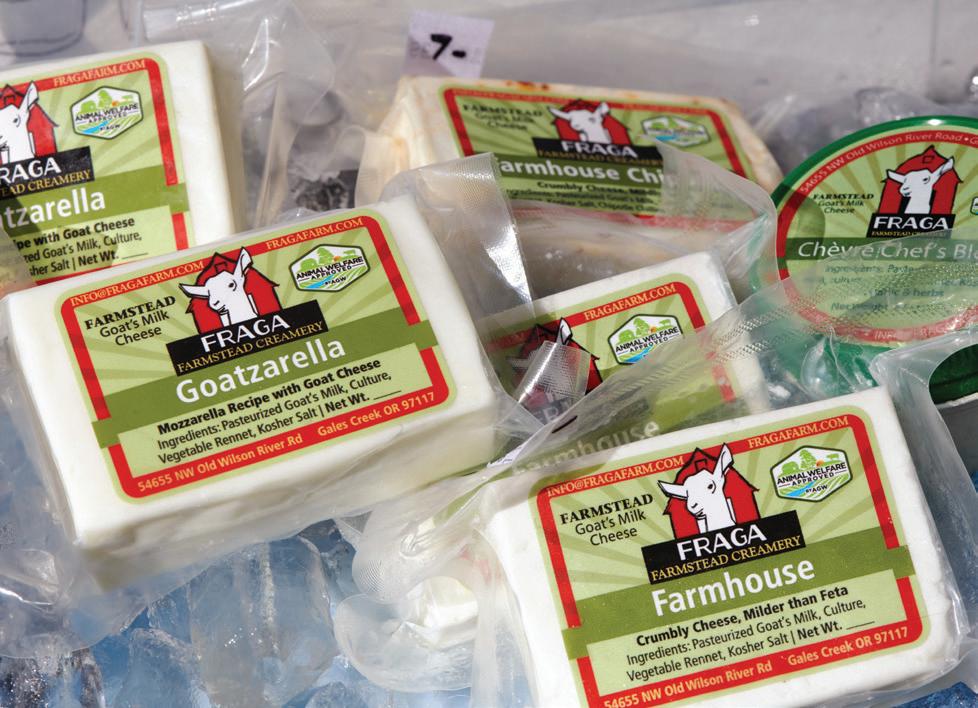

We’ve Been Through recipe courtesy of Diana Riggs and Zach Hixson, Day by Day Bar / MCMINNVILLE
Salt rim of your favorite rocks glass. (We use pink Himalayan because it’s pink and tasty.) Combine ice and all ingredients into a shaker. Give a good shake, and pour dirty* into the rocks glass. Dress with a lime pinwheel.
*Note: A dirty pour is pouring the entire contents of your shaker directly into your glass. This gives your drink an enhanced flavor and texture.







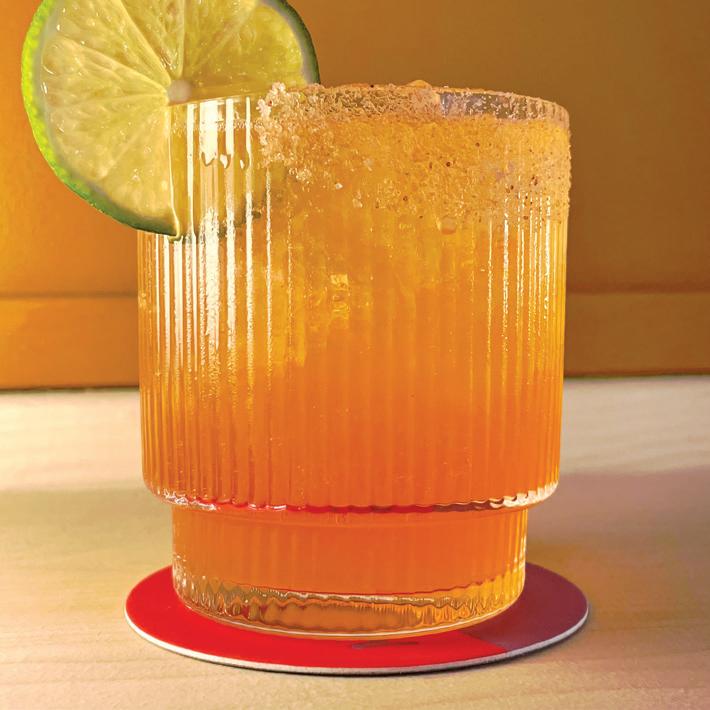
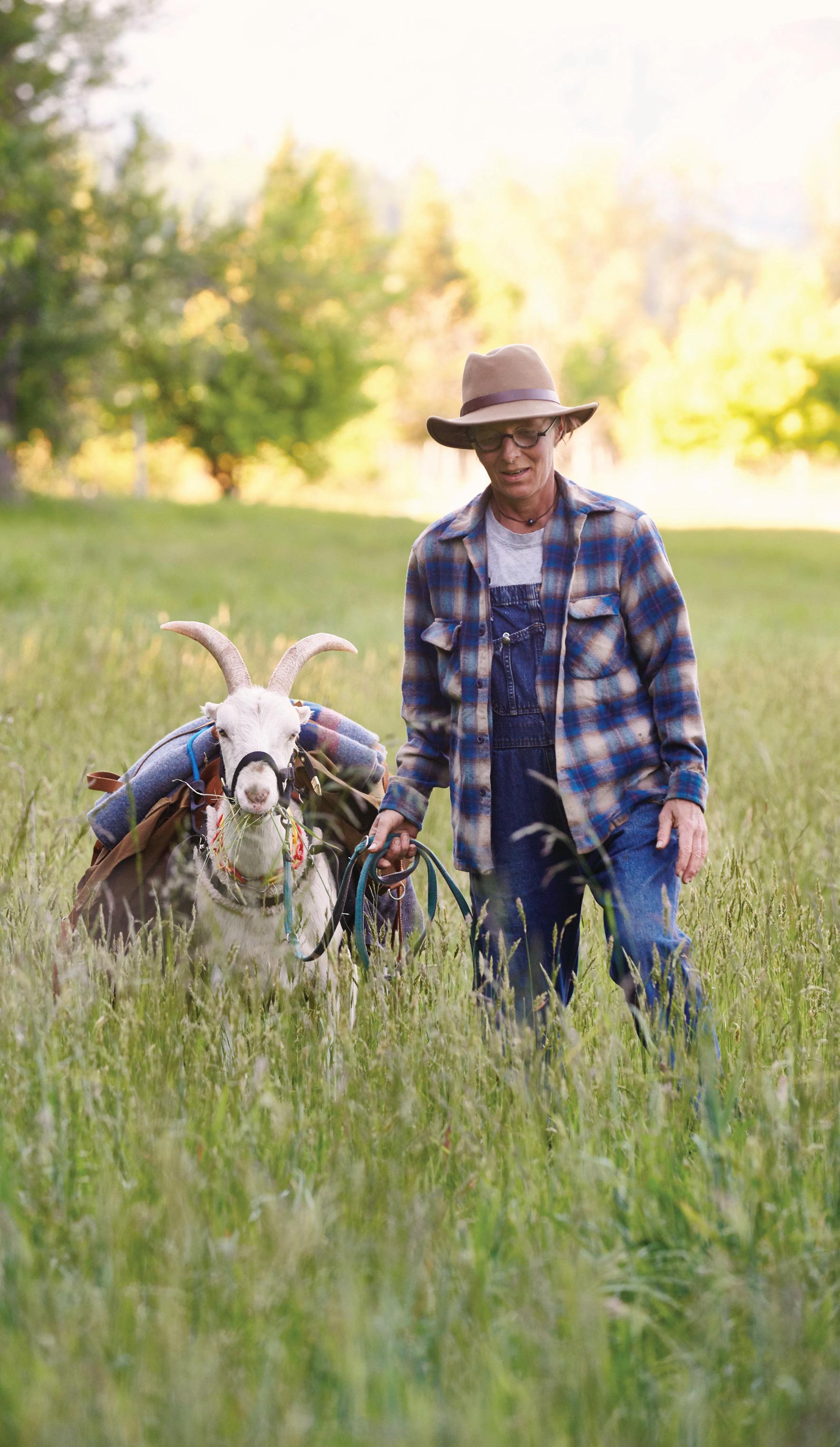

Inspired by her love for vintage glassware, coastal artist Seasons Kaz Sparks turns out a range of stemless wine glasses with original prints of ocean scenes along with an array of cocktail glasses. Her collins glasses are especially eye-catching with colorful prints of fish, whales, sea stars and jellyfish. Visit the flagship store in Tillamook or one of their two other retail locations in Astoria and Cannon Beach.
109 MAIN AVE. TILLAMOOK www.saltyraven.net
An oasis for one-of-akind kitchen and garden crafts, you’ll find everything from dainty ceramic fortune cookies and spoon rests to clay coffee mugs and candles in the shape of berries at this indie shop. Even better, you can give the gift of creativity with one of their monthly workshops—ranging from making pinch pot planters to slab construction mugs.
3601 SE DIVISION ST. PORTLAND www.carterandrose.com






Liven up your table with a stunning laser-etched birch coaster set from this Oregon company. The Oregon Coaster collection celebrates iconic peaks in Oregon and includes Pacific City, Mount Hood, Crater Lake and Mount Bachelor. Add a few handblown tumblers with the state’s most legendary peaks molded into the base of the glass for even more tabletop pizzazz.
www.northdrinkware.com

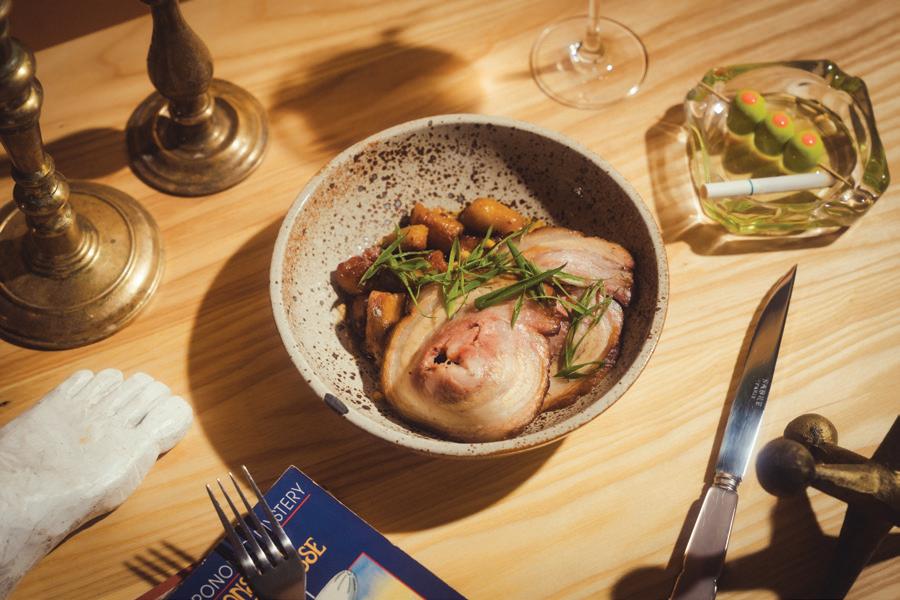
written by Kerry Newberry
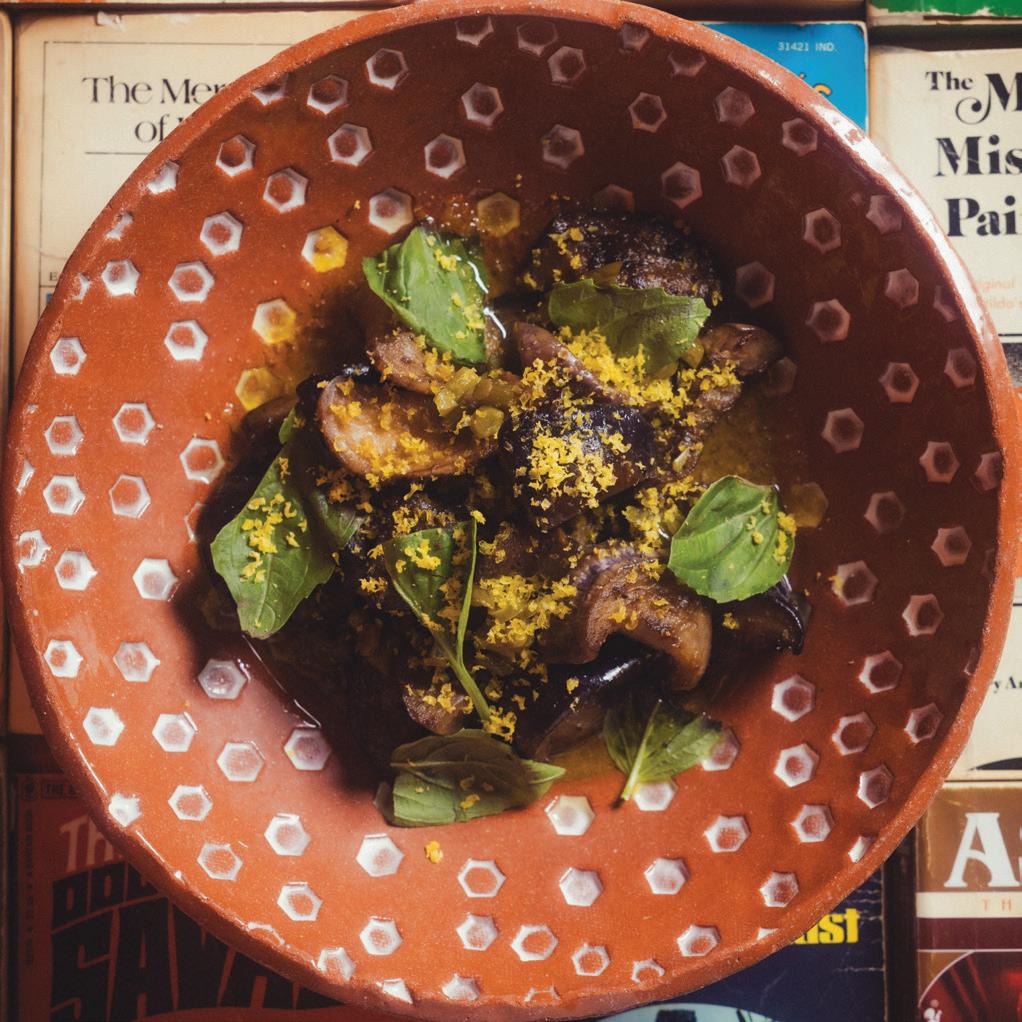
AT KARI SHAUGHNESSY’S farm-to-table restaurant in Carlton, the hygge magic runs deep—think nostalgic wallpaper designed with staff family photos, wooden silverware trays carved by the GM’s father and the soft glow of vintage lamps. The space hums with warmth and storytelling, anchored by a fictional muse: “We brought Hayward to life as a character,” said Shaughnessy. “A strong-willed and worldly woman, a seasoned traveler curating treasures from around the globe, yet always returning to her ranch in Oregon.”
For the menu—an ode to hyper-seasonal ingredients—the James Beard-nominated chef collaborates with nearby farms and ranches including Even Pull Farm, Trent Family Farms and her husband’s Revel Meat Co. On the compact wine list, look for local standouts like Beckham, Buona Notte and Big Table Farm. (For that matter, peek at the neighboring table where a local winemaker might be dining next to you.)
Snack on pickles and ferments, a seasonal selection of crunchy, peppery vegetables. (Shaughnessy ferments anything that sparks her curiosity.) Then plan to slather koji butter on thick slabs of what will be the best sesame focaccia you’ve ever had—before feasting on shareable dishes such as umami-packed roasted eggplant, sprouting cauliflower with smoked date breadcrumbs and blackened king salmon. No matter what you order, every dish is a celebratory expression of place and a reminder that the Willamette Valley offers one heck of a pantry.
209 N. KUTCH ST. CARLTON www.haywardrestaurant.com
You can pair books with pints at Hodgepodge Books & Taproom, Eugene’s first bookbar. In addition to rotating taps of local craft beer and cider, there’s a small wine and cocktail menu. Follow the shop’s Instagram for breakfast pop-ups, book trivia events, release parties and poetry nights.
158 E. 14TH AVE. EUGENE www.booksandtaps.com
ROSE CITY BOOK PUB
This charming pub has ample nooks for solo reading along with bistro tables for dinner and debate. On the bistro menu, expect comfort classics including grilled cheese and poutine. Events span from writing workshops and trivia night to author readings and astrology study groups. Note to bookish night owls—it’s open until midnight.
1329 NE FREMONT ST. PORTLAND www.rosecitybookpub.com
One of the anchors of downtown Newberg, Chapters Books and Coffee features local roasters (Bespoken and Caravan) and stocks the pastry case with goods from Portland’s Marsee Baking. In addition to the cozy café, you’ll find two other popular businesses tucked inside—Expansion Games and Cream Northwest. The latter serves up seasonal scoops along with special collabs (ice cream made with coffee beans aged in local whiskey barrels).
701 E. FIRST ST. NEWBERG www.chaptersbooksandcoffee.com








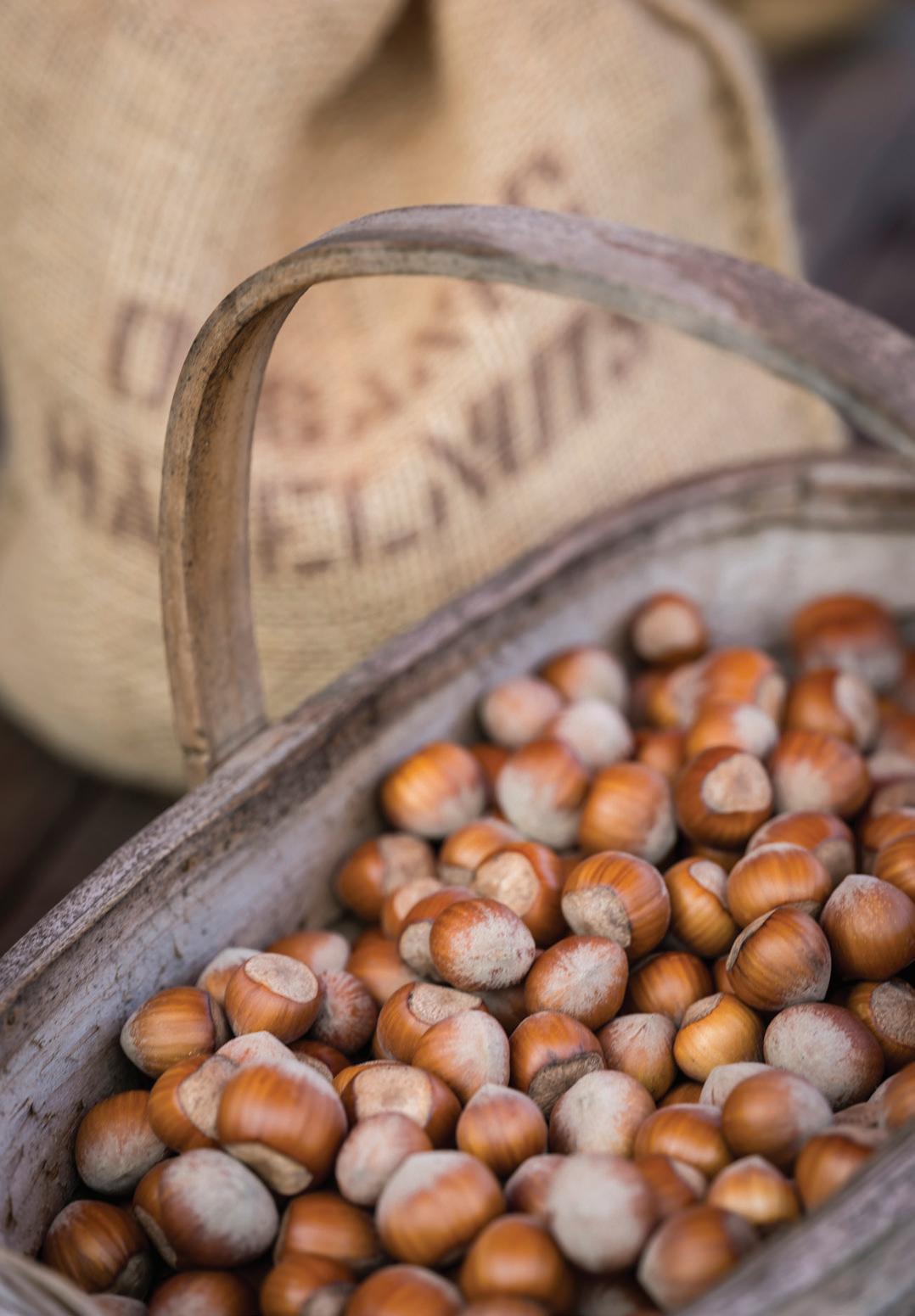
is the top producer of this versatile nut in the United States
written by Julie Lee | photography by Karl Maasdam
SHONDA WARNER is a hazelnut farmer at Farmacopia Farms in Scio and self-appointed lobbyist of sorts for what she considers the forgotten nut: the hazelnut.
Warner considers hazelnuts, also known as filberts, the “most amazing nut—truly a state treasure.” Hazelnuts and walnuts are considered, what Warner calls, “clean nuts”—while cashew nuts are surprisingly fruit, and peanuts are a legume.
“We need to change our view on hazelnuts,” said Warner. “They need to be as commonly known as almonds, cashews and walnuts.”
Oregon produces 99 percent of the hazelnuts grown in the U.S., ranking in the top five globally for production. In 1989, the hazelnut was declared Oregon’s official state nut.
Hazelnut trees sequester carbon, provide homes to birds and wildlife and have a minimal water requirement to grow, while providing “a most amazing buttery ball of protein, vitamins and fiber,” according to Warner. The hazelnut is, she said, a “no brainer gift to this abundant state!”
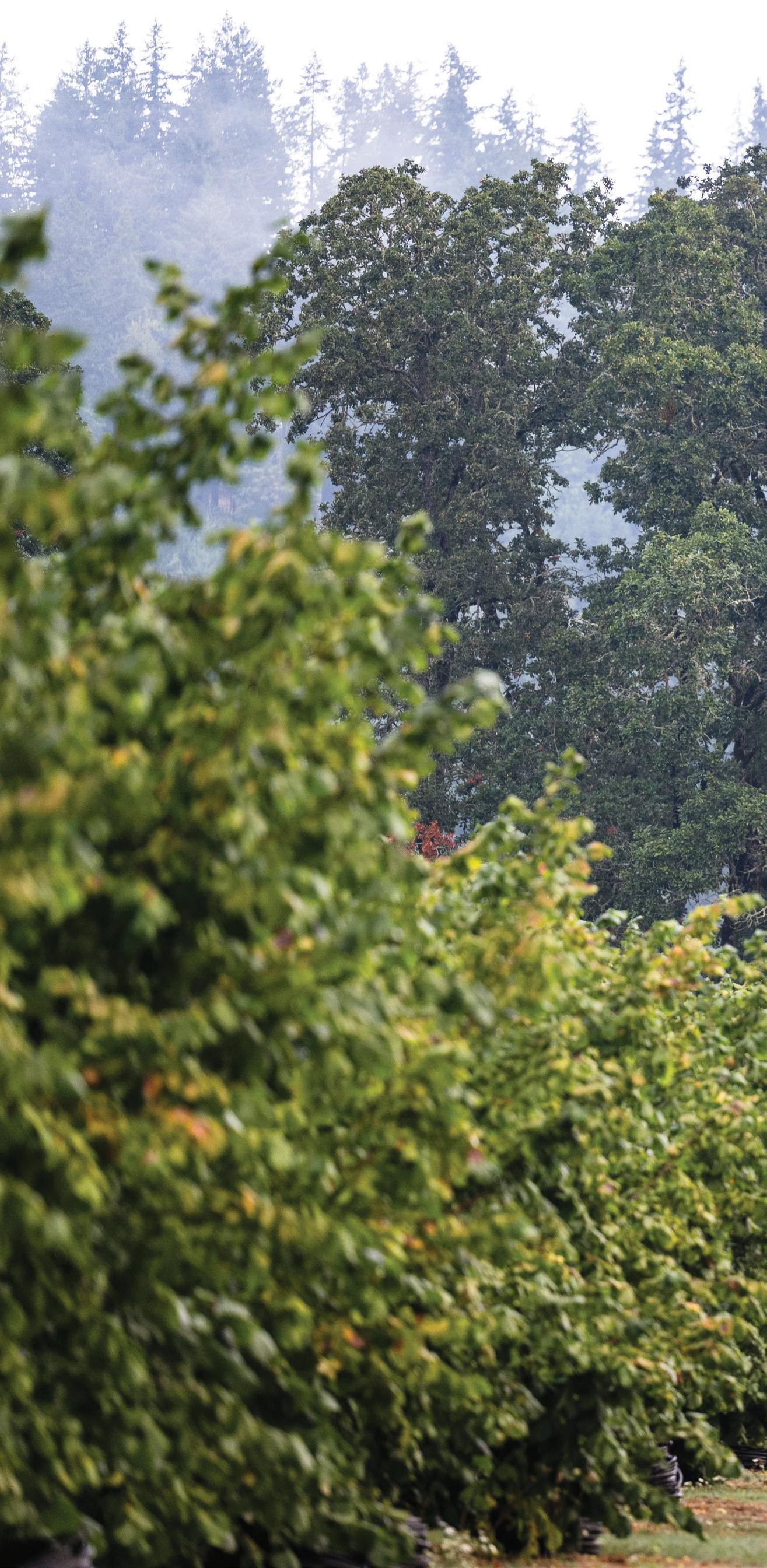
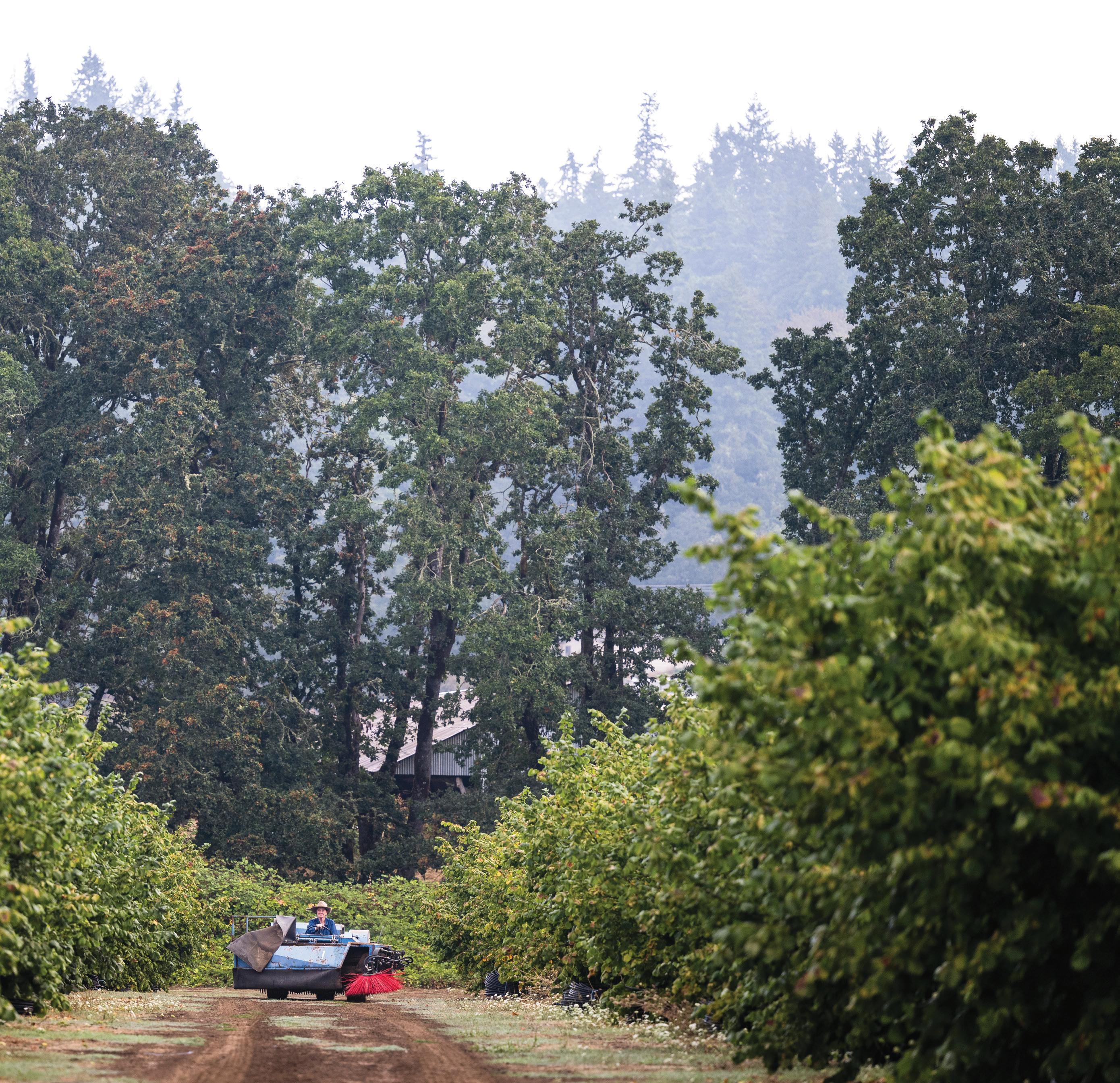
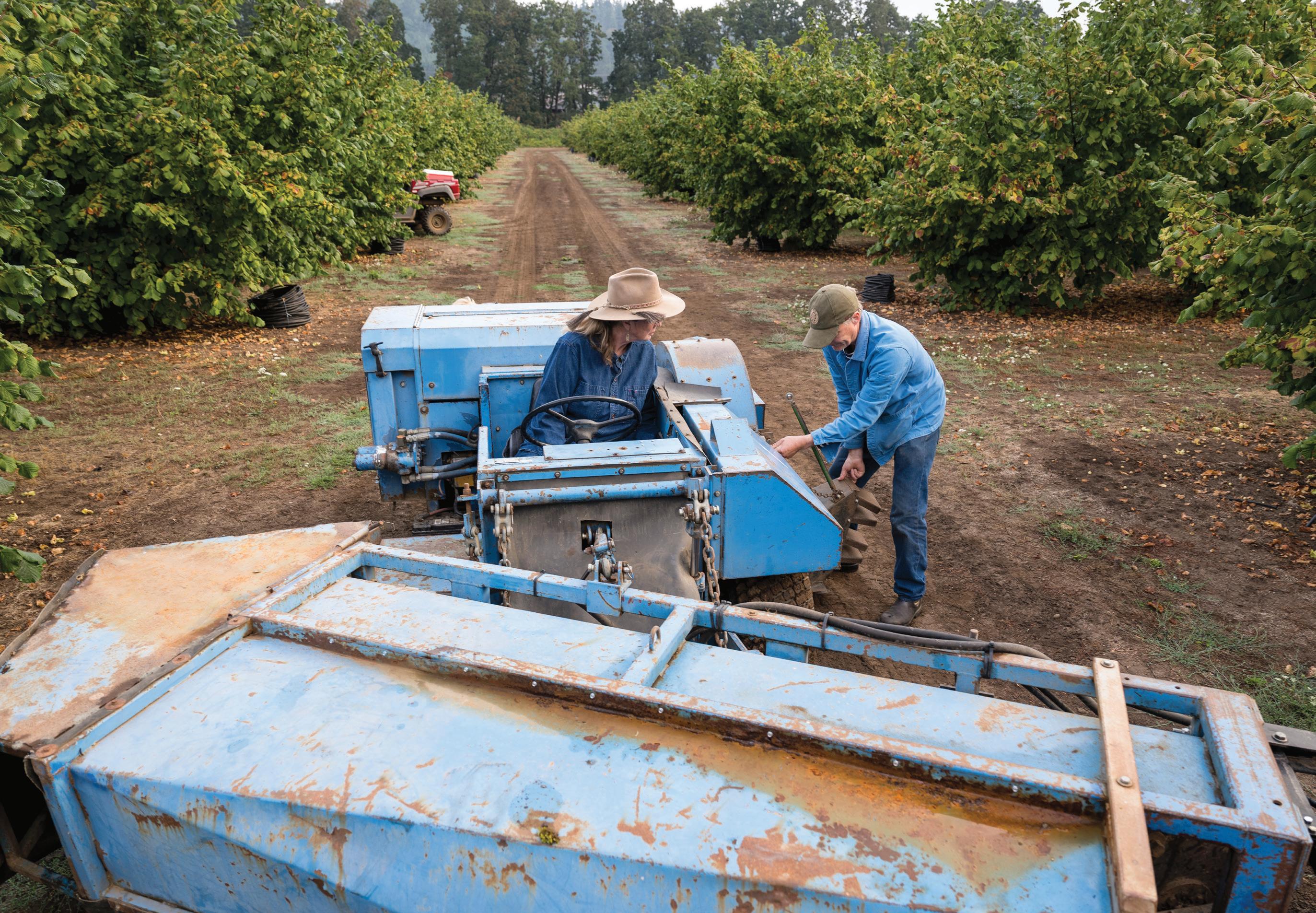
“Food is medicine, and we are largely what we eat,” Warner continued. “In an increasingly complicated world, it’s great to look past the gimmicks and just be simple with your diet by incorporating fruits, vegetables and nuts daily.” She points to the abundance of protein in hazelnuts, with 4 grams of protein, healthy fats that can help reduce cholesterol and significant amounts of fiber, supporting digestive health.
Warner was born into the farming business in rural Nebraska. She has a background in both agriculture and finance as well as a “deep passion for food.” Her great-great-grandfather was a nut and berry farmer, and she now grows blueberries, hazelnuts and rice at Farmacopia Farms, producing 250,000 to 300,000 pounds of hazelnuts and a million pounds of blueberries annually. “We grow lots of round little balls!” she said, laughing.
Hazelnuts are drought-tolerant due to their deep root systems; once hazelnut trees are established, their root systems access moisture in deeper soil layers. The result is that hazelnuts require 60 to 70 percent less water to grow than other nuts. When our world is “facing depletion,” said Warner, this “really matters.”
According to Oregon Hazelnut Commission Executive Director Christine Roth, 2023 data showed U.S. hazelnut production jumped by 21 percent from the previous year, and exports grew exponentially for shelled products in that same year.
“Oregon hazelnuts are more than a crop—they are a symbol of the state’s agricultural legacy and global reputation for excellence,” said Roth. “Oregon’s hazelnut growers, processors and partners have transformed this crop into a national leader,
“People don’t truly understand how prized these nuts are—they are very special. Willamette Valley is a grower’s nirvana for hazelnuts.”
— Shonda Warner, of Farmacopia Farms
setting the pace for quality and innovation in a rapidly expanding industry.”
Roth continued, “What began with Oregonian grit and authenticity now fuels a future defined by resilience, growth and global impact.”
Warner also points to the grit required to succeed as a farmer in today’s world. “Support your local farmers. … It’s dang hard out there,” she said.
According to Warner, more than two decades ago, Oregon had a booming hazelnut industry, before “blight came in and punched the industry in the nose.” With the involvement of Oregon State University’s hazelnut breeding program, a blightresistant variety was created.
For Warner, it’s also important to give back as a farmer. When a recent large order went unpaid for, she donated the 20,000 pounds of hazelnuts to the Marion County Food Bank, something she said everyone should be doing when and if they can.
“What drives my soul is that no one really knows about hazelnuts,” she said. “For example, we were the only ones at the Salem Farmers Market to have them available. People don’t truly understand how prized these nuts are—they are very special. Willamette Valley is a grower’s nirvana for hazelnuts.”
Warner is proud of the hazelnuts grown on her farm. “Oregon hazelnuts are special—we grow the biggest, most delicious and freshest hazelnuts here in the state,” she said.
Culinary uses for hazelnuts loom on a large spectrum, from simple snacking to incorporation in savory and sweet dishes. Warner’s hazelnuts find their way into national brands such as Nutella and Ferrero Rocher chocolates. Hazelnuts can also last for up to a year in the freezer.
Roth loves hazelnuts with everything from salads to entrées to desserts. “Roasted hazelnuts to eat by the handful are the best,” she said.
Warner recommends her Farmer Filbert’s hazelnut schmear spread on bagels, crackers or fruit slices, and for a thick and hearty vegetarian main, her roast hazelnut loaf hits the spot.
From Oregon’s Culinary Ambassador, Leif Benson, comes a crowd-pleasing bounty of combined flavors using hazelnuts— his hazelnut baked Brie with bacon, dried cranberries and maple syrup. Simple to make and impressive to serve!

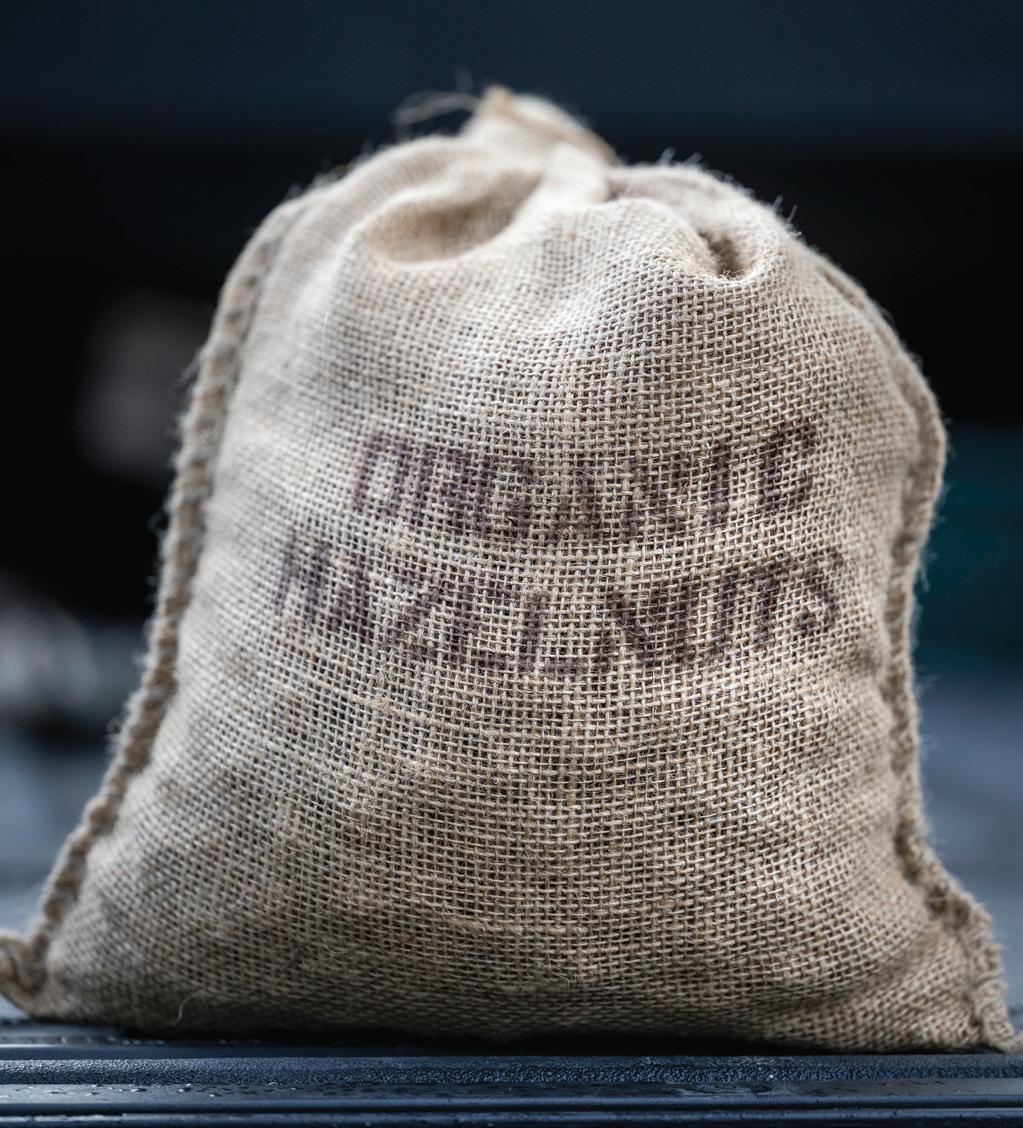



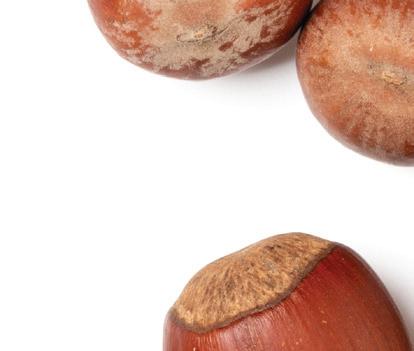






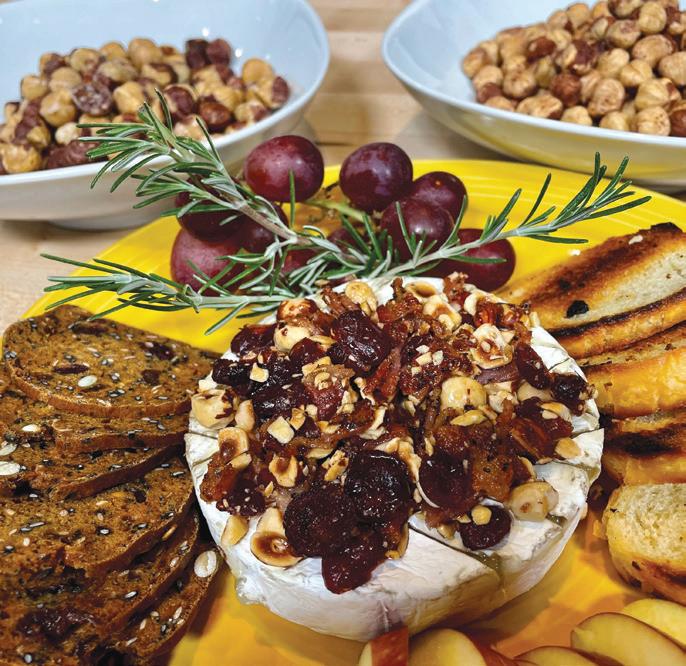
Hazelnut Baked Brie with Bacon, Dried Cranberries and Maple Syrup
Chef Leif Benson, Oregon’s
Culinary Ambassador
SERVES 4
• 8 ounces Brie
• ¼ cup hazelnuts, roasted and chopped
• 4 tablespoons crispy bacon, chopped
• 4 tablespoons dried cranberries
• 1 tablespoon maple syrup (or honey)
Preheat oven to 325 degrees.


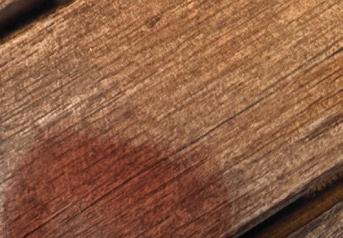



Hazelnut Loaf
Farmacopia Farms / SCIO
Shonda Warner
SERVES 4-6
• 2 tablespoons olive oil
• 1 medium sweet onion
• 4 cloves garlic
• 10 ounces mushrooms, chopped
• 1 cup black or wild rice
• 1 cup co age cheese
• 3 cups ground hazelnuts
• 4 eggs, beaten
• 1 tablespoon sage
• 1 teaspoon marjoram
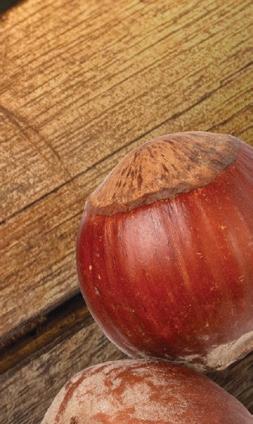



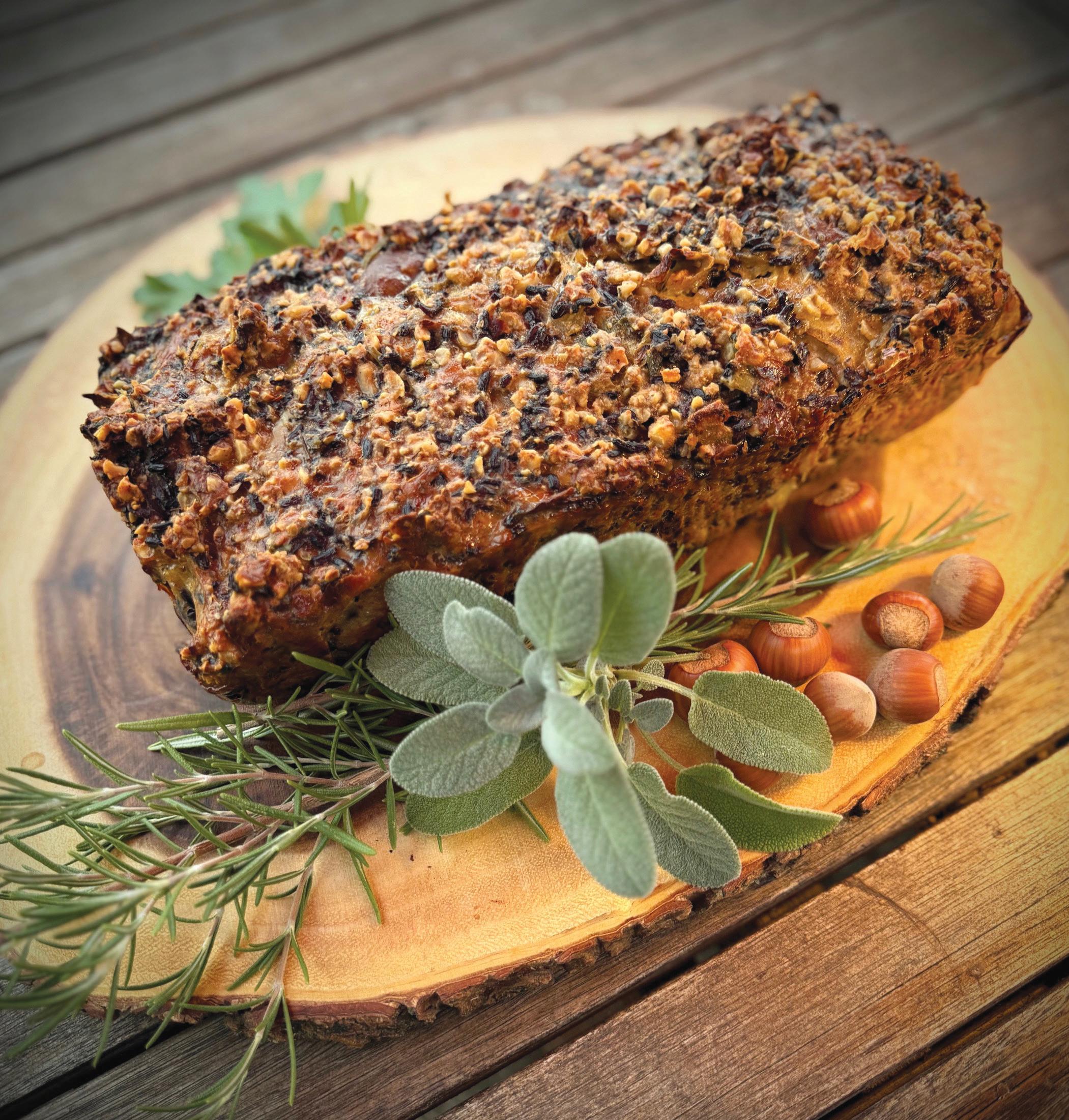


• 10 ounces Gruyère cheese
• Salt and pepper, to taste
Preheat oven to 375 degrees.
Sauté onions and garlic in olive oil. Add mushrooms, and cook for approximately 5 minutes.
Combine mixture with cooked black or wild rice, co age cheese, ground hazelnuts, eggs, cheese and spices.
Put the mixture into a loaf pan lined with parchment paper. Bake for 1 hour.

Score the top of the Brie rind with a knife. Place Brie in a baking dish, and top with mixed hazelnuts, bacon, dried cranberries and maple syrup or honey. Bake for 5 to 10 minutes, depending on how ripe the Brie is and how so you would like the finished product.
Serve with toasted crostini, crackers or apple slices.
Farmer Filbert’s Hazelnut Schmear
Farmacopia Farms / SCIO
Shonda Warner
SERVES 8
• 1 pound roasted hazelnuts
• ¼ cup maple syrup
• 1 teaspoon coconut oil
• ¼ cup dried cherries
• ¼ cup dried blueberries
Crush hazelnuts in a food processor (or blender) into a fine flour.
Add maple syrup and coconut oil, and blend for 3-5 minutes, watching to make sure the machine doesn’t overheat.
Once the schmear is to your desired consistency, add the dried fruit, and give it a few final pulses to finish it o . Enjoy on toast or bananas, or by the spoonful!



written by or Erickson

YEARS AGO, while standing around a smoky fire pit in the Willamette Valley with a couple of chef and butcher friends, we got into it—a heated debate over the perfect holiday ham. One argued for the rustic charm of country ham, aged and cured like an Appalachian heirloom. The other, a devotee of European traditions, sang the praises of jamón ibérico, that nutty, air-dried marvel from Spain. I kept my poker face—then calmly played the city ham card.
You see, while country ham and dry-cured European hams get all the gourmet glory, there’s something timeless and deeply comforting about a city ham—especially during the holidays.
What’s the difference?
A city ham is wet-cured, often brined or injected with a seasoned solution of water, salt, sugar and sodium nitrite. It’s typically sold fully cooked or smoked, and sometimes spiral-sliced for easy serving. It’s the ham most of us grew up with—the one carved on my auntie’s table with sweet potatoes on one side and a green bean casserole on the other. Country ham, by contrast, is drycured with salt and aged for months, sometimes over a year. It’s intensely salty, requires soaking before cooking and has a dense, chewy texture—more akin to prosciutto than the plump, juicy ham you find at a holiday buffet.
Then there’s European-style hams, like Italy’s prosciutto or Spain’s jamón serrano. These are uncooked, air-dried and served in thin, melt-in-your-mouth
slices. Delicious, yes, but not exactly what you picture carving at the end of the table.
That’s where city ham shines. When it comes to the holidays, when cooks have their hands full preparing many dishes to be ready at the same time, city ham is your best friend. Why? It’s fully cooked. It’s forgiving. And with a good glaze (think mustard, brown sugar and a splash of Oregon pinot noir), it transforms into something both nostalgic and spectacular.
Last year, I served a city ham at a company holiday potluck. I rubbed it with ground fennel seed, dry mustard and ginger; slathered it with a glaze made from Oregon honey, brown sugar and pinot noir; and slow-roasted it until the edges caramelized just enough to bring everyone to the kitchen asking what smelled so delicious. Folks who claimed to hate ham came back for seconds. Someone even asked if it was “artisanal.” I just laughed and said, “Nope.” And started singing “Fool for the City” by Foghat.
Don’t forget the leftovers. City ham slices easily and fits perfectly into sandwiches, omelets or—my favorite—a post-holiday mac and cheese that’ll knock your wool socks off.
So, while I love a paper-thin slice of prosciutto or a sliver of country ham with a biscuit, when it’s time to feed a crowd, fill bellies and warm hearts, nothing beats a well-cooked city ham. It’s honest, hearty and ready for whatever your holiday throws its way.
When it comes to the holidays, city ham is your best friend. Why? It’s fully cooked. It’s forgiving. And with a good glaze (think mustard, brown sugar and a splash of Oregon pinot noir), it transforms into something both nostalgic and spectacular.
Thor’s Holiday City Ham with Fennel-Ginger Rub and Pinot Noir Glaze
FOR THE HAM
• 1 fully cooked bone-in city ham (8-10 lbs) (If you want to buy a smaller ham, get the “shank end”)
• 1 tablespoon fennel seeds
• 2 teaspoons dry powdered ginger
• 1 teaspoon dry mustard powder
• 1 teaspoon paprika
• 1 tablespoon kosher salt
• 1 teaspoon cracked black pepper
FOR THE GLAZE
• 1 cup Oregon pinot noir
• ½ cup honey
• ½ cup light brown sugar
• 1 tablespoon Dijon mustard
• 1 pinch ground cloves
Preheat your oven to 325 degrees. Remove ham from packaging, and pat it dry with paper towels. If it’s got a rind or thick fat cap, score it in a diamond pattern—not too deep, just enough to let the flavor in.
Toast the fennel seeds in a dry skillet over medium heat until fragrant (about 1-2 minutes). Let them cool slightly, and then crush them using a mortar and pestle or a spice grinder. Mix with ginger, mustard powder, paprika, salt and pepper to form a rub.
Massage the spice rub mixture all over the ham—get into those score marks. Place the ham on a rack in a roasting pan, cut side down, and tent loosely with foil.
Roast for about 1½ to 2 hours, or until the internal temperature reaches around 120 degrees. (Remember, it’s already cooked—we’re just heating it up.)
While the ham roasts, combine the pinot noir, honey, brown sugar, Dijon and cloves in a saucepan. Simmer over medium heat, stirring occasionally, until thickened and syrupy—about 10-15 minutes.
Remove the foil, and brush the ham generously with glaze. Return to the oven, uncovered, and baste every 10-15 minutes for the next 30-40 minutes, or until the ham is glossy and caramelized.
Let the ham rest for at least 15 minutes before carving. Serve warm with extra glaze drizzled over the top.


Interior Designer Holly Freres of JHL Design in Portland takes us through three creative bathroom designs
written by Melissa Dalton
WHEN IT COMES TO designing bathrooms, Holly Freres likes to sweat the small stu . “I love doing bathrooms,” said Freres, interior designer and principal at the Portland-based JHL Design. “There’s a lot of details that go into their design, whether it’s the lumens of the vanity sconces, the size of the drawers or the clearances.” She walks us through three notable projects, including her own home.



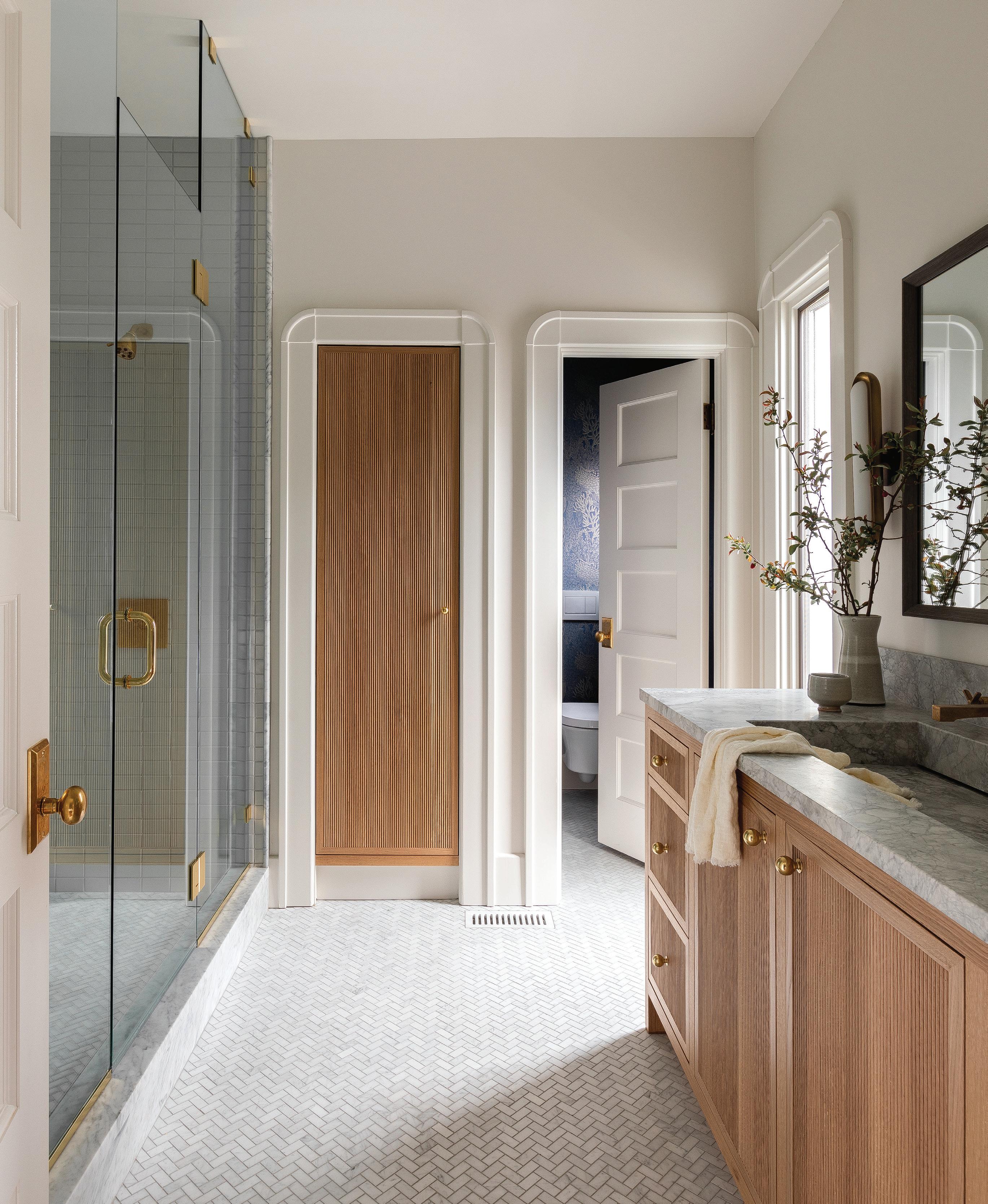

Old house owners often love the historic details in their homes, but not the outdated function. Such was the case for this primary bathroom in this 1902 home in Portland’s Willamette Heights neighborhood. “Like a lot of old homes, all of the bathrooms were quite small,” said Freres. The biggest challenge was to maintain the original footprint, while maximizing sought-after modern amenities.
Freres started by fine-tuning the layout, designing a vanity to be a touch more narrow in its depth for better floor clearance between it and the walk-in shower across. The stone counter has a single, linear integrated trough sink, with
two wall-mounted faucets, rather than two separate basins. “That’s a great space saver,” said Freres. “Because two people can easily use the same sink area, and still have a nice amount of countertop.”
With the layout so dialed, Freres even managed to fit in a separate water closet and linen storage, repeating the curved door trim found elsewhere in the home. Such traditional details are contrasted with modern touches, like the white oak millwork with fluted fronts and the shower’s stacked tile, to make for the ultimate refresh on a classic. The last piece is the natural brass hardware throughout. Although one of the owners wondered if the metal was too bright upon install, it has since acquired the perfect patina, fitting in just so with the rest of the old home.


When it came time to design her own primary bathroom in the Dunthorpe home that she shares with her husband, JHL Design principal David Horning, and their four children, Freres knew exactly what to plan for. “If you have kids, you know the hurry before going out the door for school,” said Freres. “The teeth brushing, the hair brushing and someone spilling something. I knew that my bathroom was going to be filled with a lot of bodies at certain parts of the day, so we wanted as much openness as we could get.”
The couple created a private patio just outside their en-suite and then installed floor-to-ceiling sliding glass doors to access it. Inside the doors, Freres placed a smaller, sculptural tub, which creates a focal point at the end of the room, but can be easily circumnavigated. Next, an airy open shower with double showerheads is behind a demising wall, itself with a bench seat for propping a leg while shaving, or sitting and chatting while someone brushes their teeth.
The material palette emphasizes natural textures, combining durable porcelain tile with a wood and concrete effect, with a wood vanity, woven textiles and polished dark brown quartz at the counter. This puts the eye to the garden just outside, so when not in use by the family, the room becomes a serene sanctuary. “I’m a big outdoor shower person, so this really checked a lot of boxes for me,” said Freres. “I can open the doors most of the year and let in fresh air. It’s a nice way to begin my day.”
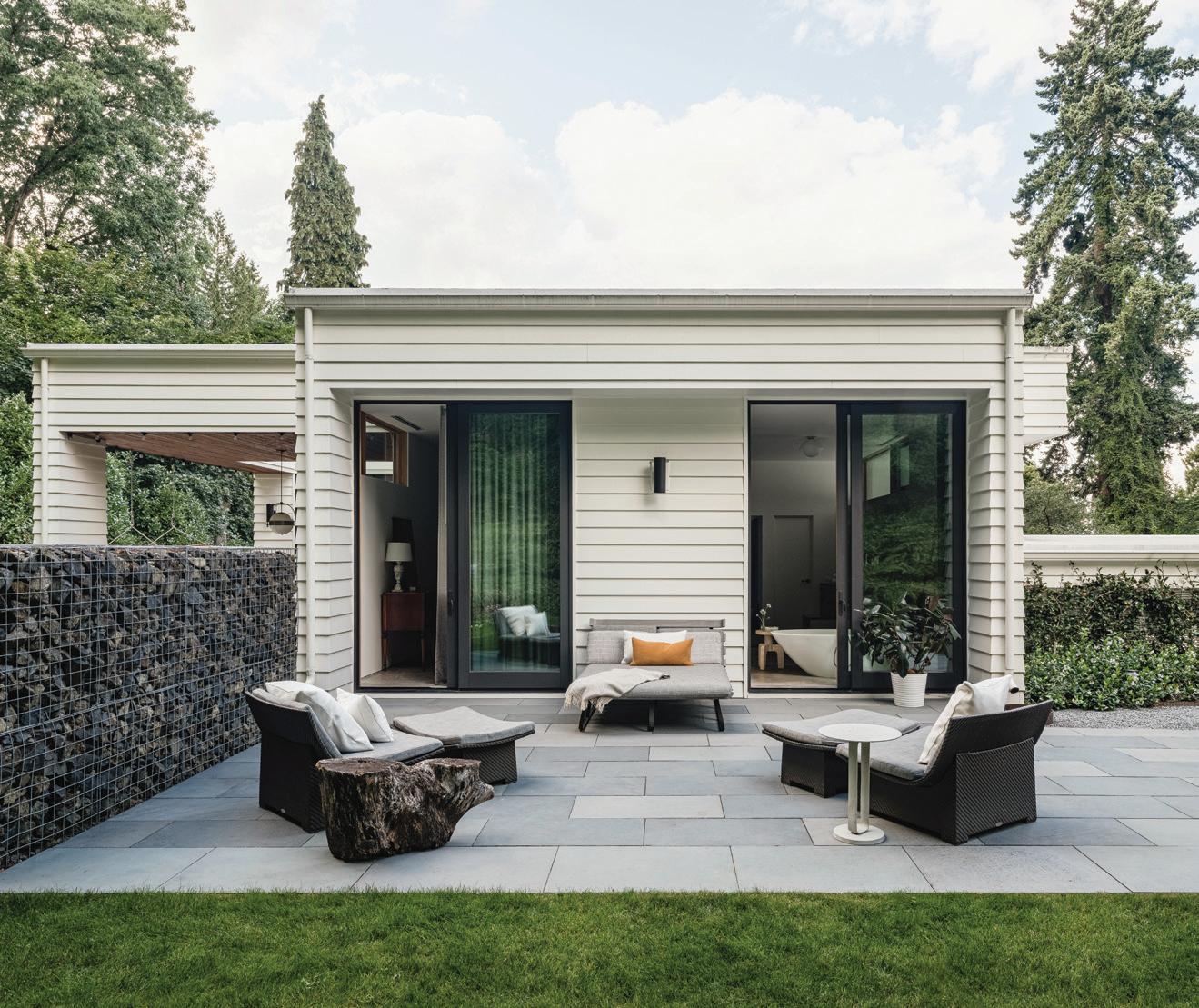

This project was all about infusing warmth and character into the hall bathroom of a 1930s Tudor home, via just right cosmetic fixes. Freres started with a traditional pedestal sink, “something that would have been original to the house,” she said, and then added abundant storage with a custom cabinet fit into an existing arched alcove. Deep indigo wainscot around the rest of the room makes the cabinetry appear seamless.
A slipper tub makes for a pretty vignette in one corner, while the shower received a complete tile wrap from floor to coved ceiling. “We needed to lighten up the shower quite a bit because there was no natural light coming in there and it has a lower ceiling,” said Freres. “So, we used a lighter blush handmade tile that was cheerful and welcoming, so you didn’t feel like you were walking into too dark of a space.”
Traditional touches, like the slipper tub, penny floor tile and marble counter, finish the look, as does artisanal wallpaper above the wainscot. “That’s a really beautiful floral, small patterned paper that I thought lent itself to the era and history of the home,” said Freres. “We really wanted to create something moody that was also cozy. A place where it felt like you could just go in and have a long soak.”
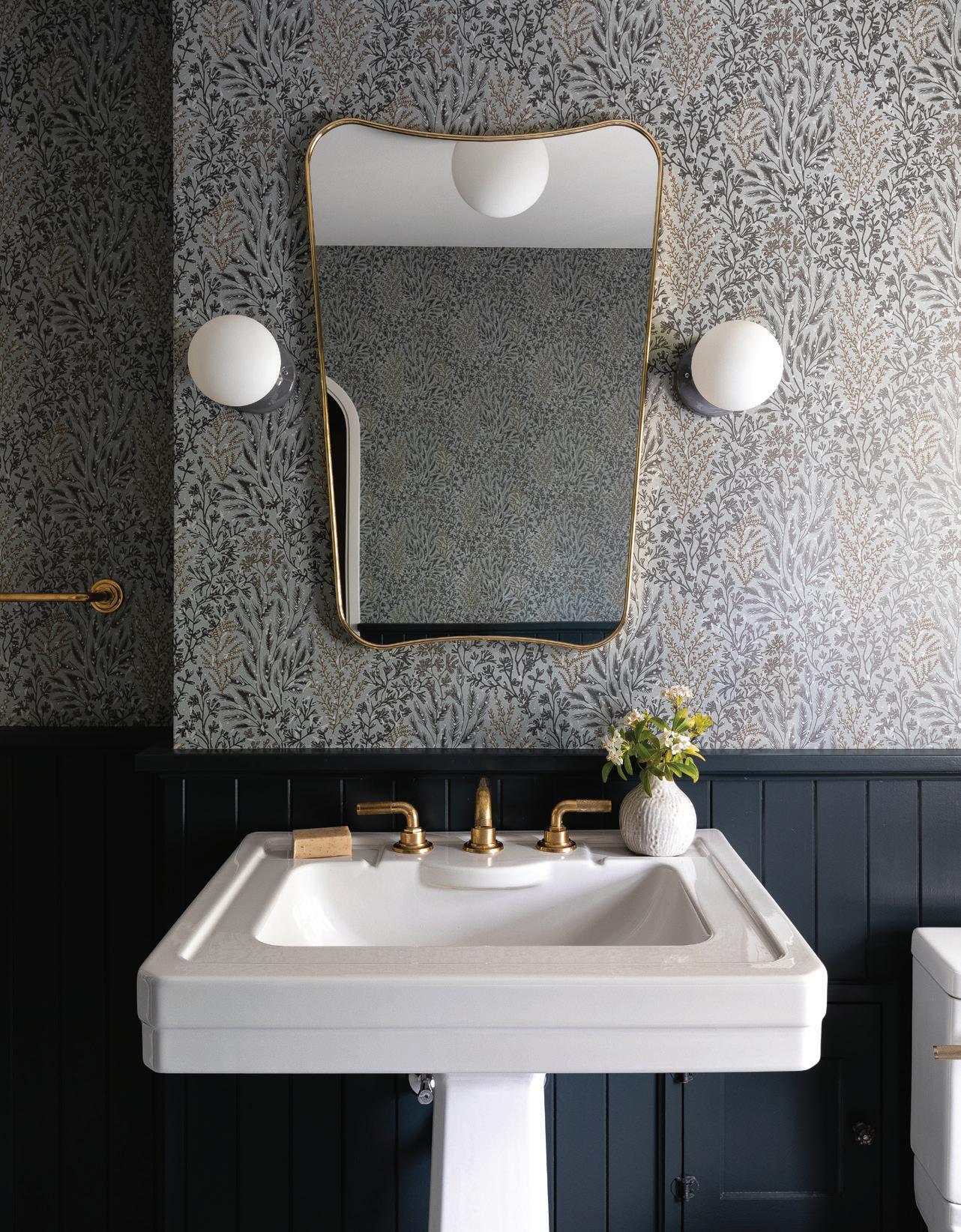

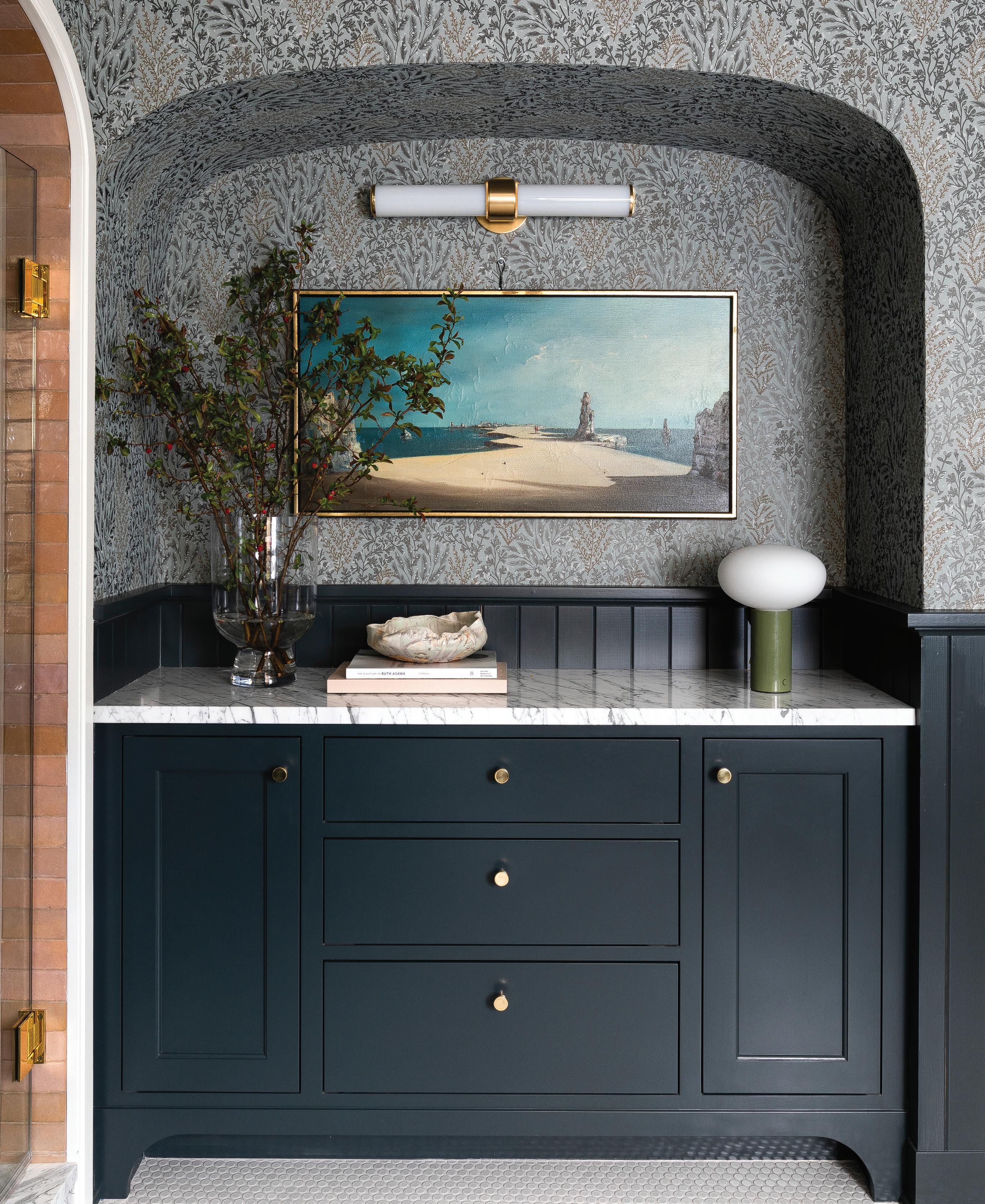

Try out this fun weekend project to add dimension to plain drywall.


Start by taking measurements of the chosen wall to ascertain the available space for the picture molding boxes. Identify places on the wall where the picture molding can’t go, such as electrical outlets, light switches, baseboard and window or door frames. Sketch this elevation to scale, either on paper or in digital so ware.
This is potentially the most difficult part of the project—ge ing the number and proportions of
the picture molding boxes right! Think about the wall as a grid with rows and columns, and start sketching out possible layouts. While mapping this, keep in mind the key elements that will a ect the final look: repetition and asymmetry. An odd number of rows and columns will look best. When the layout is complete in 2D, use a pencil and a large level to transfer to the wall.
Choose a picture molding style that will sync with the architecture of
the existing space, and no bigger than ¾ inch. Starting with the top le corner box, measure twice, and cut once (using a miter saw). It’s important to get the 45-degree cuts right at the corners, so there’s no ugly gaps. But also, if there’s too tight of a join, the corners might warp. Cut each piece as you go, rather than cu ing the molding for all of the boxes at once.
A ach the top rail of the box first, making sure it’s perfectly level and lined up with the pre-drawn pencil marks on the wall. Use a nail gun, and nail an inch-and-a-half from each corner, so as to keep the corner joint from moving. Going any closer to the joint risks cracking the molding. Continue adding nails in equal increments down the length of the molding, aiming for studs. Double-check measurements and that all the corners are lined up as you add each side, and then the bo om rail of the box.
Note, since the picture molding is going over top drywall, it may not a ach to studs regularly. For extra security, consider adding a thin bead of glue to the underside before nailing.
While the goal is to get the picture molding as flush with the wall as possible, there will probably be gaps in some spots. Use a highquality wood filler to fill the nail holes, as well as any micro gaps at the joints. Let it dry, and then lightly sand the wood filler. (Don’t sand the picture molding and risk losing the pa ern.) Follow with paintable caulk for any spots where the frame and wall aren’t meeting perfectly. This will elevate the entire look.
Once the caulk is dry, prime and paint the entire wall for a seamless look.

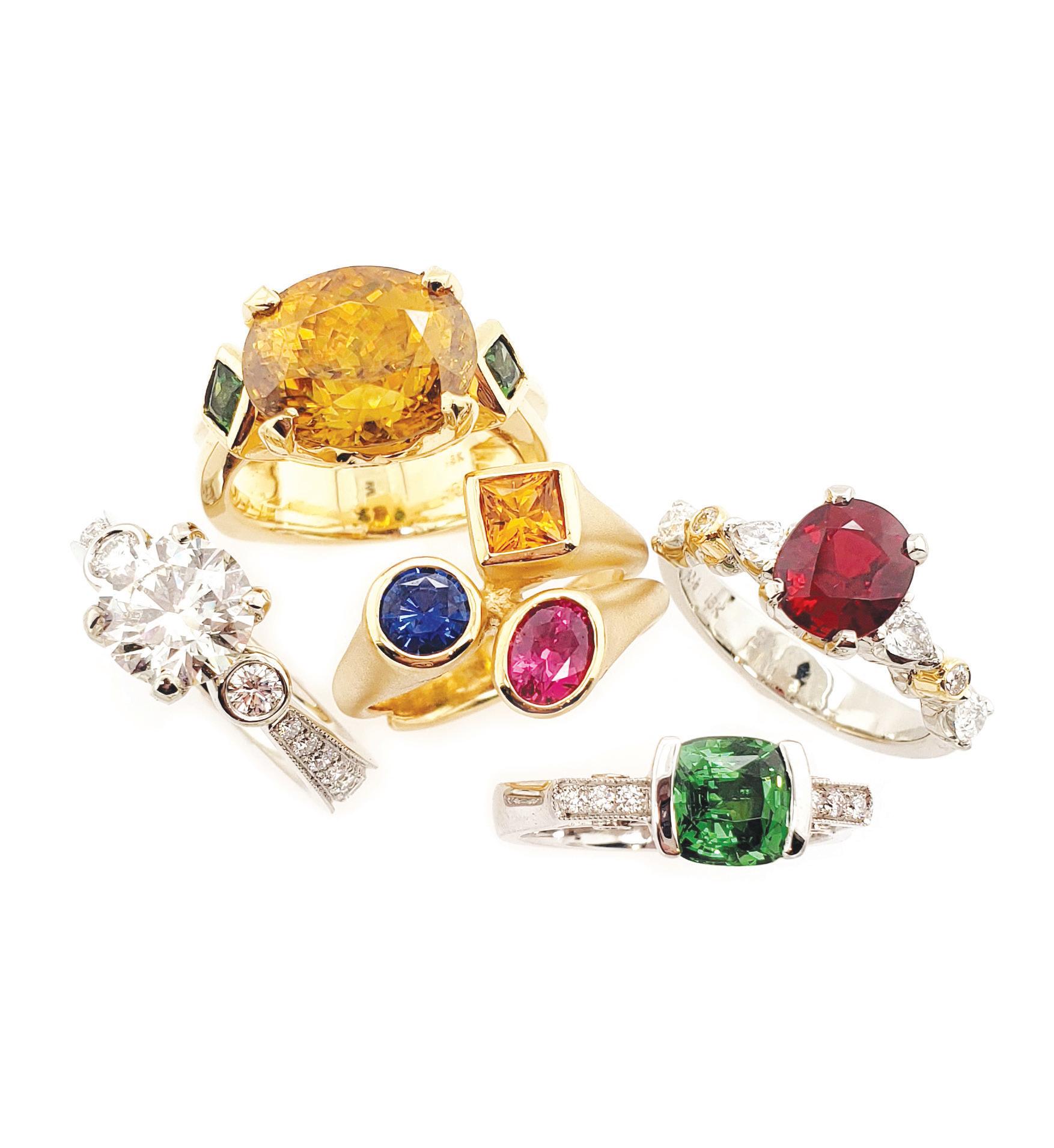


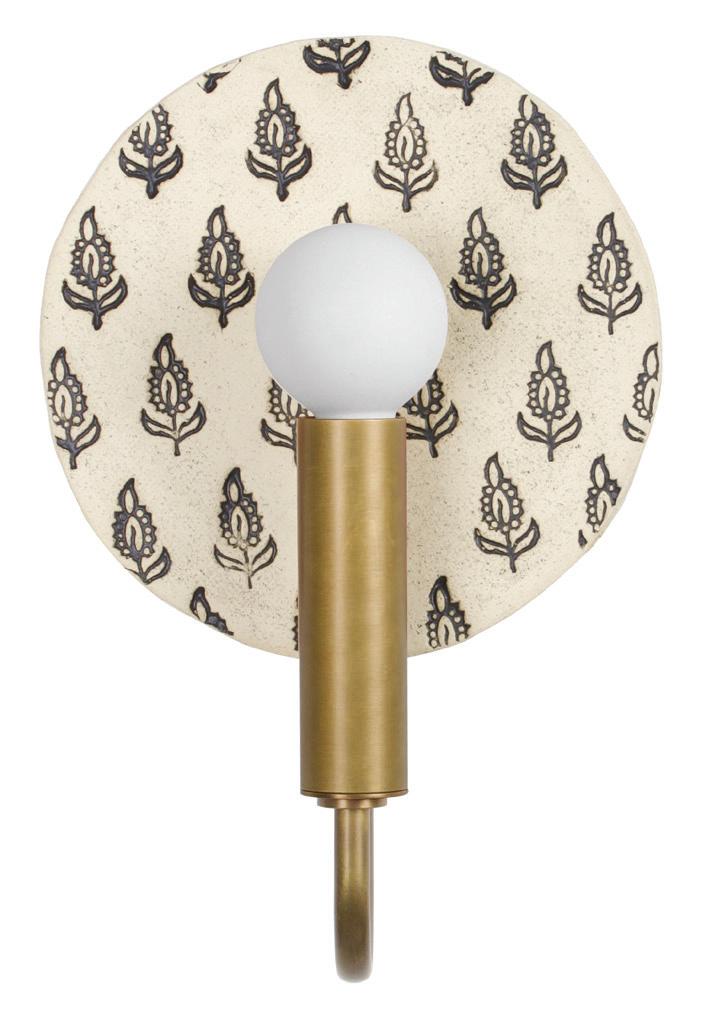
Cedar & Moss may have started with Mid-century Modern designs that fit founder Michelle Aaro’s Eichler-inspired home, but since opening in 2013, the studio has been debuting new classics ever since. Consider the Edith ADA—it’s a reinterpretation of a traditional candle sconce, with a handcrafted ceramic backplate available in an array of patterns.
www.cedarandmoss.com
e F.A. 33 Wall Mirror from Gubi was originally designed in 1933, but looks just as good today. e curving shape is perfect for breaking away from the traditional circles or rectangles of vanity mirrors, while it still has the gravitas of a classic.
www.gubi.com

What’s not to love about this large-scale mural that’s actually wallpaper? Printed on high-quality paper by York Wallcoverings, the design is a modern take on an antique Swedish tapestry. Just imagine it wrapping a powder room, or paste it to a big wall and put a frame around it, so it looks like you painted it yourself.
www.anthropologie.com



Over the past few years, the popularity of zellige tile, which is handmade terra-cotta tile traditionally from Morocco, has possibly replaced subway tile. Indeed, think of this 2x6 format from clé, called “bejmat,” as just that: a timetested version of subway tile that’s older by centuries.
www.cletile.com
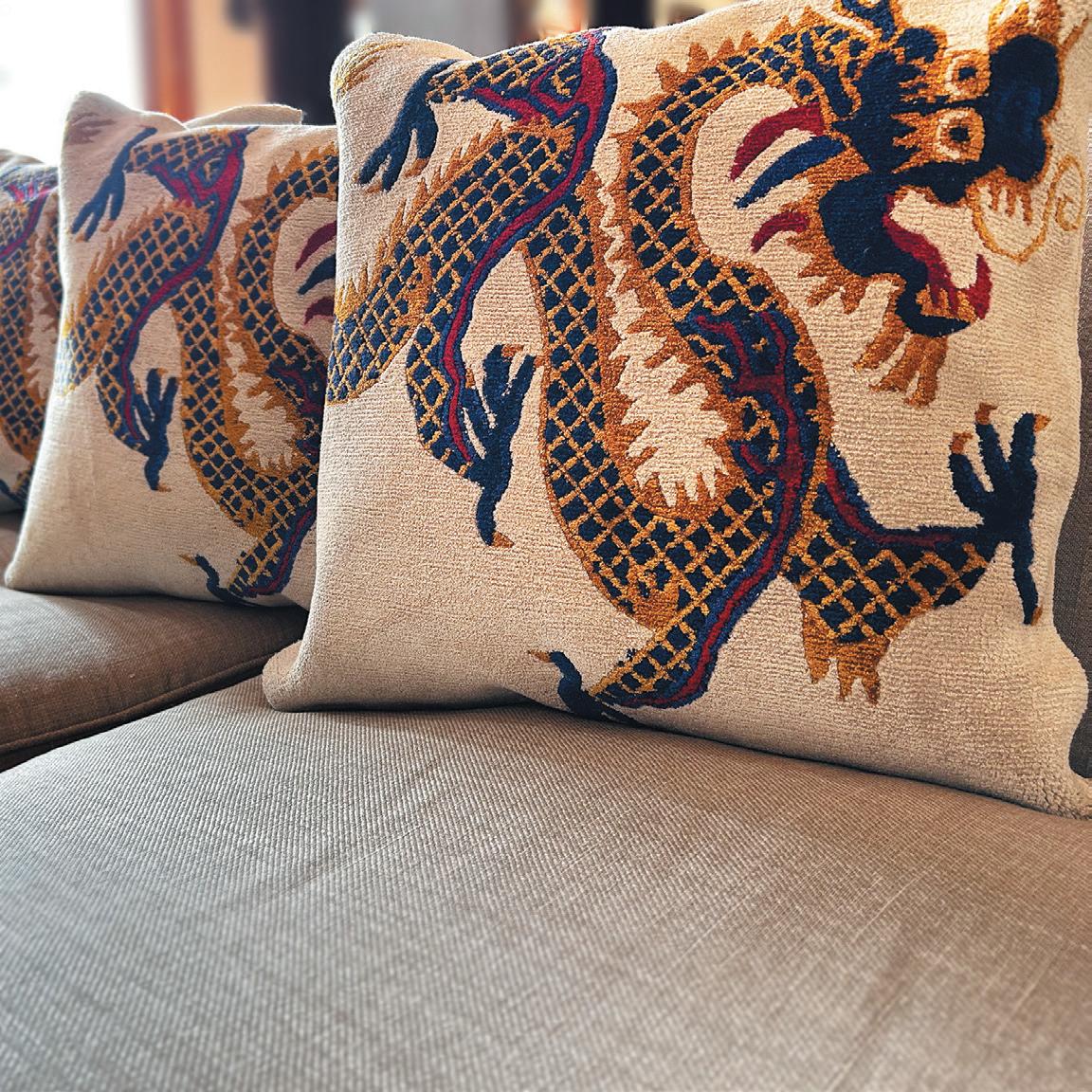













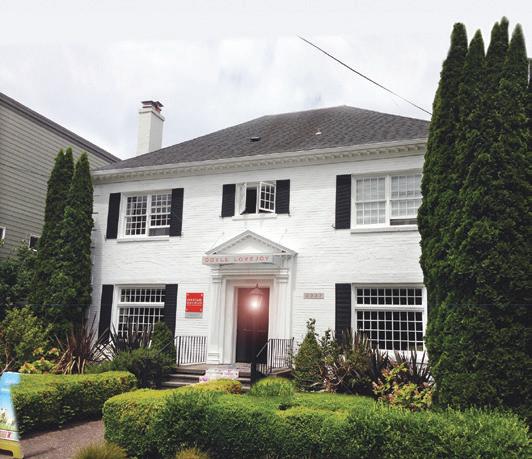

Japanese-born printmaker Yuji Hiratsuka makes art from both worlds
written and photographed by Daniel O’Neil
YUJI HIRATSUKA knows what he wants. Ever since high school in Japan, he has never doubted his intention to be a printmaker. Teaching and making art in the United States for the past forty years, he has followed his intuition in terms of technique and eclectic inspiration. As a result, his vivid, lively prints stand out from here to Tokyo.
Hiratsuka was born in Osaka, Japan, where he lived until attending art school in Tokyo. After that, graduate school stateside eventually led to becoming a professor of printmaking at Oregon State University in 1992, where he taught until retiring four years ago. Institutions including the Portland Art Museum, the British Museum, the Library of Congress and the Smithsonian’s Museum of Asian Art have acquired Hiratsuka’s work for their permanent collections.
With a life spent roughly half between Japan and Oregon, Hiratsuka’s art includes attributes from both cultures. Hiratsuka said he “intentionally makes an Asian flavor” in his work through the inclusion of flora like chrysanthemum and persimmon and patterns such as those found in Japanese textiles. Yet he also cites contemporary Western pop art and the Spanish painter Velázquez as influences. “I blend those, a kind of mismatch, but that’s my style,” he said.
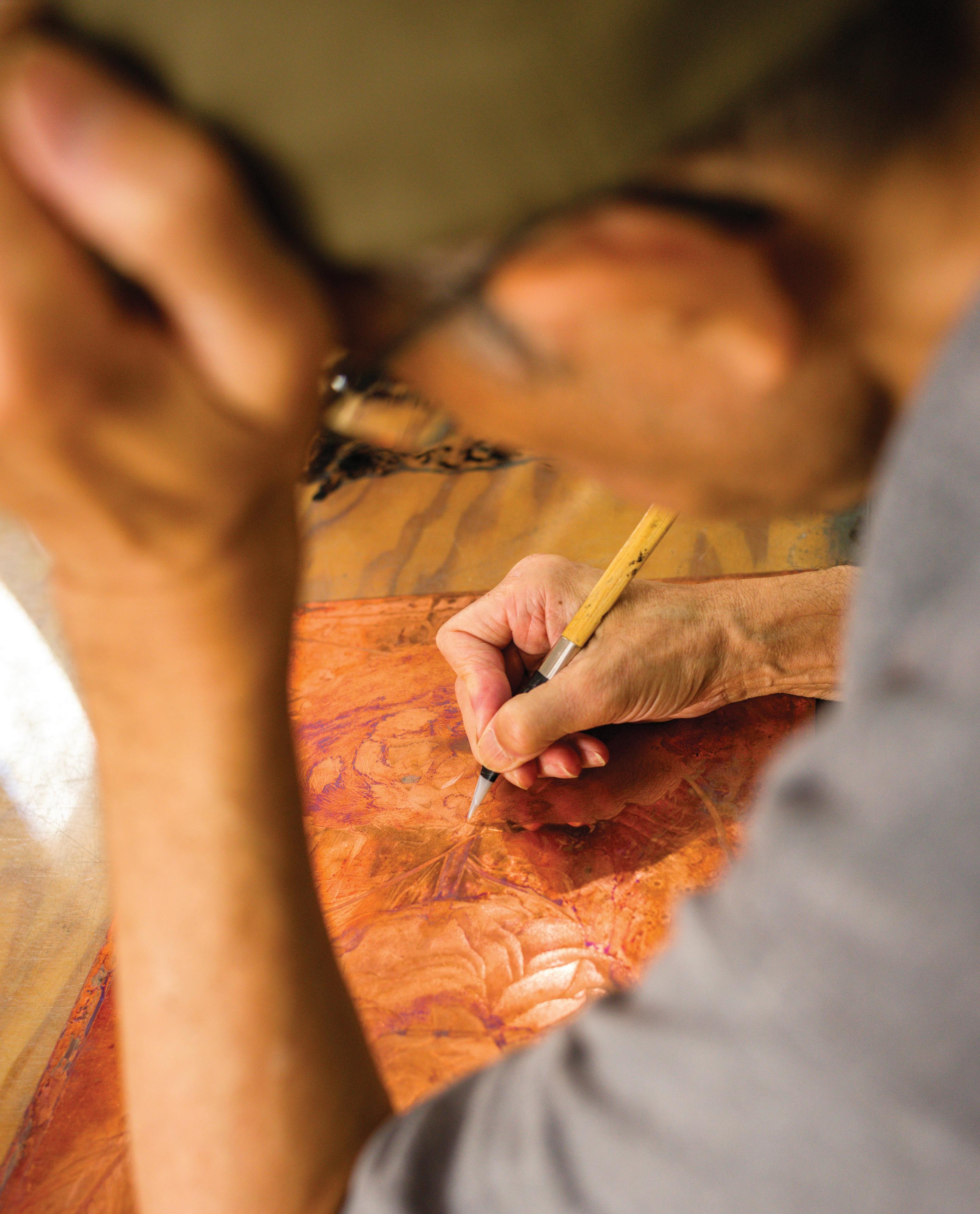

Two art forms from Japan, one old and one new, are readily visible in Hiratsuka’s work. Ukiyo-e, the traditional form of block printing employed by Hokusai and Hiroshige, impresses its woodblock techniques and aesthetic onto Hiratsuka’s own approach. Manga, the more modern graphic style of Japanese comics, itself inspired by ukiyo-e, resonates visually in Hiratsuka’s art. “Manga is caricature, those kind of exaggerated figures, bright figures, and it’s very two-dimensional,” he said, referring to similarities with his own art. “Also, it’s not particularly about realistic observations. It’s highly stylized.”
Hiratsuka’s choice of etching on copper plates, a European technique, but printing on thin Japanese kozo mulberry paper represents another of his idiosyncrasies. In fact, Hiratsuka’s entire method of printmaking is all his own. While most printmakers will etch a separate plate for each color layer, Hiratsuka does not. He begins with an image in his mind, etches the black layer, makes a run of prints (usually fifteen to twenty),
etches the yellow layer, prints it, and does the same with red and then blue. Primary colors stand alone or blend with others to make secondary colors.
By the end of this reductive process, Hiratsuka has the complete image etched onto the plate. Reproducing the print is now impossible. But in some instances he will instead mask certain areas of a plate so that he can creatively manipulate it to make different images, another technique found in traditional Japanese printmaking. In a similarly individual vein, Hiratsuka uses ingredients like soy sauce and Chinese mustard to prepare the copper plates for printing. Hiratsuka’s process allows him to produce about twelve pieces a year, and due to the drying time between printing layers, he’ll have several in the works at once.
As a teacher, Hiratsuka naturally encourages experimentation. A former student of his at OSU, Nicole Rawlins, who is now the visual arts coordinator for the Multnomah Arts



Center in Portland, where Hiratsuka still teaches classes, recalls the benefits of Hiratsuka’s trial-and-error approach. “It can be really intimidating to take a shiny piece of copper and start to make images on it, because it feels kind of permanent,” she said. “Yuji is bold in showing how to put images on, make corrections, play with the plates, and create dynamic imagery. He has a way of lightheartedly, with humor and encouragement, getting the students to plow through this really complicated process and produce work, and they love it.”
Unorthodox techniques fit Hiratsuka’s artistic vision. He likes working with figures, flashy colors, patterns and textures. He describes his prints as busy, cryptic, personal, apolitical, whimsical. “The people in my prints don’t often have any eyes, and that’s just to leave it to the viewer to decide,” Hiratsuka said. “They could be crying or laughing or closed, or like, ‘Oh, this looks like my sister or looks like my friend.’ I want to extend viewers’ imaginations, so I leave it a little bit vague.”
Through his work, Hiratsuka hopes people will appreciate the art of printmaking. He believes in the importance of viewing original prints firsthand, hence an upcoming retrospective exhibition at the Bush Barn Art Center in Salem next January and February. “When you see prints online, you say, ‘Nice work, okay, next,’” Hiratsuka said. “But when you see them in person, you get the detailed artist’s intention, why he did it.”
Making people happy and evoking a personal response are a few of Hiratsuka’s stated intentions. In his magical world of bold colors, of plants and fruits and mushrooms and birds and plentiful other objects from nature, and of characters that serve as mirrors, Hiratsuka achieves results that nourish the eyes and soul.
“You can see the joy in his work,” Rawlins said. “There’s some seriousness in the quality and the mastery in how he makes things, and maybe there’s a little bit of satire on darker themes at times, but there’s this overriding joy and exuberance and play.”


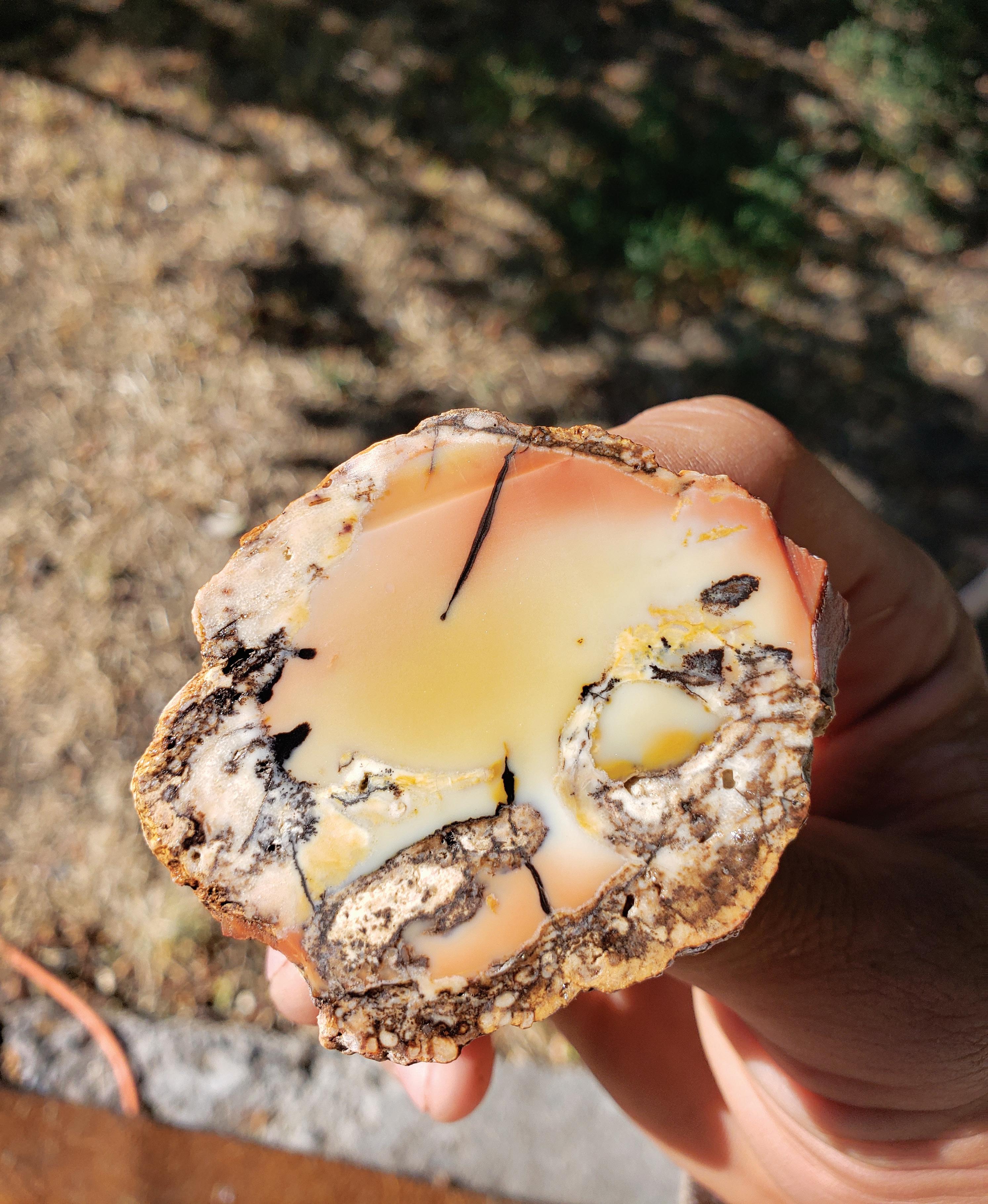
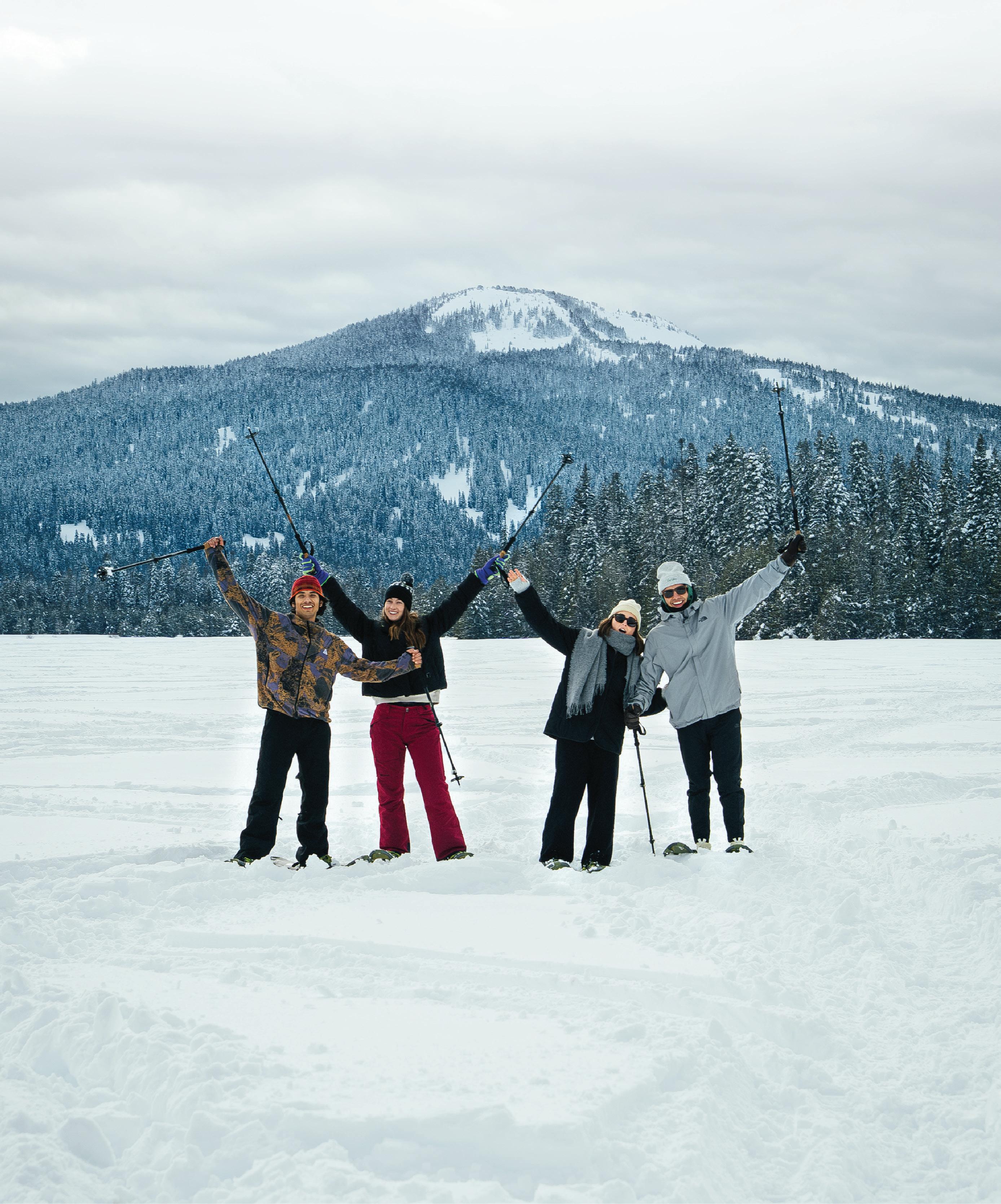
Bailey Lefever creates elegant jewelry from rare finds
written by Joni Kabana
For many, slow meandering through ancient landscapes full of various types of rocks is not just a pastime, but a passion. Discovering the tip of what turns out to be a beautiful rock brings a level of adrenaline rush that only a true rockhound can explain. Our state, especially on the eastern side, is chock-full of rocks of all kinds. From obsidian to thunder eggs, an abundance of rocks can easily be found if you know where and how to look for them.
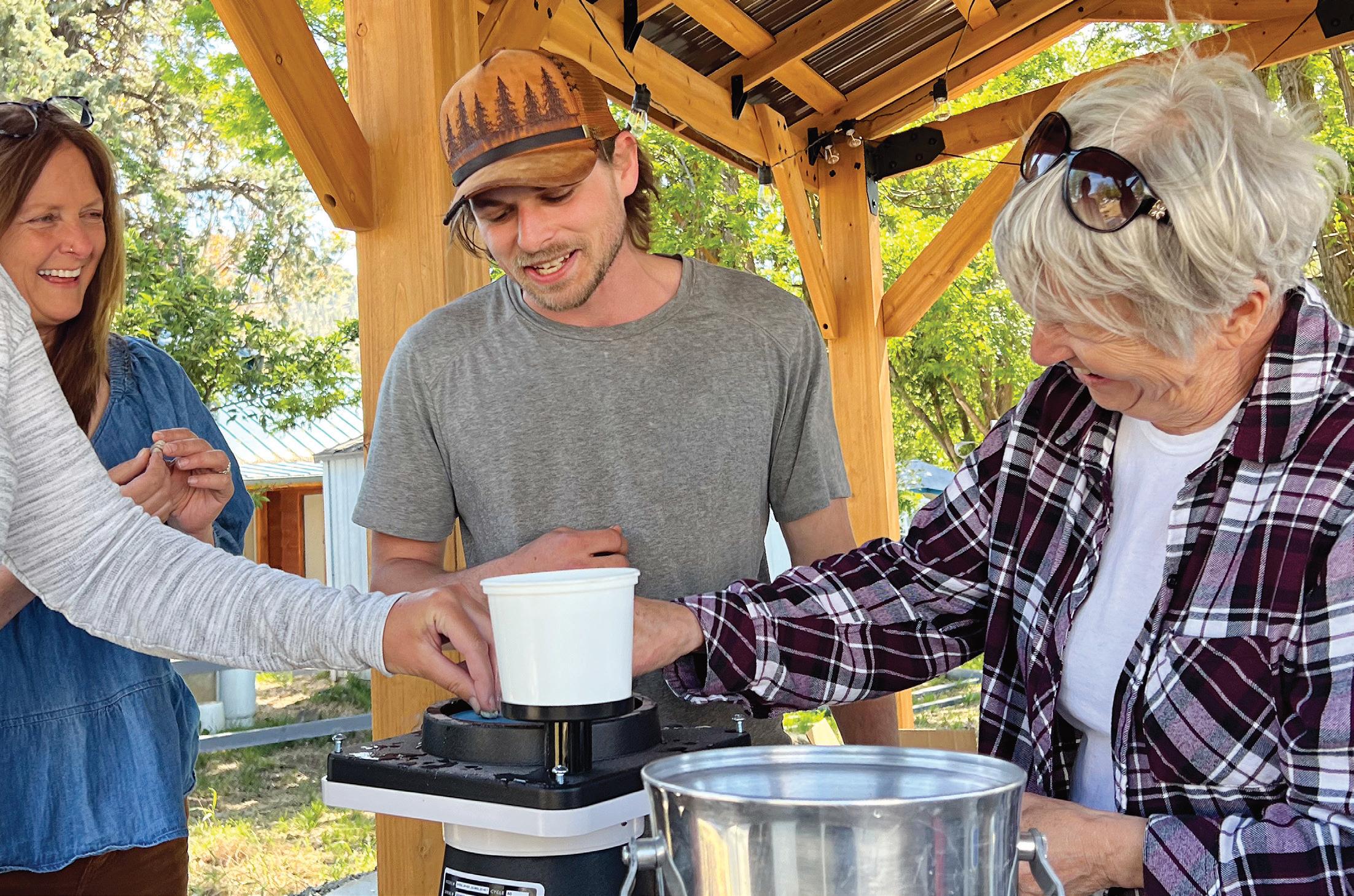

Bailey Lefever is one of the Pacific Northwest’s most prolific rockhounds, having a collection of more than 10,000 rocks and counting. He lives and breathes rockhounding and turns his treasures into jewelry, which he sells by referrals, at events and via his Instagram account (www.instagram.com/rockhounding_jewelry). For him, rockhounding is a way of life—he spends most of his free time scrounging areas for beautiful and rare rocks, and his excitement never fades.
“My fascination with rocks began subtly, like a whisper in the wind, during childhood explorations,” Lefever said. “I’d always been drawn to the textures and colors of stones, but it truly blossomed when I discovered the thrill of unearthing them myself. There’s an undeniable magic in finding a hidden gem, a piece of Earth’s history, with your own hands. What I love about rockhounding is the combination of adventure, discovery and the tangible reward of a beautiful specimen. It’s a treasure hunt, a geological detective story, and a connection to the ancient forces that shaped our planet.”
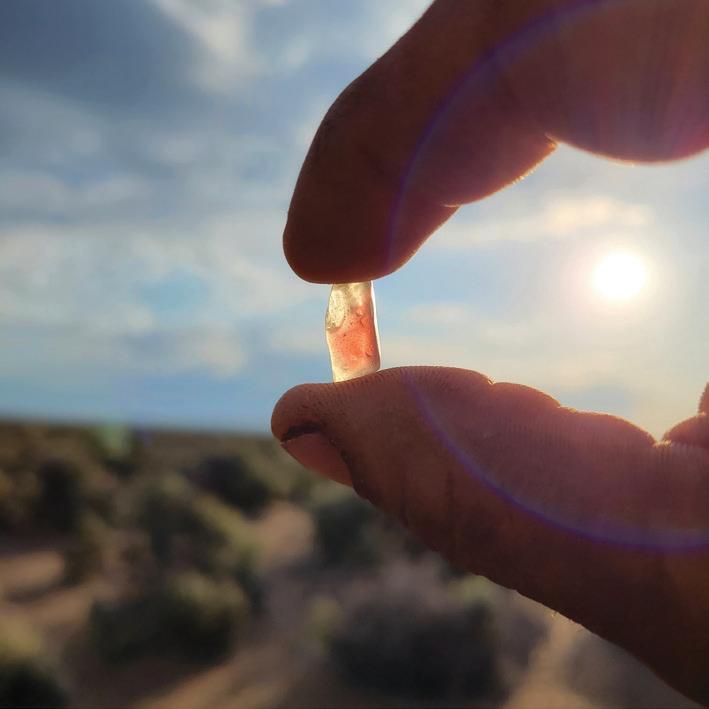
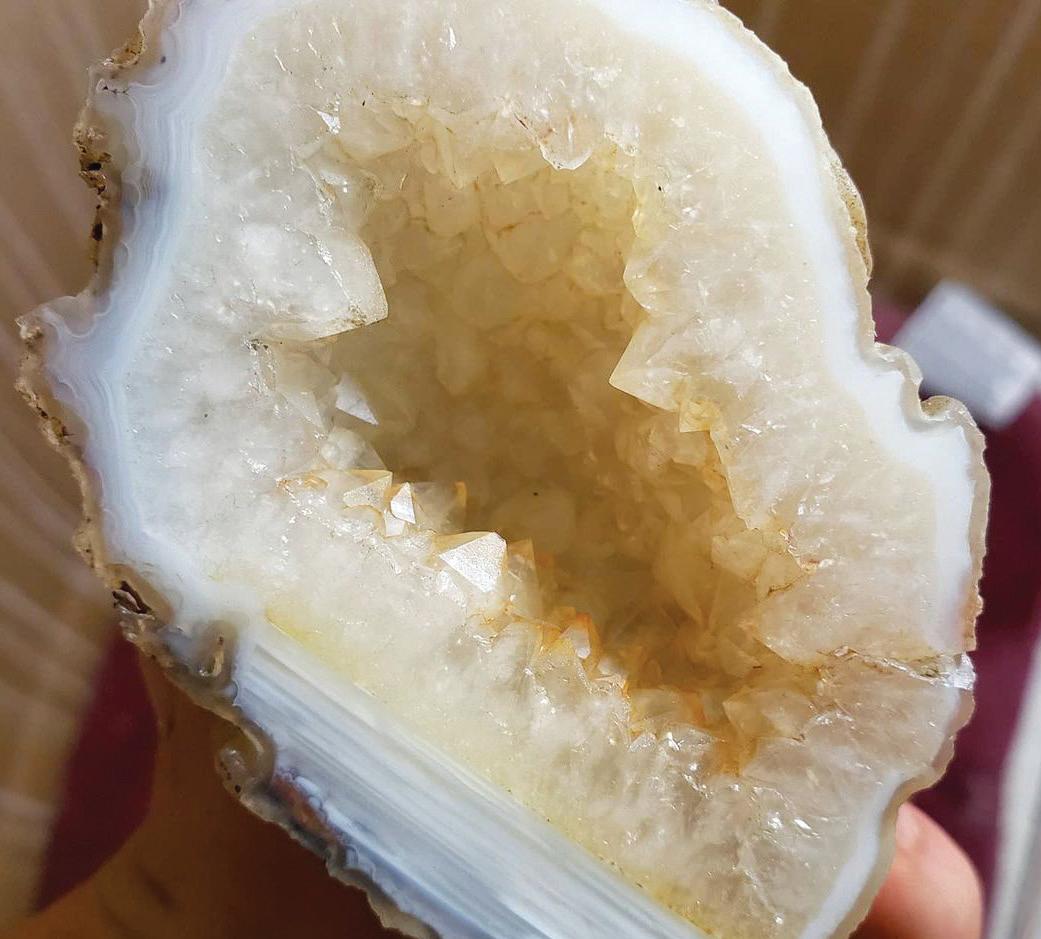

Of all of his creations, he is most fond of a recent pendant he made from a piece of agate found in Oregon. “The play of color in it is mesmerizing, and it feels like I’ve captured a tiny galaxy within a stone,” he said. Lefever teaches jewelry-making classes in addition to leading private excursions to some of his secret spots. “It is incredibly rewarding to see the spark of understanding and excitement in my students’ eyes as they transformed rough stones they found into wearable art,” he said. “I focus on the basics of using a lapidary machine for cabochon cu ing and then demonstrate various soldering techniques to create simple yet elegant jewelry pieces.”
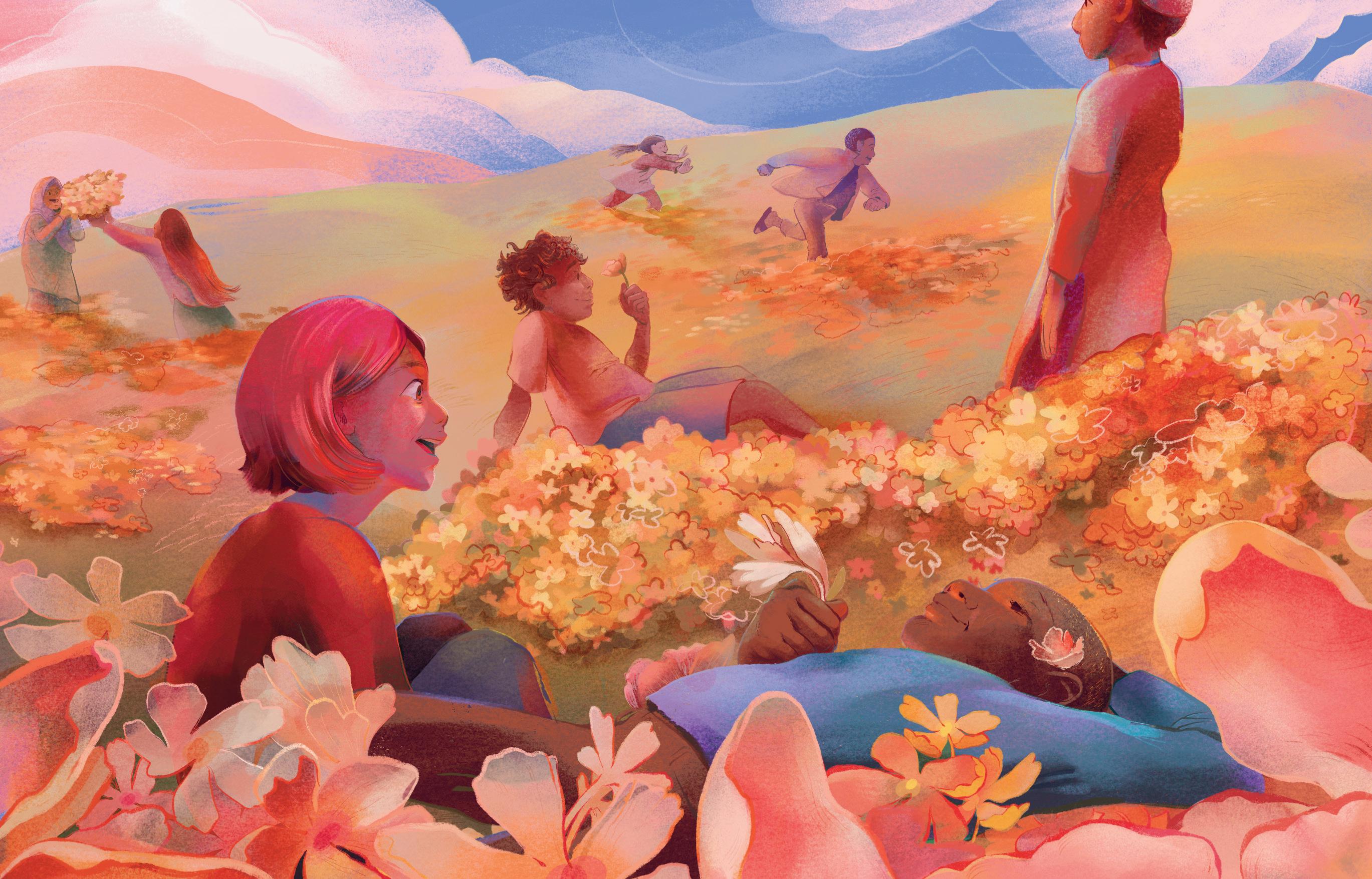
Despite a federal freeze, a Salem nonprofit helps refugees from across the globe find a foothold—and belonging
written
by James Sinks | illustration by Cate Andrews
WITH SIGNS, smiles and new coats, a festive celebration at Portland International Airport greeted a new Oregon family from far away. That day, a family of four escaping risk in Myanmar walked off a plane and was met by a throng from the nonprofit Salem for Refugees with coats for the cold Oregon winter.
Little did anyone suspect, but the January 17 welcoming event—coming on the eve of the inauguration of President Donald Trump—might have been the nonprofit’s last.
For a decade, Salem for Refugees has been helping people with legal federal refugee status to get settled, find housing and navigate the path to self-sufficiency in the mid-Willamette Valley. The nonprofit—which also runs Corvallis for Refugees—is one of six official refugee resettlement organizations in the state.
In that time span, the Salem charity has helped more than 2,000 people comprising 400 families, coming from conflict-torn places like Ukraine, Afghanistan, Syria and Ethiopia. Statewide, about 11,000 refugees have been resettled and live here, according to the Oregon Department of Human Services.
To be eligible for federal refugee status, you must apply and must be fleeing a country due to persecution, violence or war.
Resettling means much more than just arranging a place to stay, said Salem for Refugees executive director Luke Glaze, who grew up in nearby Keizer before embarking on a humanitarian career that took him to the Middle East and then back.
“If you were picked up today and dropped off in a country where you do not know anybody or speak the language, what would you need?” he said.








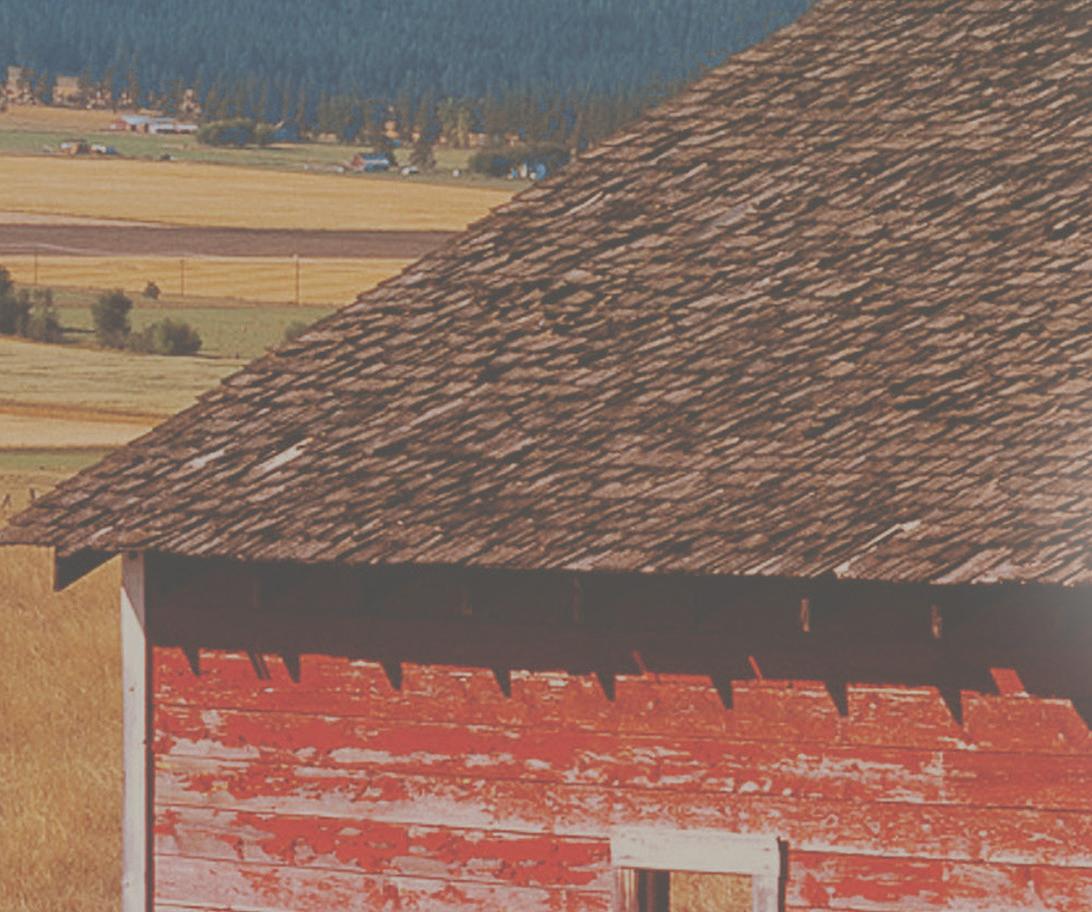

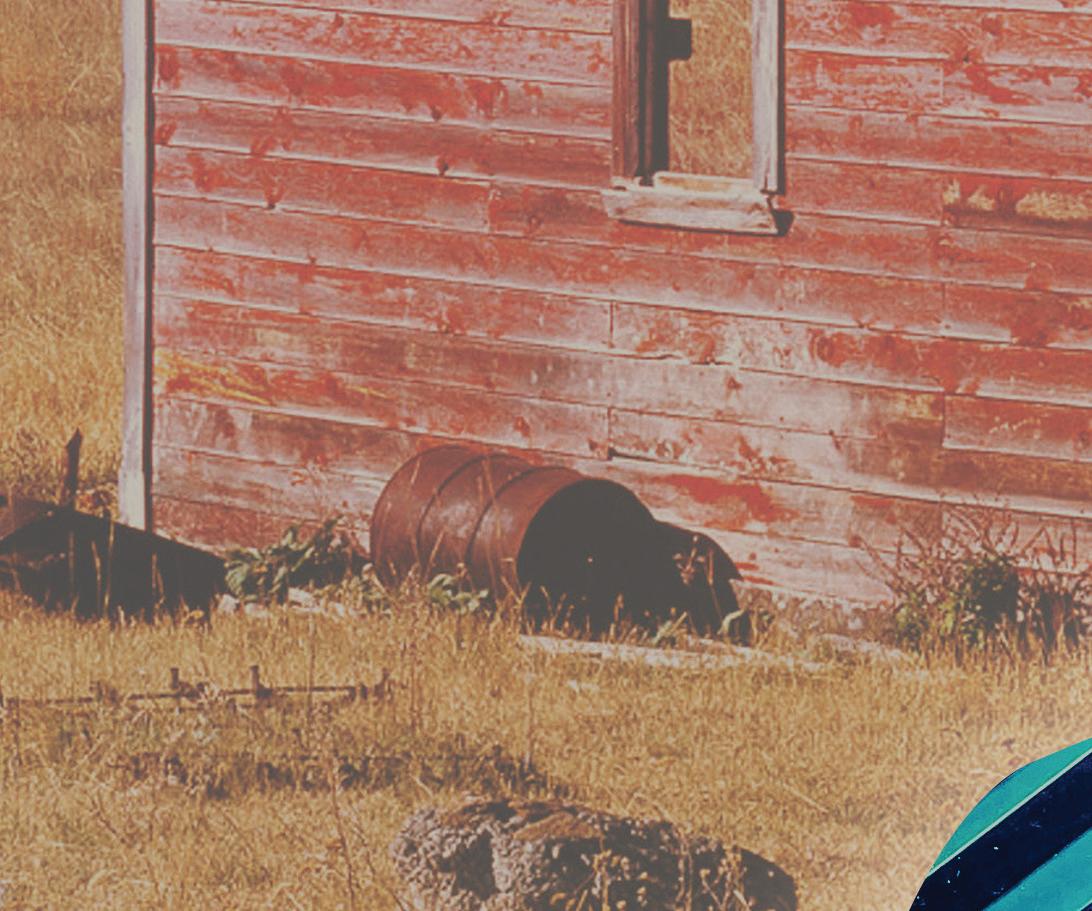







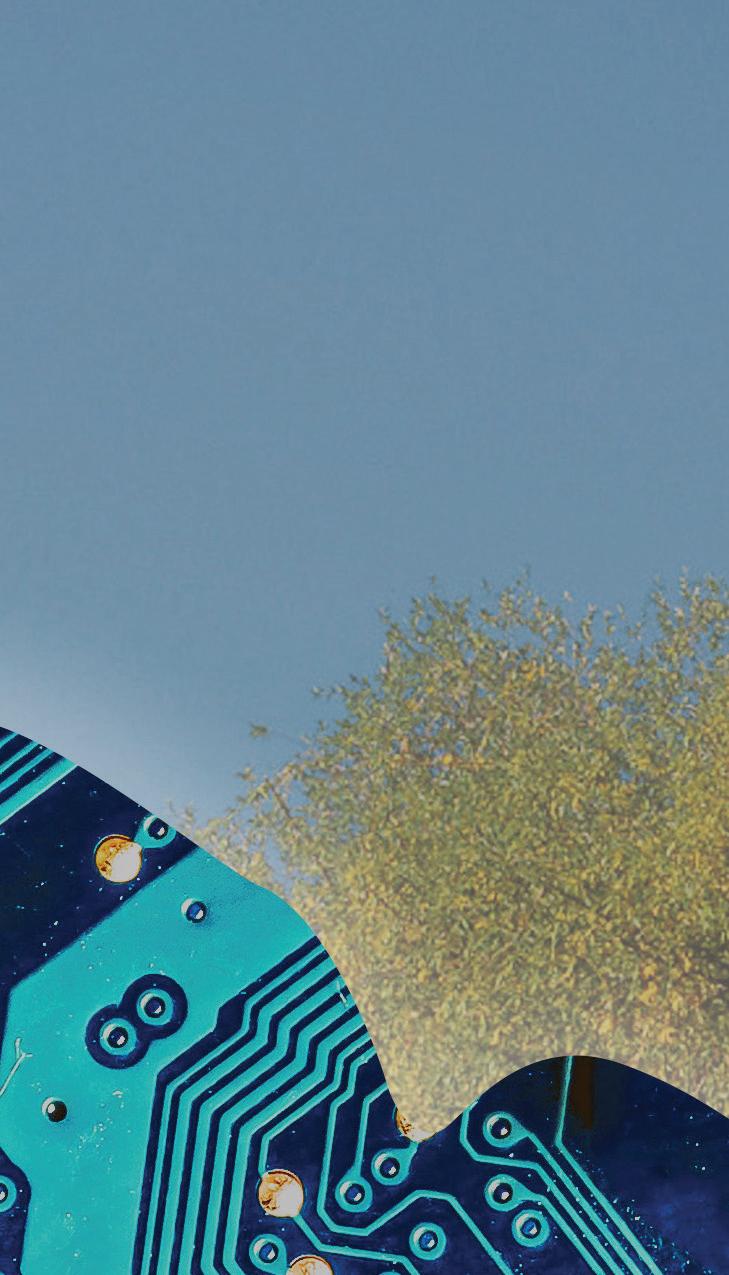



“If you were picked up today and dropped off in a country where you do not know anybody or speak the language, what would you need?”
— Luke Glaze, Salem for Refugees executive director, on the services provided by the nonprofit
The nonprofit’s staff of twenty-five helps new arrivals to land jobs, arrange transportation and get kids enrolled in schools and connected with child care. And, importantly, they help families develop ties to people in their new community.
One employee focuses exclusively on Salem’s Ukrainian refugee community, which numbers more than 400 people, Glaze said.
Funding previously came from the U.S. State Department, the State of Oregon and philanthropy from local churches and donors, such as during annual fundraising “Thrive” banquets scheduled in Corvallis and Salem each November.
But the federal funding—which is primarily dedicated to helping new arrivals in their first ninety days—is drying up in the wake of Trump administration decisions to ban travel from certain countries and to largely stop the approval of refugees.
The upshot: about a $1 million hit in funding thus far for a community organization that reported a $4.6 million budget in 2024.
“We downsized staffing by about 15 percent in April. Although funding seems stable for the coming fiscal year, the following years are more uncertain, as is the potential for any future refugee arrivals,” Glaze said.
Without new clients, the nonprofit is focused on continuing services it provides for refugees such as education counseling, housing services and job placement services—and also helping families build bonds and economic success stories.
Finding affordable housing will be easier thanks to a new affordable housing complex that opened this year in Northeast Salem, with several units dedicated to refugee families. However, a goal of Salem for Refugees is for families to not be concentrated in a single neighborhood and schools.
Refugees are more likely than American-born citizens to be entrepreneurs, according to the nonprofit American Immigration Council. Nationally in 2019, some 13 percent of refugees were entrepreneurs, compared to 11.7 percent of non-refugee immigrants and 9 percent of the U.S.-born population, it says.
In Salem and Corvallis, dozens of refugee families have launched businesses, such as delivery services and the popular Syrian Kitchen restaurant in downtown Salem’s Fork Forty food court.
A recently arrived family from Eritrea, who’d spent a decade in Israel, doesn’t speak English, but the father—a skilled
landscaper—was able to land a job at a local athletic club. They’ve purchased a car, and even joined the local YMCA.
Also, critically, the family was able to obtain specialized medical care for two daughters who suffer from diabetes. “There is nothing in this life more important than them and their health,” said the father, identified as Tadese.
Until a decade ago, refugees in Oregon were settled almost exclusively in the metro area, but with costs rising, charities looked south. Salem for Refugees was created through the work of three local religious organizations, but the nonprofit is not tied to any particular faith.
“Salem-Corvallis for Refugees and Catholic Community Services of Lane County have both been instrumental in expanding refugee resettlement beyond the Portland area,” said Jake Sunderland, spokesman for the Oregon Department of Human Services, which provides assistance to families outside of the initial work by the resettlement agencies.
The state’s program provides cash, medical, employment and acculturation services to refugees (and those eligible for refugee services) who are within sixty months of gaining their eligible immigration status, he said.
Federal funding cuts, however, will squeeze that capacity.
“Oregon is committed to welcoming refugees and helping them thrive in our communities,” Sunderland said. “We value the resilience and contributions of refugee families, and we will continue to work with our federal partners and local organizations to connect people with the resources and support they need.”
Glaze said the Salem and Keizer community has been generous and supportive of the resettlement efforts, regardless of individual political leanings. “Sometimes the rhetoric can seem bleak, but the actual experiences tend to be very supportive,” Glaze said.
At the same time, the political climate makes refugee families experience understandable uneasiness about how safe their status might be. “With ICE deportations taking place in our state, we now have legal populations being really afraid. The fear of being picked up in a raid creates incredible anxiety for our families.”
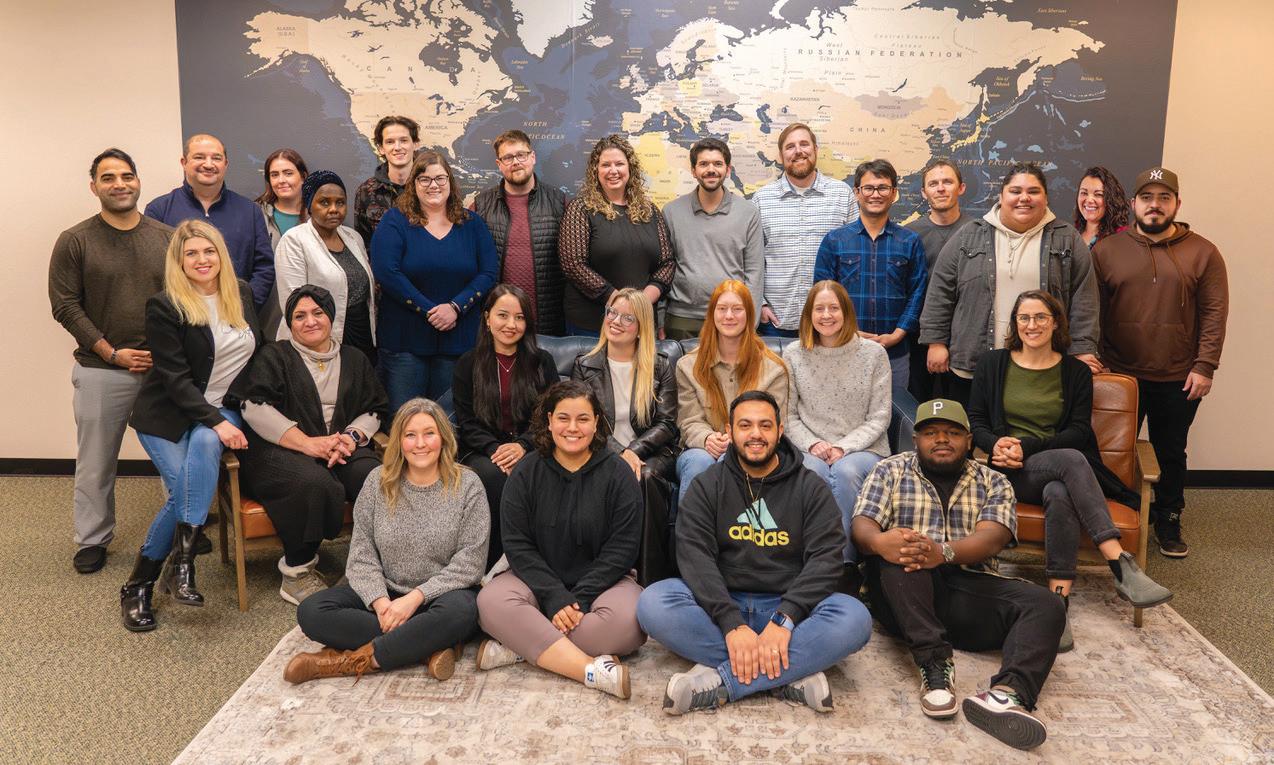







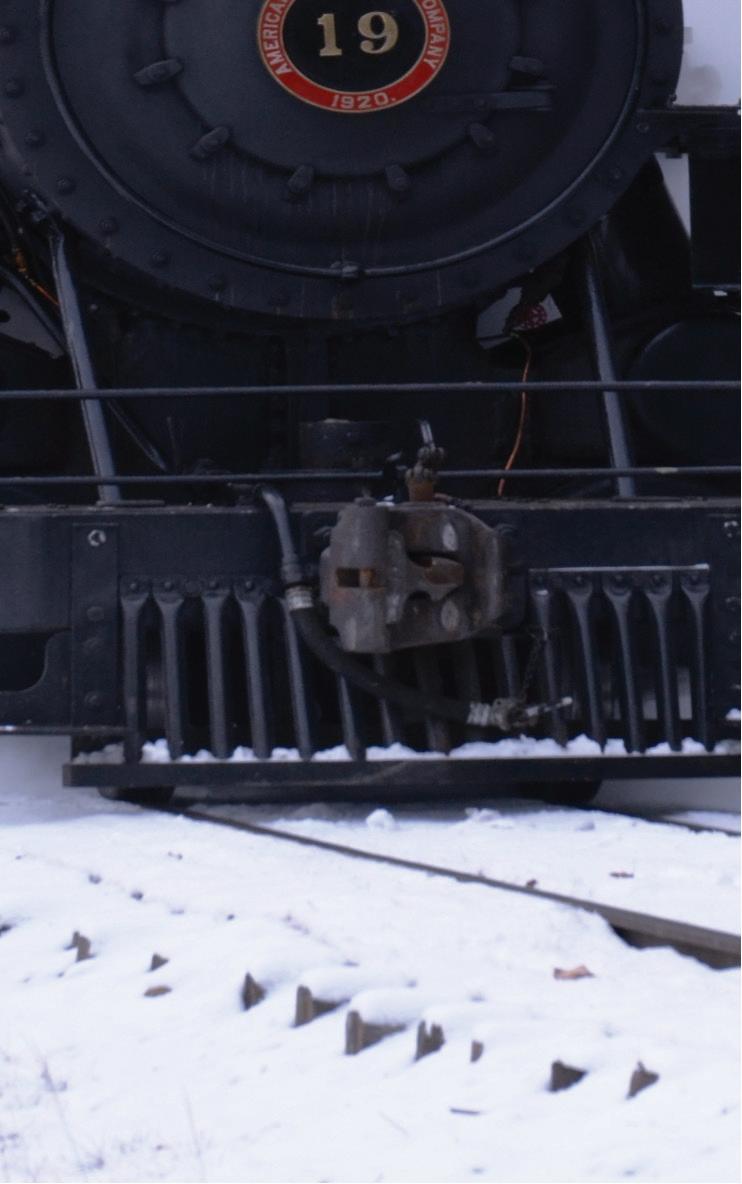
written by Jean Chen Smith
Have you noticed there is a special energy that rolls around when the holidays approach? Maybe it’s just me, but I relish the warmth of twinkling lights, the joy of festive gatherings and the comforting sense of togetherness that fills the air. It is a time of family get-togethers and creating heartfelt traditions and memories.
It is also a great time for traveling and exploring, being fully immersed in the holiday season. From snow-covered mountains to cozy coastal towns, our state offers a magical mix of holiday destinations that are perfect for families. Whether you are looking to embrace the winter chill or enjoy festive small-town charm, here are some of the best family-friendly spots to spend your holidays in the state.

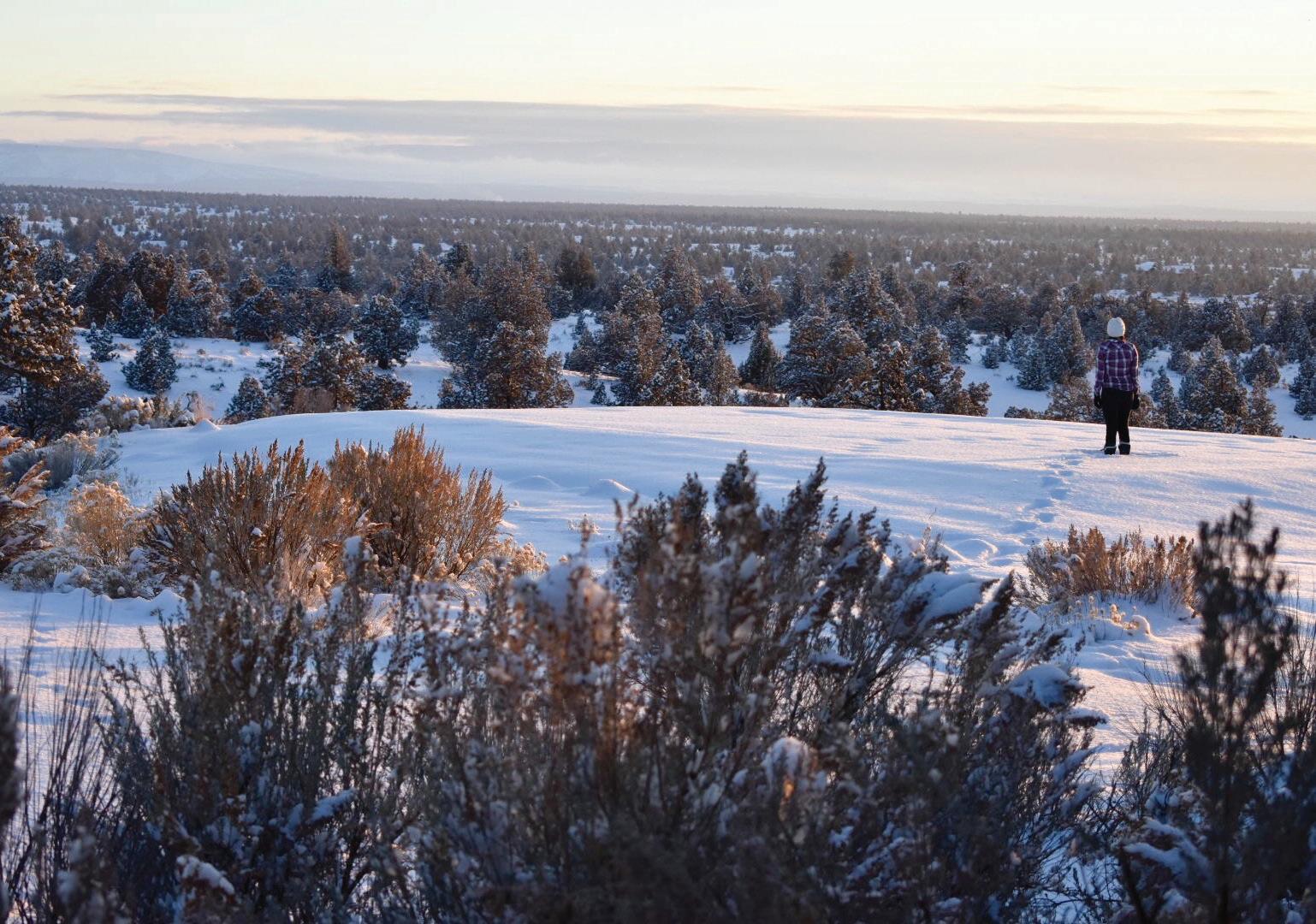
Tucked into the high desert hills of Powell Butte, Brasada Ranch offers a family-friendly holiday experience that blends outdoor activities, cozy accommodations and festive events perfect for creating lasting memories together. With the majestic high desert landscape as a backdrop, the ranch offers a range of spacious accommodations designed for family comfort. e thoughtfully designed Sage Canyon Cabins provide privacy and convenience, with full kitchens, cozy fireplaces and private hot tubs. Larger groups will appreciate the multibedroom layouts that allow for togetherness without feeling crowded. At the ranch, there is plenty to keep every family member entertained. Activities include swimming, biking, horseback riding, fishing, archery, crafts, hiking and a rotating calendar of special holiday activities. e property’s eighteen-hole championship course is open year-round, so even on winter days, it is possible to tee off under blue
skies in the afternoon. While occasional snow may briefly pause play, the course’s elevation and climate make winter golf not just possible, but also surprisingly enjoyable.
e winter can also bring on some chilly weather, so for some indoor fun, the Athletic Center is a hit. Kids can burn off energy in the indoor pool or on the sport courts, while adults can sneak in a quick workout or a rejuvenating treatment at Spa Brasada, where seasonal massages and facials draw inspiration from the surrounding landscape.
And, of course, no holiday is complete without good food. e Ranch House serves elevated comfort food that is both locally sourced and familyapproved. ink rosemary roasted chicken, warm apple crisps and handcrafted cocktails for the grown-ups. Many families even choose to spend Christmas or New Year’s Eve dining here, thanks to the ranch’s festive menus and stunning sunset views.
With the majestic high desert landscape as a backdrop, Brasada Ranch offers a range of spacious accommodations designed for family comfort.

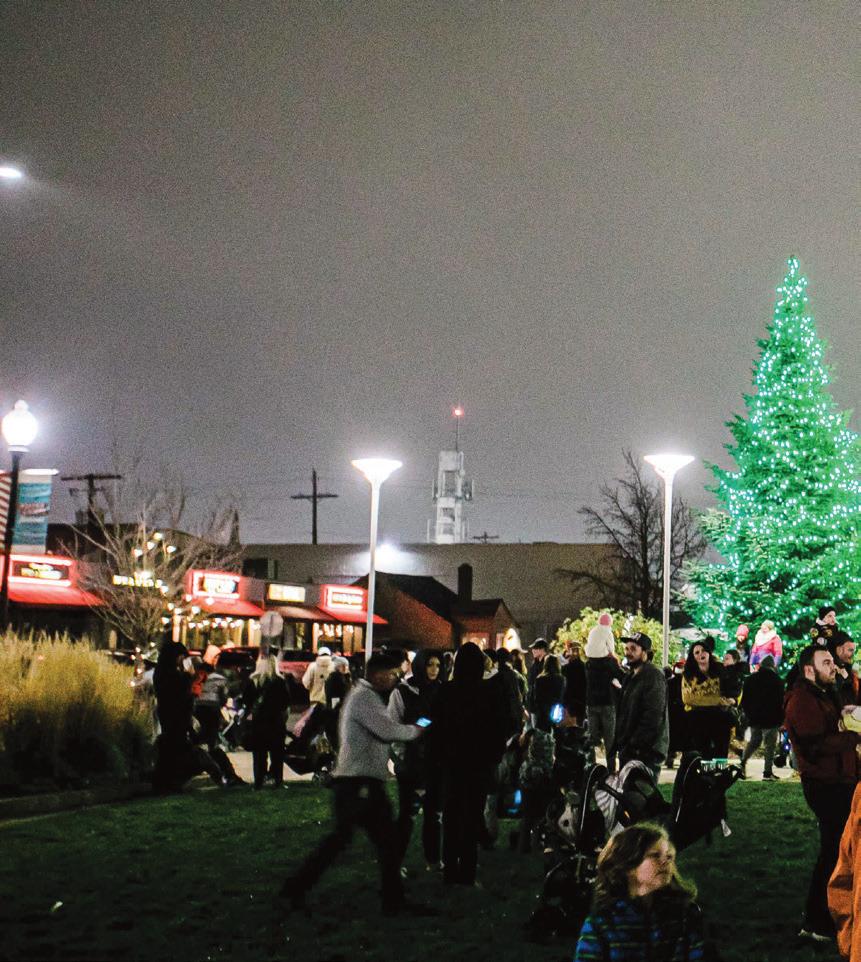
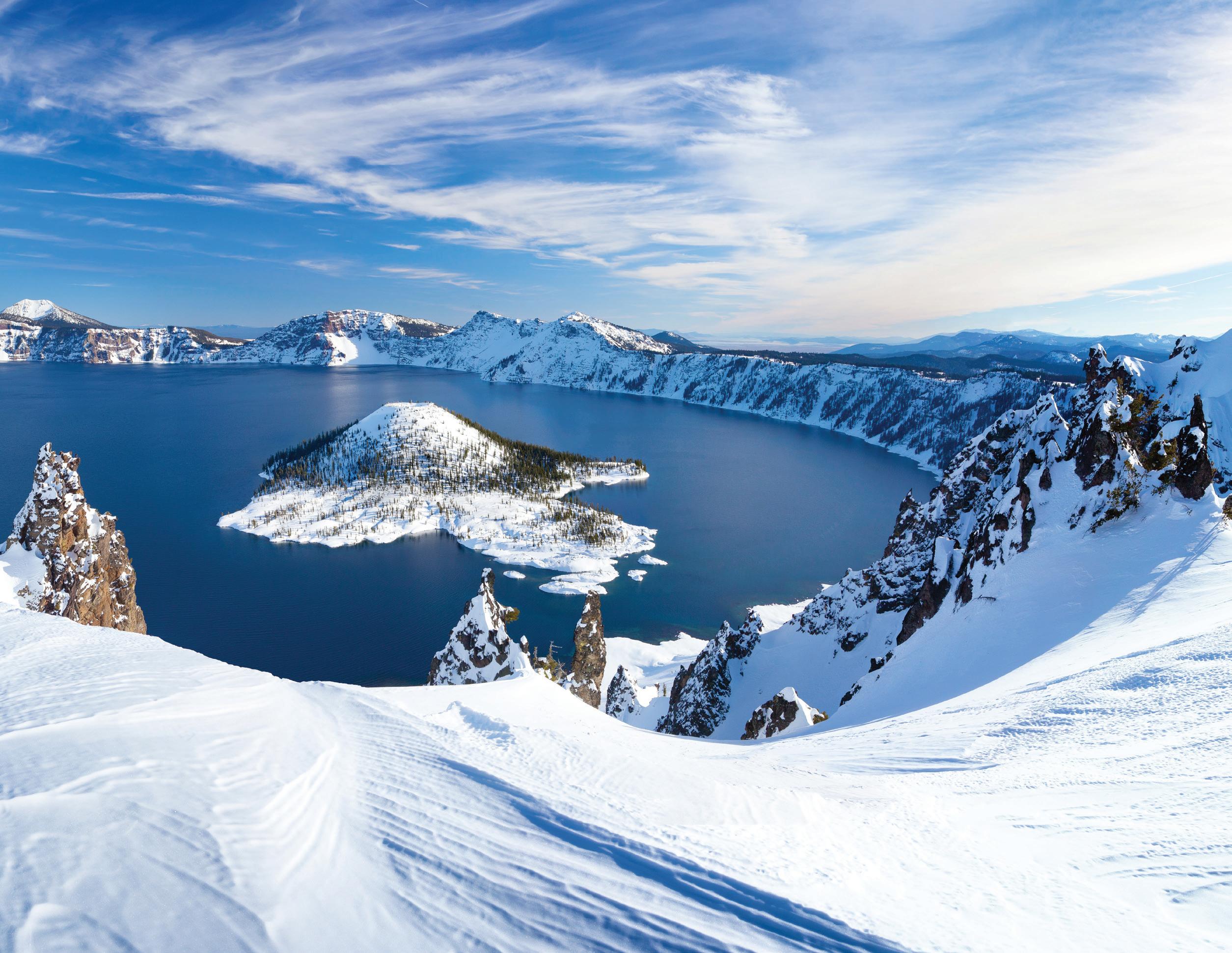
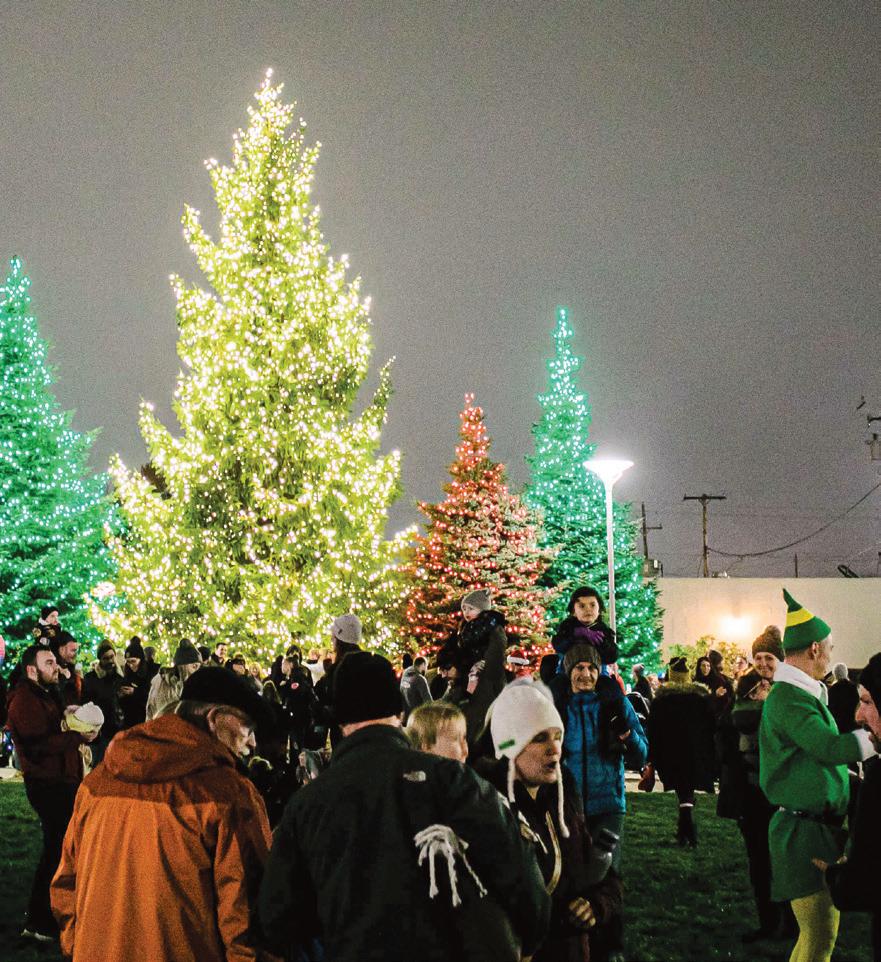
vibe of a small city? Medford offers the perfect setting for families to celebrate the season. Check in to the Compass by Margaritaville, a kid-friendly hotel featuring family rooms with bunk beds, an outdoor pool and a casual on-site restaurant with a kids’ menu. Guests can enjoy a complimentary breakfast buffet with their stay, which makes mealtime with little ones more convenient.
Nestled in the heart of the Rogue Valley, Medford is known for its crisp winter days, twinkling lights and easy access to nature. From ice skating and tree lighting events downtown to cozy cocoa stops along the Rogue Valley Food Trail, there is something for every age. Beautiful Crater Lake National Park, in its snowy glory, is open yearround and is about an hour’s drive away. Prior to heading out, make sure
In the first week of November, Barnstormer’s Holiday Bazaar takes place at the Rogue X Complex. e two-day event is a huge shopping extravaganza of local crafters and artisans. Explore the rows of booths to find the perfect gifts for everyone on your list. Do not miss the Medford Winter Lights Festival, a free community event with live performances, which takes place on December 6 at Pear Blossom Park.
Known for the Oregon Shakespeare Festival, Ashland is a fifteen-minute drive away and definitely worth a stop. e town’s Festival of Light kicks off the season with a spectacular tree lighting and parade. Families can stroll through the decorated downtown, catch a family-friendly play or take a brisk hike in Lithia Park.
Located in downtown Portland, The Benson Hotel has one of the most festive holiday attractions in the city. The historic hotel lobby, with its wood paneling and marble floors, welcomes guests with vibrant, celebratory decor. The city’s annual gingerbread display, which has been a Portland holiday tradition for more than fifty years, will be on exhibit. An elaborate creation, notable for its size and intricate detail, is made entirely of edible confections. Prominent United States presidents have stayed at The Benson Hotel, including Dwight Eisenhower, John F. Kennedy, Richard Nixon and Bill Clinton.
Make reservations at G-Love for a delicious vegetable-focused meal. Although the casual restaurant does serve animal-based proteins, vegetables take center stage. Check out the winter menu, where the kitchen makes full use of the freshest ingredients of the season. The dishes are great for sharing and trying out new things, especially for little ones and picky eaters. Do not skip dessert—both the whip-a-licious passion
fruit and storm cloud yuzu sorbet satisfy a sweet tooth.
Visit the Lloyd Center Ice Rink, which lies just northeast of downtown Portland, for some fun on the ice. The rink is located on the first floor of the Lloyd Center mall and is a popular gathering space for families and friends during the merry season. With a large decorated tree, food court and lots of shopping options, it is a one-stop destination for holiday cheer, good eats and great gifts. Even in the winter, Portland’s surrounding natural beauty is accessible and family-friendly. Try a brisk walk through Forest Park, one of the country’s largest urban forests, or take a day trip to nearby Mount Hood for snowshoeing or beginner skiing. Closer to the city, Washington Park and the Portland Japanese Garden offer peaceful seasonal strolls with a magical touch—especially after a light dusting of snow. Ride the forty-five-minute Holiday Express train, powered by vintage steam locomotives along the Springwater Corridor, offering views of the Oaks Bottom Wildlife Refuge.


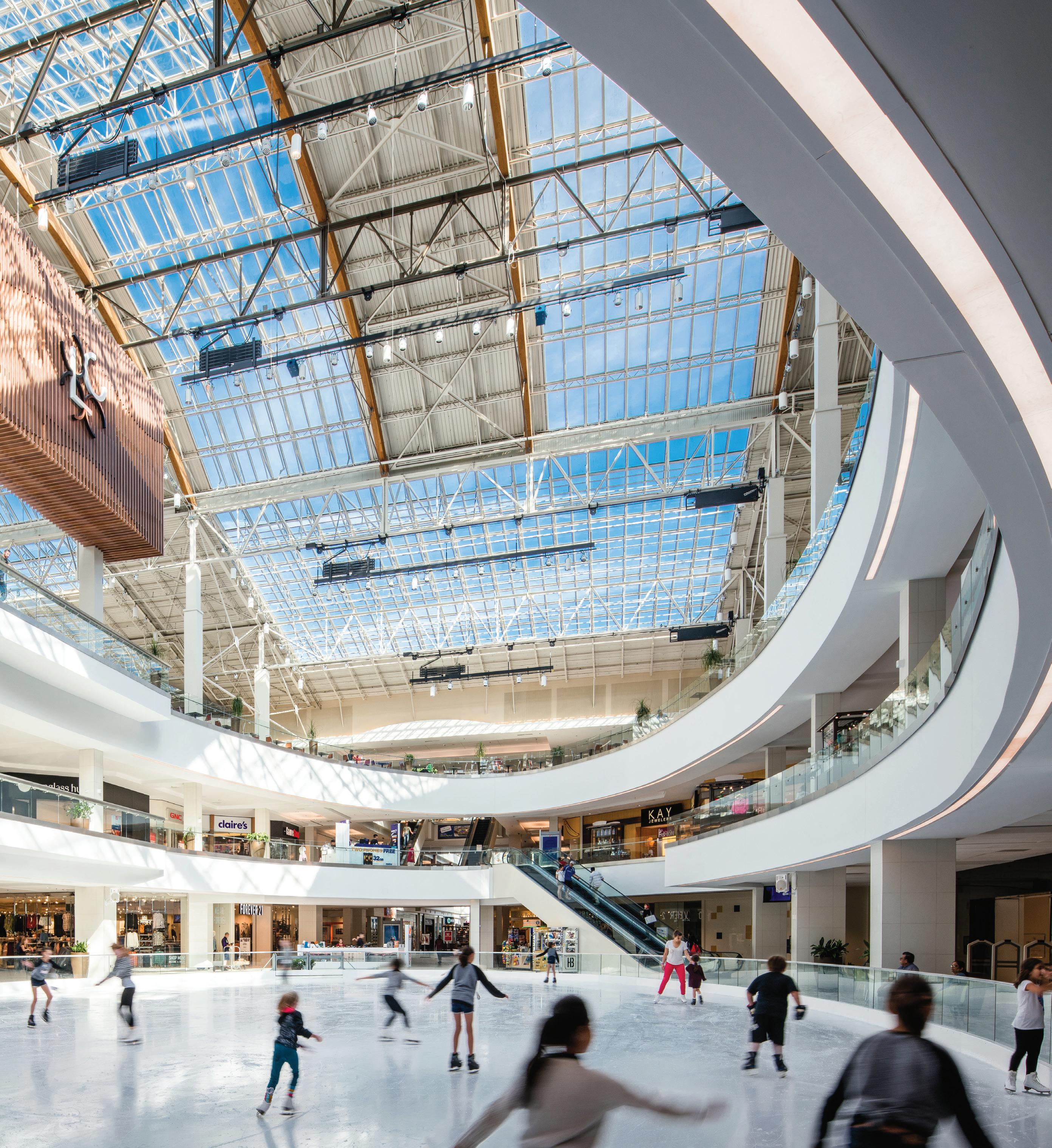

An hour east of Portland, Hood River is a scenic town with easy access to snowy adventures on Mount Hood. Horsefeathers Boutique Hotel offers elegant condo-style living with fully equipped kitchens, gas fireplaces and private outdoor decks. Some rooms provide washers and dryers, which makes it convenient for guests to pack lighter.
Hood River is famous for its worldclass windsurfing and kiteboarding; however, there are many things to do during the colder months. Kick off the
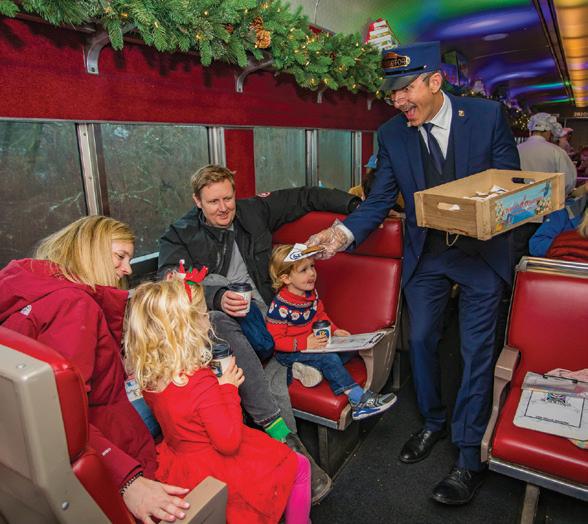
season on December 5 with Hood River’s signature tree lighting and street festival. Enjoy live music, local food vendors and holiday shopping in the downtown area. Book a ride on Mount Hood Railroad’s Polar Express Train Ride, where you can enjoy hot chocolate and cookies while being greeted by a cast of Christmas characters. The magical ninety-minute ride weaves through the scenic Hood River Valley and arrives at “The North Pole,” where Santa greets passengers of all ages.
Book a ride on Mount Hood Railroad’s Polar Express Train Ride, where you can enjoy hot chocolate and cookies while being greeted by a cast of Christmas characters.
Situated along the Willamette River, the recently renovated Valley River Inn combines comfort and holiday charm for a picturesque wintertime visit. During the holidays, the hotel dresses up with twinkling lights, garlands and a towering Christmas tree in the lobby. Kids will love spotting the seasonal touches, and parents will enjoy the relaxed vibe. With more than 250 rooms and suites to select from, larger families will appreciate the extra space the suites allow. Additionally, there is a wide assortment of amenities for families, including a seasonal heated outdoor pool, fitness center and spacious terrace. e hotel’s restaurant, Sweet Waters on the River, serves breakfast, lunch and dinner.
Next door is Valley River Center, Eugene’s largest shopping mall. It is
especially convenient for families looking to squeeze in some last-minute holiday shopping or take photos with Santa. e mall also has a movie theater, which is a perfect stop on rainy days. For more outdoor fun, the hotel’s direct access to the Ruth Bascom Riverbank Path System means you can bundle up and take a family stroll or bike ride along miles of scenic trail. You might even spot wintering birds along the riverbanks.
ere are a variety of family-friendly events in Eugene during the holidays. e Holiday Market at Lane Events Center is a big draw—the indoor artisan market features handmade gifts, festive food vendors and live music. It is an ideal place to pick up gifts for loved ones, while supporting small, local businesses. Or catch a family-friendly concert or holiday performance at e Shedd Institute, which is located in a stunningly restored church building dating back to 1915.
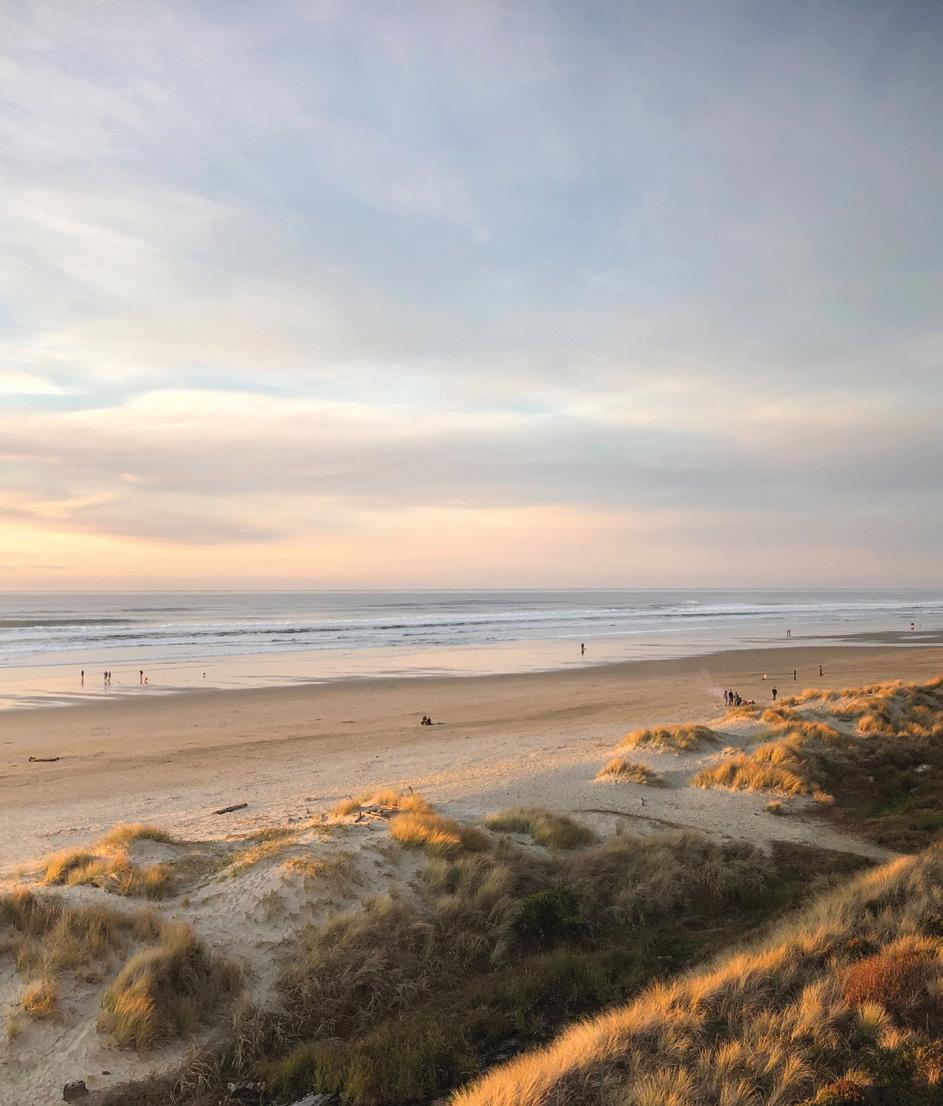
Storm watching in the charming coastal town of Florence is a thrilling familyfriendly experience best enjoyed during the winter months, from November through March. e educational experience is a great opportunity for kids to connect with nature, although you will want to choose safe viewing spots and keep a safe distance from the water. e winter period coincides with the king tides, which are the highest tides occurring naturally each year. It happens when the gravitational forces of the sun and moon align perfectly with the Earth, causing an extra-strong tidal swell. Driftwood Shores Resort makes an optimal base camp because of its family-friendly features, such as spacious oceanfront rooms with kitchens

and balconies with stunning views. e indoor aquatic center features a heated pool, a children’s wader pool with splash zones and an oversized whirlpool tub, providing fun and relaxation for guests of all ages. Don’t want to cook? No problem. Driftwood offers “Holiday Dinners to Go” through the restaurant, Surfside Bistro.
Visit historic Old Town for the Winter on the Waterfront Festival, featuring live music, refreshments, a vehicle parade, hayrides and shopping. It all leads to the culmination of the Florence Holiday Festival & Tree Lighting. e Winter Music Festival takes place in late January at the Florence Events Center, featuring various types of music, including bluegrass, open-jam sessions and more.
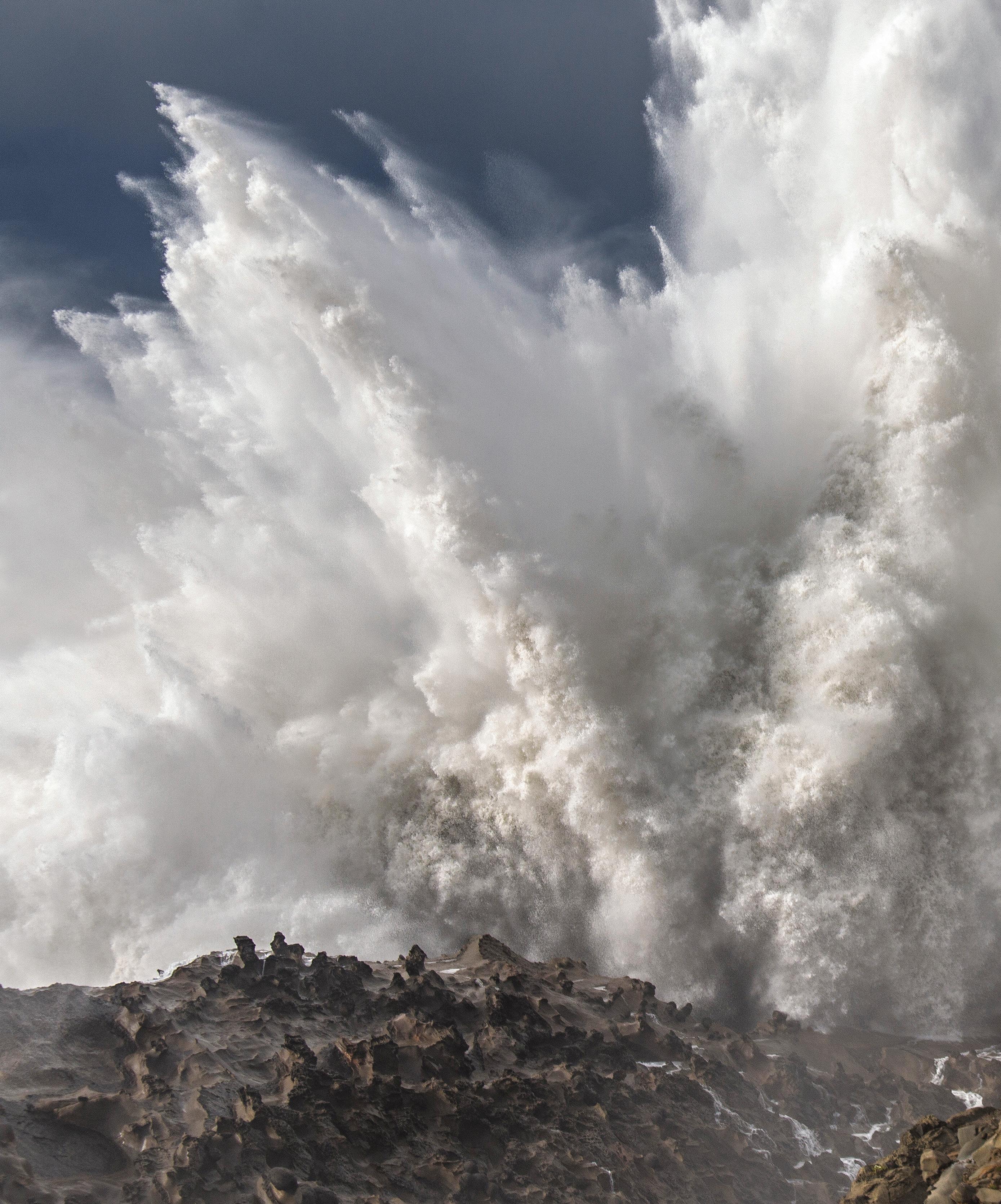
writtenbyDanielO’Neil
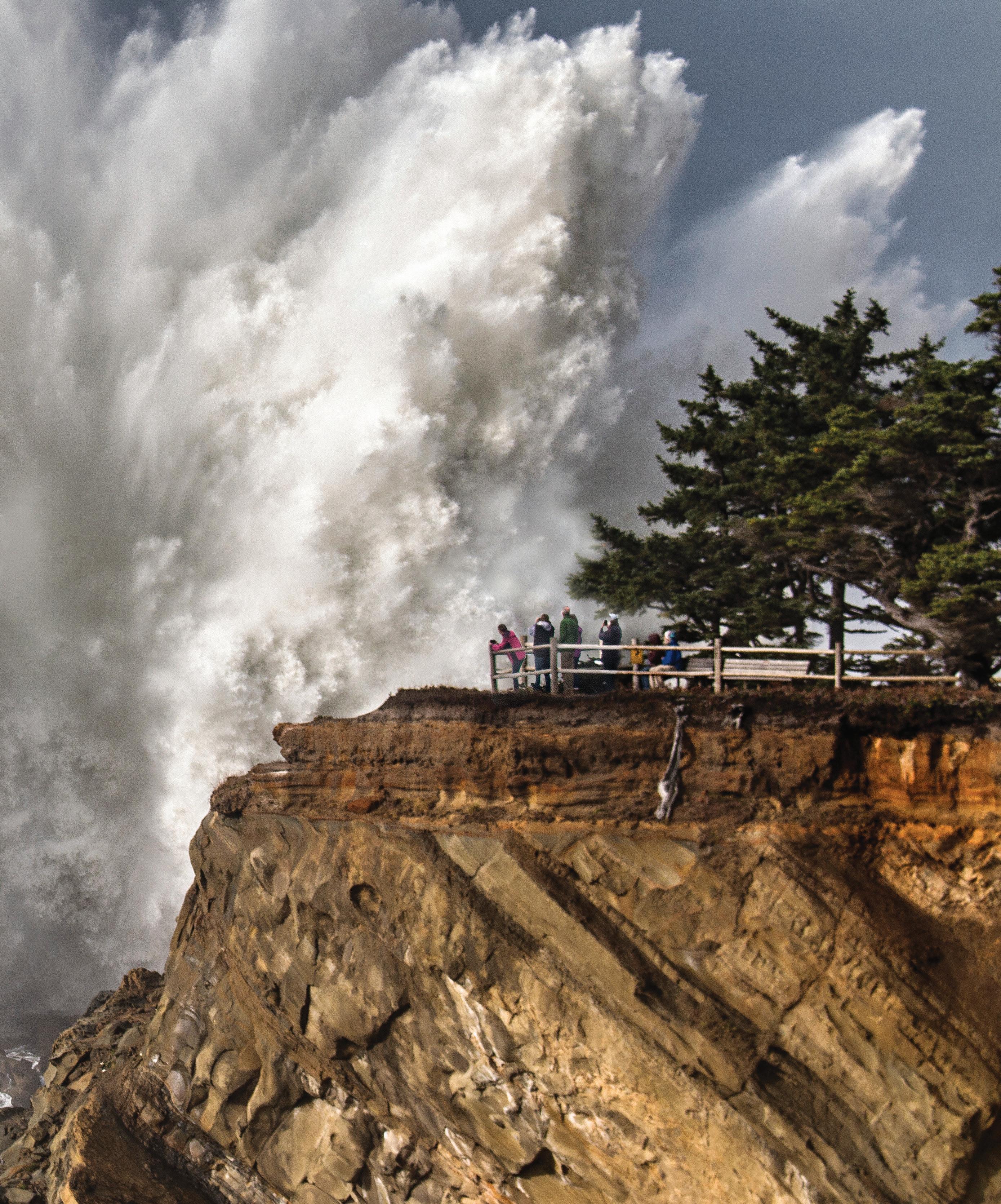
In one corner, the Oregon Coast, forged by fault lines, long-ago volcanics and distant lava flows. In the other, the early winter north Pacific Ocean, with its incessant battering waves and wind. Watching the two clash is a spectacle of Mother Nature’s brutal strength and beauty, one that is quickly gaining aficionados. With plenty of cliffs and headlands, punchbowls and blowholes, not to mention warm hospitality and a relaxed offseason vibe, storm watching on the Oregon Coast does not disappoint. With the right timing, and plenty of precaution, taking in the action is yet another way to enjoy and appreciate Oregon’s rugged coastline.
Storm watching offers plenty of opportunities from late fall until the end of winter. Some people go for the storm itself, the unimpeded ocean winds and sideways rain that challenge one’s balance and weather hardiness. Others prefer the contest of sea and shore, the mesmerizing thrill of watching 30-foot swell arrive in relatively calm weather, throw all of that water, energy and weight against land’s end and finally erupt in a fury of whitewater and sky-high spray—such a sight makes summer fireworks seem child’s play.
The classic storm season for Oregon’s coast occurs in late fall and early winter, when the strongest low pressure systems appear over the distant or nearby waters of the north Pacific Ocean. These low pressure systems, or storms, are generated by a strong contrast in temperatures over short distances. In fall, much of the Northern Hemisphere remains warm. But as the weeks go by, the Arctic cools rapidly. This creates a window of time in which a relatively large temperature gradient exists between the Tropic of Cancer and the northernmost latitudes.
Such instability in the atmosphere soon develops into “lows” that form along these boundaries of warm and cold. The ocean, still retaining summer’s warmth, provides even more energy for storms to develop and intensify.
When wind blows across a stretch of ocean, it pushes the water into swells, like blowing across tranquil bath water. Stronger wind, for longer, across a long swath of ocean delivers bigger swell, which breaks as waves when it reaches shore.
Two types, or locations, of low pressure systems produce the heavy seas that crest and detonate along Oregon’s coastline. The more common systems form in the western Pacific, where frigid Siberian air meets the warm Kuroshio Current off Japan (the Pacific’s Gulf Stream). These storms blow hard across the Bering Sea, and the swells they whip up travel several thousand miles to reach Oregon as seas in the 10- to 20-foot range.
Waves from these swells can put on a show, and they can coincide with fair weather here, always a bonus for most storm watchers. But the most powerful, spectacular and dangerous waves originate much closer to Oregon. These Herculean swells emanate from lows that intensify quickly over the central Pacific or approach Haida Gwaii and Vancouver Island. They become especially potent when backed by consistent westerly or northwesterly winds.
“These big lows, when they develop really rapidly, are not that different than if you were to take a rock and drop it into a calm lake, that sort of disruption,” said Colby Neuman, a meteorologist with the National Weather Service in Portland. “Those waves are forming almost instantly. A storm intensifying is happening over a twenty-four-hour period. The same sort of ripple effect is happening in the atmosphere, and it’s translating to the ocean surface in the form of swells. That’s when we have the really big swell events that are 25, 30, 35 feet.”
Some storms surpass even those heights. In early December 2007, a series of extraordinary lows struck the Oregon Coast with tree-snapping gusts over 100 mph and 45-foot seas. This “Great Coastal Gale,” however, did not eclipse the Columbus Day Storm of 1962, still the Pacific Northwest’s most destructive windstorm in recorded history, which raged with the force of a Category 3 hurricane and claimed forty-six lives.
Such storms, rare and powerful though they may be, make for terrible, life-threatening storm watching. Even with the exceptional lows that pass through the region each fall and winter, timing and safety are crucial to catch them at their most impressive. Heavy winds and rain, plus all sorts of risks on shore, accompany these lows as they arrive off the coast, and visibility can be poor.

“The worst of the storm, or the strongest winds, have to move past, and then you’re in more of the showery part of the storm,” Neuman said. “That tends to be when the winds back off a bit, but we still have a big swell coming in, so you’ll see big waves coming into the coast, and you can get outside and not have it be unpleasant.”
The greater challenge with timing is when to catch the storms themselves. The National Weather Service issues high surf advisories and high surf warnings (the latter being the more serious), but due to the ever-evolving nature of the lows that produce such seas, these announcements give storm watchers little time to prepare.
“We don’t get a whole lot of notice from the National Weather Service to expect high surf,” said Janice Langlinais, executive director of the Coos Bay-North Bend-Charleston Visitor and Convention Bureau. “So they’re very unpredictable, when those wave crashes are going to hit that monster level, swells of 20 to 35 feet. Anything under 20 feet, it’ll crash and be dramatic, but it won’t be as dramatic.”
Up and down the Oregon Coast, from Astoria to Brookings, storm watching viewpoints await the sudden arrival of a punchy lowpressure system. While pretty much everywhere along Oregon’s exposed, headland-studded coastline receives the heavy winds and waves of storm season, certain locations offer the best, and safest, vantage points.
Just west of Coos Bay, the 5-mile stretch of coastline from Cape Arago north to Bastendorff Beach seems made for storm watching. Close-in reefs and a series of uplifted sandstone cliffs await incoming waves here like nowhere else.
“The way these cliffs are formed provides the perfect opportunity,” Langlinais said. “The waves come in over one rock, into a gully created by the cliff, and have nowhere else to go but right back up again, which is how they spew up so high. They’re coming in at such force that there’s no place else for that wave, that energy of water, to go but straight up in the air.”
Shore Acres State Park is the most popular storm watching viewpoint along Cape Arago, and possibly on the entire Oregon Coast. Positioned 80 feet above sea level, complete with storm watching hut and fortified stone wall, the bluff allows spectators to feel the
waves’ impact viscerally as thunderous energy and sprays of whitewater several hundred feet high.
Farther north, Devils Punchbowl State Natural Area offers a similar sky-bound whitewater show. Nearby, Depoe Bay serves some up-close storm watching opportunities of its own. Other towns like Florence, Bandon and Brookings also provide access to prime-time storm watching viewpoints and plenty of sea stacks that take a pounding when waves get big. In Port Orford, Battle Rock receives storm swells head on, as do Cape Lookout and Cape Kiwanda farther north near Pacific City. Even some of the coast’s iconic lighthouses, like at Heceta Head, give a good birds-eye view of arriving swell and crashing waves.
For those who like the ferocity of a proper Oregon Coast storm, all wind and rain and raucous seas, Lincoln City is a great place to stay dry and safe while taking in the action. With plenty of ocean-view lodging and restaurant options, it’s easy to enjoy the storm watching while savoring a bowl of clam chowder or sipping a cocktail near a crackling fireplace, even from the cozy seclusion of a hotel room.
At this same time of year, once a month in November, December and January, some people travel to the coast just to see the king tides. These unusually high tides occur when the sun, moon and Earth align, resulting in the strongest gravitation pull. While offering a spectacle of their own, they are not to be confused with storm watching because king tides themselves do not create waves. In fact, they are known to cause flooding, erosion and other beach hazards. But when the king tides do coincide with a high surf advisory or warning, watch out—the ocean will surge farther up shore than normal, adding more drama, but also more danger.
“Storm watching is one of the most thrilling ways to observe the power of the sea without being on a ship. But it is imperative to view this from a safe distance. The Pacific Ocean is cold and unforgiving.”
— Steve Strohmaier, U.S. Coast Guard Northwest District public affairs specialist

Just as storm watching opportunities exist all along Oregon’s 362 miles of coastline, so do the hazards involved in confronting nature’s raw energy. Power outages, falling trees, flooding, landslides and road closures all happen every fall and winter on the Oregon Coast. Even on the sunniest, warmest storm season day, the risks to life are real. Sneaker waves, rolling logs, frigid water and more all threaten observers. Fatalities do occur. But awareness, caution and respect for the ocean and its environs can make for an inspiring storm watching experience.
No agency is more attuned to these dangers than the U.S. Coast Guard. With bases up and down the Oregon Coast, the Coast Guard has boats, helicopters and crew ready to assist those in need. But they cannot always arrive quickly enough—the wintery Pacific Ocean can claim lives in minutes—and they also answer distress calls at sea, not just along the coastline.
Rather than a reactive approach, the Coast Guard, and everyone else who promotes visiting the Oregon Coast in storm season, urges a proactive strategy to stay safe.
“Storm watching is one of the most thrilling ways to observe the power of the sea without being on a ship,” said Steve Strohmaier, public affairs specialist for the U.S. Coast Guard Northwest District. “But it is imperative to view this from a safe distance. The Pacific Ocean is cold and unforgiving.”
In late fall and throughout the winter, water temperatures along the Oregon Coast dip into the 40s. Exposure to such cold water can cause paralysis in the limbs within minutes, making it impossible to swim or even stay afloat. Washed away by a wave, even a strong swimmer will drown.
To avoid such a scenario, a few simple guidelines should always be front of mind. First, never turn your back on the ocean. Next, use common sense. Don’t climb on cliffs or logs, or venture onto jetties or past fences. Do consult a tide book to avoid getting stranded on a rock or an enclosed beach, and always have an escape route when at sea level.
ABOVE A U.S. Coast Guard helicopter hovers above breaking surf near Fort Stevens State Park while conducting training operations. While training at the Advanced Helicopter Rescue School, Coast Guard aircrews hone their search and rescue skills in challenging environments and scenarios.


“The way these cliffs are formed provides the perfect opportunity. The waves come in over one rock, into a gully created by the cliff, and have nowhere else to go but right back up again, which is how they spew up so high. They’re coming in at such force that there’s no place else for that wave, that energy of water, to go but straight up in the air.”
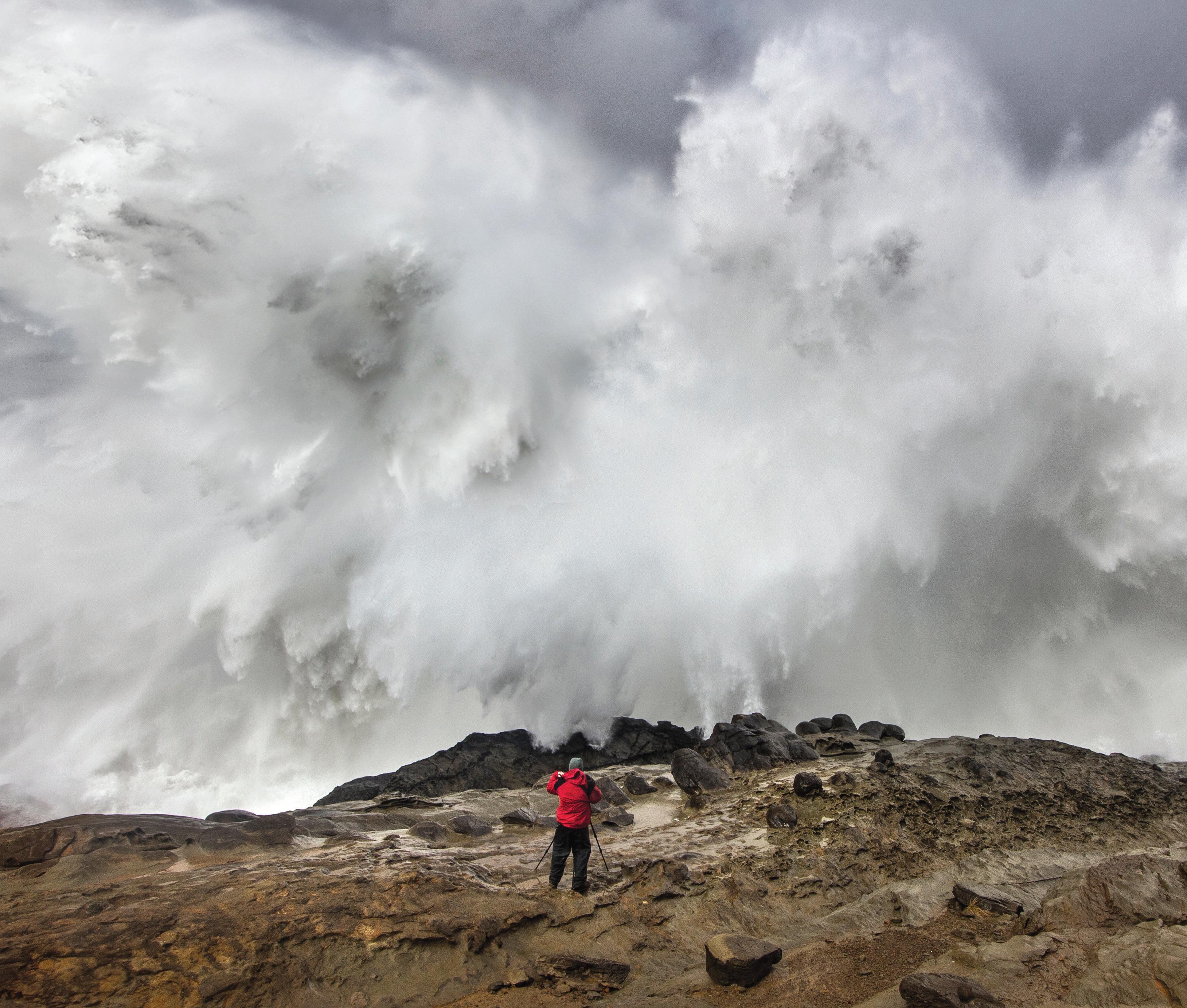
“When you’re walking to the beach during rough weather, imagine what your safe distance should be in your mind, and then double that,” Strohmaier said.
“You never know when the surf is going to reach far up the beach, and you won’t be able to outrun the water. What’s worse, the Oregon beaches are covered with logs and other debris that can quickly become projectiles with the power of water.”
Such advice is particularly important during high surf advisories, and especially during high surf warnings, because of sneaker waves. Even the most
seasoned beachgoer keeps them in mind from fall to spring. Sneaker waves are actually more like a sneaker surge. Every so often during the day, a set of waves arrives that is bigger than most, and their powerful whitewater rushes up the beach higher than expected. Even a foot of fast-moving Pacific Ocean water can knock people off their feet and pull them into the cold, tumultuous sea, or set beach logs to rolling. Many fatalities have occurred on such days.
Oregon State Parks employees do their best to promote beach safety practices all year long but
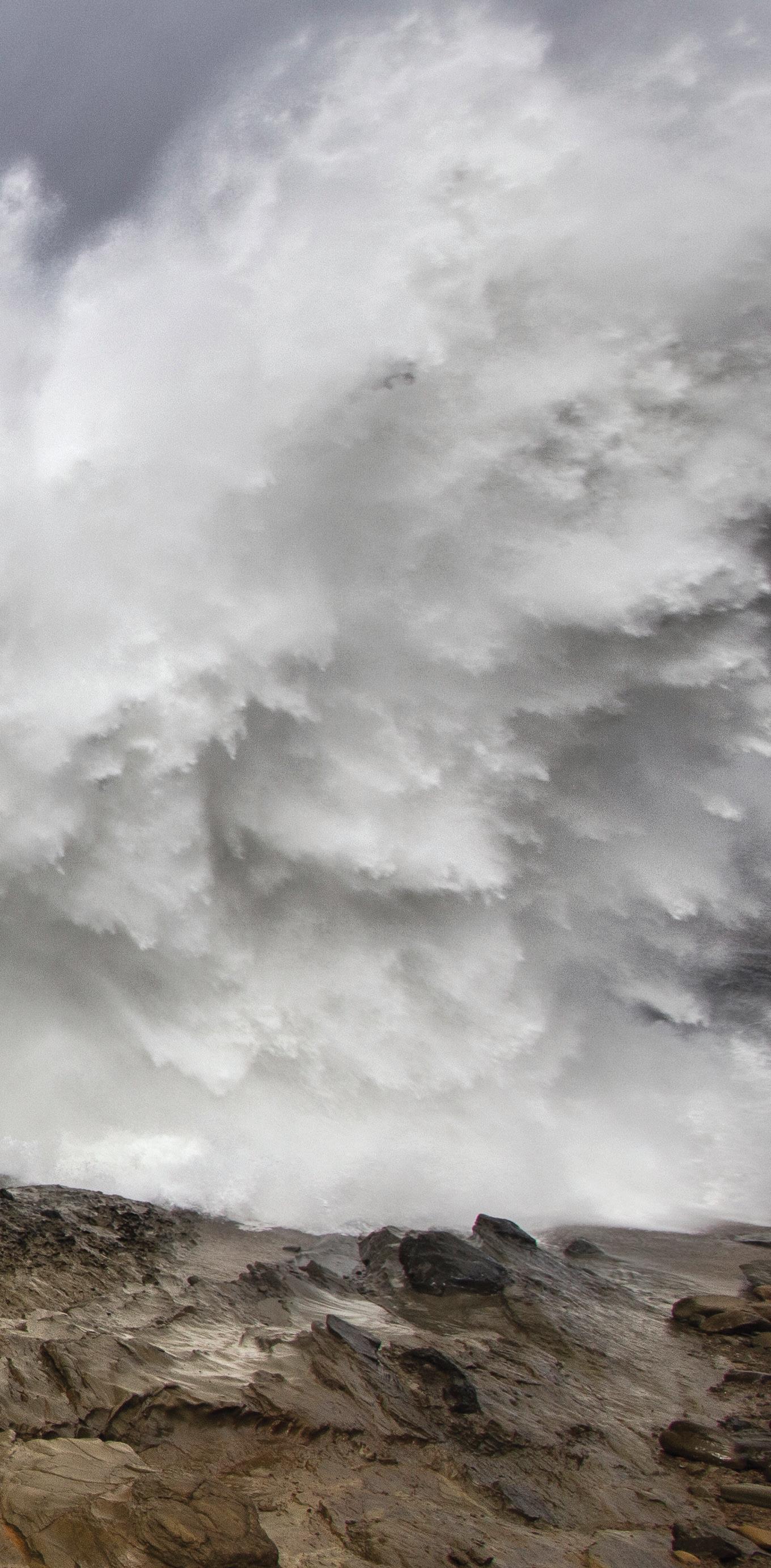
distance, plan your visit ahead of time and use good judgment. That’s all we can ask.”
Knowing when to head to the coast for storm watching requires keeping an eye on weather reports from news outlets, the National Weather Service or even the social media pages of coastal visitor bureaus. Fortunately, in terms of tourism, storm season is much calmer than summer along the coast.
“It happens during a time of year when visitation isn’t as high, so the local communities are really excited and happy to have visitors during those times,” said Stacey Gunderson, global sales and marketing coordinator for the Oregon Coast Visitors Association. “It can be easier to book a stay, easier to get into restaurants and to experience some other parts of the Oregon Coast, in addition to watching storms.”
And because tourism on the Oregon Coast is seasonal, from November to March small businesses— i.e., the majority of establishments here—are grateful for the extra income during the lean months.
“It’s important to remember those favorite momand-pop places in the offseason so that they can be around for the next summer season,” said Stephanie Hull, event and outreach coordinator for Explore Lincoln City. “Storm watching allows for those shops, restaurants, hotels and vacation rental properties to survive through those months as well. And maybe you go into a local antique shop, wander around and purchase a few fun treasures of your own and then go hit the beach. I think it’s just a way to bring in more opportunities for those businesses.”
especially during storm watching season. Beach rangers do not enforce laws, but they gladly offer advice on how to stay safe and alive when big waves hit the coast.
“There’s no substitution for direct experience,” said Oregon State Parks beach ranger Ryan Parker. “And every winter I’ll encounter people that make a choice to where they’re immersed in a wave or get knocked over. One of the messages we tell people is, it may seem safe to you, but you get yourself in trouble, and now it’s a lifesaving issue. Be informed, observe at a
The showdown of ocean and shore provides a spectacle worth traveling for. It also helps people connect in a new way with the Oregon Coast, whether that’s during a barrage of wind and rain or after the storm when it’s all about the waves. “Storm watching gives you a different perspective of the ocean and certainly unveils its power,” Gunderson said.
But before heading to the coast in fall and winter, it’s crucial to understand the safety protocols of watching storms and heavyweight swells smash ashore. Respect for the ocean’s immeasurable power is key. The idea is to remain a spectator, out of the ring, and to return in coming years, because once anyone has experienced the magical and mesmerizing power on display during storm season on the Oregon Coast, it’s natural to want an encore.
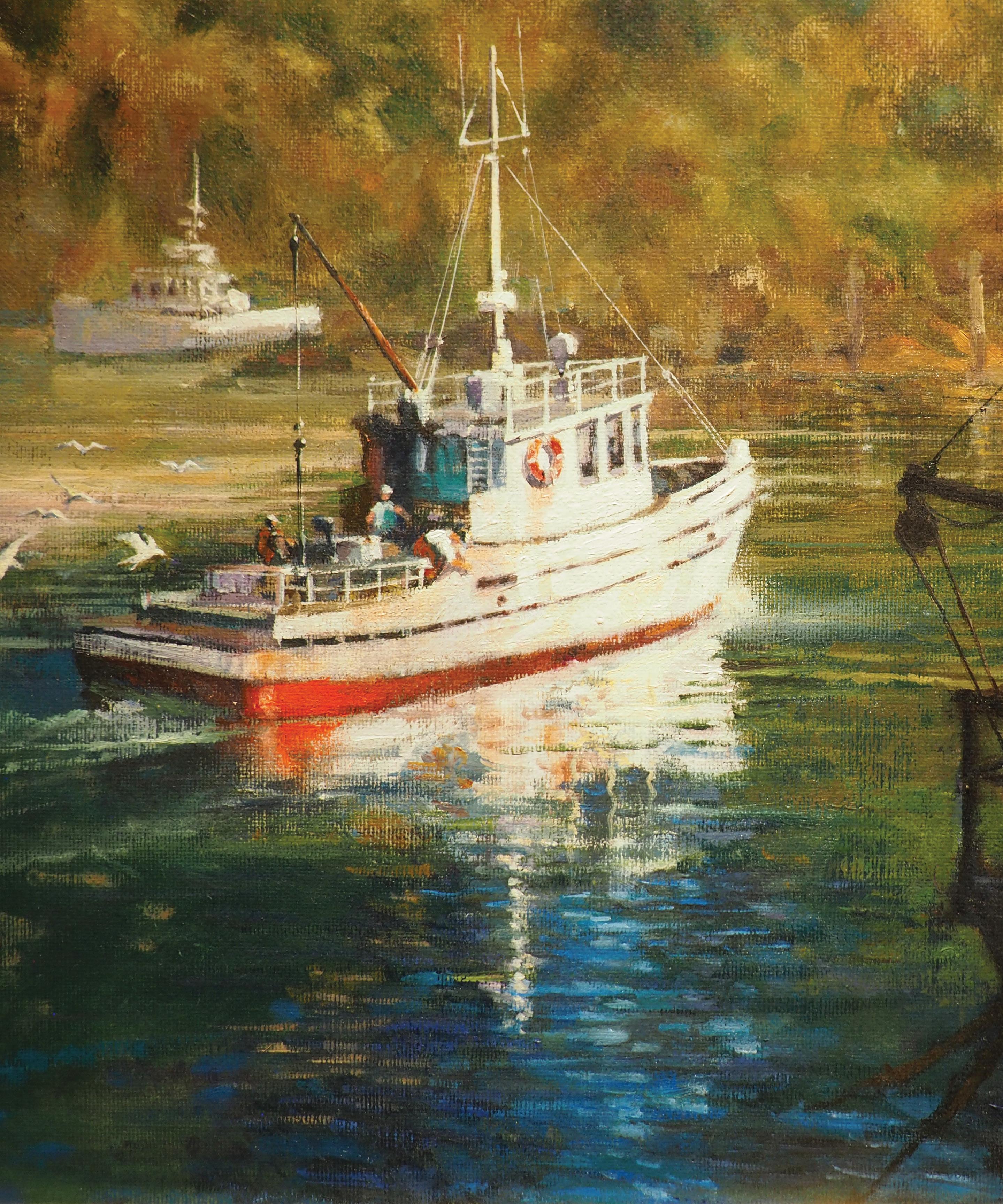

written by Kerry Newberry
FOR MORE THAN sixty years, the Columbia River Maritime Museum has brought seafaring stories to life through maritime artifacts, fine art and immersive exhibits. A cultural anchor for Astoria, the riverfront museum continues to celebrate transportive art about the sea with the Pacific Rim Institute of Marine Artists (PRIMA) exhibit, on display through the end of 2025.
Founded in 2016, PRIMA brings together fine artists from countries bordering the Pacific Ocean using art about the sea as a common thread. More than twenty-five marine-themed paintings created in either oil or watercolor capture a range of immersive scenes from magnificent boats conquering stormy seas to luminous moments with First Nations coastal people.
Artist Charles Fawcett, a former merchant marine and yachtsman who has cruised boats of all sizes in oceans around the world, paints a bar pilot climbing aboard an oceangoing vessel with brilliant detail. (The local bar pilots guide ships in and out of the area’s tumultuous waters.) It’s a riveting scene you might spy as you walk along the Columbia River after the exhibit.







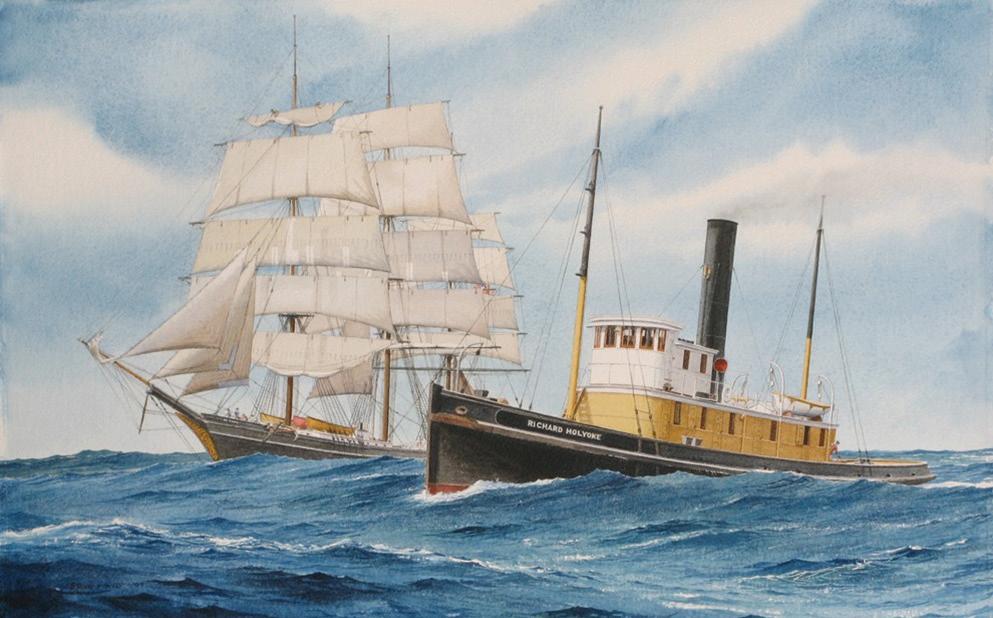
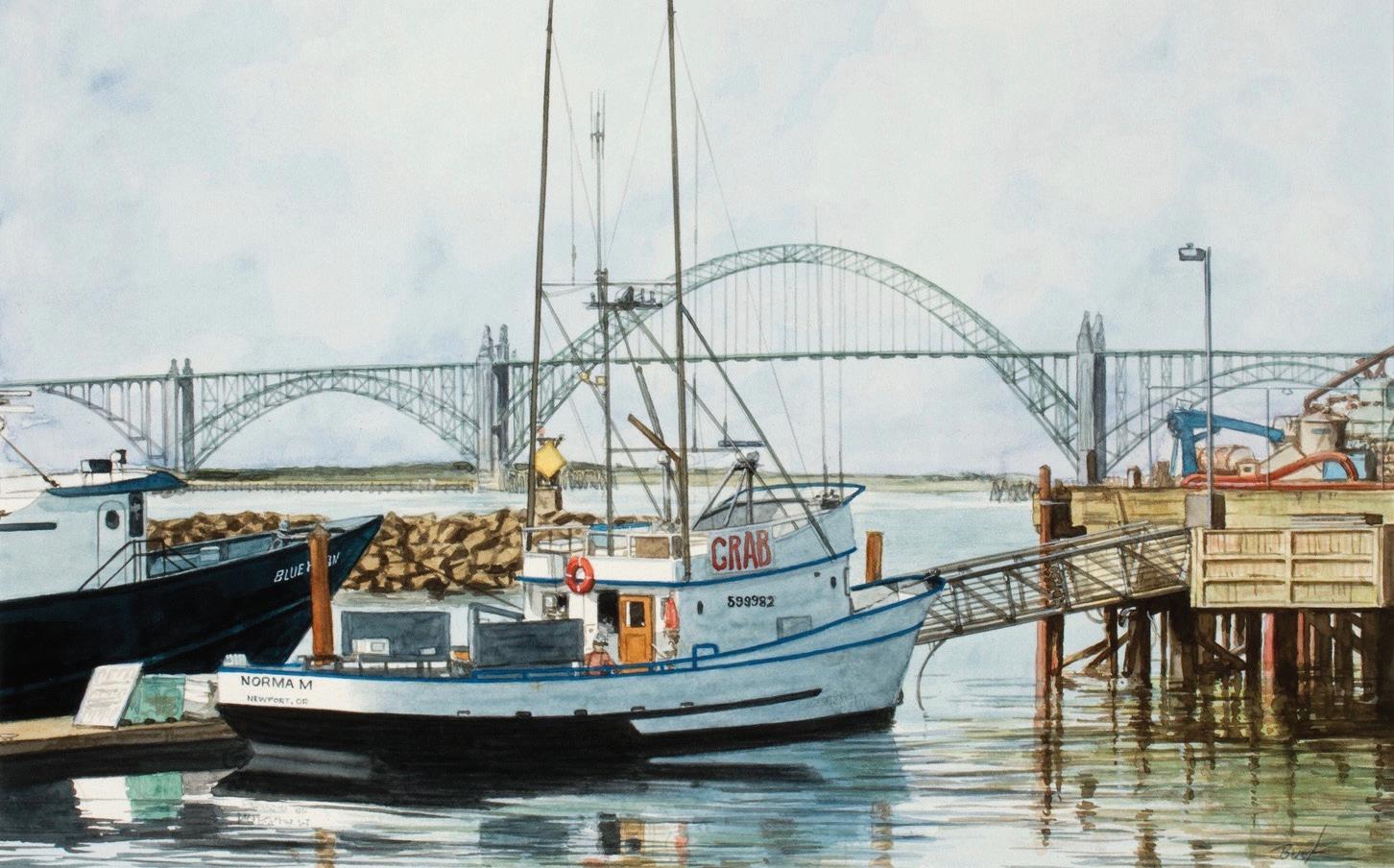
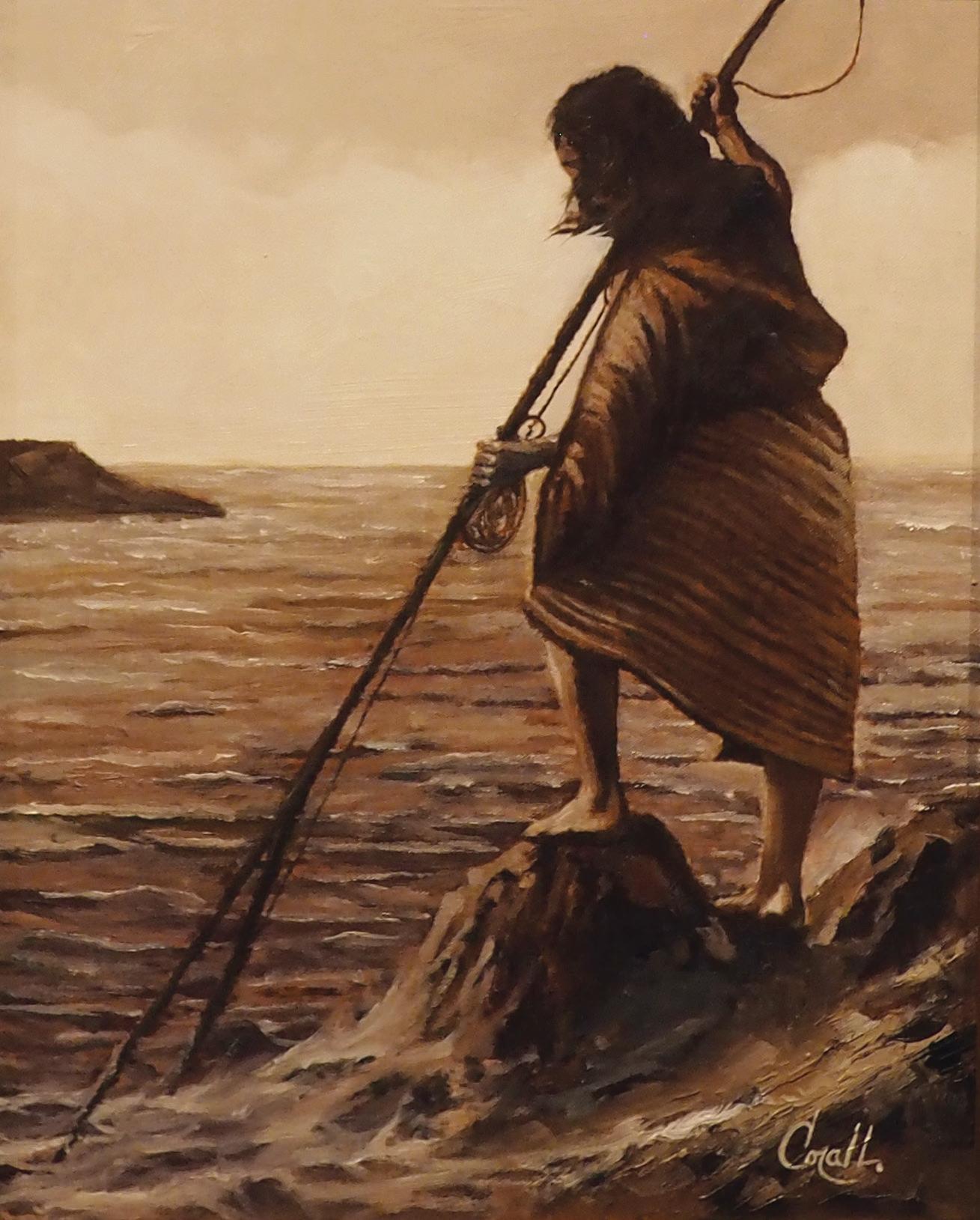

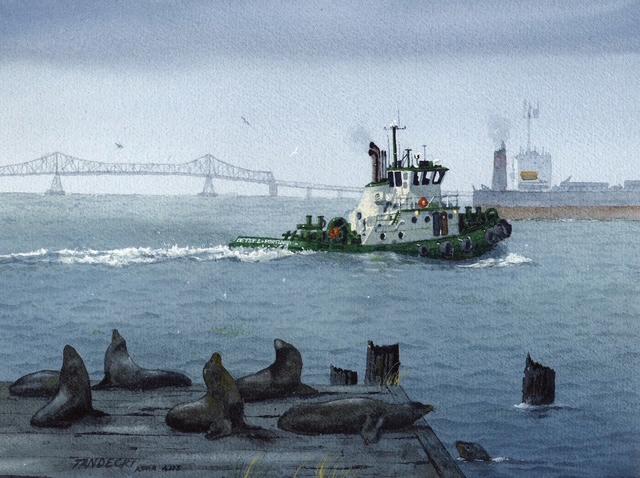
CLOCKWISE FROM TOP LEFT
Steve Mayo, The Steam Tug Richard Holyoke
Coral Lehtinen, Git Hoan, People of the Salmon
Robert Tandecki, Working the Columbia, Astoria
Austin Dwyer, The Pond Monkeys, Oregon
Buck Braden, Crab
FAR LEFT, FROM TOP
Harold W. Johnson, Buying Salmon
Buck Braden, Helping Hand, Moving Lumber
Down to San Francisco

TRAVEL SPOTLIGHT 86
ADVENTURE 88
LODGING 90
TRIP PLANNER 92

NORTHWEST DESTINATION 98






























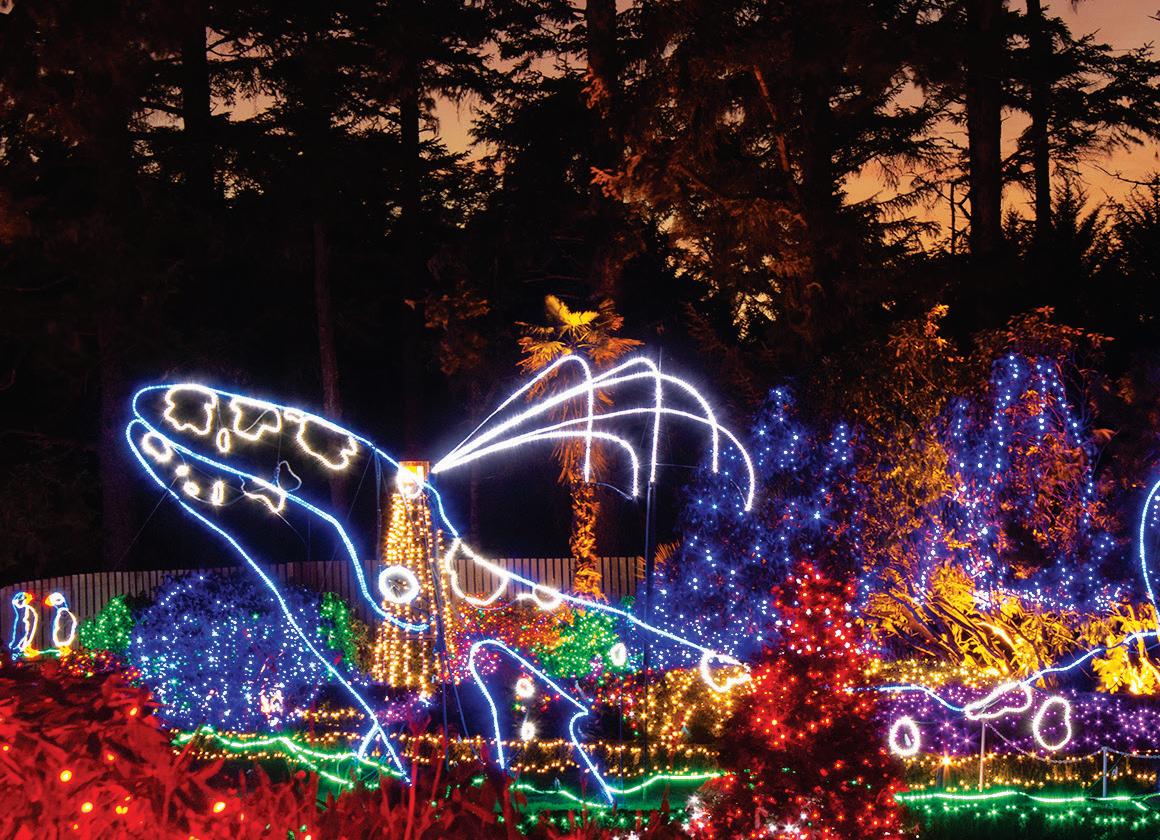

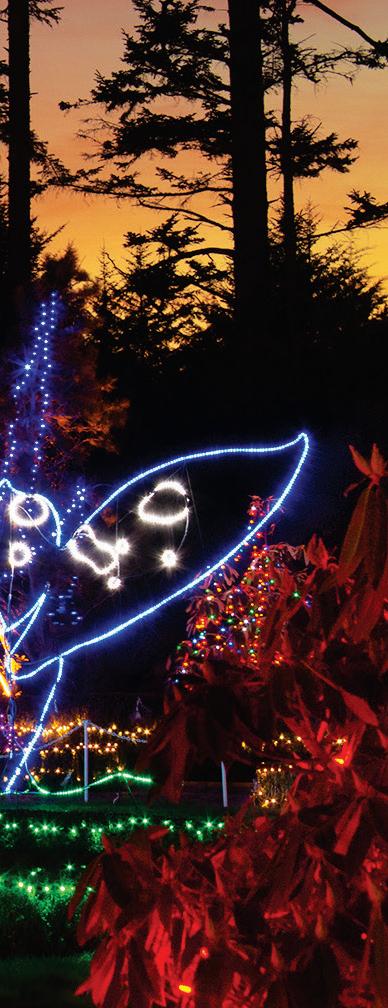






written by Joni Kabana
Clyde’s, a Classic Dine on prime rib, feast on the music scene photography
by Mel Barbour
SLIP INTO a curvy red booth, order a Manha an and let yourself slide back in time at Clyde’s Prime Rib on NE Sandy Boulevard in Portland. For more than sixty years, Clyde’s has been “the spot” for lovers of swank, funk and occasional tap dancing. The decor is a throwback to the ’50s. Think Elvis.




Known for its crowd-pleasing prime rib dinners, Clyde’s knows how to dish up old-school traditional Americana favorites such as steaks, chops and lobster. (Dean Martin would be proud.) Side dishes include the famed creamed spinach, lobster macaroni and cheese and, of course, bacon-wrapped asparagus.




The food aside, Clyde’s biggest a raction is o en the musical acts it presents in the adjoining bar. From cool jazz to psychedelic funk, the lineup transports listeners back to Croon Town. Many nights, the band will let audience musicians join in, and that’s when the real fun begins. Local music schools bring their students to play improv jazz ri s and get a taste of what it feels like to play before an audience that swoons. The bar’s dance floor beckons rumba, salsa and makeshi watusi-esque moves you won’t see anywhere else in Portland. Make reservations for dinner, and then catch the music show a er. You might just see a top hat or two, so don your favorite cocktail dress or sports jacket, updo or slick back your hair and travel back through time. Or come as you are. It’s Portland, a er all.


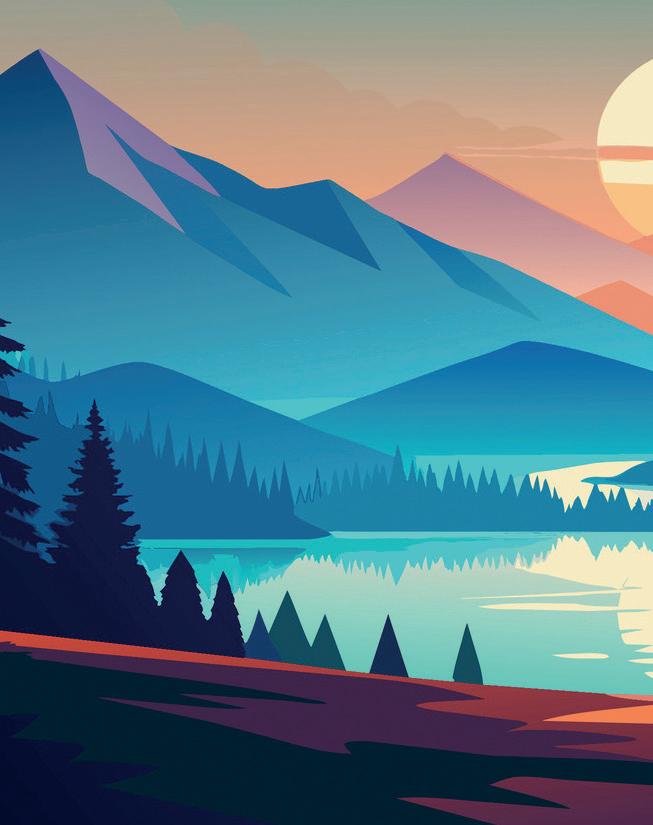




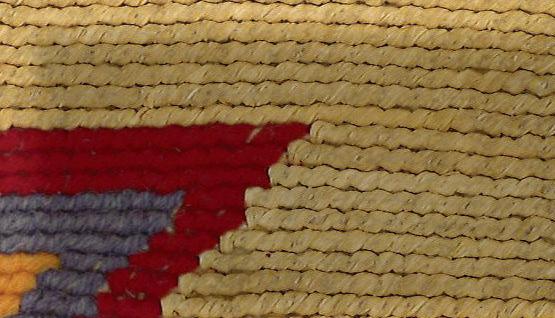

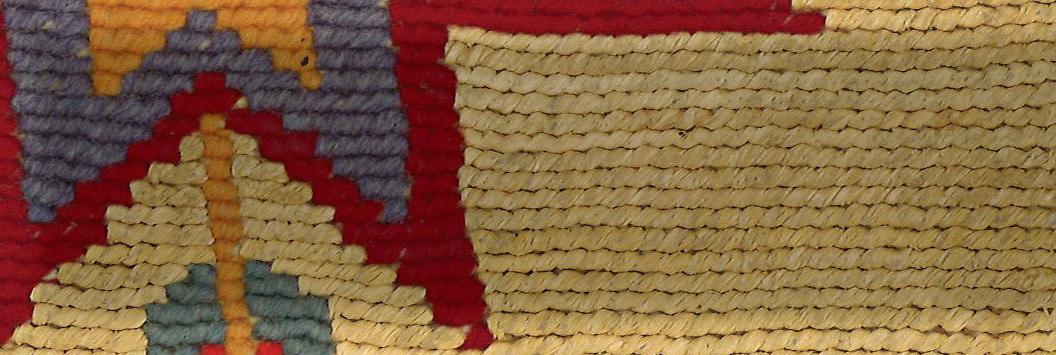


















written by Cathy Carroll

EYES CLOSED, seated on a sky blue cushion on a wood floor, you listen to a poem by the fourteenth-century Persian poet Hafiz:
“There is a beautiful creature living in a hole you have dug. So late at night I set fruits and grains and little pots of milk beside your soft earthen mounds and I often sing, But still my dear you do not come out. I have fallen in love with someone who hides inside you. We should talk about this problem, Otherwise I will never leave you alone.”
This medieval ode to attending to your inner, true self is a perfect entrée into a guided meditation. Its aim is to let you switch mental gears, shifting you and the half dozen others in the session away from modern cultural demands—or whatever else might be holding you back from living a more peaceful, happy life. The practice leverages two things: concentration and breath. While always available, it’s challenging to pause the quotidian tasks and to-dos and tap into the power of these deceptively simple tools.
But when you step into a space in a beautiful setting, designed just for this practice, it suddenly feels effortless. That’s the case at The Sanctuary at Inn the Ground in Carlton. Just as meditation
invites you to drop deep into stillness, so does this space, embracing simple forms and single-slope roofs reminiscent of the area’s agricultural sheds.
The ethos behind the inn, its 8 miles of forested trails and working regenerative farm, Tabula Rasa, is to allow you to restore your body and mind by connecting to the earth, immersing yourself in the rhythms of the land and the food from it. Twothirds of the 10,000-square-foot, nine-room inn is recessed in the land, deepening the feeling of being grounded.
The Sanctuary, across a field of native grasses from the inn, also feels rooted in the landscape. A wall of windows bathes you in natural light from an uninterrupted expanse of sky and ground, punctuated with grazing sheep and foraging deer. Here, focusing on your breath, you inhale long and exhale slowly, letting out a sigh and surrendering into a state of rest. There’s no striving. After twenty minutes, worries and burdens feel as though they are blown away by the clear, fragrant wind, revealing a fresh horizon.
Leaving the session, senses heightened, you step onto the trails beneath a thick canopy of Douglas fir and oak, moving toward “The Portal,” an installation of about twenty natural, peeled logs standing on end in a graduated, semi-spiral. You take the


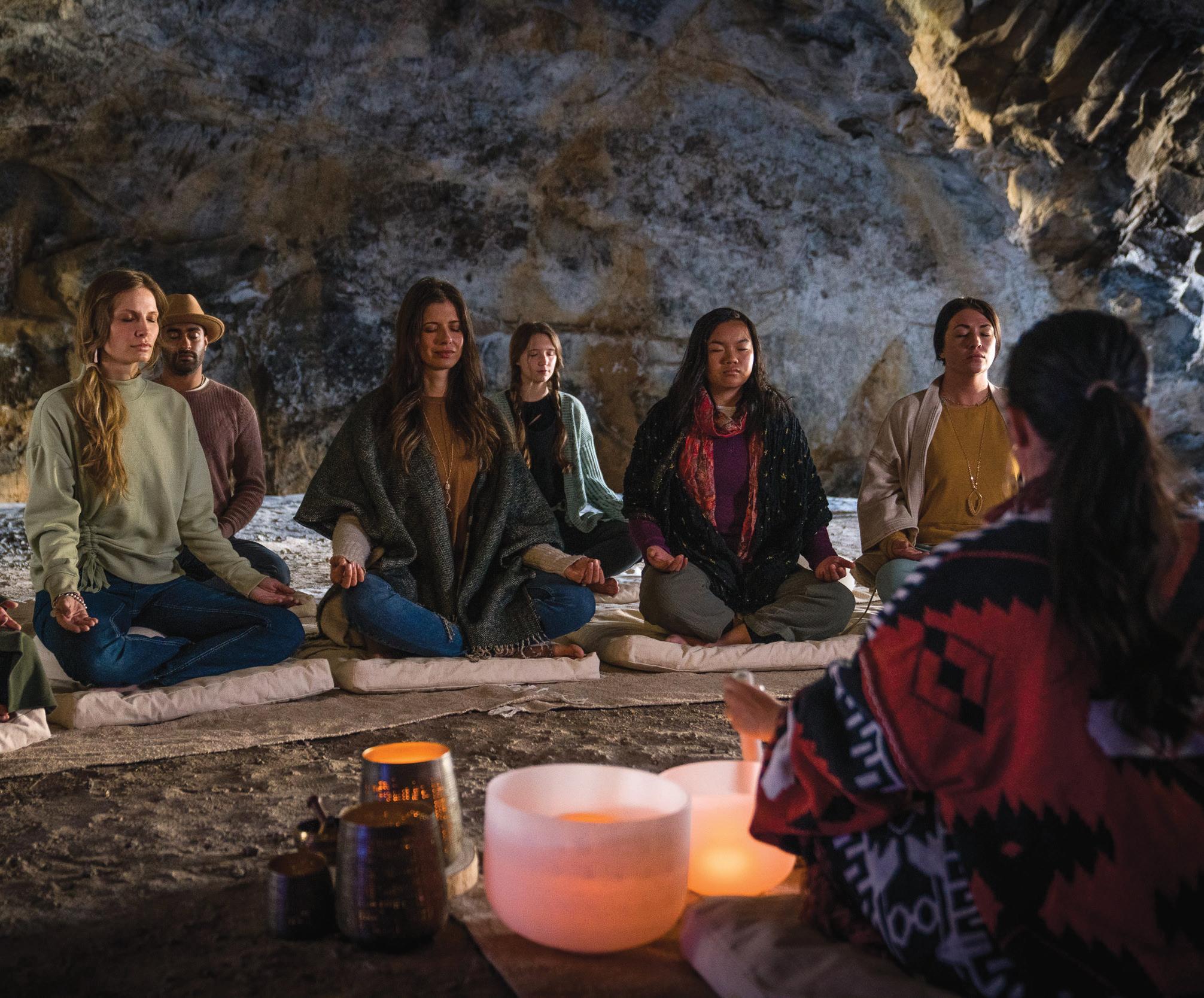
suggestion from inn staff to silently state an intention to a foottall, weathered gnome statue with a mischievous smile and enter. After taking a few steps, you emerge, struck by the view of more than 400 acres of sloping wine country hills, meadows and farmland, connecting you to the beauty that lies within.
Mindful Mondays meditation sessions are each week at 11 a.m. (www.theground.love)
Ancient, cataclysmic forces shaped one of the most dramatic spaces for meditation here. Lava that once flowed through this land cooled and formed a subterranean, cave-like lava tube exposed during construction of the Tom Fazio Championship Golf Course. The natural feature, which remains at about 50 degrees year-round, is used as a special venue for meditation and immersive sound baths.
Newly launched Somatic Studio sessions include guided meditation, breathwork, sound healing and other wellness offerings designed to support immunity during cold season, bring calm during the holidays and set the stage for a new year. (www. juniperpreserve.com/wellness-at-juniper-preserve)
This luxury wellness hotel and thermal spa offers meditation along with breathwork, sound healing, yoga and other wellness offerings. (www.cascada.me)
Set in the Coastal Range, between forested bluffs and Siletz Bay, the locale is already meditative. Amplify that with instructor-guided meditation sessions each morning, designed to bring clarity, peace of mind and a grounded beginning to the day. (www.salishan.com)
Meditation classes and other more holistic well-being programs are guided by licensed facilitators at this luxurious retreat center serving farm-to-table meals in the Applegate Valley. (www.willowwindwellness.org)
Guided meditations are offered in the parlor, at the spa sanctuary or beside the outdoor meditation pond. (www.balchhotel. com/spa)
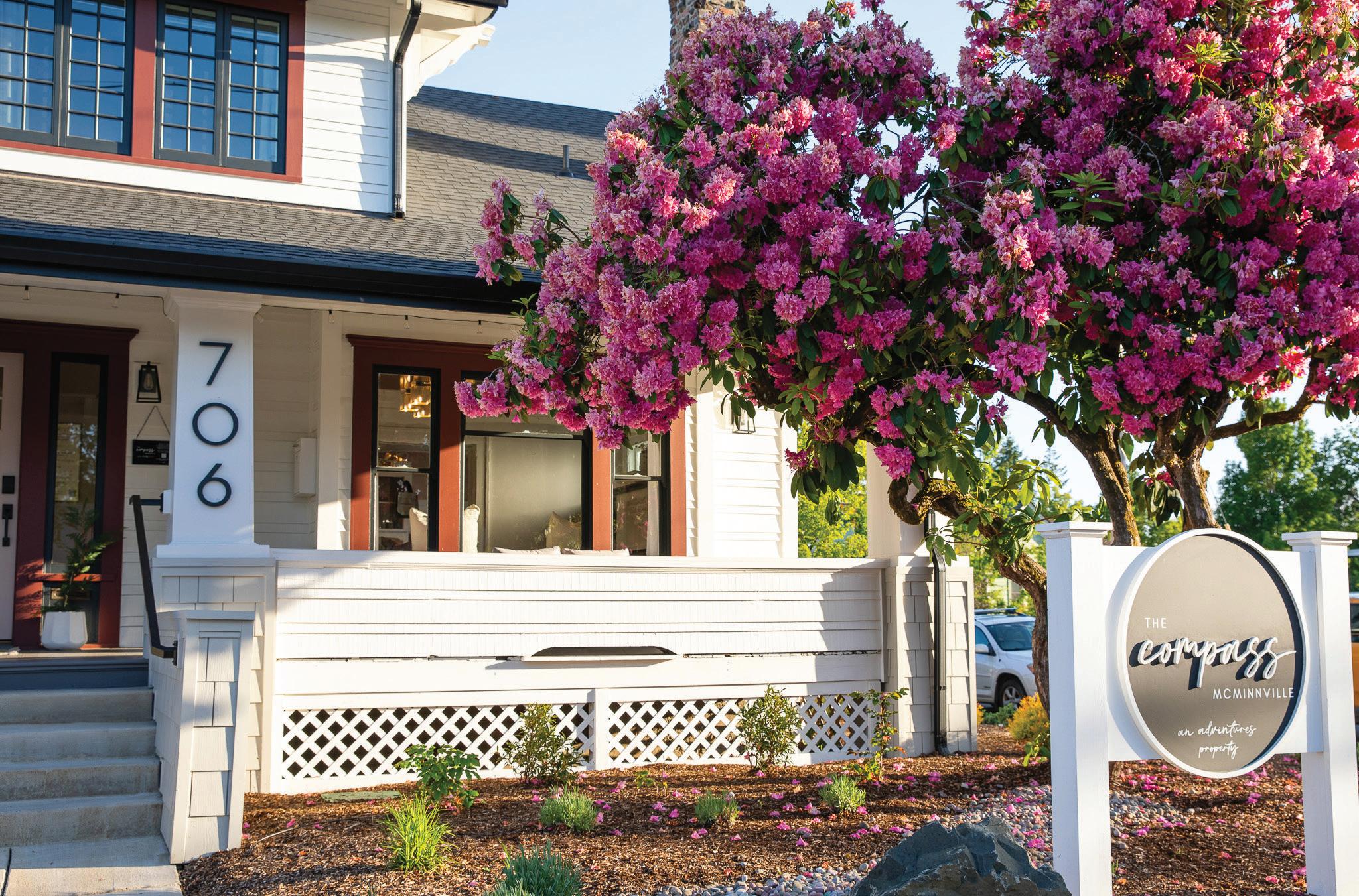


written by Kerry Newberry
SOMETIMES INSPIRATION strikes when you least expect it. For Christie Toal, that was years ago on a trip to Acadia National Park. After she and a friend hiked through a torrential rainstorm, they decided to skip tent camping and instead booked a last-minute stay at an inn.
“The entire process was so easy from booking the room on the phone to immediately getting a keycode by text,” she said. Set in a historic house, the renovated eight-room retreat offered seamless self check-in. Even without a traditional front desk, the space felt welcoming and warm. “The property stuck with me—it was such a cool model,” said Toal.
Fast-forward to a few years later, and Toal was ready to leave her corporate gig and launch something new. After traveling the world for work and sleeping in every type of accommodation imaginable, she was drawn to a business that combined community, hospitality and adventure. Toal scoured prime spots on the West Coast, seeking properties she could transform into something special. After one visit to McMinnville, she was hooked and began modernizing a 1914 Craftsman into her future. Her vision was to create a lodging experience for adventure-minded travelers in the heart of wine country.
In September, Toal opened The Compass McMinnville—a beautiful retreat with elevated amenities (spa-inspired bathrooms), historic design details and a wine library stocked with local bottles. You’ll also find stylish spaces for guests to mingle. “Some of the best experiences I’ve had traveling are because of the people I’ve met,” she said.
706 SE 1ST ST.
MCMINNVILLE www.compassmcminnville.com
Each of the four suites has luxe Frette linens, stylish Seek & Swoon blankets and spa bathrooms with organic bath products. Some rooms have enhanced details (book the East Suite for the prettiest reading nook). For longer stays, the standalone studio in the back of the property has a king bed and queen pullout sofa, electric fireplace and kitchenette.
For ideas on where to eat and drink or for impromptu adventures, check out the Advintures deck of cards in each room. It’s a collection from owner Christie Shoal’s favorite places to explore in the area and includes everything from tasting rooms and working farms to cycling routes.
Sip complimentary morning coffee in the living room set with comfy couches and the perfect faux fur reading chair. An adjacent small library stocked with food and wine books also has an honor bar featuring a curated selection of remarkable wines by indie winemakers.
The inn is a short walk to many exceptional independent restaurants including Thistle, Pinch and Grounded Table. Each suite receives two $10 vouchers to spend at local hot spots Alea Bakery and Café and Aveline. For pinot noir fans, you’re also a short stroll to top tasting rooms.
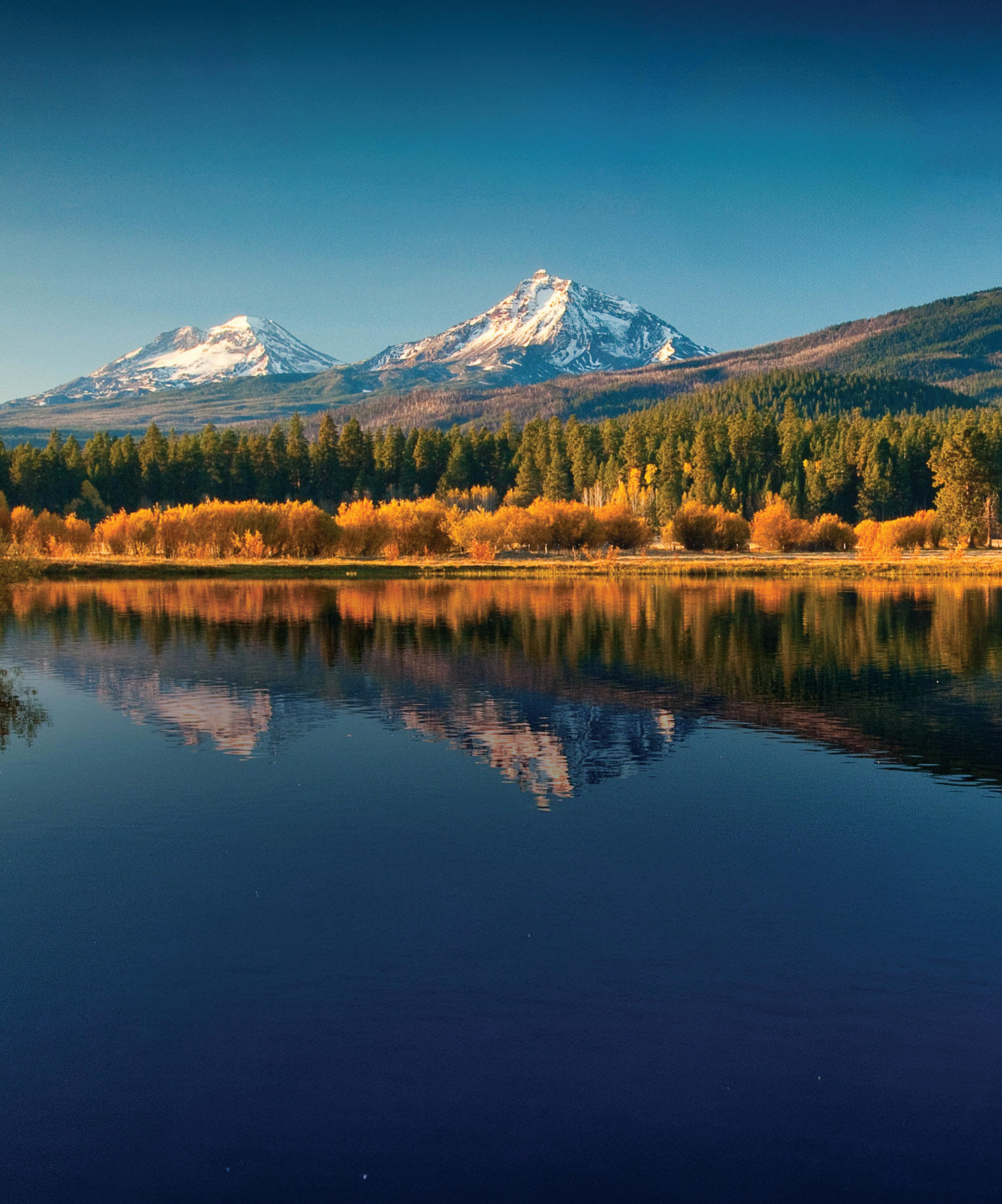


The Rose City has holiday charms for any agenda written by James Sinks
OH, THE RUMORS outside are frightful. But the Rose City? Actually, pretty delightful.
If you’re among those who’ve been avoiding Portland of late, there’s no better time to get reacquainted than during the happy hubbub of the holidays. Business windows twinkle, litup Christmas ships bob in the river, Nutcracker ballerinas twirl and a festive tree shines over Pioneer Courthouse Square.
As you wander the famously walkable cityscape, you may wonder where exactly is the hellscape that people keep warning about. With apologies to Mark Twain, reports of Portland’s demise have been wildly exaggerated.
Yes, the pandemic and aftermath were tough in spots, as some businesses moved out, people without homes moved in and litter spread. Now, thanks to an all-hands campaign by civic, business and nonprofit leaders, streets are cleaned daily, tourist foot traffic is approaching pre-pandemic levels and falcons are even chasing sidewalk-fouling crows, according to Portland Downtown Clean & Safe, a business-financed service district.
While Portland routinely wins accolades from afar, notably for its world-class food scene, local leaders are now heavily courting nearby neighbors to rediscover what they’re missing. It’s a lot.
In addition to downtown, where the skyline now includes the ritzy Ritz-Carlton tower, in scattered neighborhood districts there’s eclectic charm, art, parks and a palate-pleasing smorgasbord of food carts and restaurants.
The array of shopping options are just what the retail therapist ordered. Make things more spirited and follow the (weaving) footsteps of Portlanders Willie Smith and Joe Baessler, whose annual drunk shopping trips have become a thing of local lore.
Nineteen years ago, the onetime staffers for local elected officials met for beverages at the venerable
Jake’s Famous Crawfish. After Joe recalled how his midwest relatives would hit stores after hitting the bar, the two set out with a list scribbled on a cocktail napkin.
They loved it and so did their soon-to-be wives. Joe and Willie have repeated the tipsy tradition every year since, through life’s ups and downs, through cancer diagnoses and kids, and through the evolution of downtown—which they agree is noticeably on the upswing.
Joe, now executive director of labor organization Oregon AFSCME, hands out gift bags on their shopping forays. Willie, recently retired, offers advice with a wink.
“Everything in moderation, including moderation,” he laughed.
DOWNTOWN • HOLIDAY DINING + DRINKS • LIGHTS Day
At high-end Higgins restaurant, there’s a happy din in the kitchen and dining room again. It’s a reversal from this summer, when co-owner and James Beard-recognized chef Greg Higgins sent an anxious plea on social media for customers to return.
It worked. “A healthy downtown is vital to the life of our city and our state,” he wrote after the reservation book refilled.
With its location, sublime cheese and charcuterie, and big bar menu, it’s a perfect setting to fuel up, warm up and head out.
An outpost in the historical range of the Chinookan-speaking Multnomah and Clackamas peoples, Portland was named in 1845 via a best-two-of-three coin flip, after Portland, Maine. e loser? Boston.
You can see the fate-deciding “Portland Penny” among many exhibits at the Oregon Historical Society on the tree-lined South Park Blocks, which connect to the Portland State University campus, home to a year-round farmers market every Saturday.
Across the park is the Portland Art Museum, where a $111 million new courtyard and pavilion is slated to open in midNovember and unveil 100,000 square feet of new space. A three-story glass addition, named after a late Portland painter, Mark Rothko, connects the museum’s two major buildings.
Finish your list at swanky Swine Moonshine & Whiskey Bar, and start your shopping the old-fashioned way. Nearby options range from Nordstrom and the Pioneer Place Mall to


century-old menswear merchant John Helmer Haberdasher, the flagship Columbia Sportswear store and e Marie-Marie, a perfumery named after a queen and a dog.
Not open yet but already creating a buzz is the long-discussed and under-construction James Beard Public Market, which will bring food and other vendors together when it debuts in early 2026.
Don’t forget to snap selfies under the holiday tree in Pioneer Courthouse Square, affectionately known as Portland’s living room.
Now, the living room also has a fish tank. Well, with fun fake fish, anyway. A block away, acclaimed painter Mark Bennett’s Portland Aquarium teems with whimsical oceanic dioramas. While there are no live animals, there are black lights and laughs.
For smiles involving actual water, check where the Christmas ships will be afloat. Started with a single sailboat in 1954, it’s now a nonprofit-run event with more than seventy-five lighted recreational boats in two separate fleets. If they’re cruising past Hayden Island on the Columbia, grab dinner at dockside Pal’s and hang with your pals by the fire pits.
Another illuminated option is ZooLights, a dazzling wonderland at the Oregon Zoo complete with train rides and snacks. Make reservations and expect crowds on weekends, but don’t expect many real animals. Most are sleeping, and the reindeer had better be practicing their flying.

Fix any post-zoo shivers with a fiery downtown tradition at Huber’s Cafe, a stained-glass-decorated mainstay since 1879. e bar staff rolls magic carts to your table to concoct flambéed Spanish coffees. Sadly, they won’t roll you home afterward.



Do you have holiday tunes on your playlist? Serenade new sweaty friends on the 2.6-mile loop from Tom McCall Waterfront Park across the Willamette River. With bridge crossings and floating sidewalks, it’s one of the state’s signature running and walking routes.
When you’re done, donuts will be nearby—joy to the world. Portland elbowed its way into donut royalty when campy Voodoo Donuts first burst onto the scene in 2003, and you can grab bacon maple bars at three bubblegum-pink-paintsplashed locations. But there’s no shortage of delicious options, from brioche at Blue Star Donuts to vegan at Doe Donuts + Ice Cream.
Since 1974, Portland Saturday Market has assembled artisans and their wares under the Burnside Bridge and nearby. It’s the largest continually operating open-air craft market in the country, and a poem to local workmanship. Indoors on certain weekends, you also can support local makers at the Portland Bazaar and the warehouse-housed Portland Night Market (also open during the day).
Before the new Ritz Carlton was built, the city block housed dozens of food carts. Recalling that urban buffet, a food court at street level called The Flock PDX includes eight vendors— among them Mexican, Thai and Chinese. Unlike the old days, there’s indoor seating and beer.
Between downtown and Mount Tabor, a volcanic cinder cone with trails to views, sit the charming Hawthorne and Belmont districts. Lose hours and dollars among vintage shops, comic and music dealers, a movie theater-turnedarcade and bountiful caffeinating options. (Not surprisingly, Portland was recently named the country’s best coffee city by WalletHub.) If you have pagans on your holiday list, Moonshadow Emporium caters to those who like Halloween better than Christmas.
For magic in a mesmerizing and neon way, bounce into immersive digital art at Hopscotch, which got its start in Texas. There’s a bar and a glowing ball pit. What could go wrong?
On Division Street, it’s a labor of culinary love at L’Echelle. Opened after one of the visionaries passed away, the place feels like a candle-decorated country cottage and invites you to savor life while we have it, with inventive cocktails and French fare including niçoise salad and delicious carrots (yes, really).
Over dinner, do a little sleuthing. In 2010, artist Chris Willis started putting his growing collection of plastic, lit-up “blow mold” Santas in December in random locations. Dubbed the “Santa Clones,” he now has 450 of them, and after setup he puts hints on Instagram at @chriswillis. The clues aren’t obscure, he said, as the goal is for people to find the free display.
“They’ve become a part of the city’s holiday events,” Willis said. There’s even a local Santa Clone-inspired
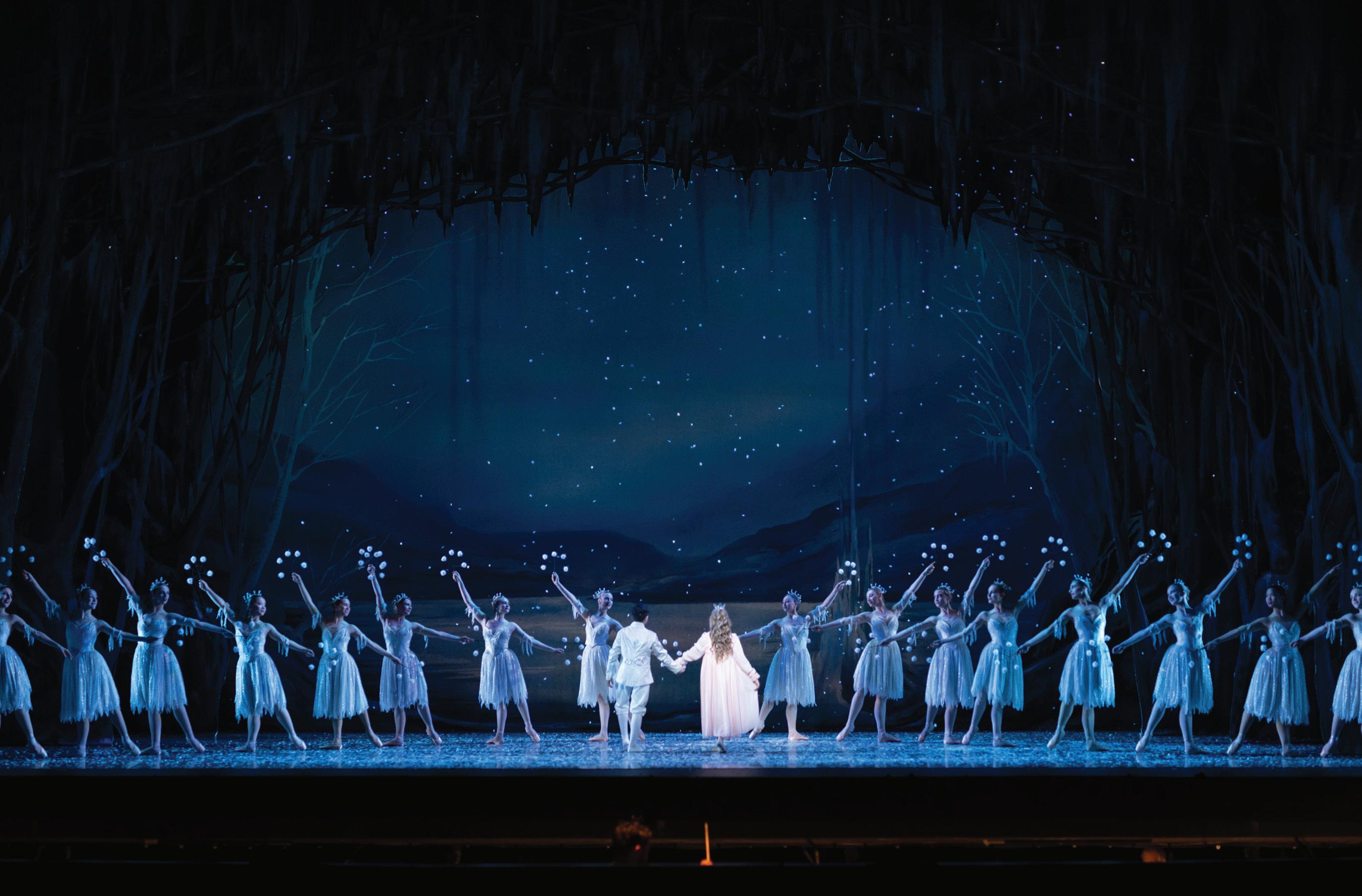
beer. “I suppose it’s become my tradition, too. Their glow still makes me think of the holidays at my grandma’s house.”
For the happy glow of winning (hopefully), check to see if the NBA’s Trail Blazers—with new energy, new owners and returning, but presently injured, superstar Damian Lillard—are in town.
No matter what happens, celebrate afterward at downtown’s Black Cat Frozen Custard, where the dairy deliciousness includes affogatos, and there’s a coffee speakeasy through a wardrobe.
Your morning caroling tune-up will come in handy at Hallway PDX, an 11-foot-wide karaoke bar in Old Town that’s decorated like the spooky corridor from The Shining, partly filmed at Timberline Lodge. Cocktails might explain it, but Jingle Bells never sounded so good.
One of the country’s largest urban preserves and dedicated in 1948, sprawling Forest Park on the city’s northwest edge touts a basketweave of 80 miles of greenery-lined trails. The paved ones are better on early damp mornings.
Once your appetite awakens, your inner hungry hippie will feel happy and healthy at Off the Griddle, started as a food cart and now a vegetarian breakfast hot spot with one of its two locations in the Alberta Arts District. Choose from waffles many ways, and don’t miss the surprising not-really-sausage.
Explore Northeast Alberta Street afterward, where in addition to small businesses you’ll find murals, street art and signs honoring the heritage of the Portland Black community, which grew in the area in the years following World War II.
Built in 1914 overlooking downtown, Pittock Mansion was briefly home to an early Oregonian publisher and real estate investor who’d come west as a teen on the Oregon Trail. Now nonprofit-run, it’s open for tours and decked out for the holidays.
Retreat from the bustle to airy and award-winning Amaterra Winery, which is tucked in the nearby west hills yet feels as though you’ve escaped to wine country. Along with valley views, seasonal menus and smooth pinots, the winery offers holiday tea on Sundays come December.
With luck, you’ll be done in time to catch the 2 p.m. matinee of Tchaikovsky’s The Nutcracker, presented by the Oregon Ballet Theatre. Sugarplum fairies and the rest of the candy-addled dream troupe come to life at the Keller Auditorium.

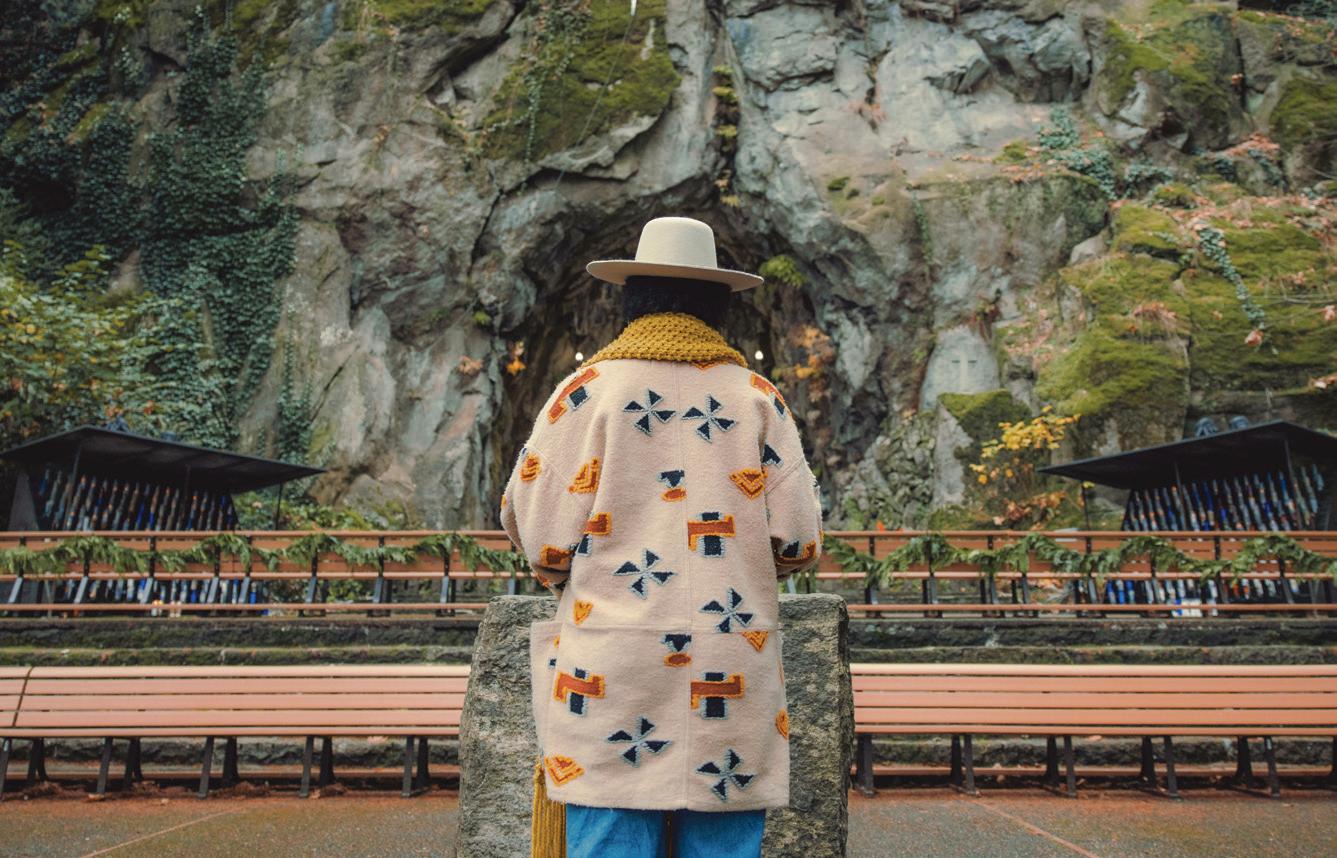
Any remaining items on your list? Get lost in the flagship Powell’s City of Books, the largest new and used bookstore in the world, with books and gifts and great Oregon magazines in a building that covers a full block. From there, it’s a quick trip to the Northwest 23rd Avenue district, with boutiques and the first location of Portland’s inventive Salt & Straw ice cream parlor, where a pre-dinner scoop is completely understandable. If you made reservations long ago, immerse in the regional cuisines of Thailand at Langbaan, a 2024 James Beard Award winner as one of the exquisite foodie experiences in the country.
If not, with two fireplaces plus steak, seafood and macaroni and cheese, the Fireside is another fine option among many along the popular streetscape.
For a weekend finale, join the pilgrimage to The Grotto, formally the National Sanctuary of our Sorrowful Mother. Constructed in 1924, the 62-acre property in Northeast Portland includes a cave with an altar. During the holidays, the grounds shimmer with lights, and local choirs perform inside the adjacent Catholic chapel, known for cathedral-like acoustics.
It’s a chance to relax, listen and reflect on the meaning of the season, whatever that is to you. And Portland, like reconnecting with an old friend, is happy to help.
Amaterra Winery www.amaterrawines.com
Black Cat Frozen Custard www.blackcatfrozencustard.com
Doe Donuts + Ice Cream www.doedonuts.com
Fireside www.pdxfireside.com
The Flock PDX www.flockpdx.com
Higgins www.higginsportland.com
Huber’s Cafe www.hubers.com
Jake’s Famous Crawfish www.jakesfamous.com
L’Echelle www.lechellepdx.com
Langbaan www.langbaanportland.com
Off the Griddle www.offthegriddle.com
Pal’s www.palswithus.com
Swine Moonshine & Whiskey Bar www.swinemoonshine.com
The Benson www.bensonhotel.com
Hotel deLuxe www.hoteldeluxe.com
Hotel Lucia www.hotellucia.com
Kimpton Riverplace www.riverplacehotel.com
Ritz Carlton www.ritzcarlton.com
Sentinel www.sentinelhotel.com
PLAY Christmas Ships www.christmasships.org
The Grotto www.thegrotto.org
Forest Park www.portland.gov/parks/ forest-park
Hallway PDX www.hallwaypdx.com
Hopscotch www.letshopscotch.com/ locations/portland
Oregon Ballet Theatre www.obt.org
Oregon Historical Society www.ohs.org
Portland Art Museum www.portlandartmuseum.org
Portland Aquarium www.mikebennettstudios.com/ portland-aquarium
Pittock Mansion www.pittockmansion.org
Portland Trail Blazers www.nba.com/blazers
Powell’s Books www.powells.com
ZooLights www.oregonzoo.org
For a weekend finale, join the pilgrimage to The Grotto, formally the National Sanctuary of our Sorrowful Mother.
Constructed in 1924, the 62-acre property in Northeast Portland includes a cave with an altar. During the holidays, the grounds shimmer with lights, and local choirs perform inside the adjacent Catholic chapel, known for cathedral-like acoustics.
In
the windswept Southern California desert, abundant art meets nature’s palette
written by James Sinks

LONGER THAN a football field, a sea serpent dives into the desert sand, emerging on the other side of a road. Nearby, a giant scorpion and grasshopper tower over the scrub. Mammoths stand watch. And a pair of giant tortoises peek through underbrush.
The metalwork menagerie—there are some 130 separate creatures in all—welcomes visitors to the windswept landscape that surrounds the sleepy Southern California enclave of Borrego Springs, a place where art meets barrenness and beauty, day and night.
In a bowl with mountains jutting on three sides, the community feels a bit like an oasis that time forgot, with low-slung resorts that beckon winter escapees yet with little of the campy glitz of Palm Springs or the beach bustle of San Diego, each a ninetyminute drive away. Winter temps average a comfortable 71 degrees, compared to 109 degrees in July.
Likely named after nearby springs where herders watered their sheep—borrego is Spanish for lamb—the unincorporated desert township is home to about 3,500 people, four public golf courses, no stoplights and a surprising creative scene.
Outside town, adventures and sweat await in every direction. Borrego Springs is completely surrounded by the massive AnzaBorrego Desert State Park, created in 1932 and California’s largest park at 916 square miles.
Named in honor of the eighteenth century Spanish explorer Juan Bautista de Anza, the stark topography includes steep mountainsides, rugged badlands, occasional springs, dry lakebeds and boulder piles. There are more than 100 miles of hiking trails, twelve wilderness areas, campgrounds, bighorn sheep and, in years with winter rain, explosions of spring wildflowers. Start at the state park visitor center on the west edge of town and grab maps, buy $10 day-use parking passes and peer into a pond with tiny, colorful desert pupfish, which can survive even when water temps climb past 100 degrees. If they could talk, they’d hound you to stay hydrated, as even winter jaunts in the desert tend to be toasty, with little shade.
A 2.8-mile round-trip hike takes you to the tree-filled Borrego Palm Canyon, which is just as advertised, with palm trees in a canyon. Longer trail options snake to
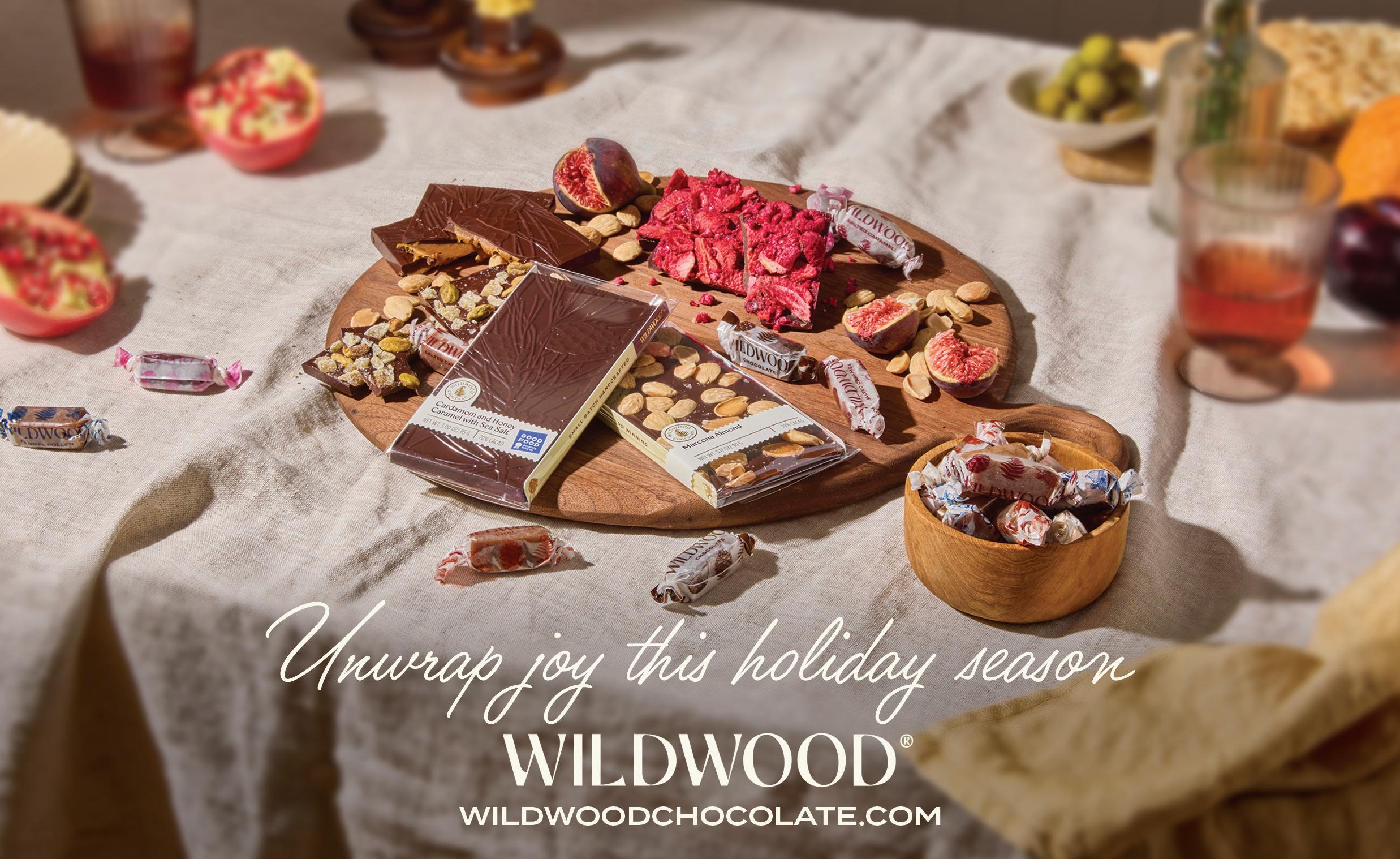









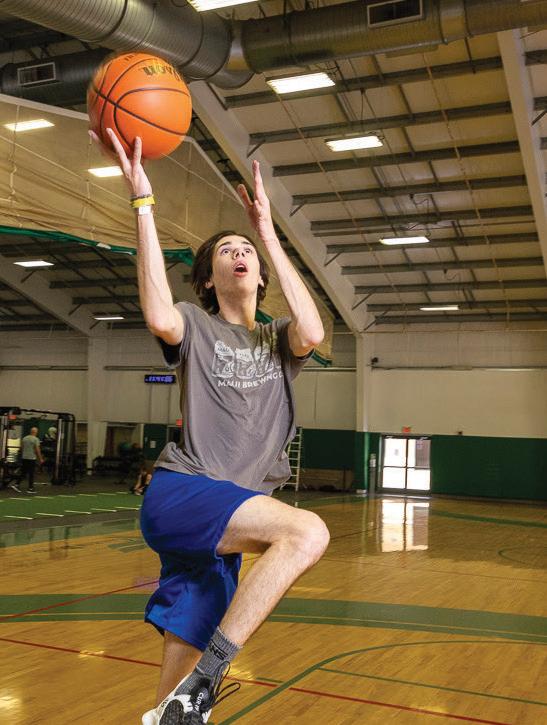


















petroglyphs, through a narrow slot canyon or upward to overlooks. Near mud-formed caves, a trailside Hollywood and Vine replica street sign stands in the middle of nowhere.
If you’d rather explore on wheels, the lightly traveled local roads are ideal for biking, or California Overland Desert Adventures books jeep tours. Off-trail vehicles are not allowed in the park boundaries, but if four-wheeler adrenaline is your thing, a popular 85,000-acre recreation complex called Ocotillo Wells awaits east of town.
Everywhere, reliably clear skies glisten with stars after sundown. Borrego Springs was named an International Dark Sky Community in 2018.
In the middle of town is festively named Christmas Circle, a grassy roundabout and park that was named after a birth on Christmas Eve in 1775. Today it’s the center of a quaint retail and arts district, with restaurants, yoga, a whitewashed stucco Lutheran church and the headquarters of the Anza-Borrego Desert Natural History Association, where you can prowl a native botanical garden.
The nonprofit Borrego Art Institute’s campus features a showy Mid-century Modern-styled gallery—it’s one of four galleries in town—plus an all-hours outdoor “ArtPark,” with community gardens, open-air classrooms, artistic space and a café.
Visitors also learn how to raise landscaping plants, vegetables, herbs and orchard trees in the arid desert environment, said Kim Wyatt, gallery manager for the institute. A separate pottery center is open to the public from October through May.
The region also is a haven for photographers, and an annual photo contest is staged by the Anza-Borrego Foundation, the official nonprofit partner of the state park.
“Art is a bridge between people and place,” said foundation spokeswoman Jaime Purinton. “Images of wildflowers, wildlife, starry skies and sweeping landscapes tell the story of the park in ways that words alone cannot.”
At the local performing arts center, catch live shows and free Wednesday movie screenings, and a five-day film festival makes
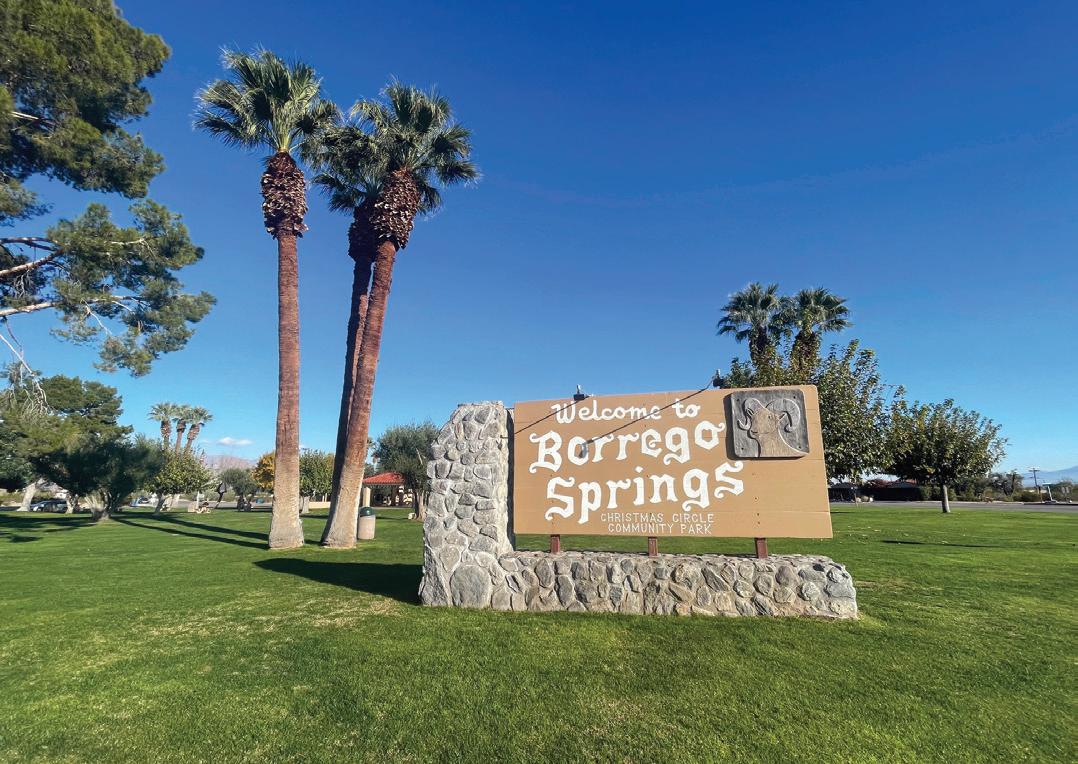
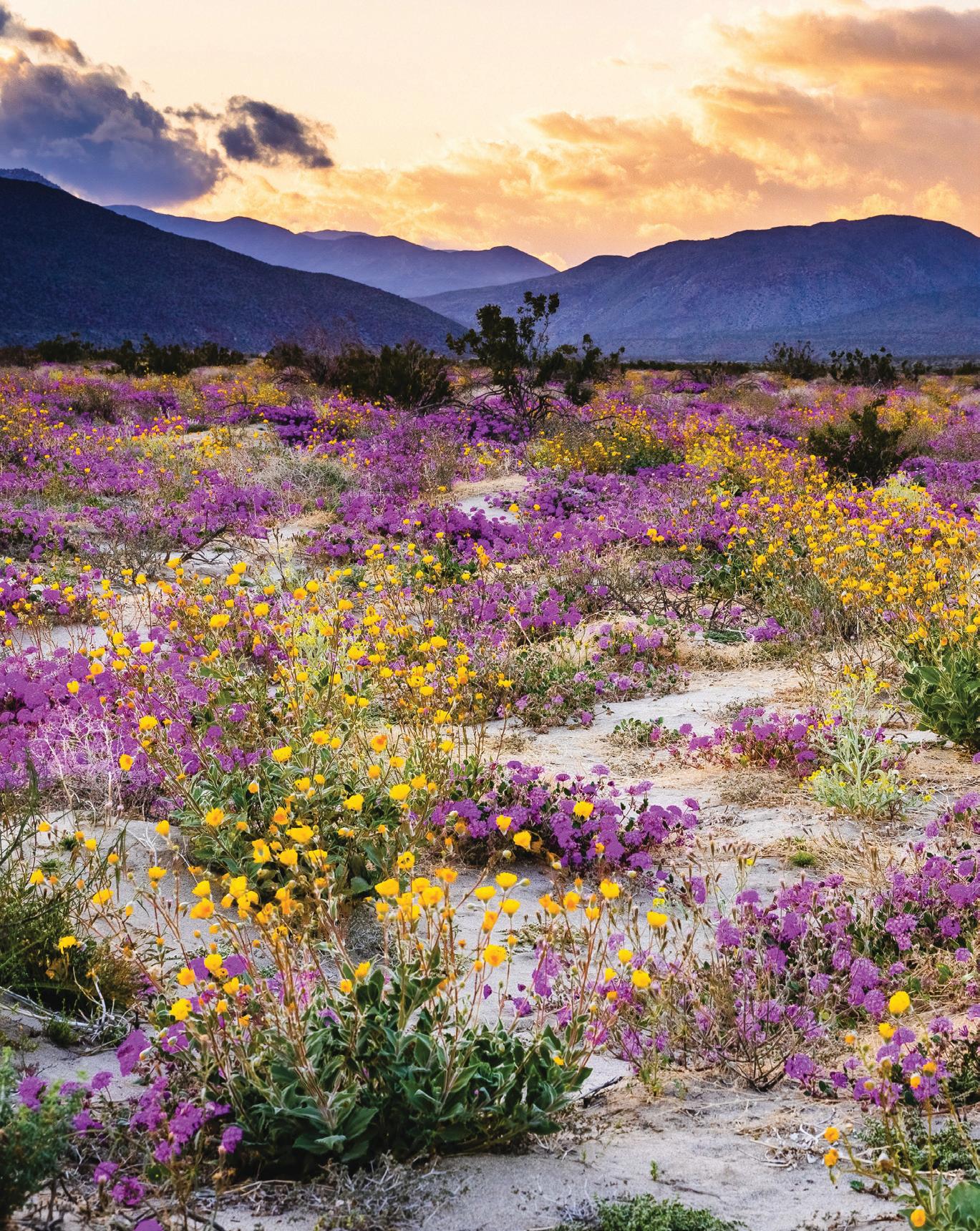
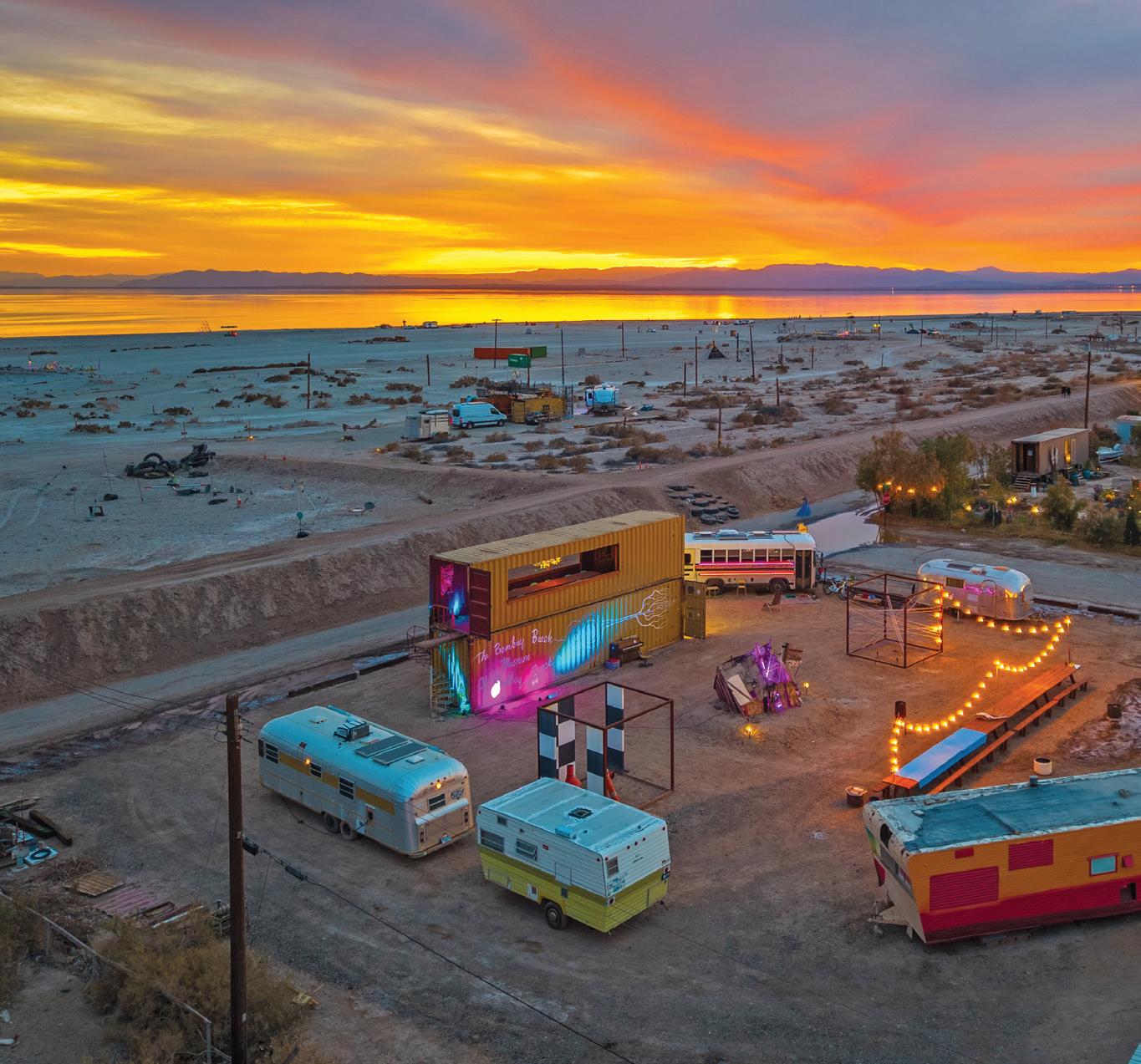
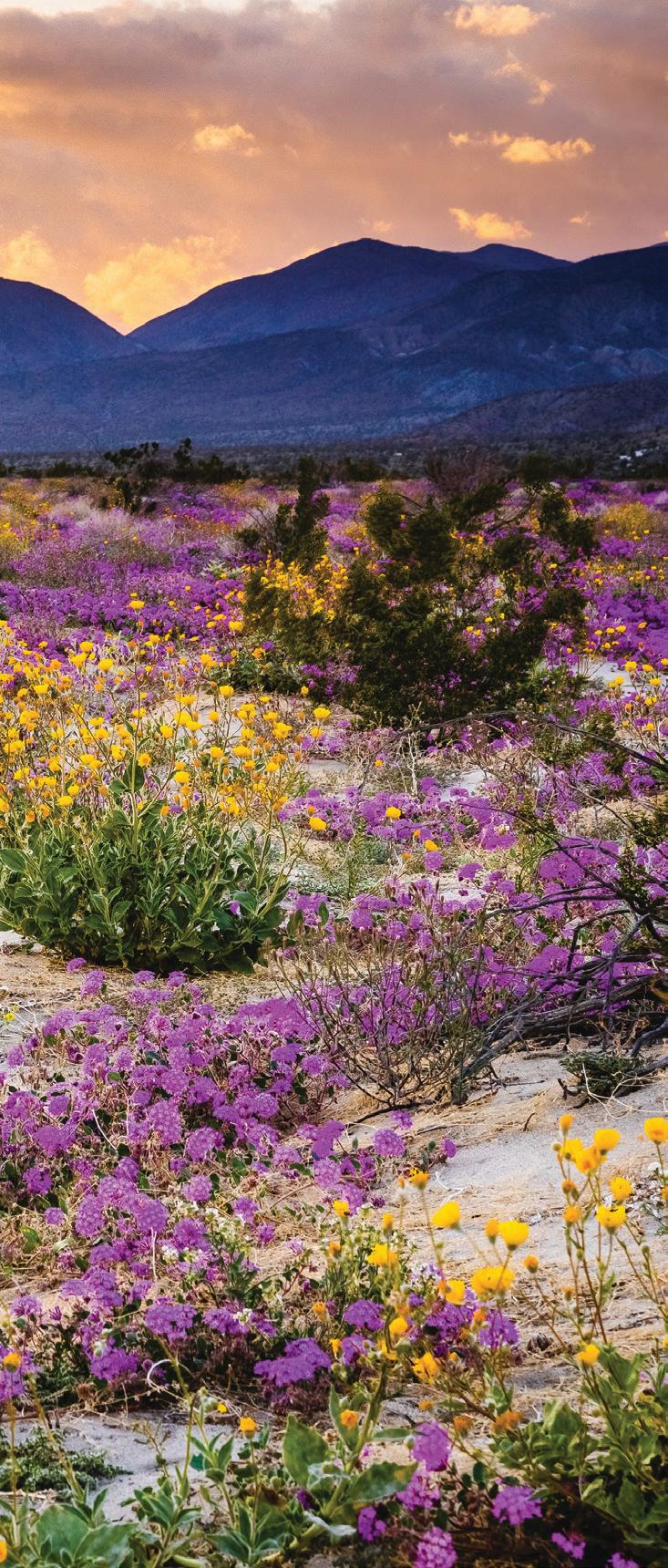
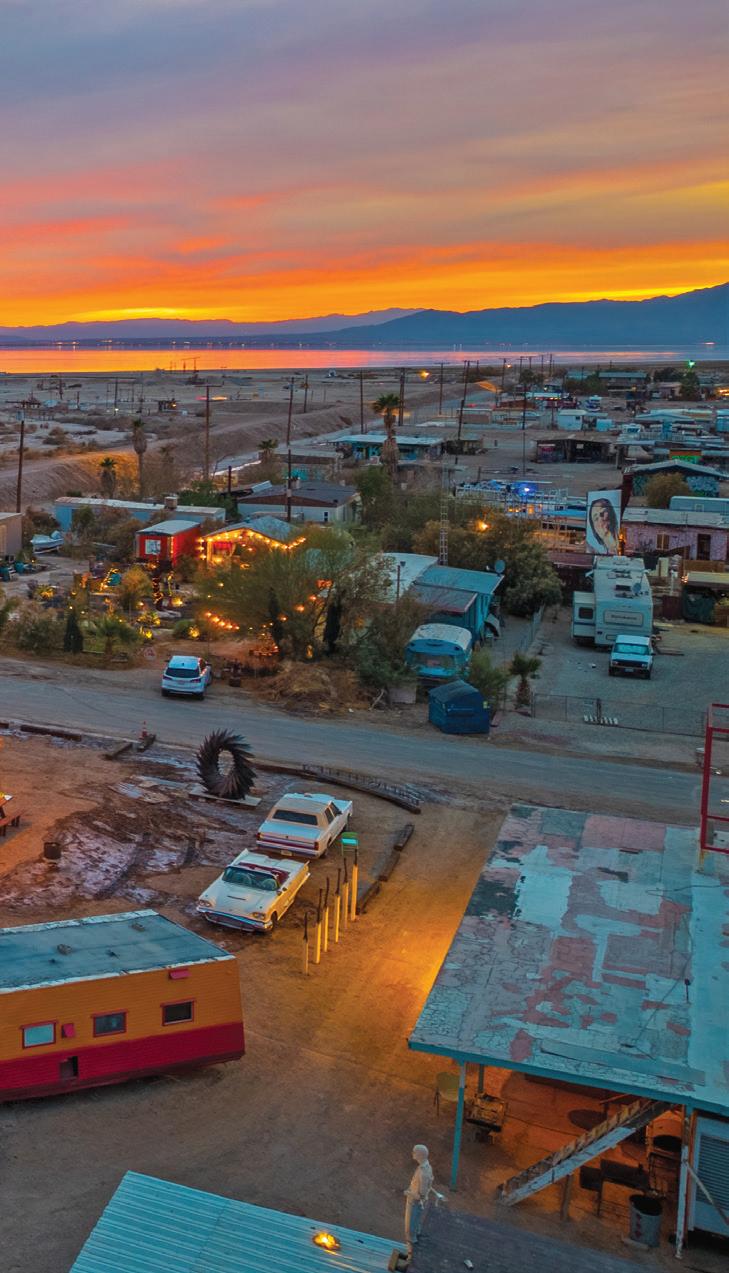

its annual run in January. Other pleasing attractions include a community concert series, plus the lack of big box stores and drive-thrus, said Françoise Rhodes, director of the Borrego Springs Chamber of Commerce and Welcome Center.
Inspired by both mythological and actual desert wildlife, the 130 local metal animals surrounding town were welded by celebrated Mexican-born metalsmith Ricardo Breceda, whose studio is about an hour away. A former boot salesman, he began creating sculptures when his daughter asked for a dinosaur.
In this part of the world, evocative desert art isn’t confined to Borrego Springs.
Thirty miles east is the Salton Sea, a landlocked lake accidentally created when an irrigation project from the Colorado River repeatedly flooded in the early 1900s. A onetime tourism hot spot and visited by the likes of Frank Sinatra and The Beach Boys, the now-dying lake is prone to algae blooms and toxic dust blowing along its receding shorelines, and the perimeter is dotted with ramshackle former resort towns. Yet amid the decay, there’s imagination.
At Salvation Mountain, fill your soul and astonish your eyes at a garishly painted, 150-foot-high monument built from cinder blocks, stucco and old tires. The place was created over a quarter century by a Korean War veteran who wanted everybody to know that God is love, and has since been named a heritage site.
In the post-apocalyptic-feeling Salton Sea subdivision of Bombay Beach, at 223 dusty feet below sea level, discover galleries, abandoned buildings splashed with graffiti inside and out, old planes repurposed into sculptures and a former drive-in filled with derelict cars. Some seventy-five outdoor pieces can be found here, and several of them debuted at the annual Burning Man art festival in the Nevada desert.
At the local Ski Inn, you’ll find nostalgia, good humor, a jukebox and the lowest-elevation establishment for burgers and drinks in the Western Hemisphere.
The local Bombay Beach Arts and Culture Center runs a tiny café on weekends and maintains a map of art locations. Among several art installations on the brackish water’s edge is a partially submerged swing set. Nearby, a stainless metalwork muses wistfully that “The Only Other Thing is Nothing.”
Like the region’s starkness and the creativity it inspires, there’s nothing quite like it.
Big Horn Burgers and Shakes www.palmcanyonrvresort.com
Carlee’s (760) 767-3262
Coyote Steakhouse www.thepalmsatindianhead.com/ coyote-steakhouse
Los Jilberto’s Taco Shop www.los-jilbertos-taco.shop
Michael’s in Borrego www.michaelsinborrego0984. s4shops.com
Red Ocotillo www.redocotillo.com
Ski Inn www.skiinn.shop
STAY
Borrego Springs Resort & Spa www.borregospringsresort.com
Borrego Valley Inn www.borregovalleyinn.com
La Casa Del Zorro Desert Resort and Spa www.lacasadelzorro.com
The Palms at Indian Head www.thepalmsatindianhead.com
PLAY
Anza-Borrego Desert Natural History Association www.abdnha.org
Anza-Borrego Desert State Park www.parks.ca.gov
Anza-Borrego Foundation www.theabf.org
Bombay Beach Arts and Culture Center www.bbartsculture.org
Borrego Art Institute www.borregoartinstitute.org
Borrego Springs Performing Arts Center www.bspac.org
California Overland Desert Excursions www.californiaoverland.com
De Anza Desert Club Golf Course www.deanzacountryclub.com
Kundalini Bianco Yoga www.kundalinibianco.com
Ricardo Breceda Art Gallery www.ricardoabreceda.com
Salvation Mountain www.salvationmountain.org
The points of interest below are culled from stories and events in this edition of 1859
Cannon Beach

Pacific City




Bandon





























Ashland Sarcasm Festival
High Desert Museum
Fraga Farmstead Creamery
Farmacopia Farms
Bush Barn Art Center


Klamath Falls

















Clyde’s Prime Rib Inn the Ground



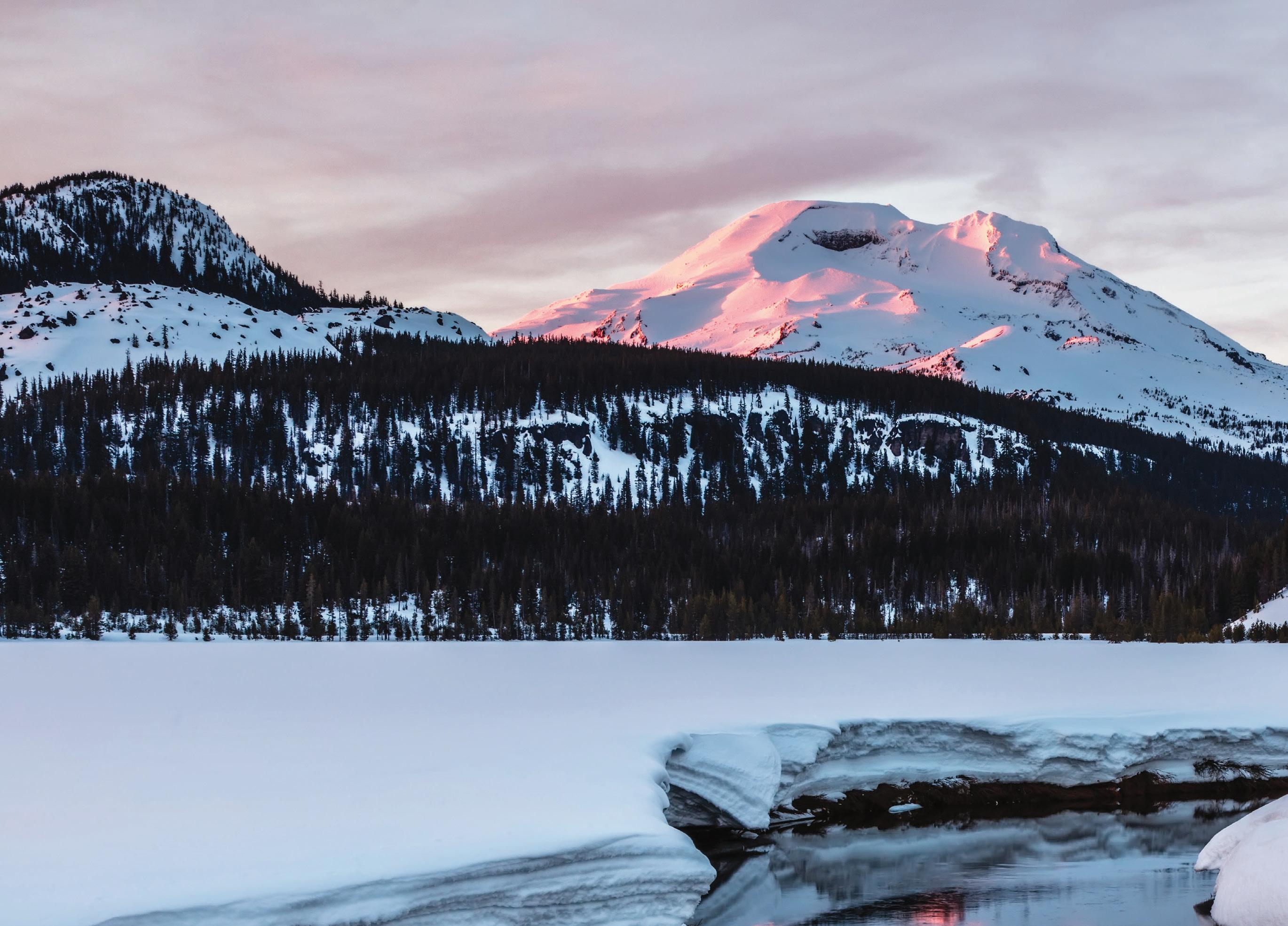




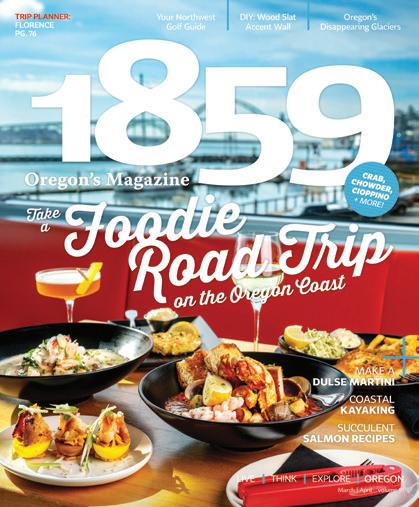

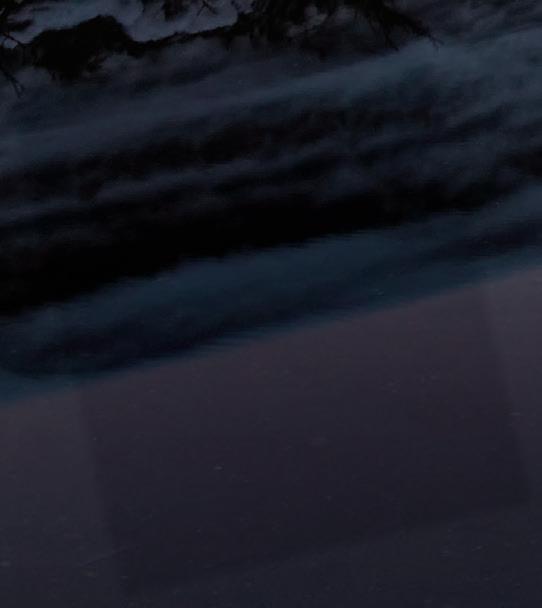


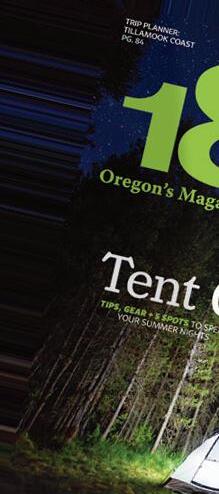




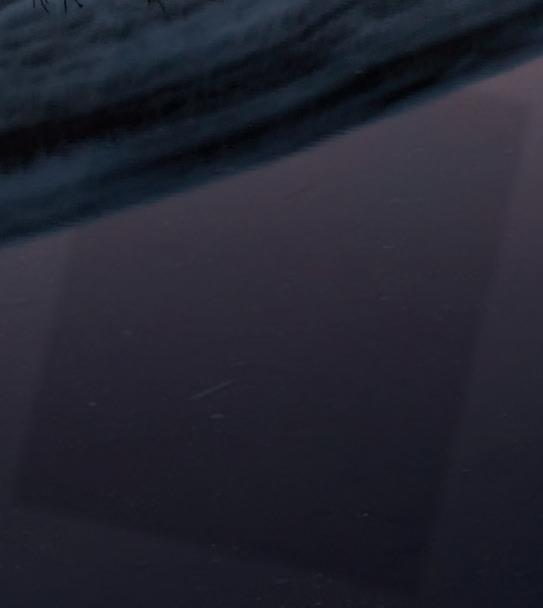

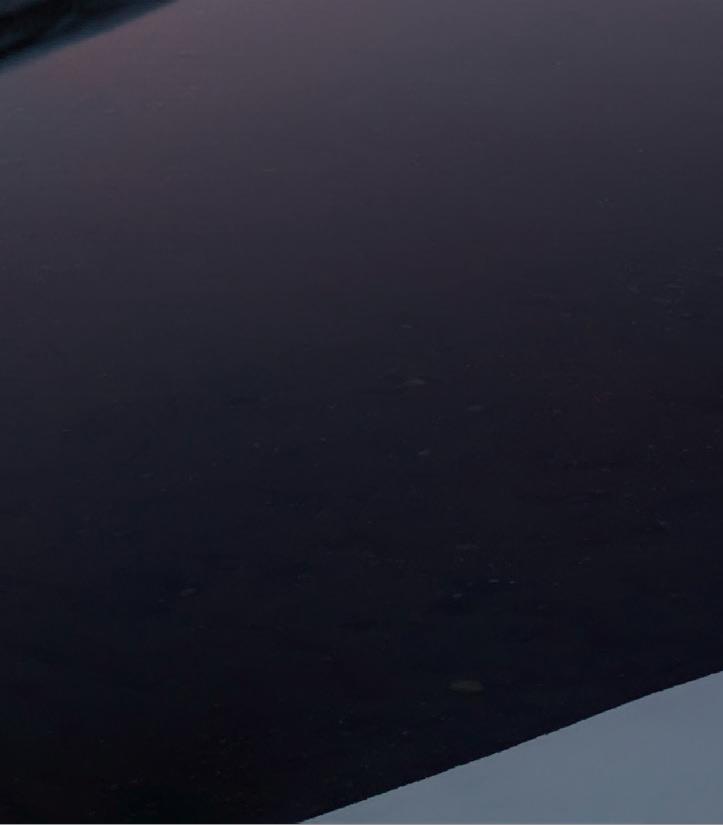
Discover the best of Oregon with a subscription to 1859 Oregon’s Magazine. Local getaways, destination dining, DIY projects and more!
Purchase a gift subscription and SAVE 50% off cover price
Subscribe today at www.1859oregonmagazine.com/gift
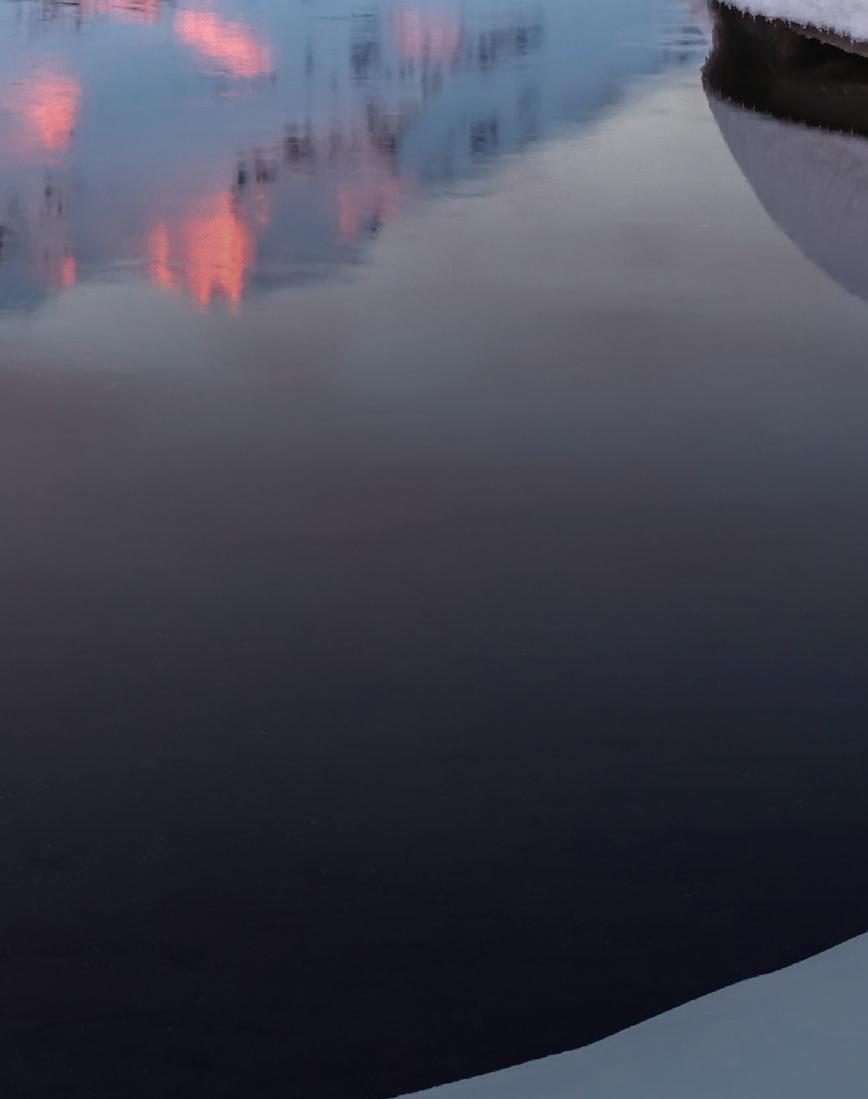

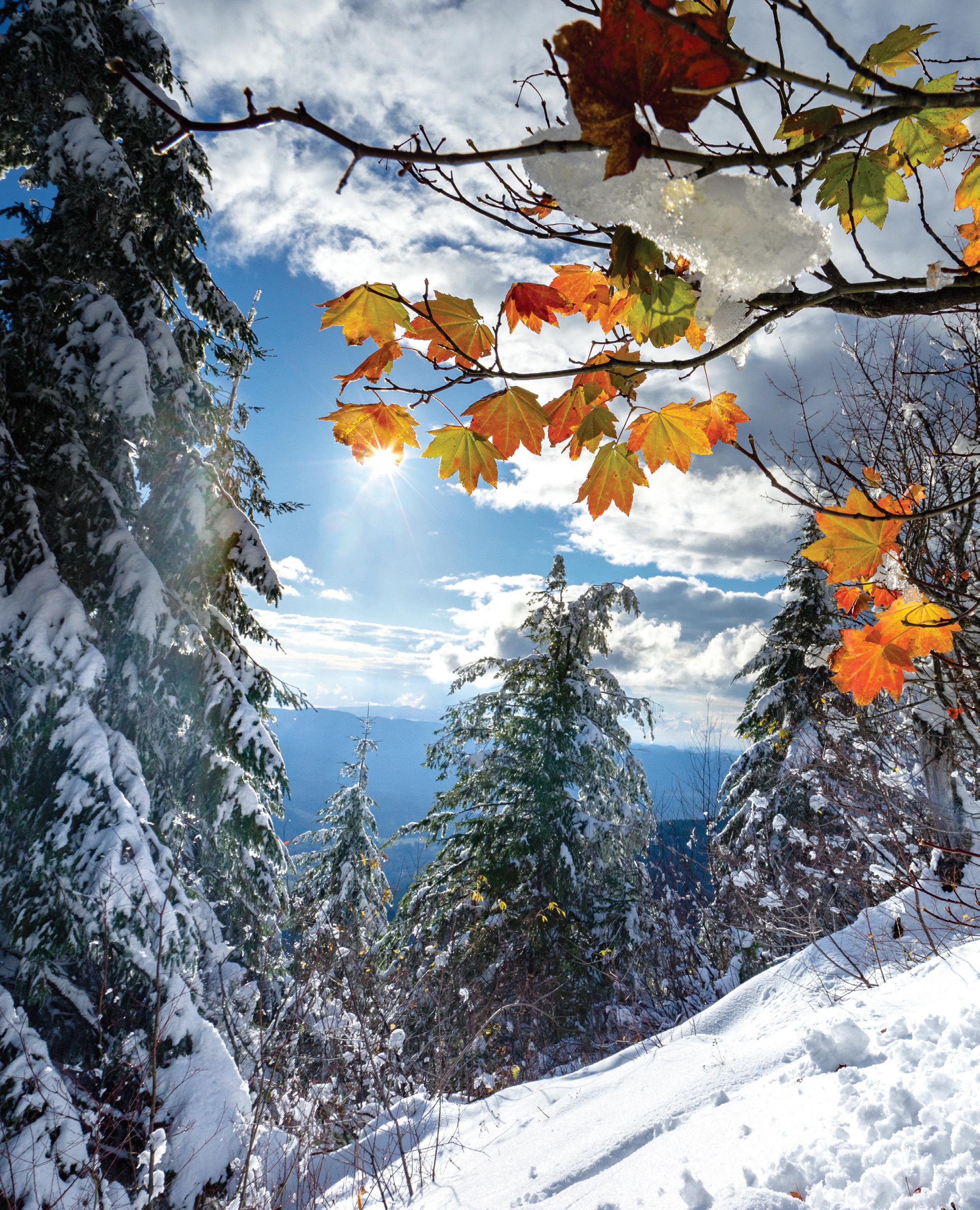




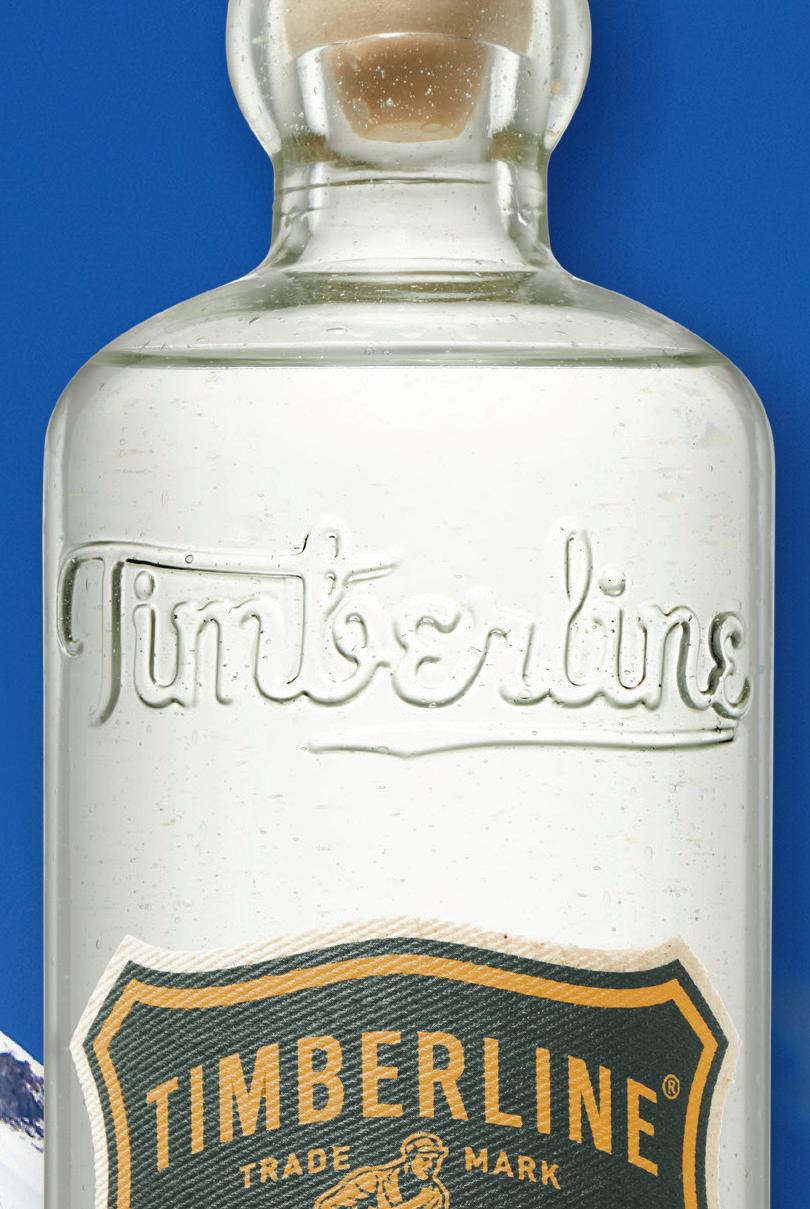
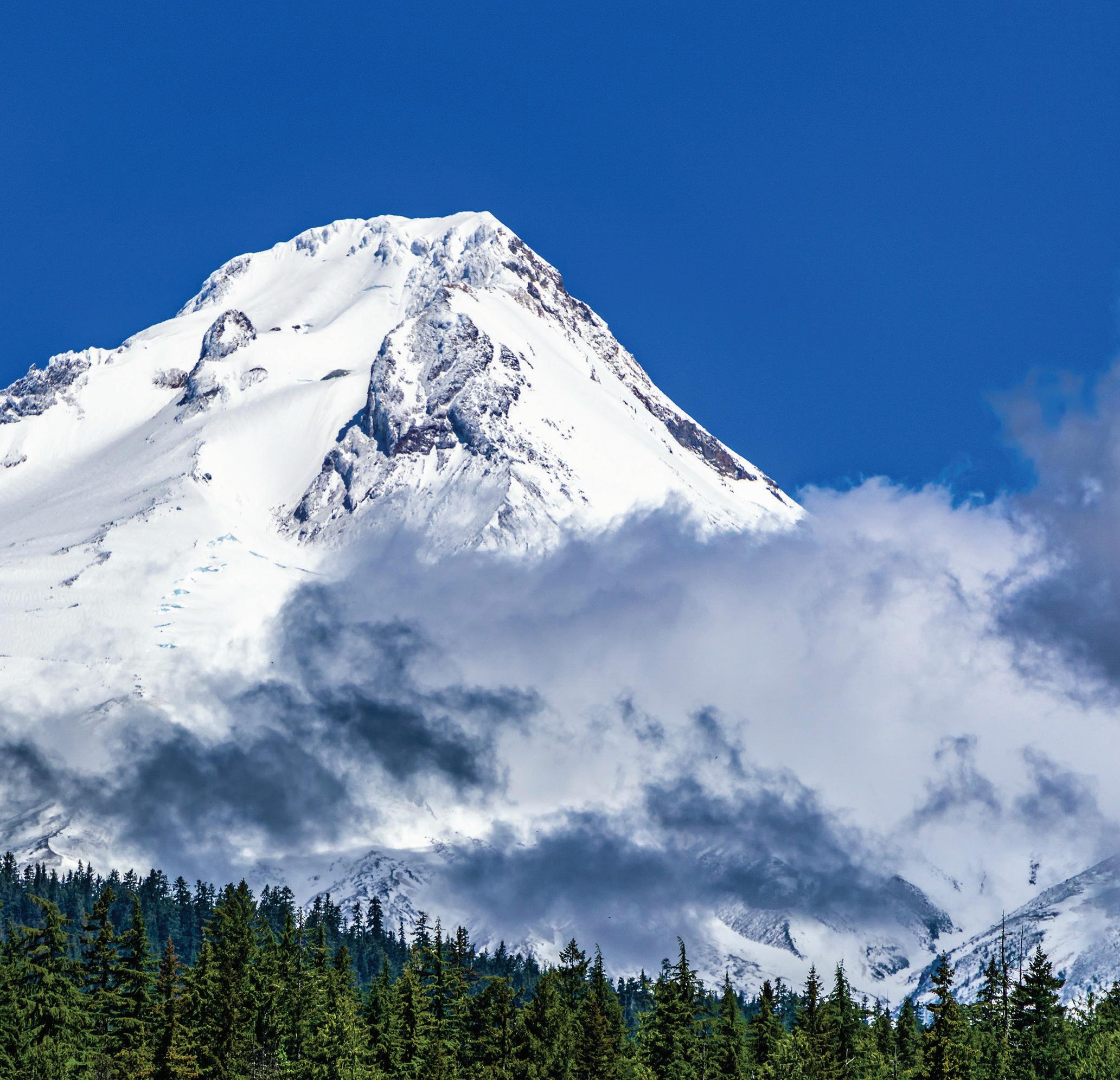

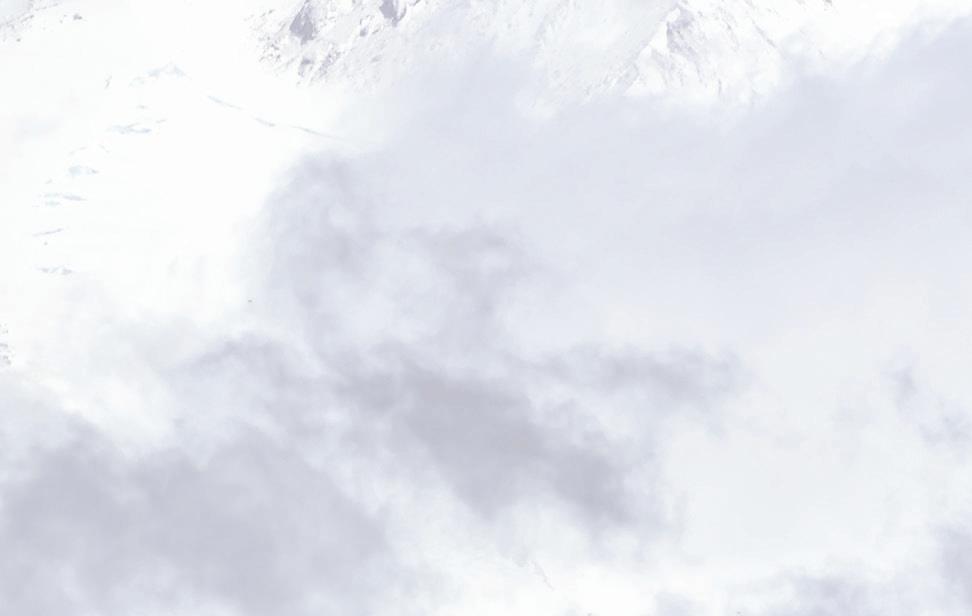
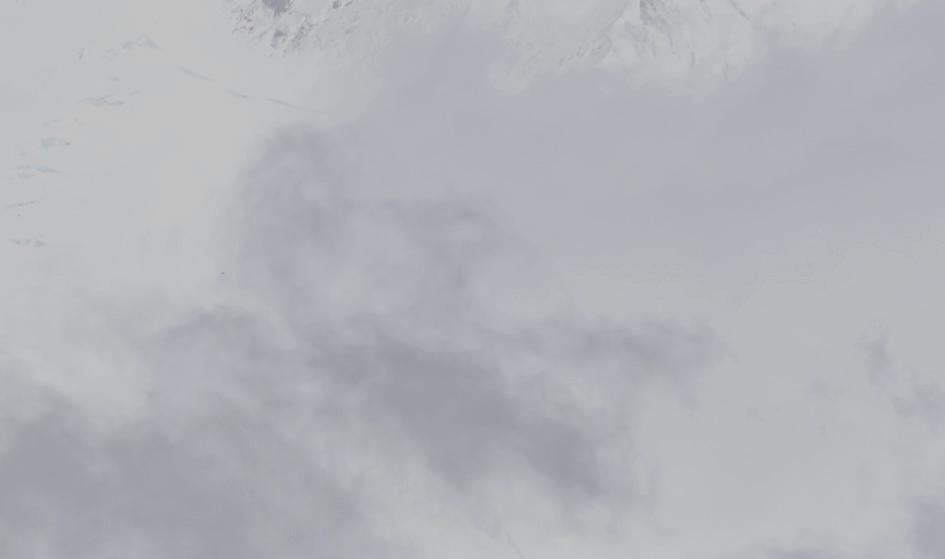









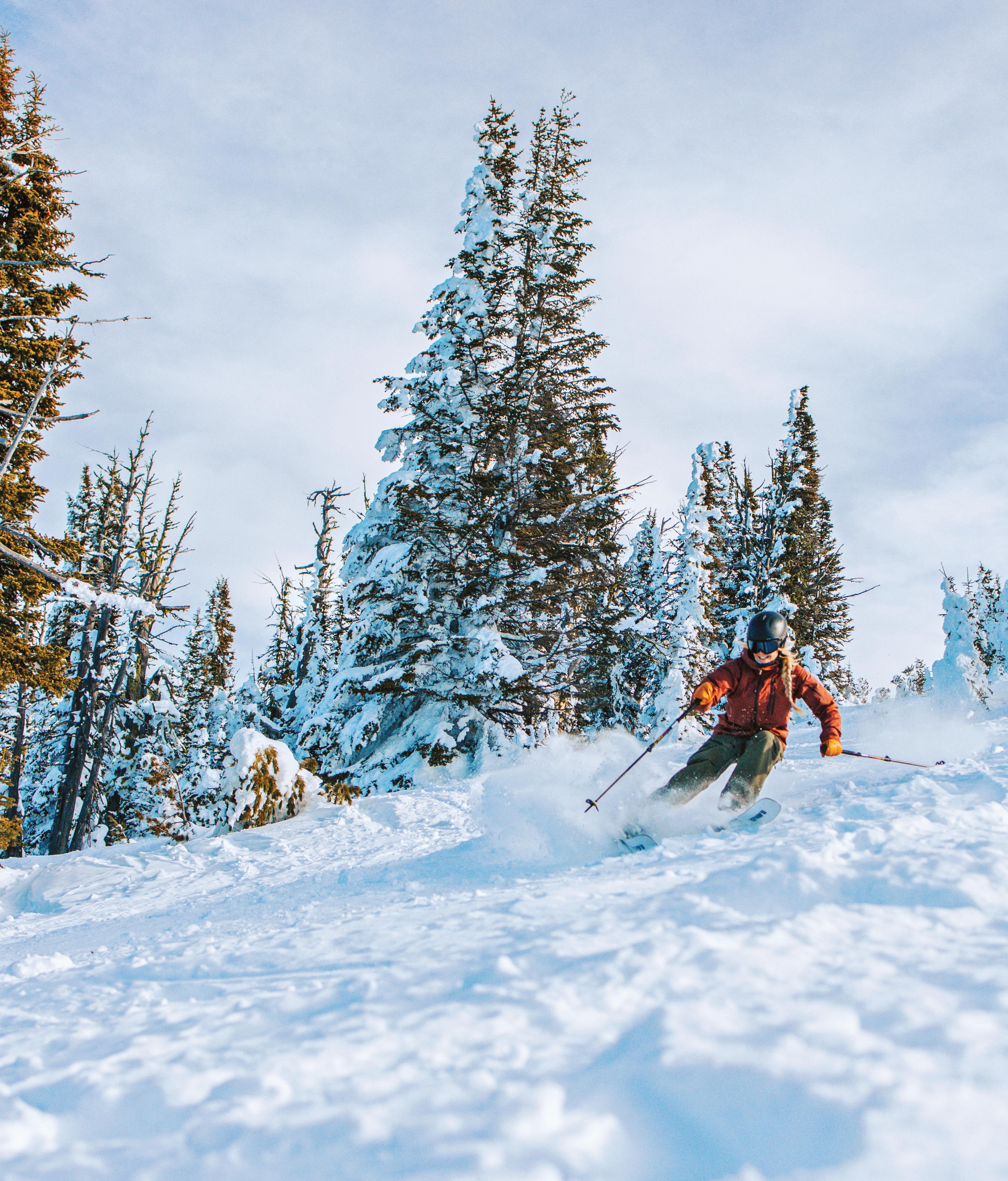


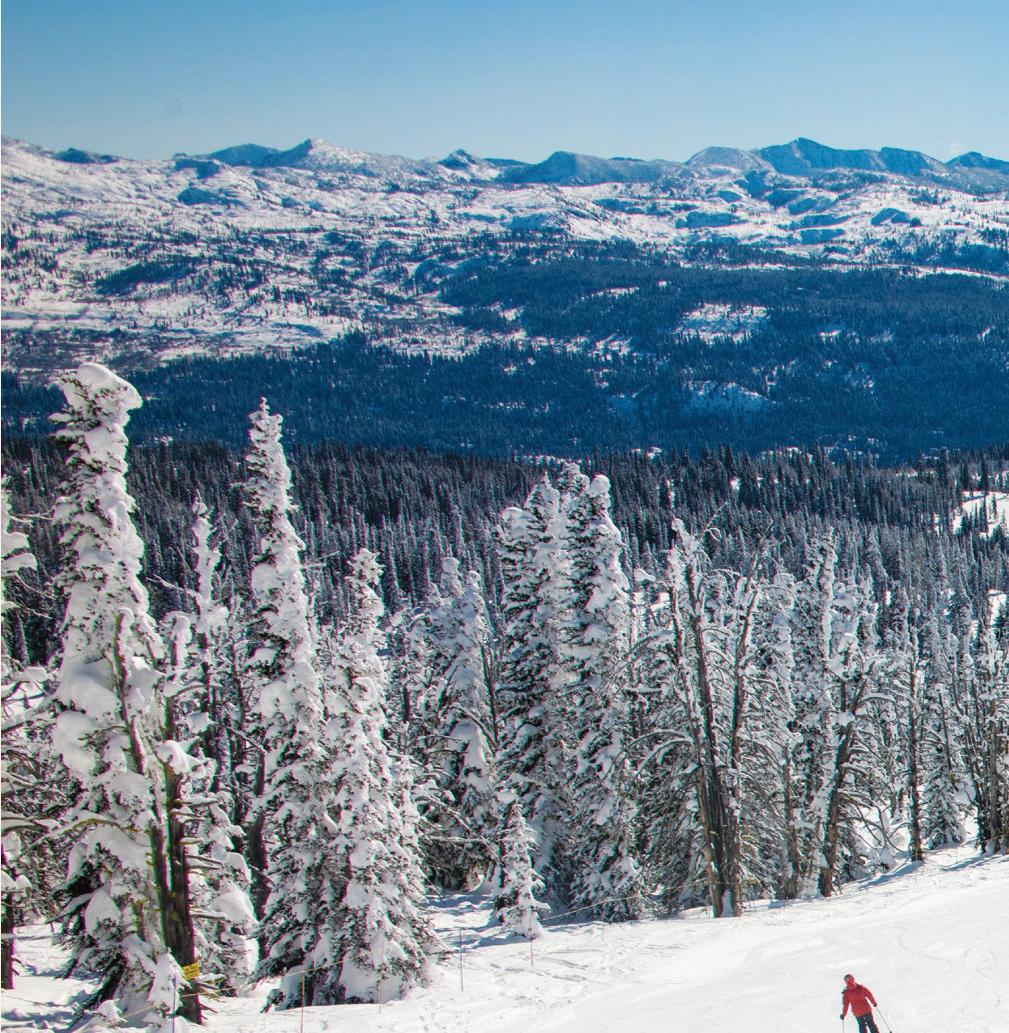




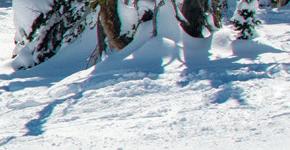





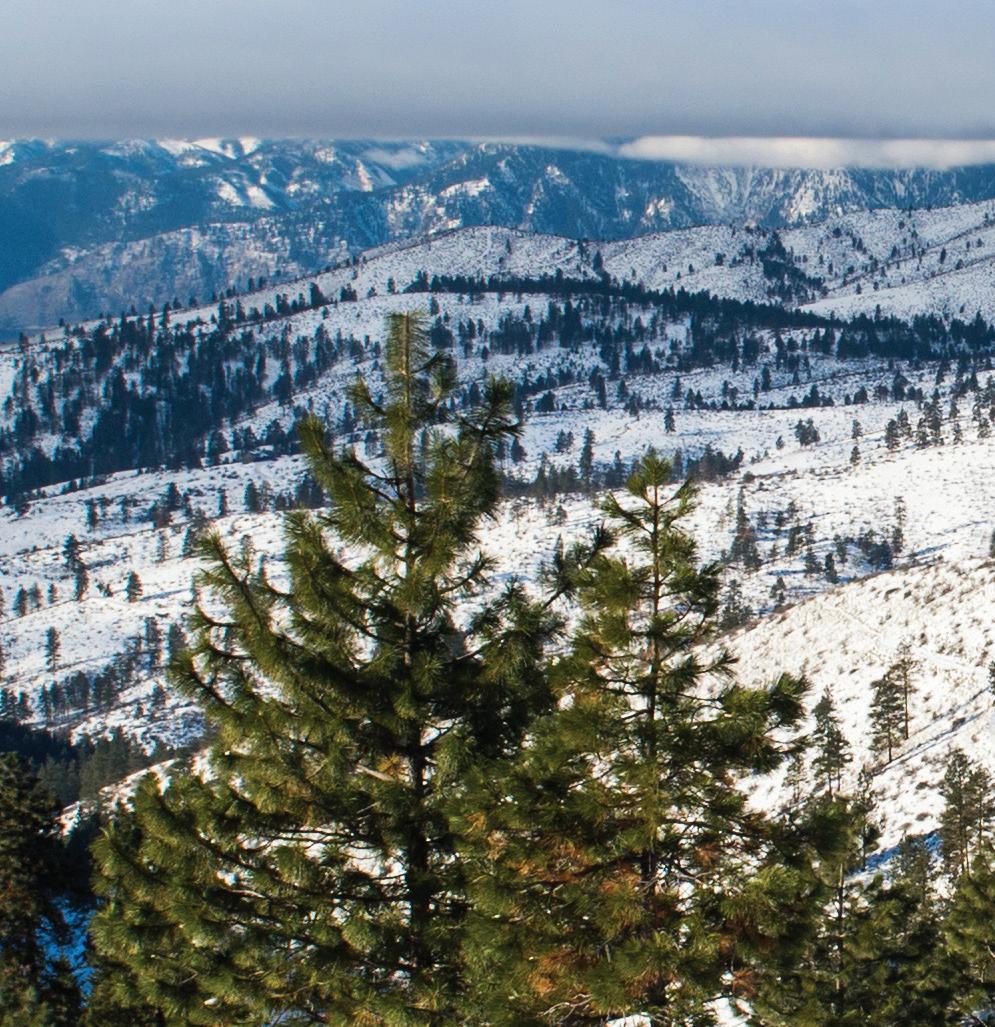
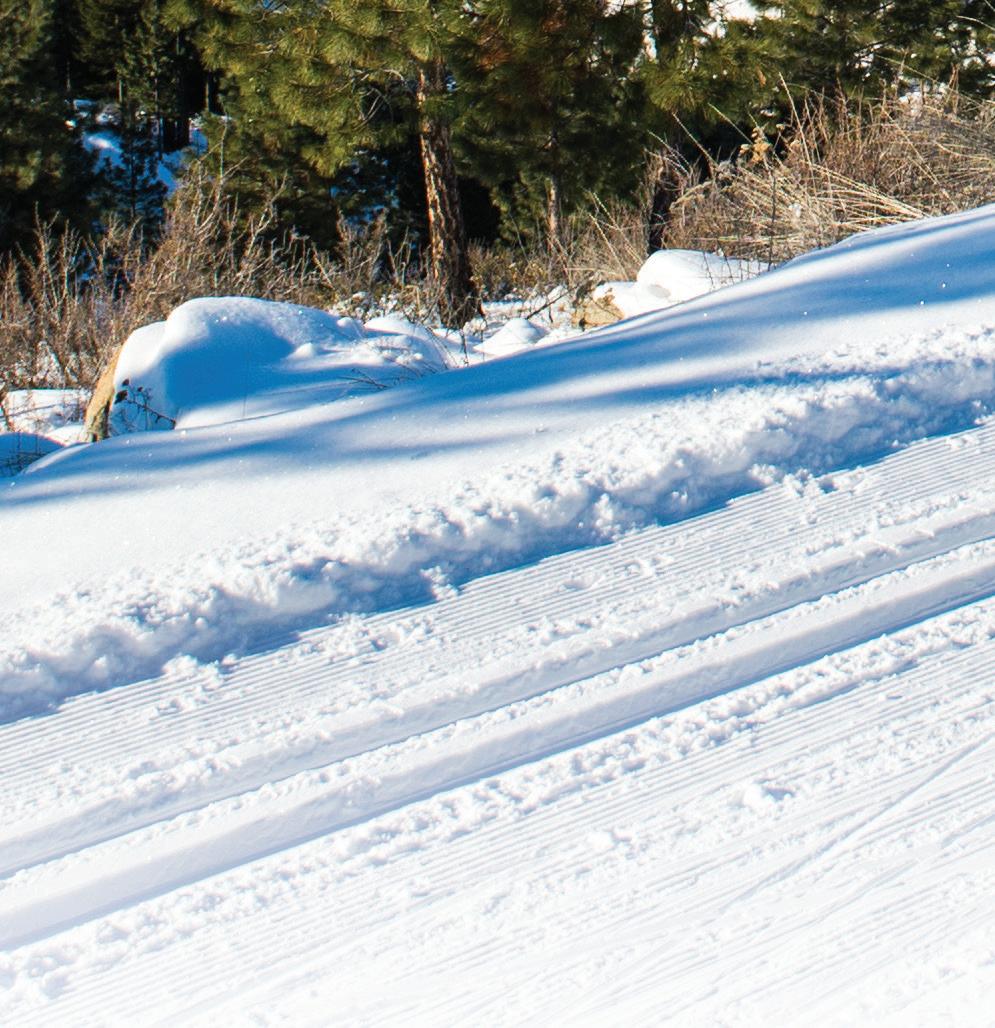
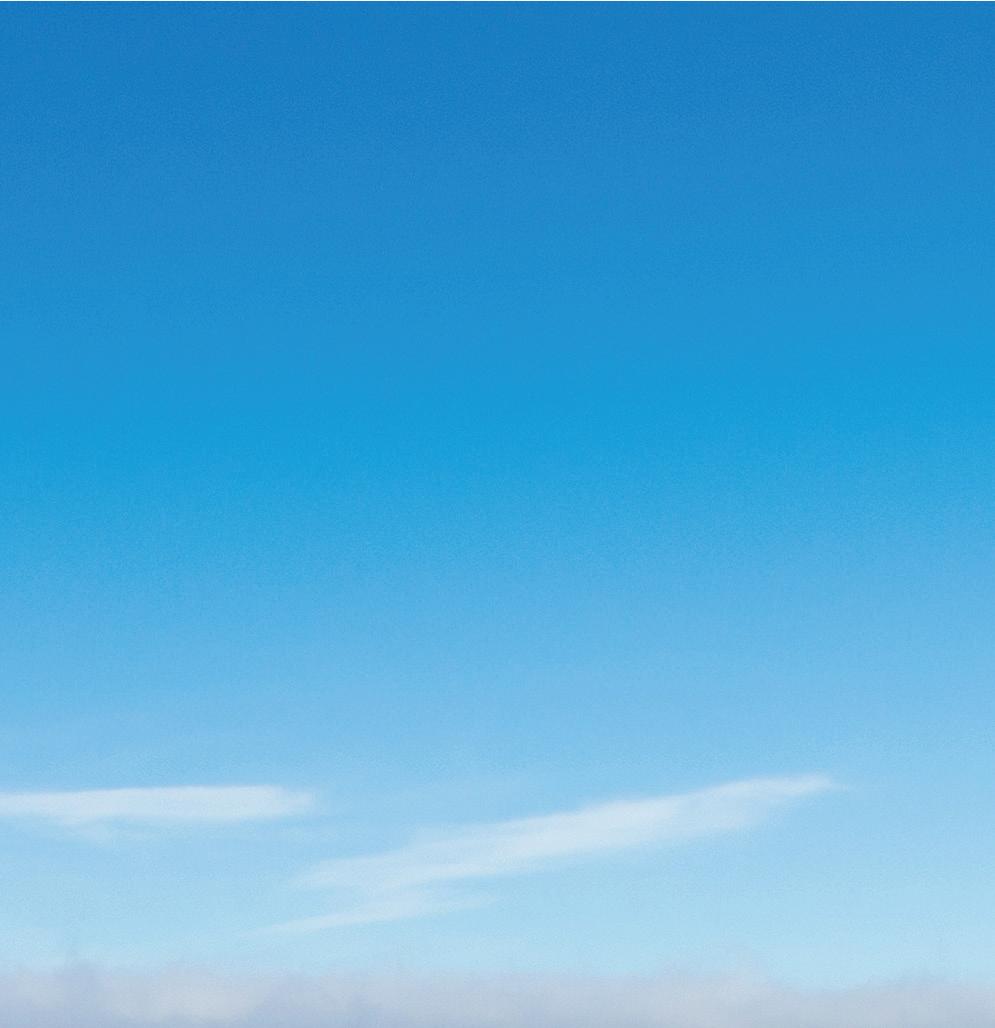
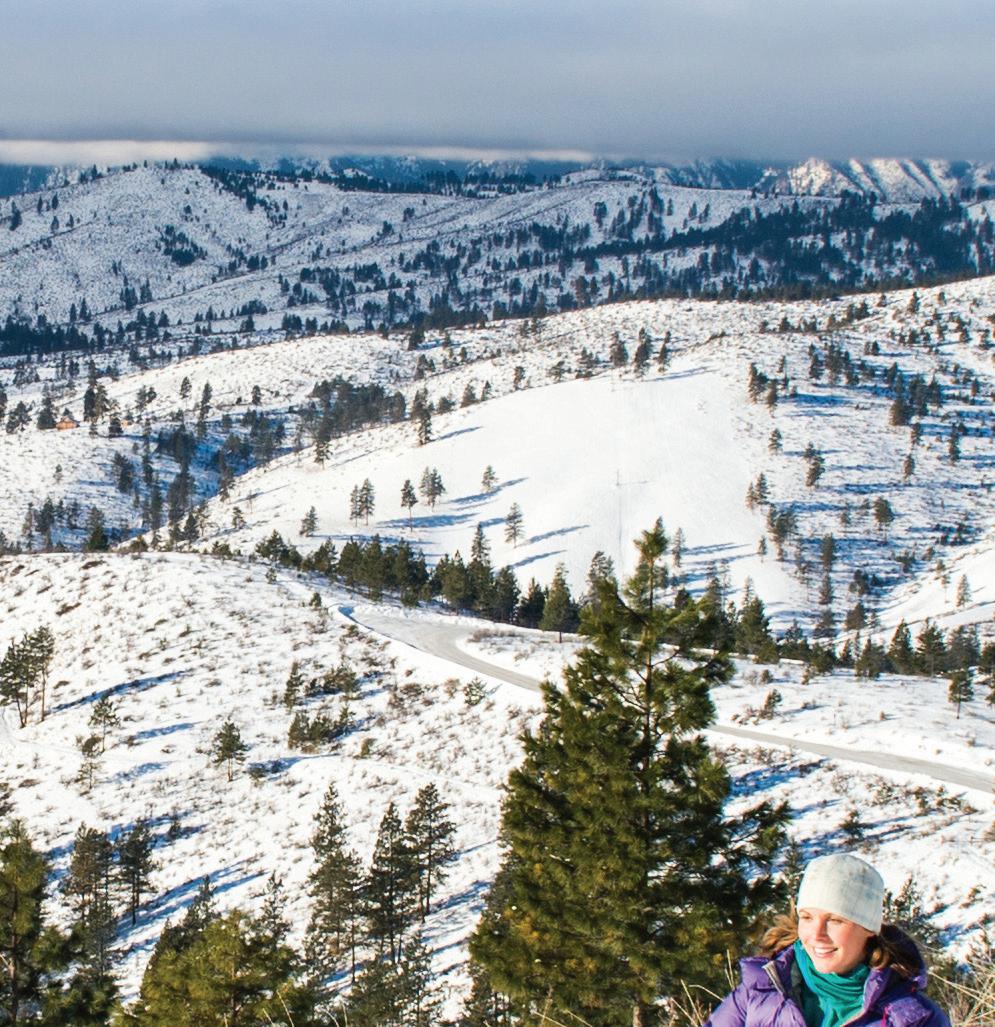




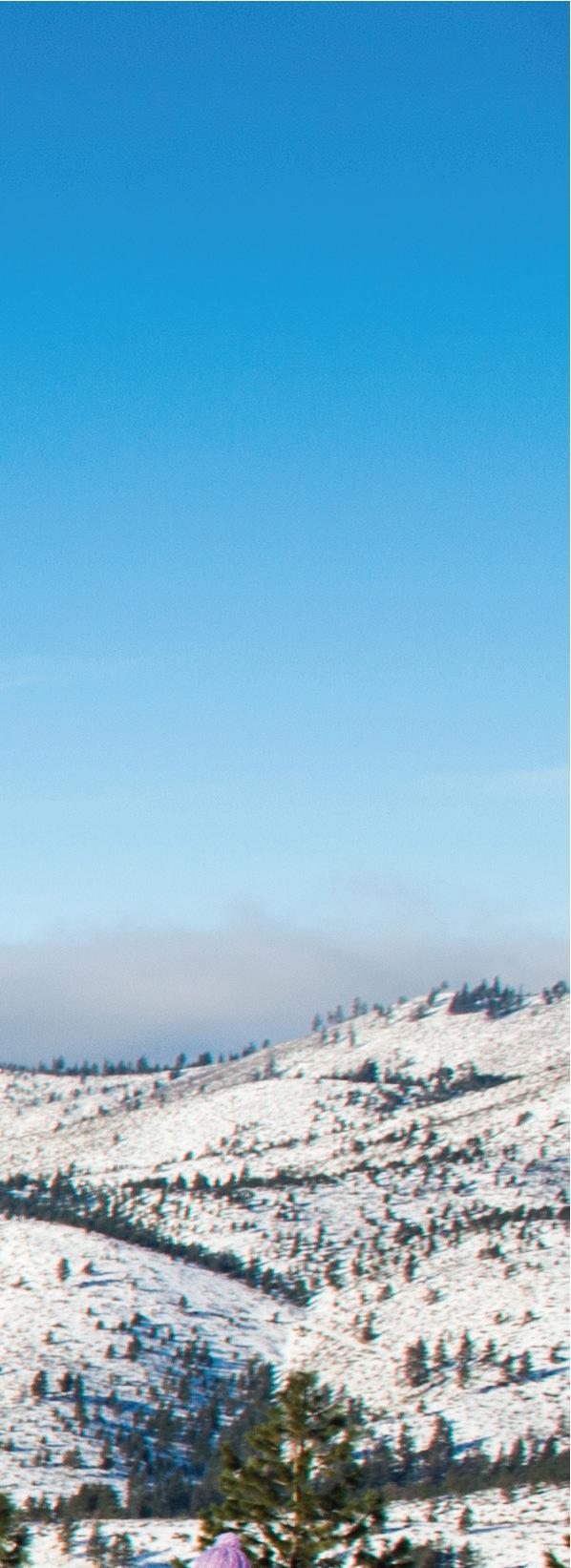

THE FEW remaining scientists at the National Oceanic and Atmospheric Administration give even odds to the first half of winter being a big one. That is, NOAA predicts a 50 percent chance that the Pacific Northwest will experience a La Niña early season, characterized by above average snowfall.
No matter what the conditions, families this year will be bargain hunting and looking for more ways to make family skiing a ordable. At the time of publication, with the exception of season passes, many ski areas did not have their season prices available for li passes, but you can o en find deals on non-holiday weekends and midweek days, too.
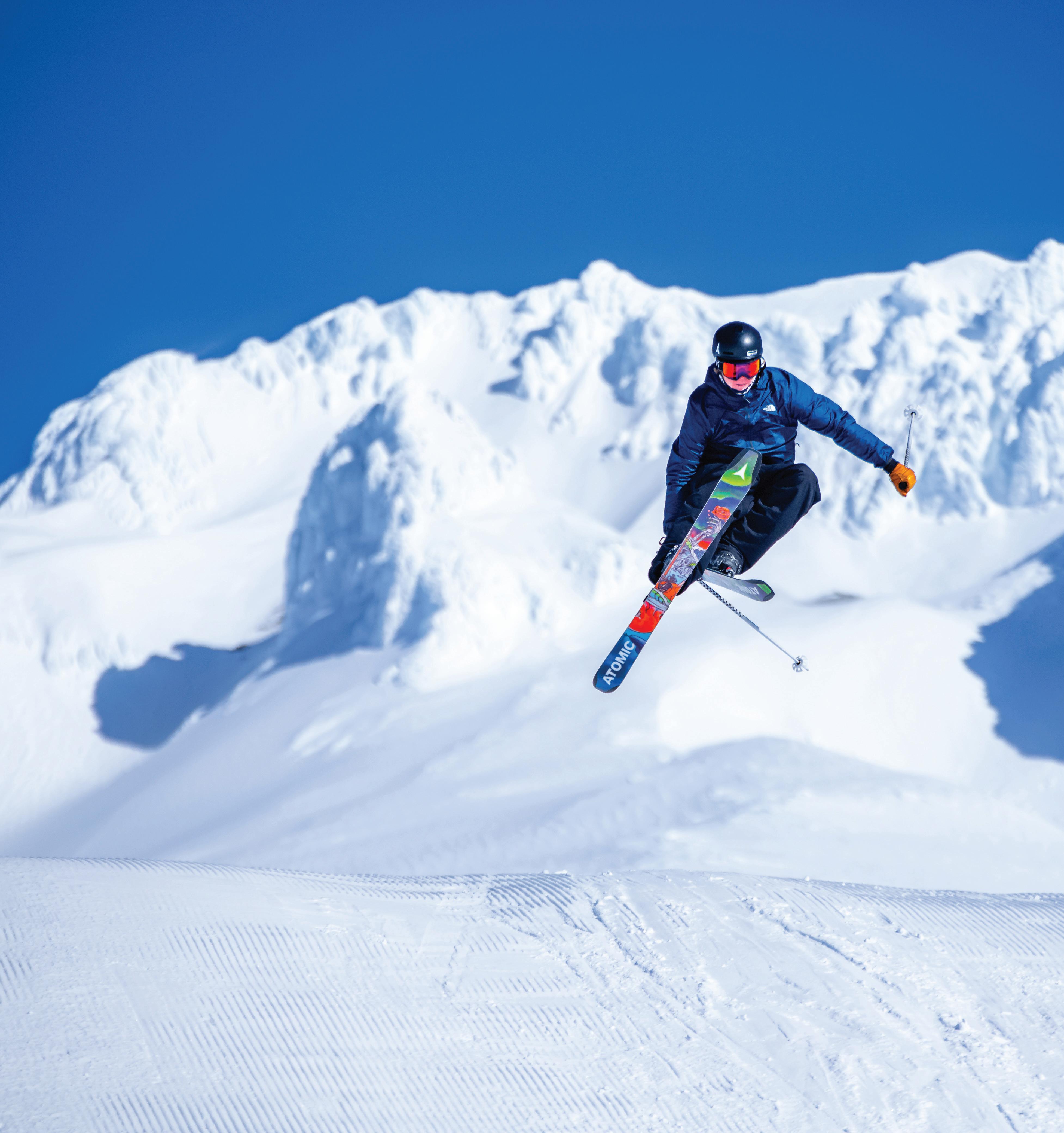


If you want to be on snow and have the most options at your disposal, you’re in Mt Hood Territory. Well tracked in both alpine and Nordic trails, this mecca for snow play is perfect for families. There’s Mt. Hood Skibowl, with ten lifts serving 1,500 feet of vertical and known for its night skiing. And Mt. Hood Meadows with eleven lifts and 2,777 vertical drop. Finally, Timberline with eight lifts and 4,540 vertical drop. Timberline Lodge, built in 1937 as part of FDR’s New Deal, reminds us of what we could accomplish as a country and what skiing was like three generations ago and how that all still resonates today.
Smart shoppers can find deals on lodging if you look a little farther afield. Instead of staying right on the mountain, try a little
farther down the mountain at Kah-Nee-Ta Hot Springs Resort or Mt. Hood Kiwanis Camp.
Mt. Hood Territory ski areas also have a mix of snowshoe and Nordic ski trails, which are budget-friendly ways of getting outdoors for family recreation in the snow.
On the eastern side of Mount Hood, Hood River also offers a great paradigm for winter play. On the scenic and windy Columbia Gorge, Hood River is known for watersports with sails. In the winter, though, Hood River is a gourmet bedroom community for winter sports. With Cooper Spur Ski Area just 32 miles up Highway 35 and Teacup Nordic just 10 miles beyond that, you’ll find two great venues to strap on skis without getting tied down in debt.
If you want to be on snow and have the most options at your disposal, you’re in Mt Hood Territory. Well tracked in both alpine and Nordic trails, this mecca for snow play is perfect for families.
Exploring Mt. Hood in winter doesn’t have to mean driving icy mountain roads or battling for parking at popular locations. Thanks to the Mt. Hood Express, a public transit service that runs daily along Highway 26, you can experience the mountain’s best adventures without the stress of bringing a car.
The Mt. Hood Express connects the city of Sandy with Government Camp and Timberline Lodge, offering convenient stops at ski areas, trailheads and local businesses. Riders can bring their skis, snowboards and gear on board, making it easy to plan a full day of recreation on Oregon’s most iconic peak.
Skiers and snowboarders can take advantage of Mt. Hood Skibowl, home to the most black diamond runs in the state and 34 fully lit runs — the largest night ski area in the U.S. Timberline Lodge & Ski Area offers another can’t-miss experience with the Pacific Northwest’s largest vertical terrain and the only ski-in, ski-out lodging in Oregon.
If you’re looking to slow down the pace, Mt. Hood Outfitters leads guided snowshoeing, Nordic skiing and snowmobiling tours through the snow-covered forest. After your adventure, stroll through Government Camp, where you’ll find hearty meals and warm drinks at local favorites like The Taco Shoppe, Mt. Hood Brewing Company or the Huckleberry Inn, famous for its huckleberry pancakes. Stay the night at one of the area’s hotels or vacation rentals, many offering cozy fireplaces and easy access to the snow.
By leaving your car behind, you’ll reduce your impact and enjoy Mt. Hood sustainably. So grab your gear, lace up your boots and let the Mt. Hood Express take you on a winter adventure — stress-free, car-free and full of mountain magic.
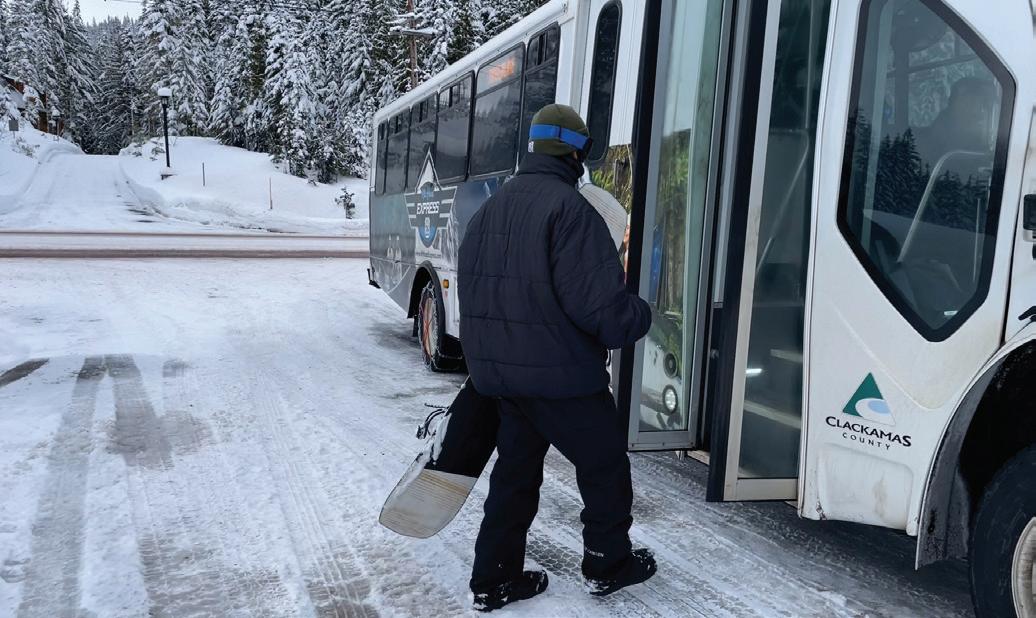

SCAN TO PLAN YOUR TRIP TODAY!


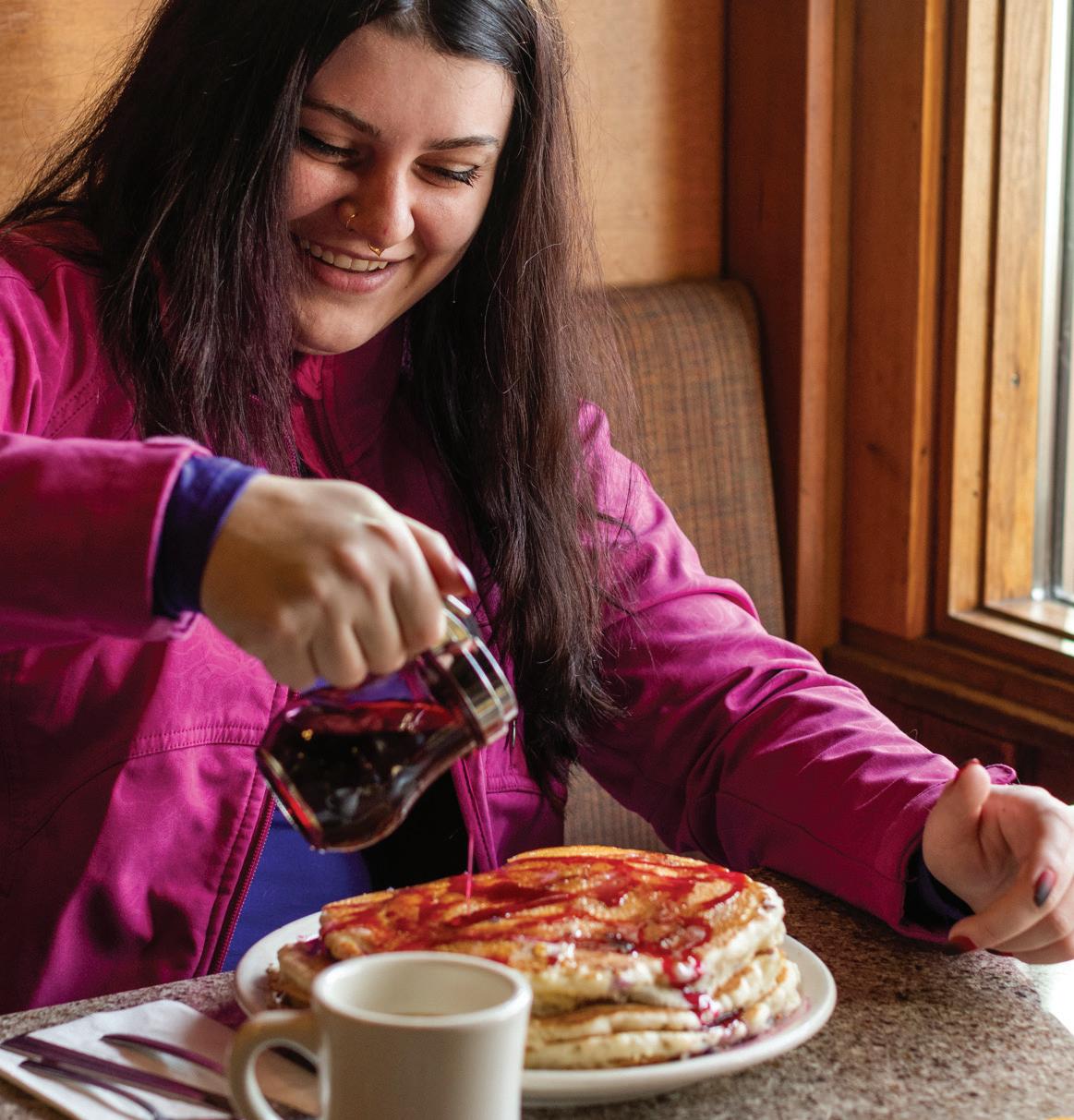
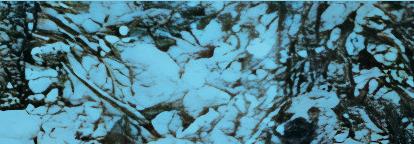






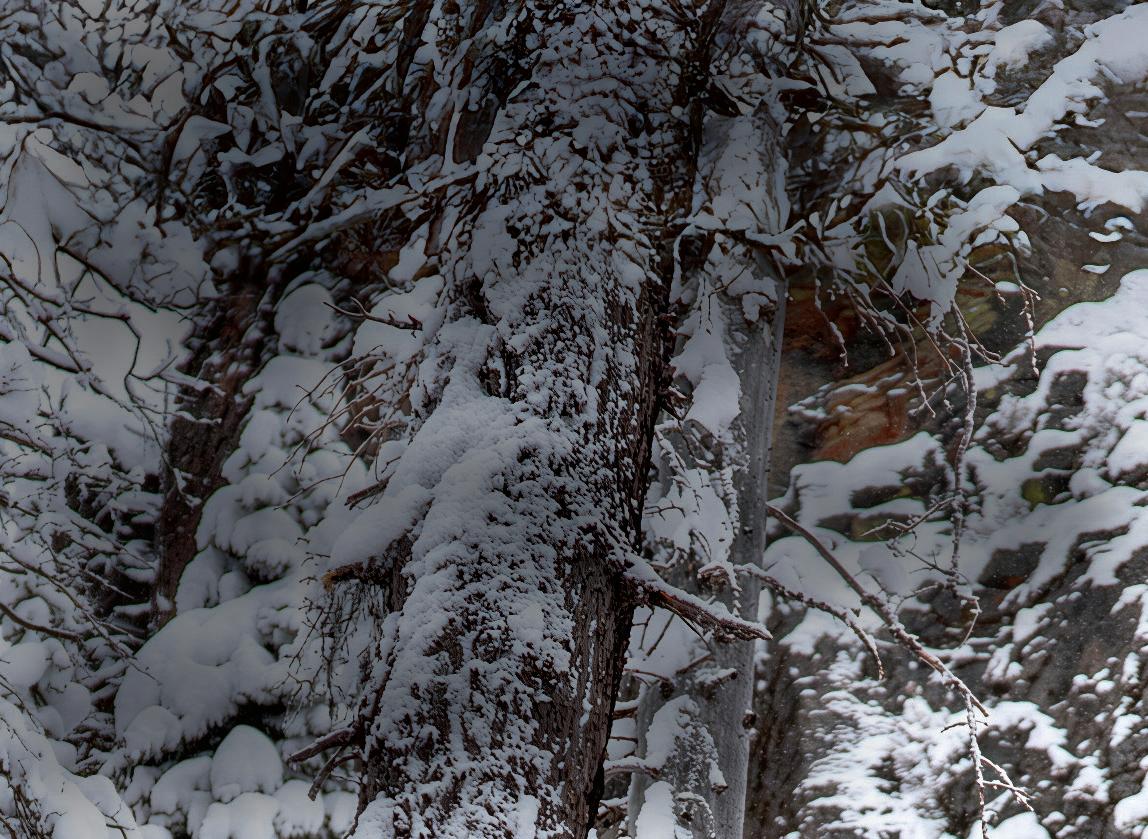






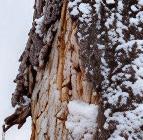

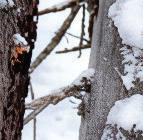


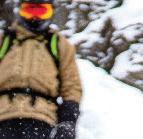

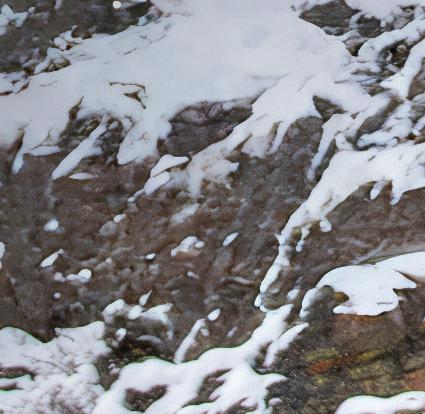










Anthony Lakes claims to have Oregon’s best powder. Just 20 miles west of North Powder, this ski area is at least powder-adjacent and feels like the best little rodeo in the West. Though it’s a hike out there, it’s well worth it. The prices are very reasonable, and the skiing is small-scale world class. A vertical drop of 900 feet, Anthony Lakes’
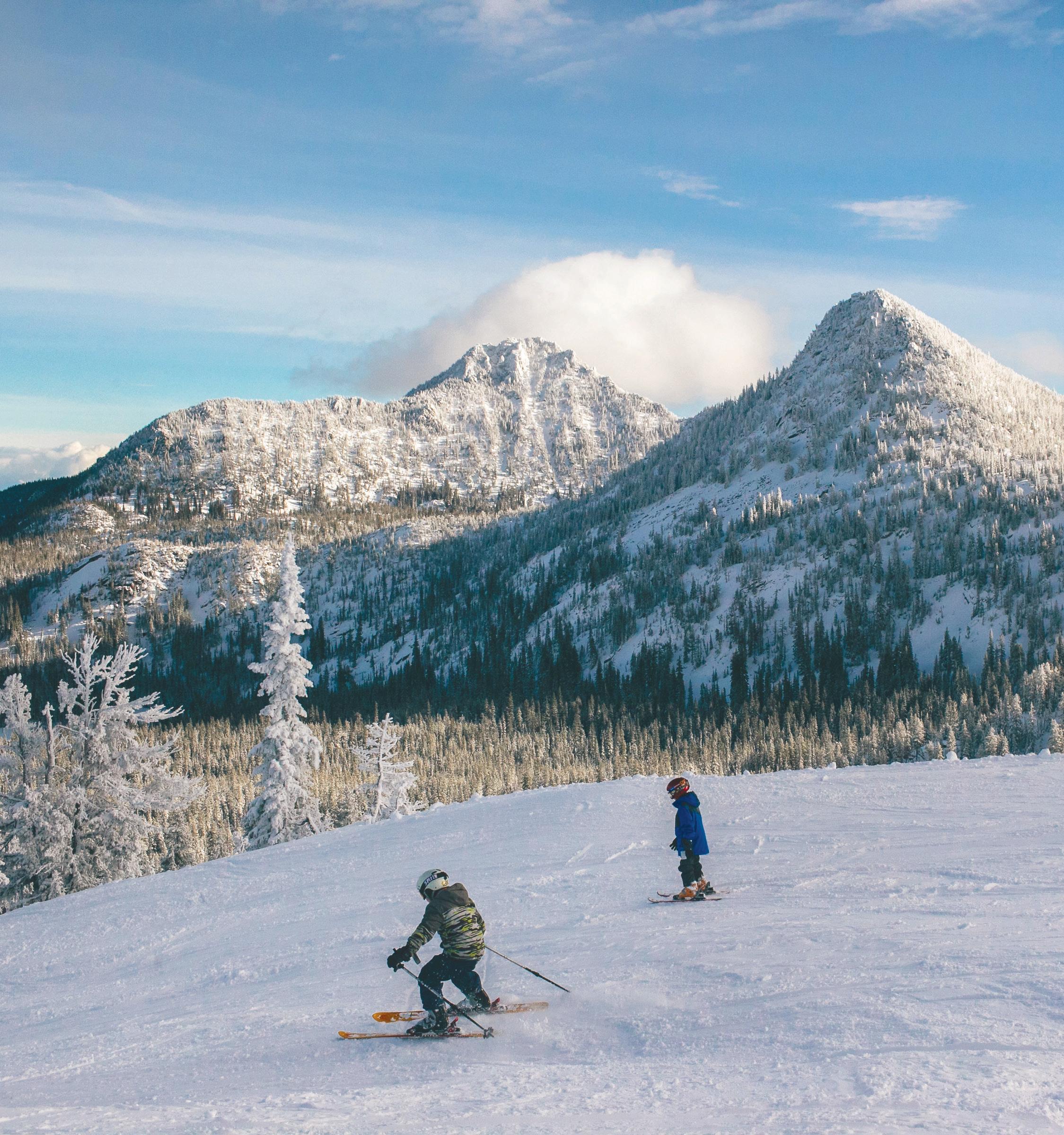
base sits at a snowy 7,100 feet. Anthony Lakes Nordic Center features 30 kilometers of nicely groomed trails in the shadow of the Elkhorn Range of the Blue Mountains. No mention of Anthony Lakes would be complete without its Cat skiing and the Starbottle Saloon where music and tall tales of the day mix and mingle into the night.
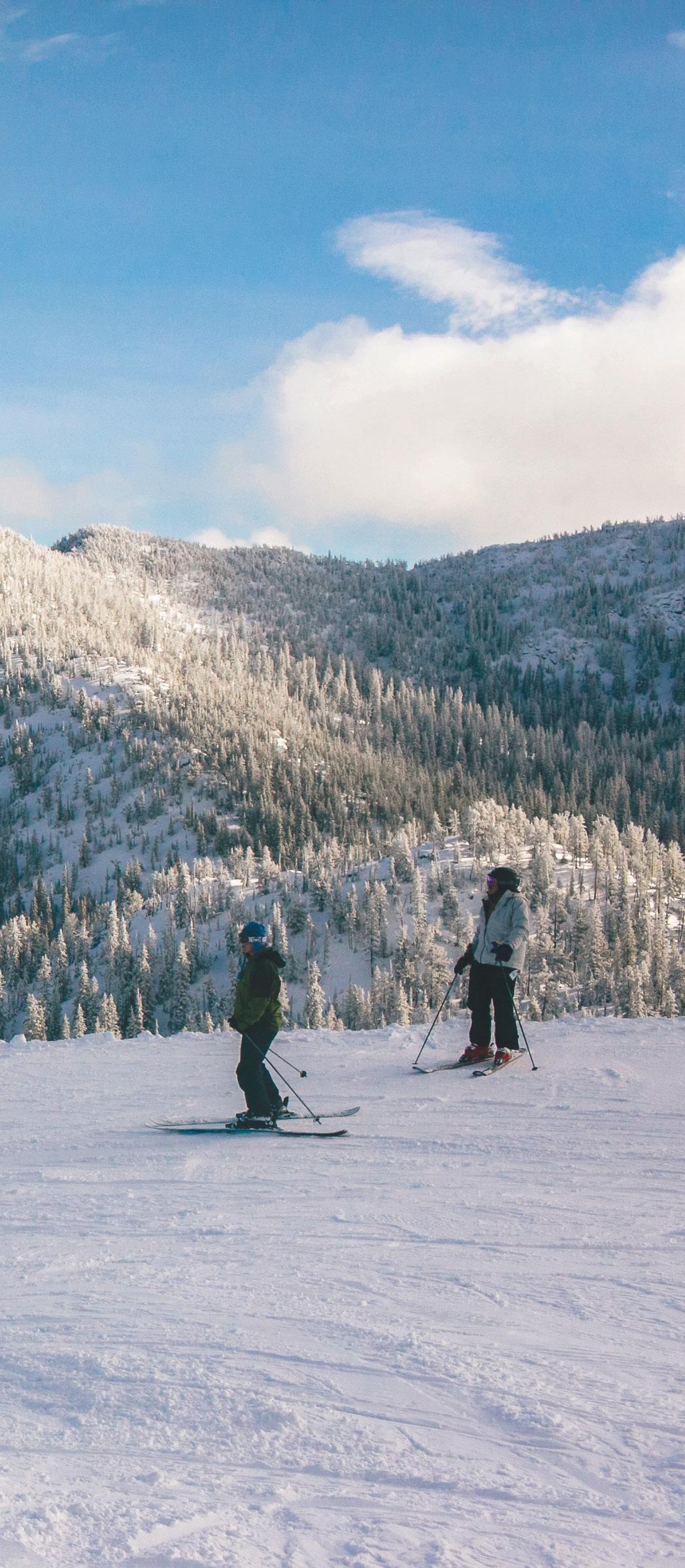
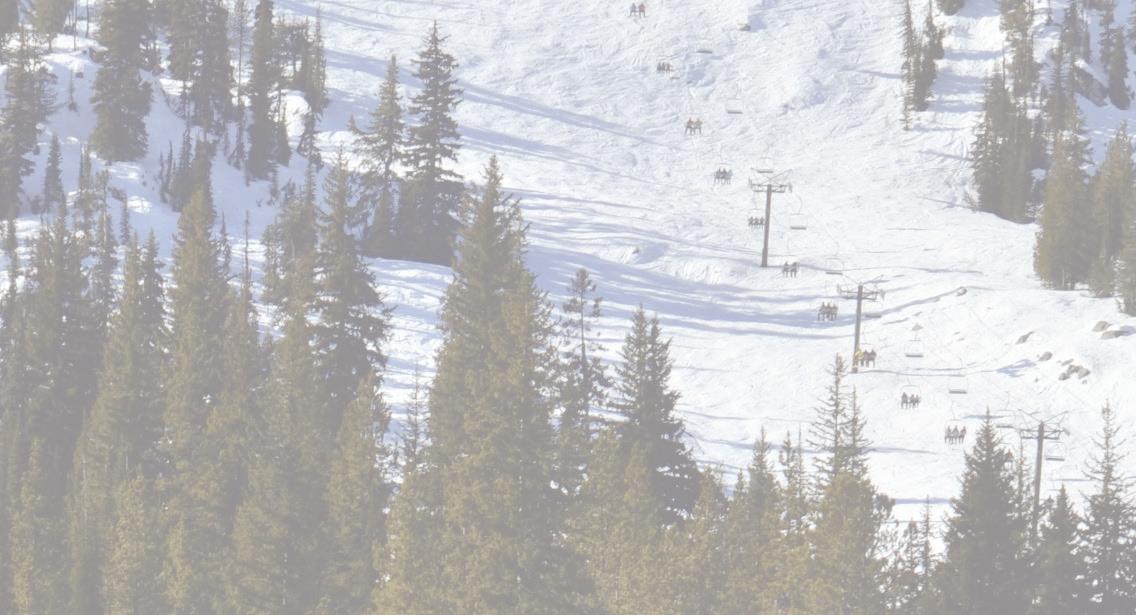

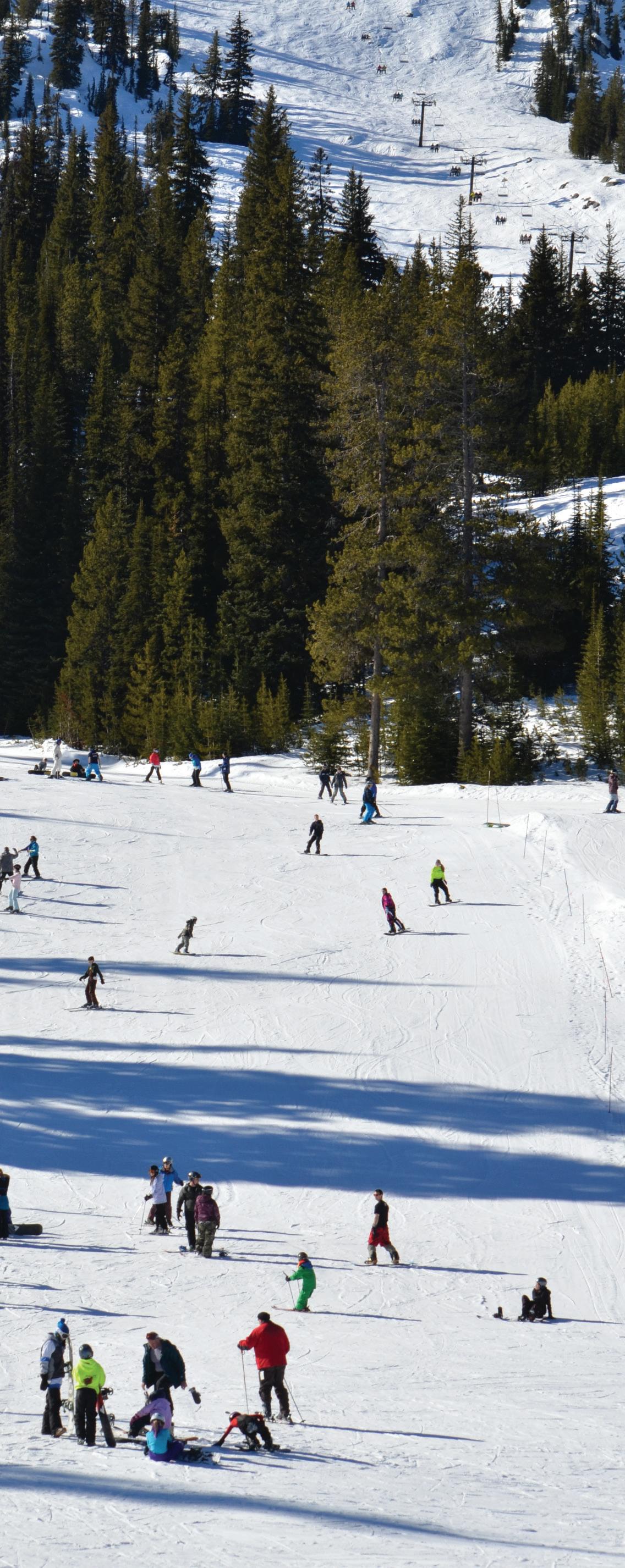

Head north to Washington, and you’ll find value on the east side of the state. Lake Chelan, known for its comely landscape, wineries and fruit, has a second season that is more about squeezing in runs than grapes. Echo Ridge has miles of groomed Nordic trails as well as a family-friendly old-school ski area for alpine and snowboarding as well as tubing. Your nostalgiameter should be going o . A little farther north and you reach what Nordic skiing always
A
wants to be—more than 120 miles of groomed cross-country trails. It’s no surprise that some of our nation’s top skiers call the Methow Valley home. There may be no other community in the States that comes together to create such an extraordinary experience like this. Ski from town to town and out to the Mazama Store for baked goods, deli sandwiches and soups. Though just inside our national borders, this area feels more like an old European ski town.

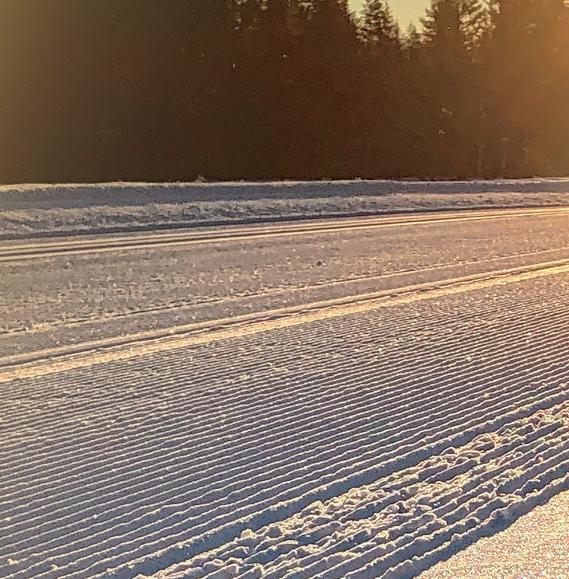








Nothing compares to the
when it comes to



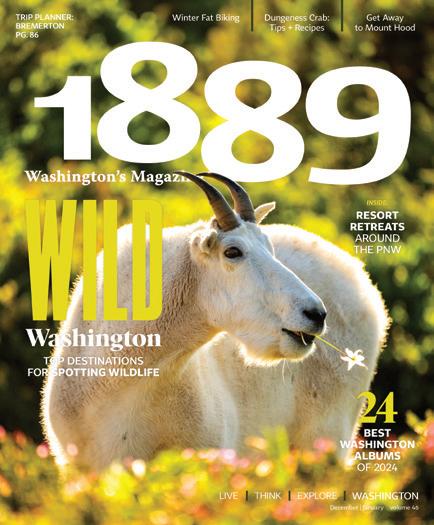
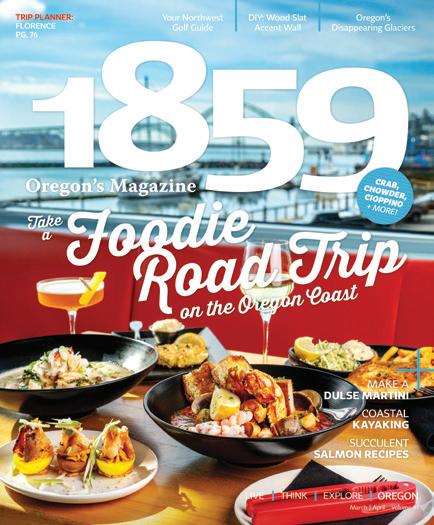

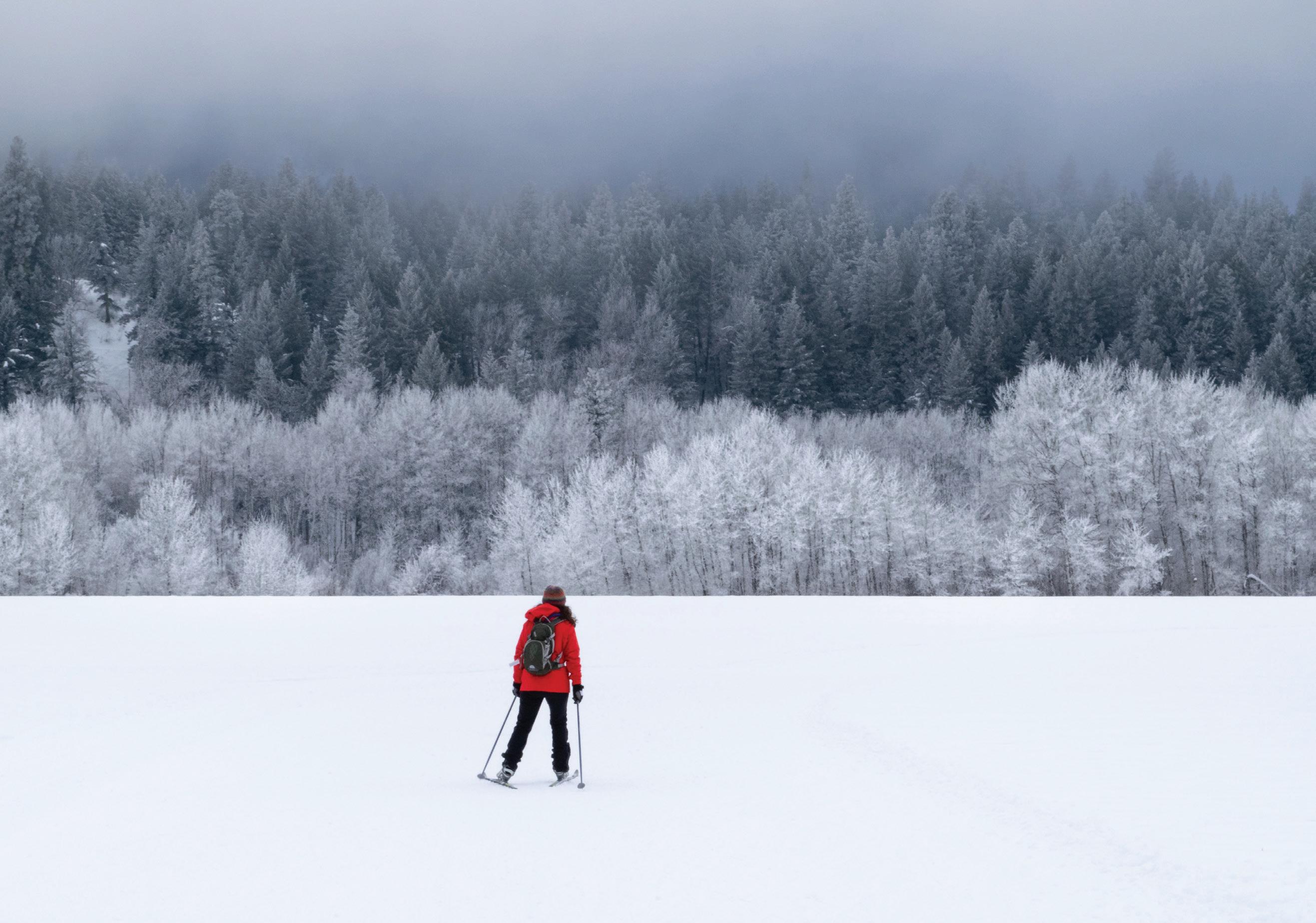

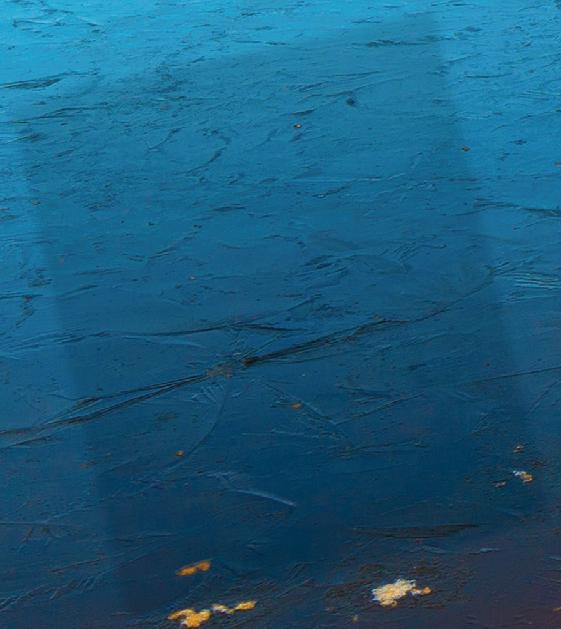




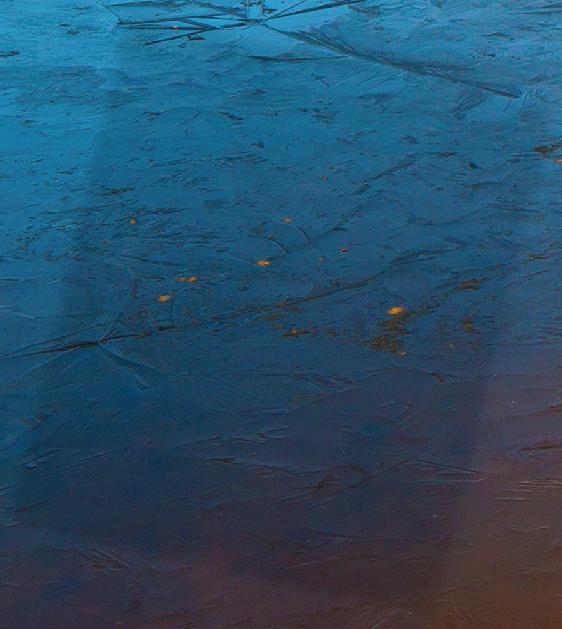

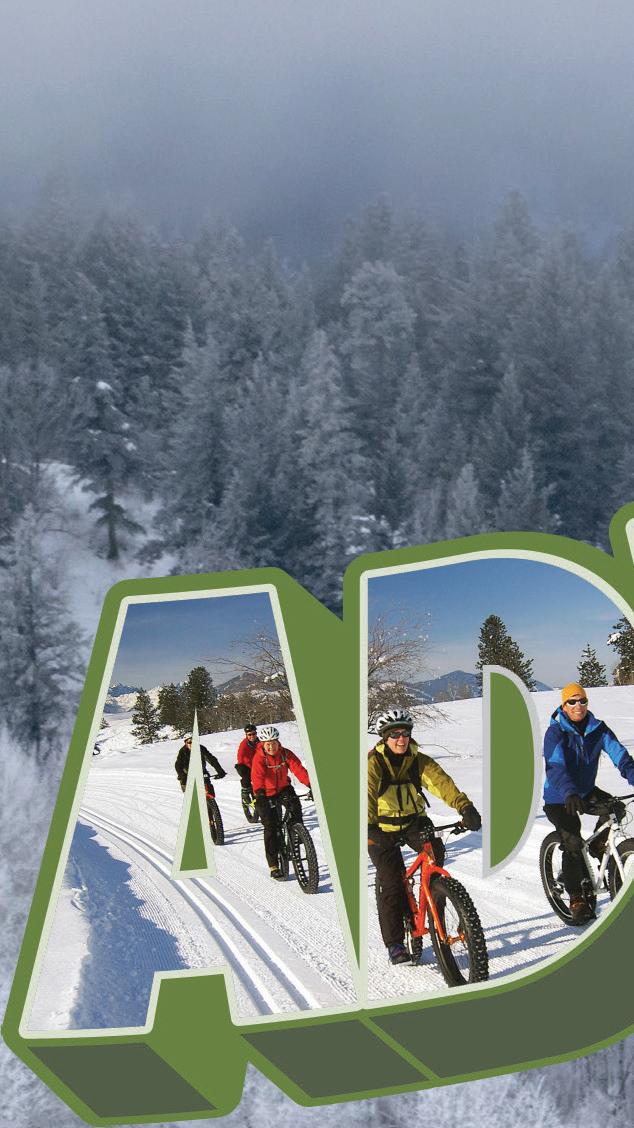
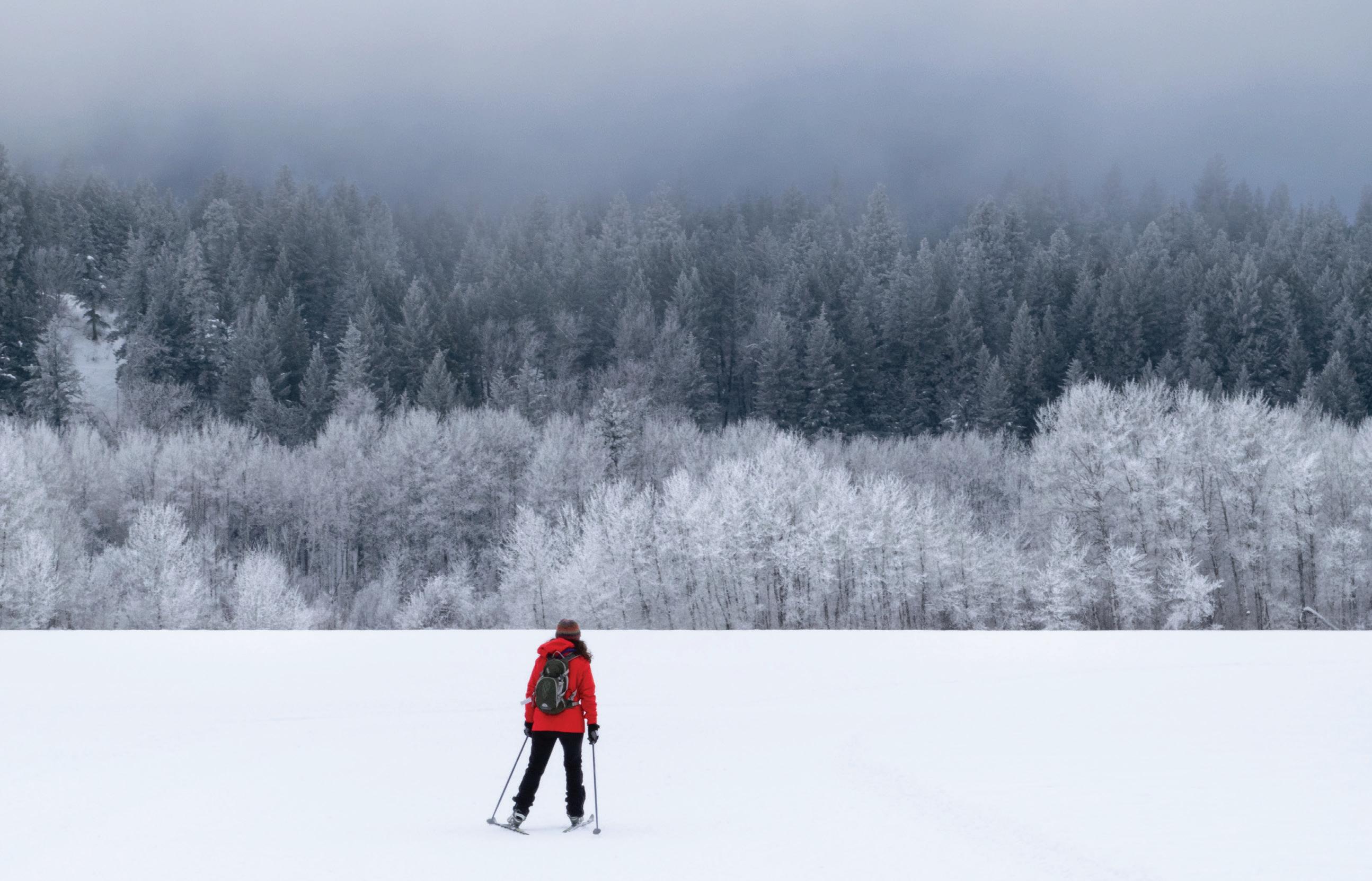

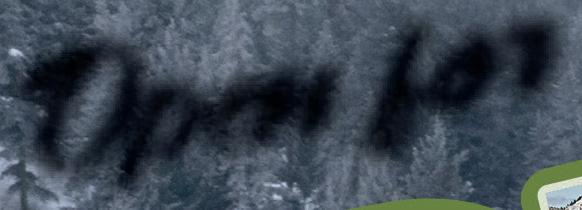
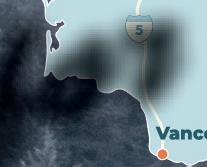
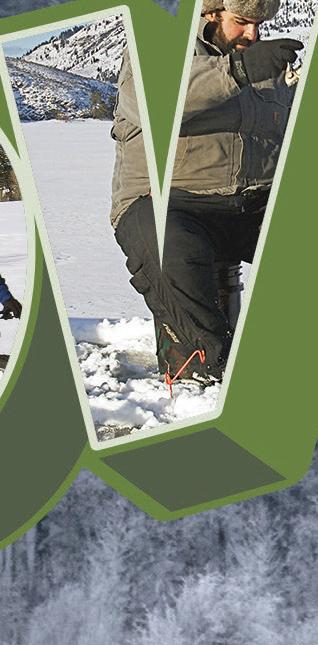




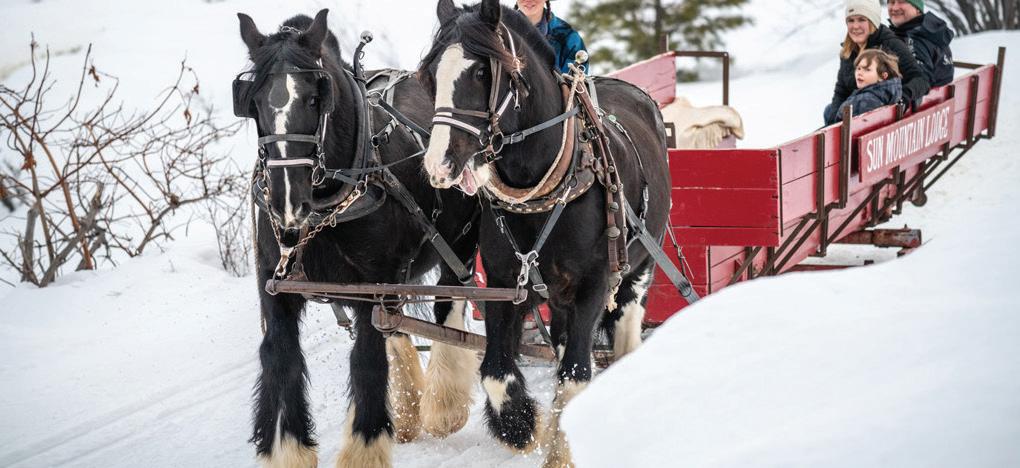



Head southeast and into McCall, and quickly you’re into deep snow. Come La Niña or not, the three ski areas near McCall will not su er.


Head southeast and into McCall, and quickly you’re into deep snow. Come La Niña or not, the three ski areas near McCall will not su er. In its backyard— Brundage Mountain Resort, Tamarack Resort and night skiing and Little Ski Hill—McCall has a lot going on when the snow flies. Brundage has six li s and

1,921 vertical feet. Tamarack also has six li s but a 2,800-foot vertical drop. Little Ski Hill is a budget-friendly place for kids just getting started—with ski and snowboard lessons in a relaxed setting. Hot chocolate in its historic lodge fills your little skiers with the courage they need to get right back out there.




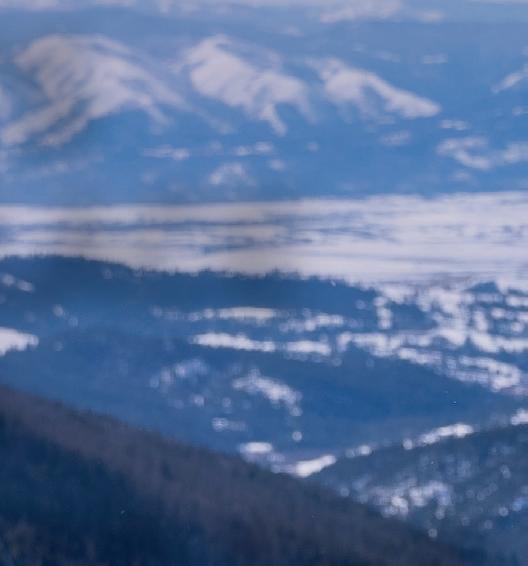



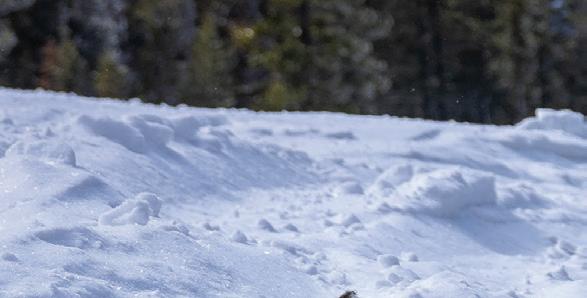



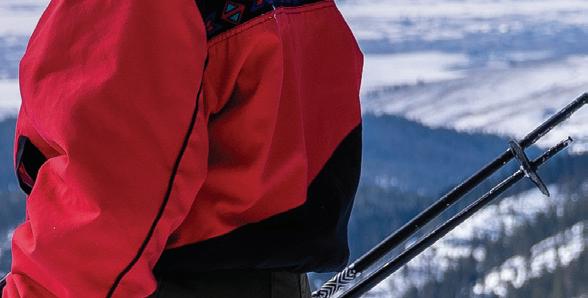



YOU WON’T FIND A MORE INSPIRING MOUNTAIN TOWN THAN MISSOULA, WHERE THREE RIVERS AND SEVEN WILDERNESS AREAS CONVERGE IN THE CULTURAL HUB OF MONTANA.
The allure is immeasurable, with outdoor access at every corner and a culinary scene that rivals big cities. This vibrant community is bliss for fresh air enthusiasts, creative souls, and anyone who enjoys a good beer alongside a great meal. Missoula doesn’t just feed the soul, it satisfies the senses. Book your stay and plan your getaway to Missoula. BOOK HERE

Travel Safely. Explore Responsibly. Call 1.800.526.3465 or visit destinationmissoula.org/1889 for more information.


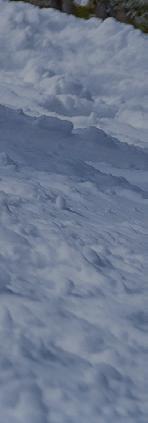
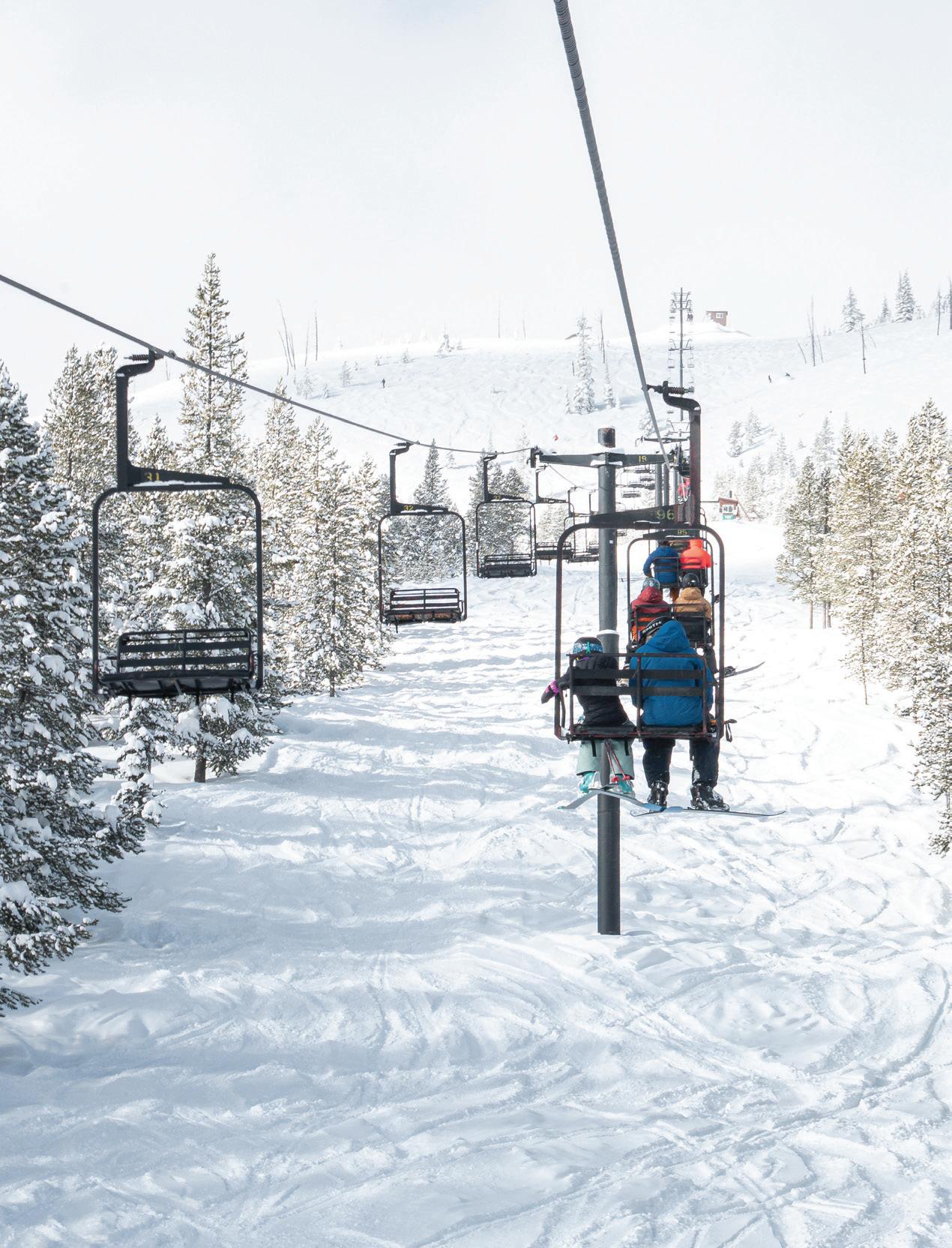
If you’re truly serious about winter, you go to Missoula in the Northern Rockies. With Missoula as your hub, you can indulge in big mountain backcountry skiing, fantastic lift serve and miles of Nordic trails. With Discovery Ski Area 90 miles southeast of town, Blacktail Mountain 120 miles north and Lost Trail Powder Mountain 94 miles due south, Missoula is the base camp for adventure without the on-mountain inflation. Mix it up with closer-in
Nordic trails. Pattee Canyon Recreation Area and Rattlesnake National Recreation Area offer two different cross-country experiences. The Missoula Nordic Ski Club maintains 6 miles of groomed trails at the former. The latter is a wilderness touring area with amazing scenery. An hour north of Missoula, you can jump on 18 km of the Seeley Creek Nordic Trails, classic and skate groomed trails maintained by Seeley Lake Nordic Ski Club.
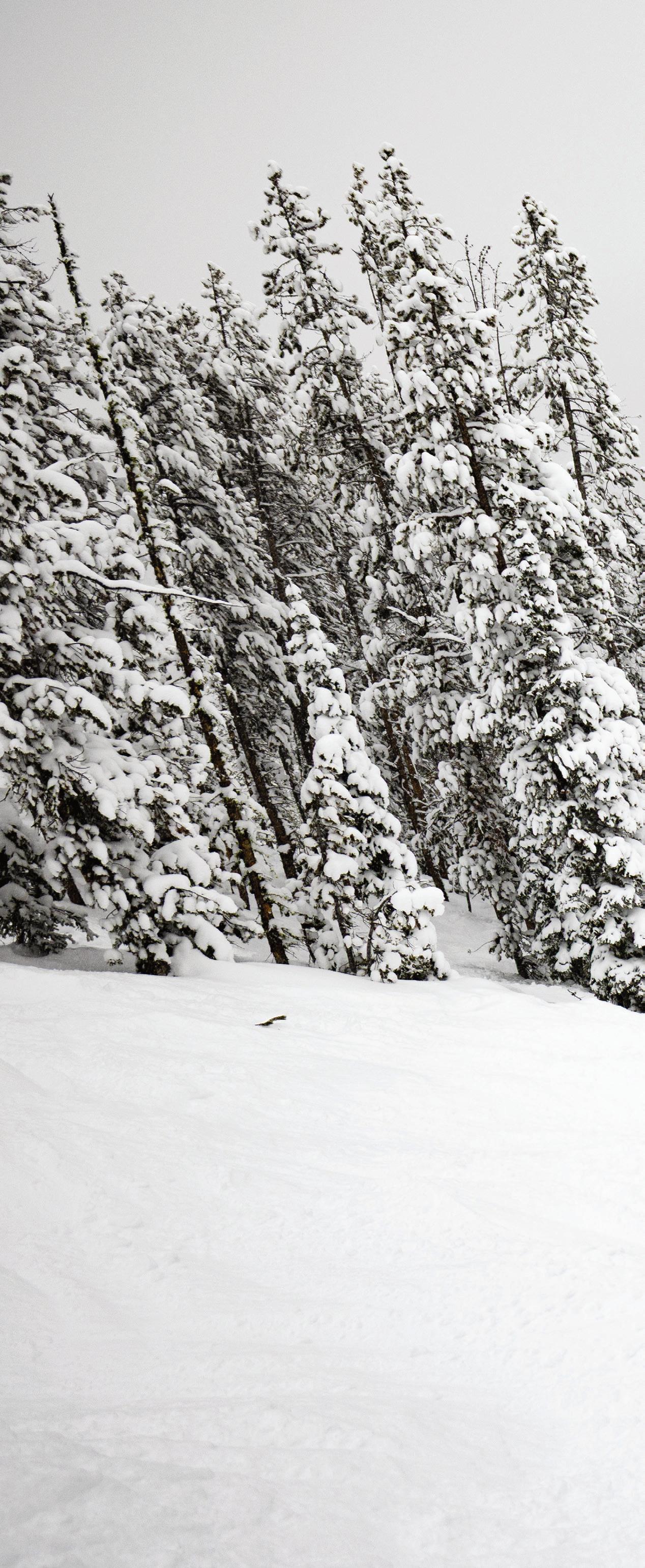

Discovery Ski Area, southeast of
offers a
of
from



It’s only 90 minutes north of the Washington border but represents a bundle of savings, especially if you visit before December 18 and avoid the holidays. Drive or fly into Kelowna, just northwest of the resort. Take advantage of the strength of the U.S. dollar this season, and put Big White Ski Resort on your calendar. With sixteen li s, a 2,550foot vertical drop and a base elevation at 5,000 feet, Big White lives up to its name. Take a day on skinny skis on more than 15 miles of Nordic trails. Li tickets

and lodging are reasonably priced, making this our Canadian recommendation of the season.


The village at Big White also makes it easy to eat well without breaking your budget. From upscale dining to slice pizza, as well as markets to buy and make your own culinary experiences, Big White has options. Horsedrawn sleighs will take you out into forested trails for an evening outing or, book ahead, and they can take you to a cabin where a gourmet meal is prepared for you and your friends.


